
Home » Destinations » Europe » Spain » 5-14 Day Spain Itinerary: A Guide For Planning Your Perfect Spain Trip

5-14 Day Spain Itinerary: A Guide For Planning Your Perfect Spain Trip
Links in this article may earn us a little money if you book/ order stuff. More here .

Plan Your Perfect Spain Itinerary with These Detailed Templates!
Want to explore Spain but confused about the perfect itinerary? You are not alone! It can be a true challenge to determine how many days to spend exploring.
From 5-day Spain itineraries to 7 or 10 days, to 14-day itineraries – there are certainly lots of different routes and options to choose from. The hard part? None of the routes are necessarily bad or wrong since there’s just so much to see and do all around Spain!
Spain is one of the most visited countries in the world. Because of its popularity, Spain knowledge is really flowing around the travel world these days!
It’s no secret that Lisa lived in Spain and took full advantage of her location (and her Spanish language knowledge)! So, she’s experienced quite a few of the places we recommend below for a great stop on your itinerary!
Spain Itinerary Overview
Best Time to Visit: Generally, summer is the hottest and winter is colder and wetter, but regional exceptions apply. March-June and September-end of October are best.
Getting Around: Trains ( RENFE ) and buses ( Alsa ) are reliable. A rental car in Spain is a must-have for smaller towns.
Popular Places to Visit: Barcelona , Madrid , and Valencia for larger cities, and Granada , Seville , and Córdoba are worth a look, too.
Where to Stay: Check for hotels in Spain here and Check for hostels in Spain here .
Table of Contents
Spain Itinerary – 5 Days
If you plan on travelling through Spain for only 5 days, it’d be best to fly into one of the bigger cities as they are usually well connected with other European cities.
Depending on your route, you can either take public transport if the travel times align with your plans or opt for a rental car if you would like more flexibility.
As with the other Spain itineraries in this blog post, our 5-day itineraries are pretty fast-paced. However, since it is pretty much impossible to go top to bottom and actually see parts of the country we decided to write two separate Spain itineraries for 5 days.
One covers the north and northeast of Spain while the other itinerary covers the south of the country . Choose the one that is more suitable for your interest and travel plans and feel free to modify the written itineraries however you see fit!
Spain Itinerary 5 Days – Northern Trip
For this classic 5-day trip across the northern parts of Spain, the total driving time is about 8 hours and covers around 750km .
If you rent a car, given this exact route, there are tolls on most of the highways so keep that in mind that it may be longer if you took non-tolled roads that may be more indirect. A bus would be able to breeze right along these highways, however.
navigate map
Spain Itinerary 5 Days – Northern Trip Overview
Day 1: Barcelona
- Day 2: Half-Day Barcelona/ Zaragoza
- Day 3: Logroño
- Day 4: Donostia-San Sebastián
Day 5: Bilbao
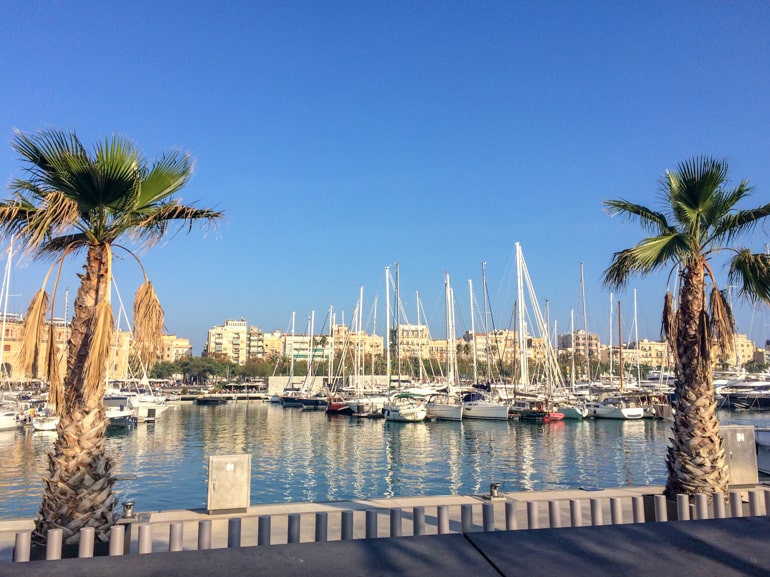
Barcelona is a good city to start a road trip since it is a popular tourist destination and thus has frequent flights to other European or International cities. Barcelona is the capital city of Catalonia which has its own unique culture and language next to Spanish.
Since it is such a popular city, the car rental industry is very well developed and it is easy to pick up a rental car from the airport or in the city.
Find your rental car in Barcelona here .
Alternatively, the bus station in Barcelona is great and easy to reach from the centre. There are numerous connections to Zaragoza which will be the next stop on your 5-day Spain itinerary.
Accommodation in Barcelona : As a super popular tourist destination, there are lots of hotels and apartments available in Barcelona.
Check here for Accommodations in Barcelona .
Specifically, for hotels check out Catalonia Born Hotel with a boutique style and rooftop pool in the city centre and close to the beach.
If you travel by car, Sallés Hotel Pere IV is a lovely and affordable hotel with spa in the heart of the city with a private parking garage onsite .
As for hostels, you can check out Barcelona hostels here. Specifically, we liked Kabul Hostel . This place even made our list of favourite hostels across Europe .
Overall, since Barcelona is so popular we strongly advise you to book in advance – especially during summer – as it can get very expensive otherwise.
Must-see Attractions in Barcelona:
- Sagrada Familia
- Casa Batlló
- The National Catalonian Arts Museum
We’ve written a whole guide on some of the incredible places to visit in Barcelona if you are interested in seeing more!
Day 2: Barcelona/Zaragoza
On the second day of your 5 days in Spain, you’ll spend the morning in Barcelona (you’ll get a cafe con leche y croissant in any cafe/bar for quite cheap if you get off the main tourist roads) and then drive from Barcelona to Zaragoza later in the day.
The drive from Barcelona to Zaragoza will take you approximately 3 hrs 10 min by car (includes a toll road), 3,5 hrs by bus and 1,5 hrs by train . If you end up taking the train, try to book in advance if you can as this will usually end up being cheaper.
Accommodation in Zaragoza: Since Zaragoza is a smaller city, there are fewer accommodations to choose from – but still lots of really great options.
Check here for hotels in Zaragoza .
Specifically, we love the look of Hotel Sauce . This bright and airy hotel is located right in the city centre and offers a homemade buffet breakfast, air conditioning, and private parking onsite for those travelling by car.
If you are looking for a rooftop pool, Hotel Palafox has you covered! Also located right in the heart of the city, the hotel has a cool decor, great city views, tasty breakfast, and also has parking and air conditioning!
There aren’t a ton of hostels but the ones that do exist are well-rated – so you can check here for hostels in Zaragoza .
Must-see Attractions in Zaragoza:
- Basílica del Pilar
- Aljafería Palace
- Cathedral San Salvador
Day 3: Logroño
On your third day, you will drive from Zaragoza to Logroño which is the capital of the autonomous region of La Rioja and known for its delicious wine.
If you get the chance visit one of the wineries and do a wine tasting – please plan ahead if you’re travelling by car since drinking and driving is a big no-no!
The drive will be a lot shorter than the day before. By car, it’ll take you approximately 1 hr 40 min and by bus the journey would be around 2 hrs if you get a direct bus.
Accommodation in Logroño : Similarly to Zaragoza, Logroño is a smaller city with many great accommodations in the heart of the city.
Check here for apartments and hotels in Logroño .
Specifically, Hotel Murrieta is a popular and very affordable option with a good breakfast right in the heart of the city. If you drive a car, Hotel Calle Mayor is a more charming (but still very affordable) hotel with secure underground parking at the hotel.
If you are looking for a hostel in Logroño, there aren’t many but the ones that exist are very good. You can check here for hostels in Logroño .
Must-see Attractions in Logroño :
- Cathedral of Santa María de Redonda
- Church of San Bartolomé
- The Bodegas (Wineries)
Day 4: Donostia-San Sebastián
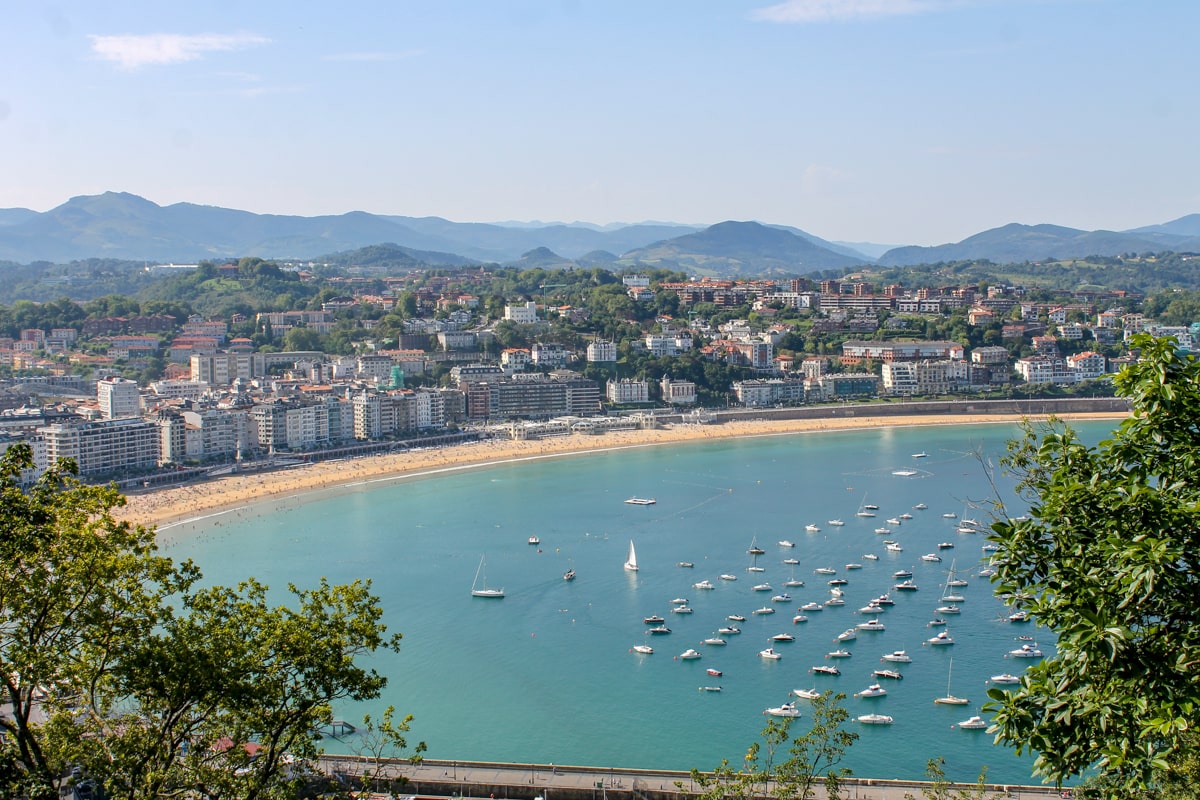
Some would consider San Sebastián one of the most beautiful towns in Spain and Lisa can see why.
When she lived in Bilbao she visited San Sebastián quite a few times and really enjoyed the vibe of the town (and having a beautiful beach so close). Don’t forget to eat some delicious Pintxos since San Sebastián is especially known for them!
The drive from Logroño to San Sebastián takes around 2 hrs by car, and between 2 and 5 hrs by public transport .
Since you are travelling between two smaller cities the connections are not that great and we would recommend planning ahead to compensate for this.
Accommodation in San Sebastián : San Sebastián is one of the most expensive towns in Spain and very popular among luxury travellers.
So, don’t be surprised if accommodations seem a little more expensive overall. That said, you can still find a great place to stay that suits your budget and style if you’re not looking for luxury.
Check here for hotels in San Sebastián .
Specifically, you can check out Casual de las Olas San Sebastián . This hotel is a bit further from the old town and beach but makes up for it in sleek decor, breakfast, and air conditioning.
If you want more of a laid-back guesthouse feel, check out Talaia HT . This authentic and cozy guesthouse is located in the heart of the old town – and has public parking nearby .
If you are looking for a hostel, you can find great hostels across San Sebastián here . Wherever you book, our advice is to book early to find deals and generally save money when booking.
Must-see Attractions in San Sebastián :
- Urgull Hill
- Plays de La Concha
- San Sebastián Cathedral
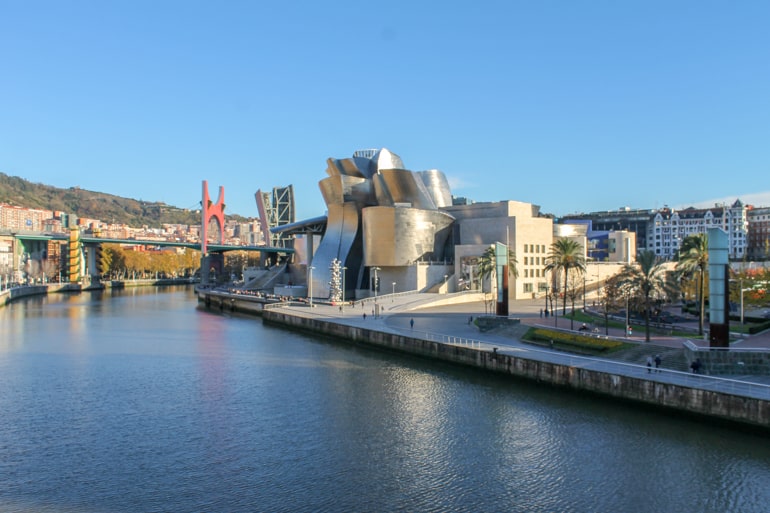
Bilbao has to be one of Lisa’s favourite Spanish cities. Not because it is especially beautiful, but because she lived there for a few months and it felt like home from the beginning. If you get the chance, take the metro to one of the beaches – you won’t regret it!
The drive from San Sebastián to Bilbao is a short and beautiful one as you will drive through some mountainous regions. By car it’ll take you approximately 1 hr 15 min and by bus the journey will be around 1,5 hours .
Bilbao also marks the end of this 5 day Northern Spain itinerary.
Bilbao is a good city to fly out of as it is one of the biggest cities in the region and well connected to bigger airports in other European cities. To get to the airport you can simply take the Airport bus from the bus station at San Mames.
Accommodation in Bilbao : Since Bilbao is a bigger city there is a wider variety of accommodations available.
Check here for apartments and hotels in Bilbao .
Specifically, Hotel NH Bilbao Deusto is a bright and simple hotel with buffet breakfast and private underground parking . Lisa had friends stay there and liked it. It’s not right in the heart of the city centre – but across the water from the Guggenheim Museum!
If you want to stay right in the heart of old town Bilbao, you should definitely check out Ercilla Hotela . This is a very stylish and popular hotel with an amazing rooftop terrace, lounge, also onsite parking , and traditional Basque food in the restaurant!
If you are looking for a cheaper place to stay, Bcool Hostel is a very “cool” hostel in Bilbao. In general, remember to book accommodations closer to the city centre/the river since the rest of Bilbao can be quite hilly!
Must-see Attractions in Bilbao:
- Guggenheim Museum
- The Old Town (Casco Viejo)
- Zubizuri Bridge
*Just so you know, we have a whole detailed guide on Bilbao things to do !
Spain Itinerary 5 Days – Southern Spain Itinerary
If you would like to explore Southern Spain instead of the north, then we would recommend the following 5-day Southern Spain itinerary.
Generally, the south is a little bit warmer than the north so maybe don’t try to do this trip in the middle of the summer heat as it can be quite exhausting!
The itinerary is just over 600 kilometres with a total driving time between 7 and 8 hours depending on your mode of transportation.
Spain Itinerary 5 Days – Southern Itinerary Overview
- Day 1: Málaga
Day 2: Day trip to Granada
- Day 3: Marbella
- Day 4: Cádiz
Day 5: Seville
Day 1: málaga.
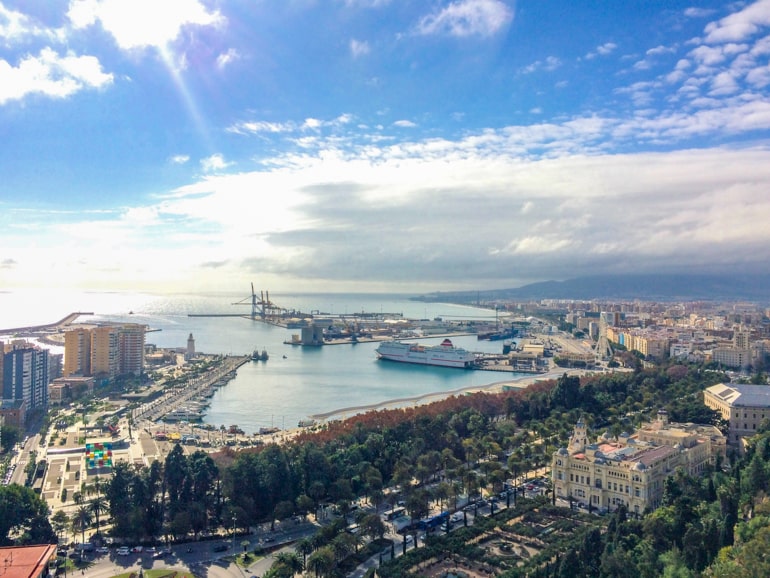
We are starting this itinerary in Málaga since it is an easy airport to fly in from other parts of Europe.
When Lisa arrived at the airport the first time she was actually kind of shocked to see that all the signs were written in German as well.
Needless to say, Málaga is a very popular destination among German tourists. It’s also an interesting city to visit in the wintertime !
Lisa didn’t like the city that much (as in wouldn’t want to live there), but it is definitely worth exploring for a day or two. It is also quite easy to get from the airport to the city centre by public transport. You can find your rental car from Malaga here .
Accommodation in Málaga: Malaga is a popular tourist destination in the south of Spain and so there are lots of different accommodation options. That said, apartment rentals are a very popular option.
Check here for apartments or hotels in Malaga .
Specifically, if you want a hotel, check out Hotel Boutique Teatro Romano . This minimalist design hotel is bright and clean and offers an excellent breakfast while being located right in the heart of the city centre.
If you are planning to stay in Malaga a bit longer, check out Apartamentos Nono . Located close to the beach and a quick walk to the city centre, these apartments have kitchenettes for smaller meals, terraces, and onsite private parking .
If you are searching for a hostel, Malaga has lots. You can search for hostels in Malaga here . When visiting Malaga with a friend, Lisa stayed at Casa Al Sur Terraza .
Even though it’s a “hostel”, it’s a popular place to stay in Malaga. They have private rooms and a lovely rooftop terrace. She and her friend stayed in a private room and loved it!
Just remember for this itinerary, wherever you book you will need to stay for 2 nights !
Must-see Attractions in Málaga:
- Alcazaba Palace
- Picasso Museum
- Cathedral of Málaga
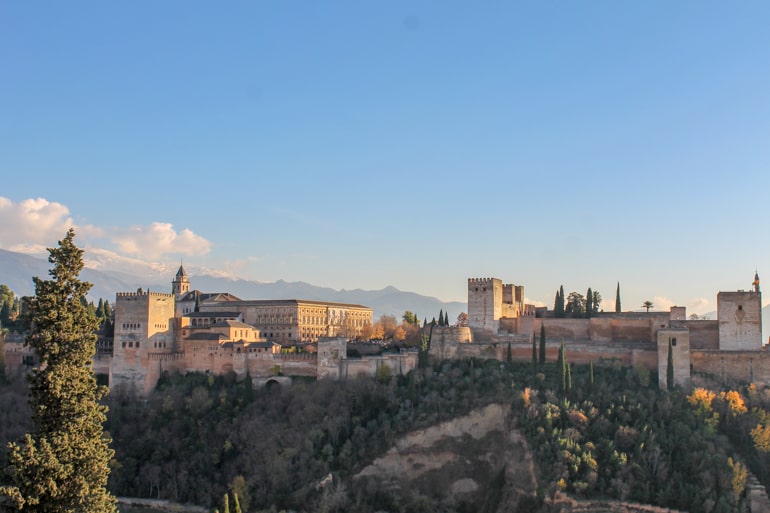
Today you’ll take a day trip to Granada. If you decided to rent a car you can do this by car, but then have to find parking in Granada. Lisa and her friend took the bus to Granada which was pretty easy to do since there are frequent buses throughout the day.
In Granada, you HAVE to go see La Alhambra. Make sure to book your ticket in advance (since there is only a limited amount of spots per day).
Lisa and her friend had to pick up her tickets at an office in the city before going to the actual attraction. Double-check your ticket since you might have to do that, too!
The journey from Málaga to Granada is approximately 1.5 hrs by car and 2 hrs by bus .
Accommodation in Granada: You won’t need a place to sleep in Granada since you’ll be returning to Málaga at the end of the day.
But IF you are curious – check out Hotel Granada Center or Granada Five Senses Rooms & Suites for two great hotels in the heart of the historic city centre!
Must-see Attractions in Granada:
- Alhambra Palace
- Albaicín District
- Cathedral of Granada
Day 3: Marbella
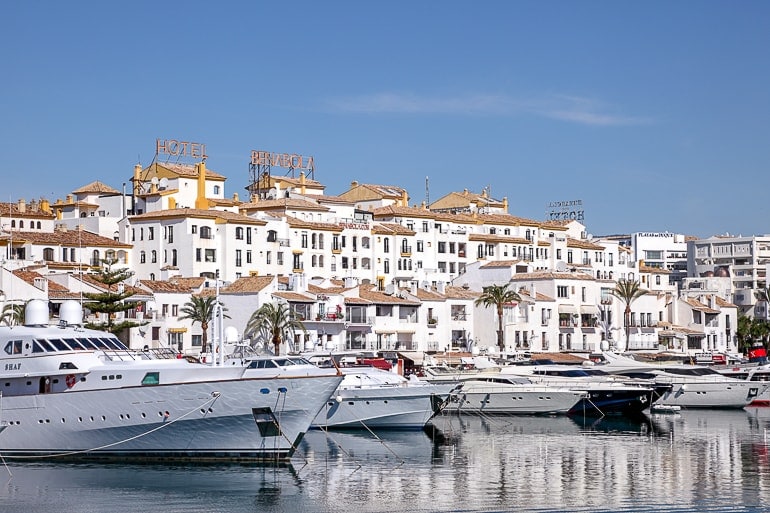
On the third day of this 5 day Southern Spain itinerary, you’ll drive from Málaga to Marbella. Marbella is a city by the water and part of the well know Costa del Sol. It is one of the most popular tourist cities in the region mainly due to its nice beaches and climate.
Since Marbella is quite close to Málaga the drive won’t be long – giving you more time to explore the city and relax at the beaches. The journey takes approximately 1 hour by car (there are different routes some of which include toll roads) and 1.5 hours by bus .
Accommodation in Marbella : Since the tourism industry is quite developed in Marbella, there are lots of amazing sunny accommodations to choose from.
Check here for hotels and apartments in Marbella .
Specifically, Paloma Blanca Boutique Hotel is a gorgeous (and affordable) boutique hotel with breakfast and free private parking onsite.
If you are looking for more of a beach resort, Amàre Beach Hotel Marbella is a beautiful all-inclusive adult-only beachside resort with breakfast, spa, pool, amazing views, and more!
Must-see Attractions in Marbella:
- The Old Town of Marbella
- Avenida del Mar
- Puerto Banús
Day 4: Cádiz
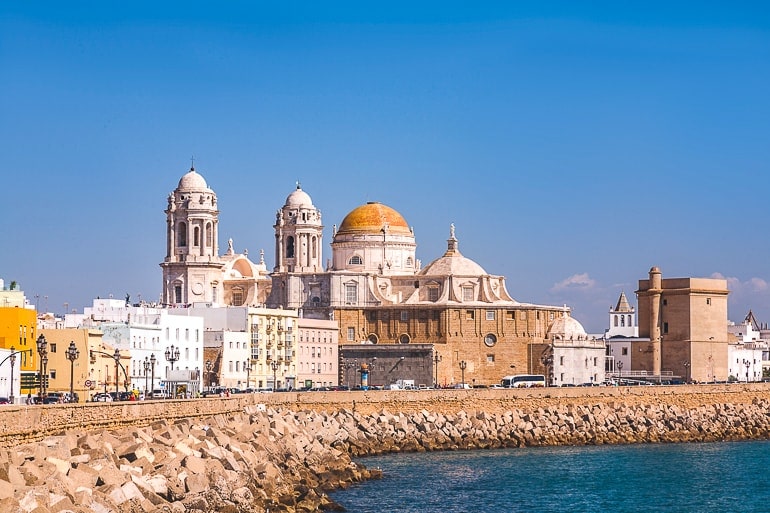
Cádiz is often considered a hidden gem in Spain. Lots of people who have been there seem to love it and Lisa is dying to visit the city.
Fun fact: Some think of Cádiz as the oldest continuously inhabited city in Western Europe. It is just slightly smaller than Marbella with lots of attractions waiting to be explored.
Driving from Marbella to Cádiz by car will take you approximately 2 hours including a toll road and slightly longer if you want to avoid toll roads.
You’ll drive along the coast for a while and could consider stopping along the way. Another option would be to make a pit stop in Gibraltar which you will pass along the way.
Unfortunately, Marbella and Cádiz do not seem to be connected well by public transport and travel between the two cities would involve going back to Málaga and/or through Sevilla (or Seville as the English like to call it).
If it is too much of a hassle for you to get from Marbella to Cádiz, consider skipping it and going straight to Seville instead.
Accommodation in Cádiz: Even though Cádiz is a smaller city, there are plenty of places to stay.
Check here for hotels and apartments in Cádiz .
Specifically, Hotel Boutique Convento Cádiz is a gorgeous hotel in the old town (close to the beach) with a great breakfast and private parking nearby .
Alquimia Albergue-Hotel is a cool and cozy hotel (also in the city centre) close to the beach and also with parking nearby. As for hostels, Cádiz does have quite a few hostels with amazing ratings. You can check here for hostels in Cádiz .
Must-see Attractions in Cádiz:
- Cádiz Cathedral
- Fortress San Sebastian
- Plaza de San Juan de Dios
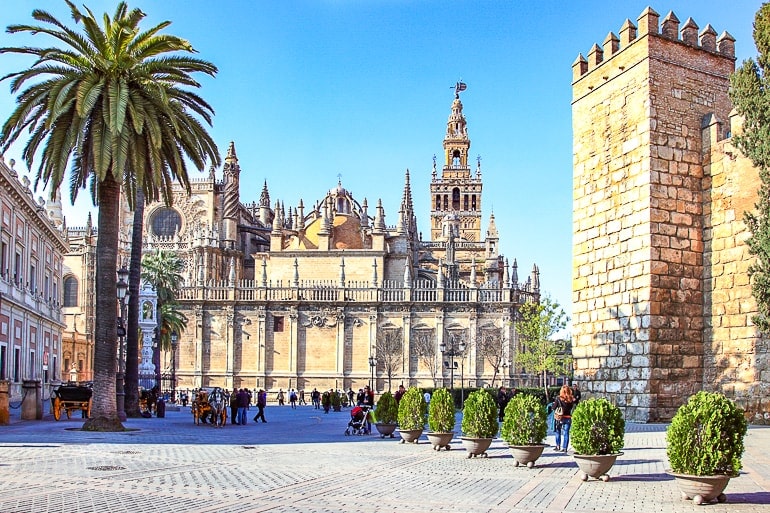
Seville is another popular destination in Spain and is often considered one of the hottest cities of the country. Therefore we would not recommend going there during July and August if you don’t like extreme heat (Lisa definitely doesn’t).
It is a beautiful city with lots of attractions to check out so be sure to have a good amount of time for exploring. If you don’t end up going to Cádiz, there is more than enough to do in Seville to keep you busy for two days!
Driving from Cádiz to Seville will take you approximately 1.5 hours by car and just slightly longer (1 hr 45 min) by bus . Seville also marks the end of this Southern Spain trip as it has a big airport which makes it super easy for you to fly back home.
Accommodation in Seville : Seville is a bigger and very popular city so there is no shortage of great accommodation options.
Check here for apartments and hotels in Seville .
Specifically, you have to see Petit Palace Puerta de Triana . This very trendy and cool design hotel offers a buffet breakfast and is located right in the city centre close to top attractions.
If you want a more historic stay, Hotel Simon is a more simple and authentic hotel. It’s located in a historic building, also does breakfast, and is also located in the heart of the city centre.
Neither of the above hotels offers parking – but few in the city centre of Seville offer onsite parking (or even public parking nearby).
If you are looking to have parking available, then you can check out La Parada del Marqués . It’s a beautiful guesthouse/hotel also centrally located and offers breakfast options and good connections to public transit!
If you are looking for a hostel, you can search for hostels in Seville here . Again, since Seville is so popular we would advise booking ahead – especially during the high season!
Must-see Attractions in Seville:
- Seville Cathedral
- Plaza de España
Spain Itinerary 7 Days
If you have slightly more time to explore Spain, we have also created two 7-day Spain itineraries for you. You’ll see that once again we give you two options since seven days are – in our opinion at least – still not enough to see the whole country.
Therefore, you’ll find a 7-Day Western Spain Itinerary and a 7-Day Eastern Spain Itinerary below. As always, feel free to modify them to make them fit your exact plans!
Spain Itinerary 7 Days – Western Trip
For this itinerary, the total driving time would be around 14 hours and the distance would be around 1300 km .
These estimates account for the Toledo day trip (and back to Madrid) AND finishing with ONE of either Seville OR Malaga from Córdoba. So, in theory, it could be shorter or longer than we have indicated here on the map!
We’ve already covered some of the places above, but we will mention the important parts again to make it easier for you to plan your exact trip.
Please note that we won’t actually include any places on the west coast of Spain – that would be a whole other trip in itself. Your 7-Day Western Spain Itinerary could look something like this:
Spain Itinerary 7 Days – Western Trip Overview
Day 1: Bilbao
Day 2: burgos.
- Day 3: Salamanca
- Day 4: Madrid
- Day 5: Madrid / Day trip to Toledo
Day 6: Córdoba
Day 7: seville or málaga.
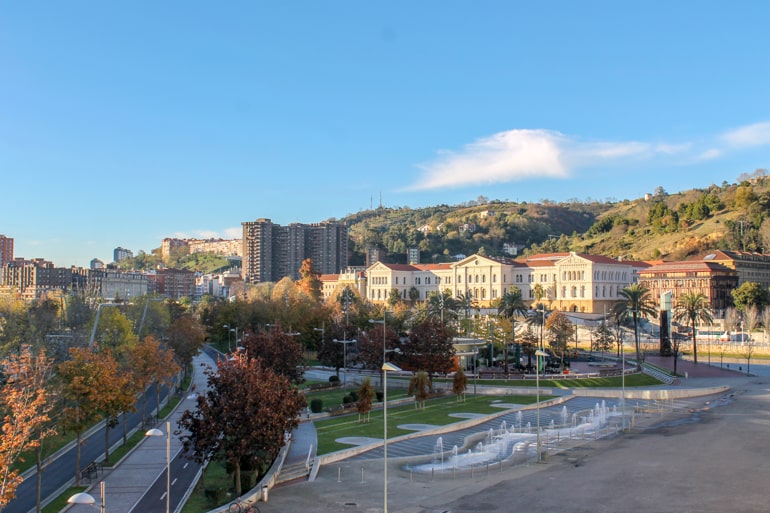
Similarly to how we ended the five-day itinerary in Bilbao, we’ll start this itinerary there as it is a relatively easy airport to fly into from other places in Europe. If you’re starting your longer Spain trip, you can find your rental car in Bilbao here .
Make sure to use your time to explore the Casco Viejo (the Old Town) and walk along the river! There are some great Pintxo places in the Old Town that you should absolutely check out!
Accommodation in Bilbao : Bilbao is a larger city so there’s quite a variety of accommodations available.
Check here for hotels in Bilbao .
Specifically, Hotel NH Bilbao Deusto is a bright and simple hotel with good breakfast and underground private parking . Friends of Lisa stayed there and said they enjoyed it. It’s close to the river across from the Guggenheim Museum but still a quick walk to the old town.
To stay in the heart of old town Bilbao, you have to see Ercilla Hotela . This is a very stylish and popular hotel with a lovely rooftop terrace and lounge, onsite parking , and they even serve traditional Basque food!
As for hostels, Bcool Hostel is a very “cool” hostel in Bilbao. In general, remember to book any hotels or accommodations somewhat closer to the city centre/the river because Bilbao can be quite hilly around the edges!

Burgos might not be a city that is immediately on your radar for places to visit in Spain but we would recommend a stop there on your way south.
Lisa visited Burgos with friends on a day trip from Bilbao so she knows how easy it is to get there. Burgos is a nice city but since there is not a ton to see, one night is the perfect amount of time in our opinion.
Getting from Bilbao to Burgos takes approximately 1.5 hours by car and 2 hours by bus .
Accommodation in Burgos : Burgos is not an overly big city, but you can still find lots of great accommodations.
Check here for hotels in Burgos .
Specifically, Hotel Puerta de Burgos is a popular, trendy, and affordable hotel with private underground parking at the hotel. This makes it a great option if you have a car because it’s a little further from the centre (still quite close) and just off the motorway.
Another great hotel closer to the city centre/attractions is NH Collection Palacio de Burgos . This is an elegant hotel with a great breakfast and private parking, too.
If you want to stay in a hotel that physically faces the famous Burgos Cathedral, check out Hotel Mesón del Cid !
Must-see Attractions in Burgos:
- Burgos Cathedral
- Las Huelgas
- Museum of Human Evolution
Day 3: Salamanca
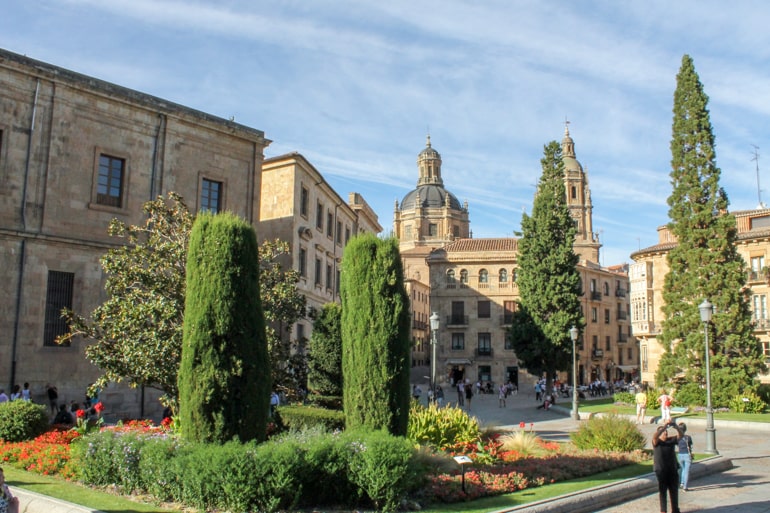
From Burgos, your journey continues to Salamanca – another one of Lisa’s favourite cities in Spain. Salamanca is sometimes called “The Golden City of Spain” and you’ll understand why.
The many sandstone buildings get illuminated beautifully by the sun – making it appear golden. Be sure to bring your camera because you’ll want to use it in Salamanca. Our tip: Cross the river to get amazing photos of the cathedral.
Getting from Burgos to Salamanca is easy and will take approximately 2.5 hours by car or 3 hours by bus .
Accommodation in Salamanca: Salamanca has lots of great accommodations in the city.
Check here for hotels in Salamanca .
Specifically, Hospes Palacio de San Esteban is an authentic-style hotel in the city centre with an incredible breakfast and onsite private parking .
If you are looking for a very affordable hotel with views of the Cathedral, Hotel San Polo is for you. The popular hotel is in a location that doesn’t get much more central! There’s no parking available – making it great if you travel by bus and train only.
When Lisa visited Salamanca on a weekend trip, she stayed in a hostel with friends close to the Old Town and loved it. You can check out the good selection of hostels in Salamanca .
Must-see Attractions in Salamanca:
- Salamanca Cathedral (Old + New)
- Plaza Mayor
- Salamanca University
Day 4: Madrid
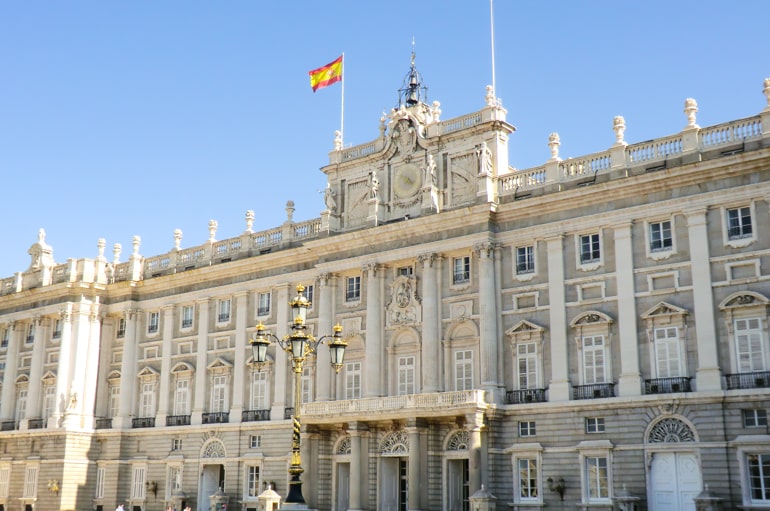
Since Madrid is the capital of Spain you shouldn’t miss it on your itinerary. Conveniently it is also quite close and easy to get to from Salamanca.
Since there is so much to see in Madrid one day to explore might not be enough for you. That’s why you might opt for spending two days in Madrid instead.
Lisa has been to Madrid two times now and still hasn’t seen everything there is to see. But at least you’ll get a good sampler!
As mentioned, getting from Salamanca to Madrid is easy. The journey will take approximately 2 hrs 12 min by car (including a toll road) and 3 hours by bus .
Madrid’s main bus station is actually underground which is kind of cool and caused a lot of confusion for Lisa and her friends when they tried to find it the first time.
Accommodation in Madrid : Being the capital city of Spain, Madrid is a popular city with lots and lots of accommodation options. Keep in mind that Madrid has many “hostals” which are technically guesthouses but are basically hotels.
Also, if you have a car don’t be surprised if parking is in a public lot for a high fee – that’s just Madrid.
Check here for apartments and hotels in Madrid .
Specifically, you might want to check out Room007 Select Sol . This charming and trendy hotel is right in the heart of the city, has air conditioning, and serves breakfast at a cafe next door!
If you are looking for a simple stay right in the centre, check out Hostal Madrid . This authentic guesthouse is so centrally located with top attractions and a metro station around the corner.
It’s such good value for money that the two times Lisa travelled to Madrid she actually stayed here both times!
Should you be on the hunt for an actual hostel, you can check here for hostels in Madrid . Keep in mind wherever you book, you will be booking accommodation for two nights.
Must-see Attractions in Madrid:
- Museum Reina Sofia
- Puerta del Sol
Keep in mind we have a whole separate detailed guide on amazing things to do in Madrid !
Day 5: Madrid or Day trip to Toledo
As mentioned, you might opt to spend another day in Madrid since there is so much to see.
If that’s the case read our Madrid guide linked above to get more recommendations. Alternatively, you could opt to go on a day trip to Toledo, a beautiful small city not too far from Madrid.
If you don’t want to drive there yourself, you can choose to book a day tour which includes a tour of Toledo among other things. If you want to drive yourself the journey will take you approximately 1 hour by car and the same amount of time by bus .
Must-see Attractions in Toledo:
- Toledo Cathedral
- Monasterio de San Juan de los Reyes
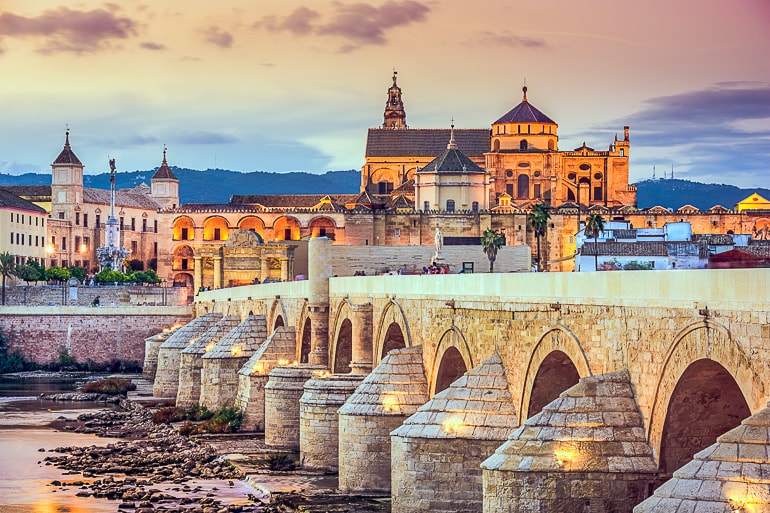
The next day you will drive to Córdoba, a city in Andalusia known for its famous flower street – among other things of course. There is a lot of history to be found in Córdoba so consider taking a walking tour if you want to learn more about it.
This is one of few routes where you will actually be faster taking public transport as if you were to drive yourself since there is a good train connection between Madrid and Córdoba.
Driving by car takes approximately 4 hours while the journey by train would be slightly shorter with 2 hrs 15 min .
Accommodation in Córdoba : If you’re looking for a hotel, there are lot of options to choose from.
Check now for hotels in Córdoba .
Specifically, Maciá Alfaros is an authentic hotel located right in the heart of the city centre with an incredible swimming pool and easy parking onsite.
Hotel Cordoba Center is an elegant hotel located outside the heart of the centre. It’s still very walkable to the centre, is very close to the train station, and has a rooftop pool with amazing views!
There are quite a few hostels with very good ratings in Córdoba so you can check here for hostels in Córdoba .
Must-see Attractions in Córdoba:
- Mosque–Cathedral of Córdoba
- Alcázar de los Reyes Cristianos
- Historic Center of Córdoba
For this itinerary, you can decide in which city you would like to end your trip. For some, it might be more convenient to fly out of Seville while for others Málaga might be the better option. So it’s really up to you and your preference!
The journey from Córdoba to Seville takes approximately 1 hr 40 min by car and 45 min by train . The time it takes to get from Córdoba to Málaga isn’t much longer with 1 hr 50 min by car and 50 min by train .
Accommodations in Seville : As mentioned above, Seville is a popular city so there is always accommodations to choose from.
Specifically, check out Petit Palace Puerta de Triana . This trendy design hotel offers a buffet breakfast and a really great location in the city centre.
For a historic stay, Hotel Simon is a more simple and more authentic hotel. It’s located in a historic building, does breakfast, and is also located in the city centre.
Neither of the above hotels have parking – but fewer properties in Seville offer onsite parking (or even public parking nearby).
If you are travelling by car and want parking available, then check out La Parada del Marqués . It’s a beautiful guesthouse/hotel also centrally located with breakfast options and good connections to public transit!
If you want a hostel stay, you can search for hostels in Seville here . Regardless of what type of accommodation you book, Seville is popular so we would advise booking ahead – especially during the high season!
Accommodation in Málaga: Malaga is a popular destination in the south of Spain with lots of different accommodation options. That said, apartment rentals are very popular.
Specifically, for hotels, you can check out Hotel Boutique Teatro Romano . This design hotel is bright and clean and offers breakfast while being located right in the heart of the city.
If you are planning for a longer stay, check out Apartamentos Nono . Located close to the beach and a quick walk to the city centre, these apartments have kitchenettes, terraces, and onsite private parking .
If you want a hostel, Malaga has lots. You can search for hostels in Malaga here . When visiting Malaga with a friend, Lisa stayed at Casa Al Sur Terraza .
Even though it’s a “hostel”, it’s a popular place – with private rooms and a lovely rooftop terrace. Her and her friend stayed in a private room and loved it!
Spain Travel Itinerary 7 Days – Eastern Trip
If the other 7-day Spain itinerary doesn’t really appeal to you and you would like to stay closer to the coast, maybe this itinerary is more to your liking. The driving time would be just shy of 11 hours and would be approximately 1000 km driving distance !
Spain Itinerary 7 Days – Eastern Trip Overview
- Day 1+2: Barcelona
Day 3: Valencia
- Day 4: Alicante
- Day 5: Murcia
Day 6: Granada
Day 7: málaga, day 1 + 2: barcelona.
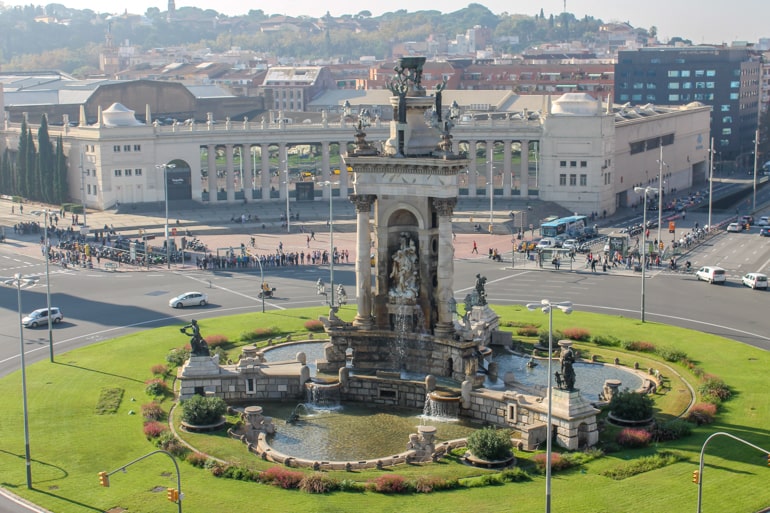
Once again, this itinerary starts in Barcelona since it is one of the easiest airports to fly into. Since you have a little bit more time with this itinerary you’ll stay in Barcelona for two days.
There is lots to see so you still won’t see everything, but definitely more than in just one day. To then continue on with this itinerary through Spain, you can find your rental car in Barcelona here .
Accommodation in Barcelona: As mentioned above, there are lots of hotels and apartments in Barcelona.
For hotels, you might like Catalonia Born Hotel with a boutique style and rooftop pool close to the beach in the city centre.
If you travel by car, Sallés Hotel Pere IV is an affordable hotel with spa in the heart of the city with a private parking garage .
As for hostels, you can check here for Barcelona hostels . We liked Kabul Hostel . Wherever you stay, remember to book in advance because the city does fill up and it can get expensive! And remember, you’ll be staying at this place for two nights .
- Las Ramblas
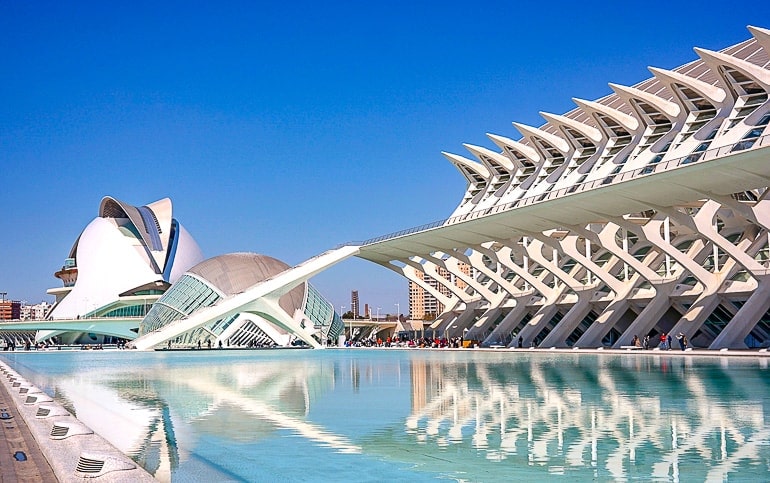
The third day of this Spain itinerary will take you from Barcelona to Valencia which is another city on Lisa’s favourite list.
It was actually the first Spanish city she visited and she fell in love with the city and its people right away. Her favourite part is that there is a huge part in what was formerly a river that stretches through a big part of the city.
In order to get from Barcelona to Valencia, you’ll drive along the coast for 3.5 hours by car and around 3 hrs 15 min by train.
Accommodation in Valencia: Since Valencia is a bigger city, you are sure to find accommodations that work for you.
Check here for hotels in Valencia .
Specifically, Petit Palace Ruzafa is a bright and boutique hotel right in the city centre.
They offer healthy breakfast options and free bike rentals. There’s no parking making this a great hotel for those travelling without a car.
If you want a place right on the beach, check out Hotel Miramar . This cool beachfront hotel has a bar and restaurant right downstairs and has paid parking onsite . If you are looking for a hostel, you can check here for hostels in Valencia .
Must-see Attractions in Valencia:
- City of Arts and Science
- Lonja de la Seda
- Cathedral of Valencia
Day 4: Alicante

Alicante is a popular holiday town that lots of Europeans visit to enjoy the nice weather and the beaches. Maybe you have heard of the name Costa Blanca?
Alicante is part of that exact region. When you’re there don’t forget to check out some of the nice beaches – but of course, there are also lots of other things waiting to be explored.
Getting from Valencia to Alicante won’t take overly long. The drive will take approximately 2 hours by car and 1.5 hrs to 2.5 hours by train or bus respectively.
Accommodation in Alicante: Alicante is a popular city due to its great location on the coast.
Check here for hotels in Alicante .
If you want to stay directly on the beach, Hotel Almirante is a bright and stylish hotel with breakfast buffet. It’s a bit farther from the city centre, but there is free onsite parking if you have a car.
If you want more of a resort style, Melia Alicante is also located right on the beach with stunning views over the water. It’s much closer to the centre of the city and has good amenities (pool), paid parking next door, and a really good breakfast!
You can also find a good mix of hostels in Alicante. In any case, don’t forget to book ahead in the summertime since it can get very crowded.
Must-see Attractions in Alicante:
- Castle of Santa Barbara
- Casco Antiguo (Old Town)
- Beaches such as Playa Postiguet
If you’re heading for Alicante to get some sunshine, we’ve got a guide on things to do and see in Alicante that includes some great food tips for you to check out!
Day 5: Murcia
Murcia is a city in the southeast of Spain and the capital of the region with the same name. Travellers who don’t know much about Spain (yet) might not have heard of the city before but this doesn’t mean it is not worth a visit.
The drive from Alicante to Murcia is quite short with 1 hr by car and 1 hr 10 min by bus . This will give you a good amount of time to explore the university city and get a rest from all the driving.
Accommodation in Murcia: Since Murcia is a less touristy city you’ll find great places to stay and (generally) fewer crowds.
Check here for hotels in Murcia .
Specifically, the Hesperia Murcia Centro is a clean and modern hotel right in the city centre near the Cathedral. There’s also private onsite parking and a tasty breakfast.
If you want to stay closer to the coast – you could stay in Cartagena (about 30 minutes away from Murcia). Here, check out NH Cartagena – with bright, sea views and parking all in a great location.
Must-see Attractions in Murcia:
- Murcia Cathedral
- Floridablanca Gardens
- Monteagudo Castle
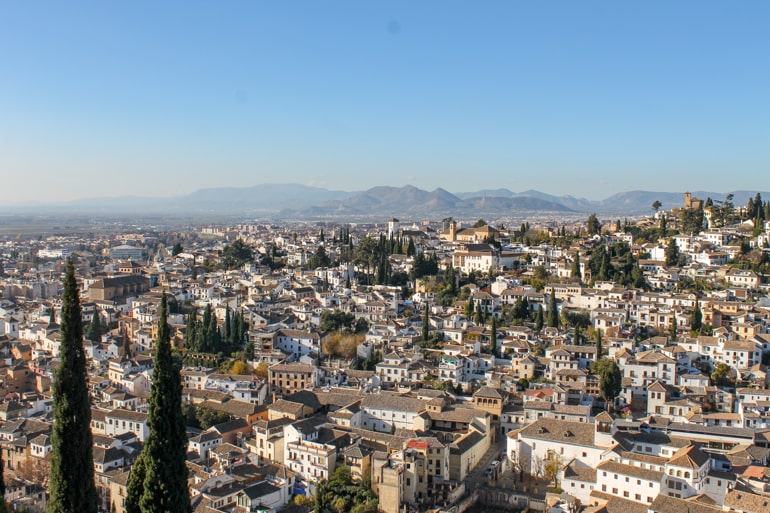
From Murcia, your journey will continue to Granada, a city which we have mentioned quite a few times by now so we won’t go into details again. If you haven’t yet, make sure to get your Alhambra tickets in advance!
Driving from Murcia to Granada will be a slightly longer trip with 2 hrs 45 min by car and around 3.5 hrs by bus .
Accommodation in Granada: Since Granada is a popular travel destination, many accommodations are available.
Check here for hotels in Granada .
Specifically, Hotel Granada Center is a VERY popular hotel with great breakfast, a very central location, and private underground parking onsite .
Also situated in the city centre is Granada Five Senses Rooms & Suites – a sleek and modern hotel with small rooftop pool with great views of the historic old town! If you are looking for a hostel, you can check here for hostels in Granada .
Since we have mentioned Málaga countless times above, there is not much to add. As you probably know by now Málaga has a great airport to fly out of so this is where this 7-day Eastern Spain itinerary ends.
The journey from Granada to Málaga is approximately 1,5 hrs by car and 2 hrs by bus .
Accommodation in Málaga: Malaga is a popular tourist destination in Spain so there are lots of available accommodations – with apartments being the most popular.
For hotels, check out Hotel Boutique Teatro Romano . This minimalist design hotel is bright and offers a great breakfast while being located right in the city centre.
For longer stays, check out Apartamentos Nono . Located close to the beach and to the city centre, these apartments have kitchenettes for small meal prep, terraces, and onsite private parking .
If you are searching for a hostel, you can search for hostels in Malaga here . When visiting Malaga with a friend, Lisa stayed at Casa Al Sur Terraza .
It’s a popular place to stay in Malaga with private rooms and a great rooftop terrace. She and her friend stayed in a private room and really liked it!
Spain Itinerary – 14 Days
This road trip would be a beast. As planned above with the scheduled day trips you’d cover around 2600 kilometres .
The driving time would be around 27 hours and 30 minutes – but of course, this varies by traffic and which day trips/stop days (beach days) you opt to take, etc.
If you swung down to Gibraltar at the end and then went to Granada and Malaga, it could very well be a tad longer.
You should also consider the price of renting a car for two weeks to see if there are any companies that offer discounts!
Compare prices for your car rental from Bilbao here .
Since you have read about most of these places in some of the itineraries above we’ll keep this one short.
Our version is written from north to south, so from Bilbao to Málaga. As with most of our itineraries, you can reverse the direction if you feel like it So, to really see the whole country, your updated 14-day Spain itinerary might look something like this:
14-Day Spain Itinerary Overview
- Day 2: Day trip to Santander, Vitoria-Gasteiz or Beach Day
- Day 3: Donostia-San Sebastián
- Day 4: Zaragoza
Day 5+6: Barcelona
Day 7: valencia, day 8+9: madrid.
- Day 10: Toledo or Córdoba
Day 11: Seville
- Day 12: Seville or Day trip to Cádiz/ Gibraltar
- Day 13: Málaga (or Granada)
- Day 14: Málaga
Once again we are starting this itinerary in Bilbao since it is an easy city to get to. There are quite a few things to see and delicious foods to try so with this itinerary you have slightly more time to explore the city!
Accommodation in Bilbao: Once again, Bilbao is a bigger centre in Spain so you’ll find lots of accommodations to suit many different styles and budgets.
Specifically, Hotel NH Bilbao Deusto is a bright hotel with breakfast and underground private parking . Friends of Lisa stayed here and enjoyed it. It’s the river from the Old Town – but it’s a nice area and a quick walk to everything.
To stay in the centre of Bilbao’s historic old town, check out Ercilla Hotela . This is a very stylish hotel with a great rooftop terrace/lounge, onsite parking , and food onsite, too.
If you are wanting a hostel, Bcool Hostel is a great option in Bilbao. Just remember: when booking any accommodations in Bilbao, try to book in the centre or near the river since the edges of the city can be very hilly!
Since the next day in this itinerary is a day trip we’d suggest booking your accommodation in Bilbao for two nights !
Day 2: Day Trip to Santander, Vitoria-Gasteiz or Beach Day
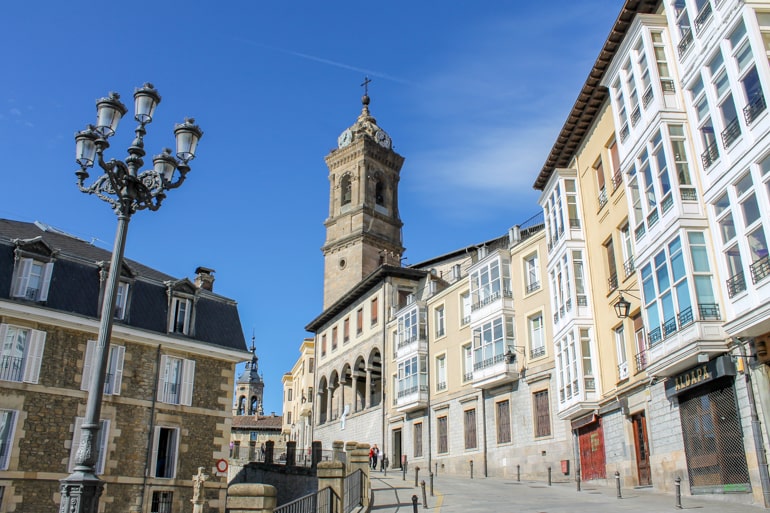
To give you the chance to see a bit more of the region we recommend a day trip to either Santander or Vitoria-Gasteiz, the capital of the Basque Country.
Alternatively, you can also opt to spend the day at the beach if the weather is nice (more on that below!) or use the time to see more of Bilbao.
Getting to Santander from Bilbao takes approximately 1 hr 15 min by car and 1.5 hrs by bus . The journey to Vitoria-Gasteiz is slightly shorter, taking approximately 1 hr by car and the same amount of time by bus .
Must-see Attractions in Santander:
- Palacio de la Magdalena
- Centro Botin
- Sardinero Beach
Must-see Attractions in Vitoria-Gasteiz:
- Catedral de Santa María
- Iglesia de San Miguel
If you opt for a beach day instead, we would recommend Sopelana beach. It is easy to reach by metro. Just take the line no 1 in the direction of Plentzia and get off at the Sopelana stop.
From there you can either walk or take the bus to the beach. It’s Lisa’s favourite beach in the Bilbao area since it looks beautiful and is not too crowded. It’s also a great stop to try some surfing.
Day 3: Donostia-San Sebastián
The next stop on your 14-day Spain itinerary is San Sebastián – a city we have already mentioned before. Beautiful beaches and delicious pintxos await you!
The drive from Bilbao to San Sebastián takes around 1 hr 15 min by car and 1.5 hrs by bus . There are very frequent buses by lots of different operators between these two cities.
Accommodation in San Sebastián : San Sebastián is one of the more expensive towns in Spain. It’s also very popular among luxury travellers. So, don’t be surprised if accommodations seem a little more expensive overall.
Specifically, check out Casual de las Olas San Sebastián . This hotel is a bit further from the old town and beach but makes up for it with sleek decor, breakfast, and air conditioning.
If you want more of a laid-back feel, check out Talaia HT . This authentic and cozy guesthouse is located in the heart of the old town – and has public parking nearby .
If you are looking for a hostel, you can find hostels across San Sebastián here . Wherever you book, our advice is to book accommodations early. Generally, you save money when doing that.
Day 4: Zaragoza
Day 5 of this itinerary will take you to Zaragoza, a city mentioned in the 5 day Northern Spain itinerary. The drive will be a bit longer but you’ll still have enough time to check out some of the attractions Zaragoza has to offer.
Driving from San Sebastián to Zaragoza will take approximately 2 hrs 45 min by car (including a toll road) and around 4 hrs by bus .
Accommodations in Zaragoza: Zaragoza is a smaller city but there are still lots of really great accommodation options.
Specifically, check out Hotel Sauce . This bright hotel is located right in the city centre and has buffet breakfast, air conditioning, and private parking onsite for those with a car in Spain!
If you want a hotel with a rooftop pool, Hotel Palafox is for you! Also situated right in the heart of the city, the hotel has a unique decor, city views, a nice breakfast, and also has parking and air con!
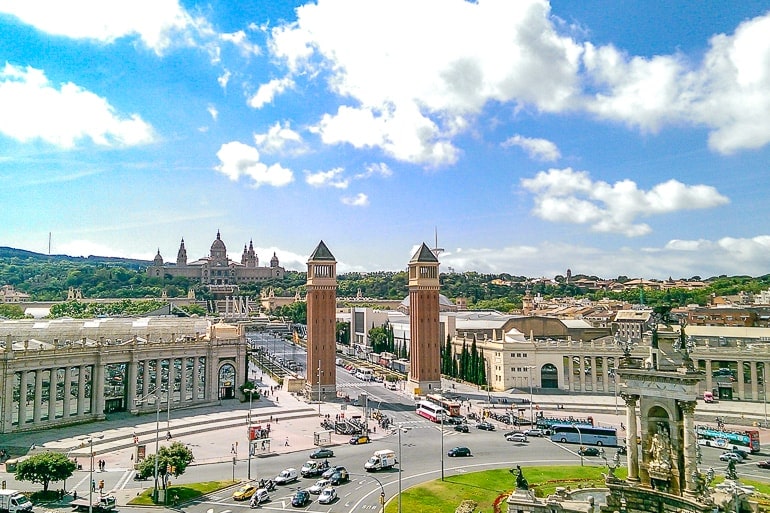
A tour across the country wouldn’t be complete without including Barcelona. Since there is so much to see you’ll be spending two nights in the city to give you enough time.
The drive from Zaragoza to Barcelona will take you approximately 3 hrs 10 min by car (includes a toll road), 3.5 hrs by bus and 1.5 hrs by train .
Accommodation in Barcelona : As mentioned above, you’ll find loads of great hotels and apartments in Barcelona.
If you are looking for a hotel, check out Catalonia Born Hotel with a boutique style and rooftop pool in the city centre (also close to the beach).
If you travel by car, Sallés Hotel Pere IV is a lovely and affordable hotel with a spa that is located in the heart of the city and has a private parking garage onsite .
As for hostels, you can check out Barcelona hostels here. Specifically, we enjoyed Kabul Hostel . Hostel or hotel – just remember to book early because Barcelona is a popular city. Also remember that for this itinerary, you’ll be staying over for two nights .
And we’re back in one of Lisa’s favourite cities. The drive from Barcelona to Valencia will be a bit longer but it is worth it (in our opinion at least).
Driving from Barcelona to Valencia will take around 3.5 hrs by car (including a toll road), 3 hrs by train and 4 hrs 15 min by bus .
Accommodation in Valencia: Since Valencia is a bigger city, you’ll find accommodations that work for your style and budget.
Check now for hotels in Valencia .
Specifically, Petit Palace Ruzafa is a boutique hotel very much in the lovely city centre. They offer healthy breakfast, free bike rentals, and no parking – making it great for travellers without a car!
If you’re looking to stay right the beach, you’ll likely love Hotel Miramar . This cool beachfront hotel has a bar/restaurant right downstairs, ocean views, and has paid parking onsite . If you want to stay in a hostel, you can check now for hostels in Valencia .
Must-see Attractions in Valencia:
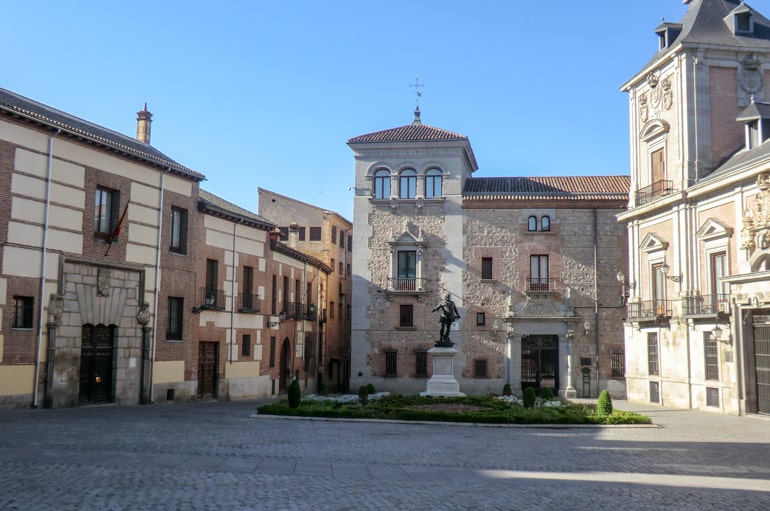
Of course, you can’t forget about the capital of the country when going on a trip through Spain.
Since there is so much to see and do you will spend two nights in Madrid. This will also give you some time to recover from the long driving days you’ve had.
Driving from Valencia to Madrid takes approximately 3.5 hrs by car and slightly less than 2 hrs by train .
Accommodation in Madrid : Being the capital city of Spain, Madrid is a popular city with lots of accommodations.
Keep in mind that Madrid has “hostals” which are technically guesthouses but are basically hotels. Also, parking can be very expensive per day but that’s just Madrid for you.
Specifically, check out Room007 Select Sol . This charming and trendy hotel is right in the heart of the city, has air conditioning, and serves breakfast at a cafe next door. You are very much in the city centre here!
If you are looking for more of a guesthouse stay right in the centre, check out Hostal Madrid .
This authentic accommodation is so centrally located with attractions and the metro close by. It’s good value for money – the two times Lisa travelled to Madrid she actually stayed here both times!
Should you want an actual hostel, there are loads of hostels in Madrid. You can check here for hostels in Madrid . Keep in mind wherever you book, you will be booking this accommodation for two nights if you are following this itinerary.
*We have written in-depth about many of the attractions you can visit in Madrid in our things to do in Madrid guide!
Day 10: Toledo or Córdoba
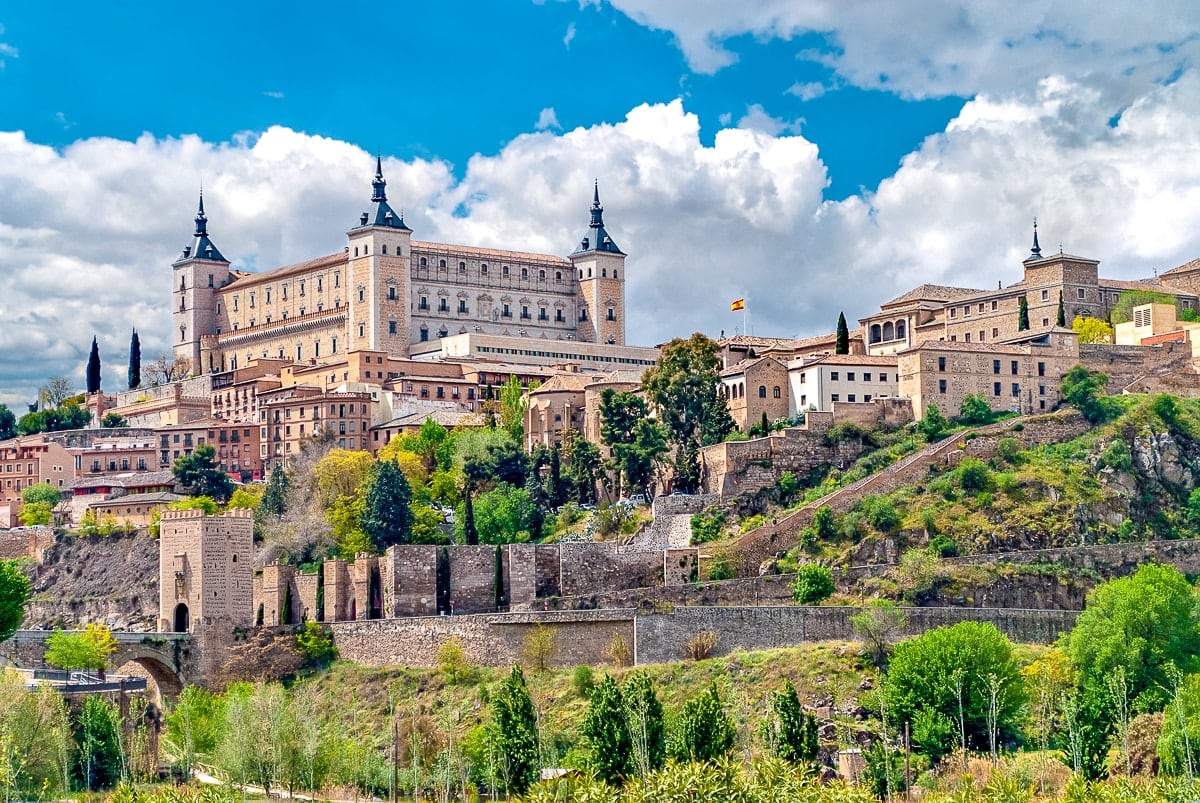
For the next stop on your itinerary, you can decide where you would like to stop. From Madrid you are driving further south and both Toledo and Córdoba would be great options for a stop on the way to Seville.
The drive from Madrid to Toledo will be short and only take an hour by car or bus . The drive from Madrid to Córdoba is a lot longer and takes approximately 4 hrs by car and 2 hrs by train .
While this drive would be longer, your drive the next day would be significantly shorter from Córdoba than from Toledo.
Accommodation in Toledo: If you choose to stay in Toledo, you can check here for hotels in Toledo .
Specifically, you have to check out Hotel Santa Isabel – an authentic and charming Spanish hotel in the heart of the city with an incredible rooftop terrace, good breakfast, and private parking under the hotel if you need it.
Accommodations in Córdoba: If you end up in Córdoba, you can check now for hotels in Córdoba .
Specifically, Maciá Alfaros is an authentic hotel located right in the heart of the city with a nice swimming pool and parking onsite.
Hotel Cordoba Center is an elegant hotel located just a short walk to the centre. It’s location is very close to the train station – and there is a lovely rooftop pool with city views!
There are also many hostels with very good ratings so you can check here for hostels in Córdoba .
On day 11 you will drive from either Toledo or Córdoba to Seville – a city we have mentioned multiple times now because it is very much worth the visit.
If you ended up staying in Toledo, it’ll take you 4.5 hrs by car and 4 hrs by train to get to Seville. If you stayed in Córdoba it’ll only take you 1.5 hrs by car and 45 min by train to get to Seville.
Accommodation in Seville : As we have mentioned above a bunch of times, Seville is a big and popular city so you’ll have no shortage of accommodations to pick from.
Check here for hotels in Seville .
Specifically, we like the look of Petit Palace Puerta de Triana . It’s a trendy design hotel with a buffet breakfast located right in the city centre close to top sights!
If you want more of a “historic stay”, Hotel Simon is a simple and authentic hotel located in a historic building!
They also do breakfast and are also located in the city centre. So you know: neither of the above hotels have parking – but not that many hotels in the city centre offer onsite parking (or even nearby public parking).
If you have/rent a car and need parking available, we’d say check out La Parada del Marqués . It’s a beautiful guesthouse/hotel also quite conveniently located but they also have parking, breakfast options, and good connections to public transit!
Should you be looking for a hostel, you can search for hostels in Seville here .
Again, since Seville is very popular so we would advise booking any accommodations ahead of time – especially during the high season! Remember, you’ll stay for two nights if you follow this itinerary!
Day 12: Seville or Day trip to Cádiz/ Gibraltar

Since there is a lot to see and do in Seville, you have the option to stay another day to explore more of what the city has to offer.
If you’d prefer to see a different place you can consider day trips to either Cádiz or Gibraltar. Know that Gibraltar is not officially part of Spain but belongs to the United Kingdom instead.
It’ll take you around 1.5 hrs by car or train to get from Seville to Cádiz. To get from Seville to Gibraltar it’ll take between 2 and 3 hrs by car .
There does not seem to be any public transport between Seville and Gibraltar since it is another country, but you can participate in an organized tour from Seville to Gibraltar .
Must-see Attractions in Gibraltar:
- Rock of Gibraltar
- Great Siege Tunnels
- The Old Town
Day 13: Málaga (or Granada)
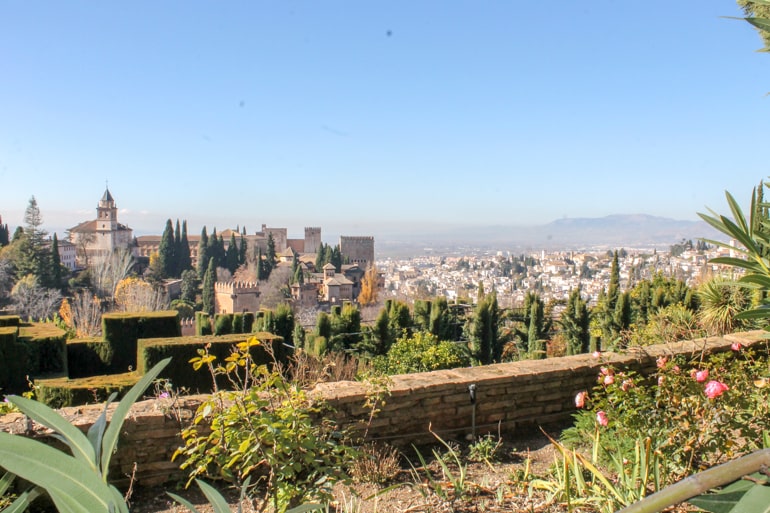
On your second to last day of this itinerary, you will drive from Seville to Málaga, a route we have mentioned quite a few times by now up above.
If you really wanted to visit Granada you could also drive there instead. You could then make the trip to Málaga at the end of the day or the next day.
The journey from Seville to Málaga will be approximately 2.5 hrs by car and 2 hrs by train. Whatever city combo you choose, just remember to book the right amount of nights in cities (one or two) for the end of your itinerary (keeping in mind where you fly out)!
Accommodation in Málaga: As a popular city in the south, Malaga has lots of places to choose from when it comes to accommodation options.
For hotels, have a look at Hotel Boutique Teatro Romano . This lovely design hotel offers breakfast – and it’s very centrally located in the heart of the city!
For an apartment rental (maybe for a longer stay), check out Apartamentos Nono . Located close to the beach and a quick walk to the city centre, the apartments have kitchenettes, terraces, and private parking onsite (if you travelling by car).
Malaga also has lots of hostels if you like. You can search for hostels in Malaga here . Lisa stayed at Casa Al Sur Terraza when travelling to Malaga with a friend.
For a “hostel”, the Casa is a very popular place to stay with private rooms and a sunny rooftop terrace. Lisa and her friend booked a private room and enjoyed it!
Accommodation in Granada: Since Granada is popular, many accommodations are available.
Specifically, Hotel Granada Center is a VERY popular hotel with a great breakfast, a very central location, and private underground parking onsite if you have a car.
Also situated in the city centre is Granada Five Senses Rooms & Suites – a modern hotel with a small rooftop pool with views of Granada’s old town! If you want to book a hostel, you can check here for hostels in Granada .
Day 14: Málaga
And this is the end of your two weeks Spain itinerary. Once again Málaga is the city you fly out of since there are lots of great flight connections to other places in Europe.
Alternatively, you could also stay in Seville and visit Málaga on a day trip if the airport in Seville works better for you.
Things to Consider When Travelling in Spain
Before you dive into Spain trip planning, you’ll want to consider a few details. From the currency they use (the Euro) to the weather, public transport, and the best time to visit, we cover a few key areas below to help you prepare.
Best Time of Year to Visit Spain
Spain is a destination that can be visited year-round – you just have to set your expectations right. Lisa visited Malaga with a friend in December and it was quite warm but of course not warm enough to go swimming.
Since the country is quite big and has a diverse geography, there are actually a lot of different climate zones in Spain. Generally, the summers are hot and dry while the winters are mild and quite rainy.
The average maximum temperature for July and August is 30 °C and 17/16 °C in December and January. However, this can vary greatly depending on which city you are visiting (e.g. Granada is always a little bit colder).
We would recommend that you avoid the south – especially Seville – and Madrid in July and August since it can get VERY hot.
And according to Lisa’s Spanish teacher in Bilbao, it would probably also be a good idea to avoid visiting the Basque country during the winter months since it can rain a lot.
In our opinion, the perfect months for visiting Spain would be from March to June and September to the end of October.
Public Transportation in Spain
Spain has a very well-developed long-distance bus system. Lisa was especially impressed by that since in Germany long-distance buses didn’t exist until a few years ago and sometimes it can still be a bit chaotic or unclear.
In Spain, almost every major city has an actual bus station (and not just a signpost). One of the biggest bus companies in Spain is Alsa .
Lisa has used them quite a few times when living in Spain (to go from Madrid to Bilbao for example) and always had a pleasant experience.
In addition to buses, Spain also has a pretty good rail system. You can check the train connections and prices on the RENFE website here .
We would recommend that you always check both buses and trains as sometimes they take approximately the same amount of time and the bus can be significantly cheaper.
In a few areas (such as parts of the Basque country), the buses can be actually a lot faster than the train.
You can reach all of the places mentioned in these Spain itineraries with public transport.
So if you don’t feel comfortable with renting a car in a foreign country you can still follow all of these itineraries. The bus and train stations are often very centrally located so it shouldn’t be a hassle to get into the centre in any of the cities.
Car Rental in Spain
If you would like to rent a car and make these itineraries a road trip that is a great option, too.
Driving in Spain is generally pretty safe – but it can get a little crazy in bigger cities like Barcelona or Madrid. Spaniards also like to speed – but if you are a confident yet careful driver then this shouldn’t be an issue.
Since Spain is such a popular destination, there are lots of different rental car agencies available. Make sure to read the fine print about additional costs in case there are any issues.
You can compare prices for your Spain trip with this handy comparison tool .
In Spain, there are quite a few toll roads which start with an ‘AP’ in the name. If you want to avoid paying tolls you can often find a road that runs in a similar direction.
Generally, your driving time will be longer if you avoid toll roads but you never know which hidden gems you come across on your way.
Travel Insurance for Spain
When visiting Spain you – and especially when renting a car – should get travel insurance.
While you’ll probably be fine, accidents do happen (and Spaniards are more reckless drivers than in other countries) and they can be expensive. That’s why we always travel with insurance.
If you live in a European country and have European health insurance, you can get the blue EU Health insurance card with which you are covered in emergencies. If you don’t have that option, we recommend that you get private travel insurance.
Related Posts
If you are planning your visit to Spain, check out our other posts on travelling, working, and studying in Spain!
- 12 Need to Knows When Travelling to Spain for the First Time
- 11 of The Most Beautiful Cities in Spain
- 17 of the Top Attractions in all of Spain
- Catalonia Road Trip Itineraries
And there you have it – 5 epic itineraries around Spain! Whether you need 5 days or 14, we think you’ll have lots to work with to plan that perfect trip. Lisa is so happy to be able to provide you with her knowledge of the country.
There is still so much to cover – but we think that these itineraries are a great starting point – you may even do the routes as is and see how they go!
As always, Happy Waddlin’, – L&E
- Compare flights on Skyscanner
- Check for Hotel Deals or Book A Hostel
- Get A Rental Car (depending on the destination)
- Research plug types and possibly get a travel adapter
- Go over our packing list
Pin it for later!

As an Amazon Associate we earn from qualifying purchases.
Destinations
Privacy policy
Disclaimer & Affiliate Disclosure
Terms of use
© 2024 Creativlier Media Inc.
Are you sure you want to delete this route?

Route planner
Create your own plan for your trip to Spain with a route to suit your requirements

5 Days in Spain: Where to Go in Spain & 3 Unique Itineraries
Spain is a country unique to all of Europe. No wonder it’s one of the most popular travel destinations in the world. If you’re planning 5 days in Spain soon, this guide on where to go in Spain with 3 unique Spain itineraries will make your travel planning a breeze.
The diverse geography, rich heritage, and famous Spanish monuments offer travelers everything they desire, from beautiful beaches and medieval castles to luxurious party islands.
Before you dive into the plethora of possible Spain travel itineraries, it is wise to learn a little bit about Spain, like weather, currency, transport, and best travel destinations. Once you’ve learned the basics, all there’s left to do is pick the best Spain Itinerary for your Spanish vacation.
How to Get Around in Spain – 5 Days in Spain Itinerary
Getting around Spain has become much easier thanks to the excellent public transport options. These include long-distance buses, high-speed trains, and internal flights. Don’t worry. The options aren’t too overwhelming, and having such variety makes planning a trip to Spain easier.

Traveling by Bus in Spain
Buses are the most economical way to get around Spain, although long distances could be uncomfortable. If you’re interested in exploring smaller towns and villages, often the only option will be local buses (or private transfers).
Most of the time, you can buy your bus ticket from the driver as you get in, but long-distance routes can be booked in advance. The Movelia website makes it easy to search for buses online.
Traveling by Plane in Spain
If you’re pressed for time, budget airlines may be the best way to hop between cities. When traveling to the Balearic or other islands, flying is the fastest and often the cheapest way to get there. The cheapest airlines are EasyJet and Ryanair . Keep in mind that checked luggage is not included in the price and will cost an additional fee per bag.
Renting a Car in Spain
Renting a car is a great way to determine your own route and pace while traveling through Spain. However, even though the cost of renting a car can be low, there are a lot of additional costs to consider, like parking fees, fuel, toll gates, and an international driving license.
Tip: Check out Discover Cars for great car rental options when traveling in Spain.

Traveling by Train in Spain
Spain has a well-connected rail system with both high-speed and regular trains. Tickets can be quite cheap and save a lot of time, but booking in advance is often necessary. A train from Barcelona to Madrid on a high-speed train only takes 2.5 hours and can cost as little as 30 Euros ($33 USD).
Check out our post to learn more about traveling by train in Spain !
Hitchhiking
Europe is a safe and popular destination for hitchhikers, although this would require a lot of flexibility and could be uncomfortable. Online guides for travelers who want to hitchhike through Europe are great sources of information while you’re on the go.
The Best Time to Visit Spain
Spain is a lovely destination year-round, with the best time to visit Spain being Spring (March to May) and Fall (September to November).
Peak season is during the summer, from June to the end of August. Prices are higher, it gets crowded, and many accommodations may be booked out, so it’s best to make reservations and plan your 5 day Spain itinerary in advance. This time of the year is best for beach hopping and partying.
Spain has a very moderate temperature, and even in winter, it doesn’t get too cold. The only snowfall occurs in the North, usually only in the Spanish Pyrenees and the Sierra Nevada mountains.
Tip: Get inspired by these unique places to visit in Spain .
Should I Get Insurance for My Trip to Spain?
Although Spain is a relatively safe country, accidents do happen. Travel insurance is invaluable, especially if renting a car or doing more extreme activities like taking on Camino de Santiago while hiking in Spain .
Check with your insurance company if you are covered while traveling. If not, World Nomads is a very reputable company popular amongst travelers.
5 Day Itinerary, Spain – Best Cities in Spain
Spain is a diverse country with world-famous cities, quaint towns, charming villages, and stunning beaches. It also boasts culturally rich regions and over 50 beautiful provinces and islands.
Lest you give your life to exploring all the nooks and crannies of Spain, you won’t be able to see all the country has to offer, especially not with a short Spain 5-day itinerary. To make your travel plans simpler, and to ensure you see the best of Spain, we’ve gathered the top 10 places to see in this magnificent Mediterranean country.
1. Barcelona
The mesmerizing seaside capital of Catalonia is embedded with rich culture, fantastical art and architecture, and a world-renowned food scene. The city has found a way to merge its ancient Roman history with 20th-century Modernist architecture by Antoni Gaudí. Barcelona holds up to its title as one of the most attractive cities in Europe and one of the best cities in Spain.
Read more about the major sights like the historic Gothic Quarter and the famous Las Ramblas in this guide to Barcelona .
The capital city is famous for its lively nightlife, large museums, and flavourful tapas. Daytime can be spent viewing famous artworks in Prado, the largest museum in the world, or touring Palacio Real, home of the Spanish royal family.
To experience the magical energy of Madrid, you’d have to wait until the sun starts to set in the summertime. This is when the city is most vibrant.
Tip: Get skip-the-line tickets to the Prado museum to make the most of your Spain tour.
Sitting neatly on the Costa del Sol, Málaga is the soulful hub that gifted the world Pablo Picasso. The city is buzzing with youth culture, new art houses, and a culinary scene that would excite any foodie. The revamped city still has a rich history, with remnants scattered across Málaga, including Moorish Citadels and a Roman Amphitheatre.
The sandy beaches of Málaga are also ideal for relaxing and experiencing the local culture on your Spain trip.
4. Valencia
The futuristic architecture of Valencia’s City of Arts and Sciences includes a planetarium, oceanarium, and interactive museum. The innovative buildings may seem like science fiction, but the beautiful beaches, authentic paellas, and Old Town will remind you of the deeply ingrained Spanish culture of the city.
Read more about what to do in Valencia and Valencia’s castles .
Bilbao will transform your idea about what port cities look like. Located in Northern Spain and surrounded by lush green mountains, the capital of Basque Country is home to the Guggenheim Museum Bilbao.
The titanium structure of the museum receives more accolades than the famous contemporary art it houses. Bilbao is the perfect addition to any Northern Spain itinerary.
Seville is the largest and most popular destination in Andalusia. The student city boasts colorful streets, grand architecture, and buzzing festivals.
One of the main attractions is the Cathedral of Seville , a UNESCO world heritage site and one of the largest churches in the world. There are also monuments dedicated to different regions of the country and the Jewish Quarter to explore.

Known as “The Moorish Jewel,” Granada is tucked between the foothills of the Sierra Nevada mountains. Experiencing its Arabic culture and Islamic architecture is like watching a masterful showpiece, with the Granada Palace, Alhambra , being the star of the show.
8. Salamanca
The sandstone buildings of Salamanca radiate with such beauty that the city has been nicknamed La Dorada, The Golden One. Its ancient history dates back 2000 years to the Celtic era.
It has picked up Romanesque, Gothic, Moorish, Renaissance, and Baroque architecture along the way. It’s also home to the third oldest university in Europe, founded in 1218.

For centuries, Christians, Jews, and Arabs have co-existed in Toledo, awarding it the title of “the city of three cultures.” Marvel at the diversity of the Old Quarter as you wander past Gothic cathedrals, Horseshoe-arched mosques, Sephardic synagogues, palaces, and fortresses.
The city was also home to El Greco, who was one of the most famous artists of his time and still is to this day. Toledo is one of the best cities in Spain to visit for immersion in all the country’s best offerings, such as diverse culture and delightful wines.
10. Córdoba
During the 10th century, Córdoba was the greatest capital city in Europe, leading in architecture, art, and academia. The historical Andalusian city is most famous for its UNESCO-listed mosque, La Mezquita. Córdoba also has a fascinating Jewish and Moorish heritage, charming streets, artisan crafts, and gastronomy.
A Complete Spain Travel Itinerary: 5 Days in Spain
It’s an overwhelming process to decide what to see in Spain in 5 days. We’d be lying if we said you could create a 5-day Spain travel itinerary that covers the whole country.
Instead, we’ve created three 5-day Spain itineraries to pick from. All the itineraries can be done in reverse or combined and include minimum travel time in order to explore and absorb the rich Spanish culture.
There really is no best one-week Spain itinerary since each route is spectacular in its own right. Regardless of which you choose, you’ll be astounded by the rich history, amazing gastronomy, and vibrant nightlife.
The best Spain itinerary is the one you choose!
Southern Spain Itinerary: 5 Days From Granada to Seville
Southern Spain is an ideal region to soak up the sun and explore the remnants of Moorish rule. It is also home to some of the best cities in Spain to visit. The route spans 388 miles and takes you through some of the most beautiful and historic cities in Spain.
If traveling by car, you’ll have the luxury of stopping at places en route like Alcalá de los Gazules and the white sand beaches of Marbella. If you’re flying to Southern Spain, start your trip in Málaga, where there is an airport, and take a day trip to Granada.
Day 1: Granada
Your trip starts in Granada, one of the pearls of Spain, home to perhaps the most important remnants of Moorish rule, The Alhambra . A limited number of tickets are sold per day, so book your spot in advance.
Things to see:
- Royal Chapel of Granada
- Catedral de Granada
Accommodation: Hotel Granada Center is great value for price and is located just a 10-minute walk from the Granada Cathedral.
Day 2: Málaga

Start your day early to make the journey from Granada to Málaga, which is approximately 2 hours by bus. Málaga is the largest city on the Costa del Sol and is firmly rooted in Spanish culture and history.
- Picasso Museum
- Catedral de la Encarnación de Málaga
- Roman Amphitheatre
Accommodation: Hotel Sur Málaga is in the center of Málaga, close to the Picasso Museum and Alcazaba. For backpackers, The Lights Hostel is an option where you can get a budget-friendly breakfast or dinner.
Day 3: Cádiz
The trip to Cádiz can take anything from 2 to 4 hours, depending on your mode of transportation. The cheapest and fastest way to get there is to rideshare.
Cadíz is known as the most important port in Spain. It is the meeting point of the Mediterranean and Atlantic Seas. The port city links trade between Europe, Africa, and America.
- Cádiz Cathedral
- Torre Tavira
- Castle of Santa Catalina
Accommodation : Plazas de la Luz Cadiz lies in the heart of the Old Town and is a very affordable option for couples. Backpackers may prefer Casa Caracol , where you can enjoy the hammocks on the rooftop terrace and free breakfast.
Day 4: Seville

Traveling to Seville can be done via bus, train, or ridesharing. All options take under 2 hours.
This Andalusian capital is famous for the Plaza de España and being the birthplace of Flamenco dancing. Don’t miss the opportunity to watch a performance in the Triana neighborhood and dine on tasty tapas.
- Royal Alcázar of Seville
- Plaza de España
- Catedral de Sevilla
- Las Setas De Sevilla
- Parque de María Luisa
- Torre del Oro
Accommodation : Hotel Patio de las Cruces is set in the Jewish Quarter and is only a 10-minute walk to the city’s cathedral. Backpackers looking for good vibes and rooftop jams should check out La Banda.
Day 5: Córdoba
The journey to Córdoba only takes 45 minutes by train, whereas driving would more than double the travel time.
As the final stop on your itinerary for Spain, Córdoba signifies the tumultuous history of Spain. It was a major Islamic Center in the Middle Ages whose magnificent 784 A.D. mosque became a church in 1236. The city is also the birthplace of the Roman philosopher Seneca.
- Mosque-Cathedral of Cordoba
- Alcazar of the Christian Monarchs
- Roman Bridge of Córdoba
- Medina Azahara – Conjunto
Accommodation : If you’re looking for a clean and modern hotel with parking, Sercotel Hotel Selu is ideal. Córdoba Bed and Be is a popular hostel amongst backpackers, offering free breakfast, a kitchen, and a rooftop terrace where you can soak up the sun.
Northern Spanish Itinerary: Barcelona to Basque Country
This iconic route of Northern Spain spans approximately 447 miles. The trip conveniently starts in Barcelona, where many flights land and trains from across Europe stop. If planning to fly out of Spain, consider going to San Sebastian before heading to Bilbao since the city has a major airport.
Day 1: Barcelona
If you only have a day in Barcelona, it’s important to have a plan to ensure you see as much as possible. There are plenty of things to do in Barcelona . To simplify touring through the city center, consider getting a Hop-on Hop-off bus .
- Sagrada Familia
- Passeig de Gracia
- Placa Catalunya
- Casa Batlló and Casa
- Las Ramblas
- Barceloneta
Accommodation : For convenience’s sake, book accommodation near Placa Catalunya. There are plenty of hotels and hostels in Barcelona. We really like Catalonia Born Hotel and One Paralelo Hostel. Both offer both dorm and private rooms.
Day 2: Zaragoza
On day two of your 5 days in Spain, eat breakfast at one of the many cafés in the tourist area before making your way to Zaragoza. Remember to book your train ticket in advance if traveling by rail. The train takes under 2 hours compared to a 3-hour drive or longer bus ride.
Zaragoza has over 2000 years of history, with Romans, Christians, Jews, and Muslims all leaving their mark on the city.
Things to do:
- Basílica del Pilar
- Aljafería Palace
- Cathedral San Salvador
- Goya Museum
Accommodation : Zaragoza is much smaller than Barcelona but still has ample accommodation options. We recommend Silken Reino de Aragón for its excellent location in Zaragoza’s Old Town. There are fewer hostel options, but Albergue Zaragoza Hostel has a well-equipped kitchen and free breakfast.
Day 3: Logroño
The journey to Logroño takes approximately 2 hours, regardless of your transportation option. The cheapest option would be to rideshare or take a bus.
Logroño is a stop for pilgrims en route to Santiago de Compostela. The town is famous for its wine and pintxos (Basque tapas) bars.
- Co-Cathedral of Logroño
- Church of San Bartolomé
- Museo de la Rioja
- Parroquia de Santiago Real
Accommodation : Eurostars Fuerte Ruavieja is a charming hotel with a wellness facility, including a sauna, available to guests. Backpackers can stay at Winederful Hostel , one of the only hostels in the city.
Day 4: Bilbao
The cheapest and fastest way to get to Bilbao is by bus, and takes approximately 2 hours.
Bilbao is a beautiful port city with towering skyscrapers downtown, beaches reachable via the metro, and mountains surrounding the city. Its most famous attraction is the titanium-clad Guggenheim Museum building.
- Guggenheim Museum Bilbao
- Bilbao Cathedral
- Zubizuri Bridge
- Arenal Gardens
- Teatro Arriaga
- Plaza Nueva
Accommodation : Santiago Apartments Bilbao offers large apartments with private kitchens, washing machines, and other facilities. It is also conveniently located close to the bus stop and taxi rank. A good backpacker option is the contemporary Ganbara Hostel , which includes a free breakfast and guest kitchen.
Day 5: San Sebastian

The final stop on your 5-day itinerary of Northern Spain is a bus ride under 2 hours away. San Sebastian is famous for its pintxos, cobblestone Old Town, resort beaches, and for having the highest concentration of bars in the world!
- San Sebastian Cathedral
- Mount Urgull
- Castillo de la Mota
- Cristina Enea Park
Accommodation : The film-themed Hotel Estoria7 is set by the River Urumea in the former Astoria Cinema. Each room is uniquely dedicated to an actor or director who has visited the city. Only 656 feet from Zurriola Beach, Koba Hostel , offers backpackers a cool space to hang out with a surfer atmosphere and free breakfast.
Spain by Train Itinerary: Barcelona, Valencia, and Madrid
This route is nearly 621 miles but only takes 5 hours via high-speed train to complete. It gives you a tour of the best that Spain has to offer but allows a reasonable amount of time to spend in the three biggest cities in Spain.
- La Sagrada Familia
- Casa Milá and Casa Batlló
- The Gothic Quarter
- Mercado de La Boqueria
- Plaça de Catalunya
- Magic Fountain on Montjuïc
- Cathedral of Barcelona
Accommodation : Catalonia Born Hotel and One Paralelo Hostel are both brilliant options for solo and group travelers alike.
Day 2: Barcelona to Madrid
The high-speed train from Barcelona to Madrid only takes 2.5 hours to cover 388 miles! The train can be taken throughout the day so you can spend the morning in Barcelona, covering places you missed the day before.
If you want to cut costs, consider taking a 6-hour night train and save on paying for accommodation for the night.
Day 3: Madrid
Welcome to the capital of Spain, where elegant boulevards and expensive shops adorn the city. Madrid is an art hub, housing works from all the Spanish masters, including Goya and Veláquez. It’s also possible to eat at the oldest restaurant in the world !
- Plaza Mayor
- Royal Palace of Madrid
- Museo Nacional del Prado
- El Retiro Park
- Mercado de San Miguel
- Temple of Debod
Accommodation : Madrid has plenty of accommodation options, although it can be quite pricey. An affordable but quality option is Amor de Dios 17 Luxury Suites set in the center of Madrid, less than a mile from Puerta del Sol.
Backpackers also have a variety of options. We recommend the boutique hostel, The Hat Madrid , for its cool atmosphere, free events, and eco-conscious approach.
Day 4: Madrid to Valencia
The fastest train in Spain is from Madrid to Valencia, covering 233 miles in just over 1.5 hours. The journey itself is an experience worth having! The train departs every hour, so you can choose how long to stay in Madrid before traveling to Valencia.
Day 5: Valencia
Valencia is the final stop on your itinerary of Spain by train. The city is one of the most cultural, cosmopolitan, and vibrant in all of Europe. If there is one thing not to miss, it’s the cultural and architectural complex of The City of Arts and Sciences.
- Ciudad de las Artes y las Ciencias
- L’Oceanográfic
- The Central Market of Valencia
- Valencia Cathedral
- Torres de Quart
- Torres de Serranos
- La Lonja de la Seda
- Palace of the Marqués de Dos Aguas
Accommodation: Hotel Malcom and Barret offer stylish and affordable accommodation within walking distance of the center. Backpackers can stay in the heart of the city at Center Valencia Youth Hostel . This fun place has a communal kitchen, daily walking tours, pub crawls, and, most importantly, free breakfast!
Final Thoughts on Our 5-Day Spain Itinerary
We hope this article guides you through this beautiful country and helps you create a unique travel itinerary for Spain. It is a truly amazing country, and you are guaranteed to have a blast regardless of which itinerary you choose. ¡Buen viaje!

Day Trip From Madrid to Valencia | How Far Is It + Travel Tips

Spain in July: Weather, Activities, & More

Marbella in October: Activities & Marbella’s Temperature

Madrid in November: Weather & Things to Do
Leave a reply cancel reply.
Save my name, email, and website in this browser for the next time I comment.
- 8 Luxury Hotels in Gran Canaria | Boutiques, 5-star, & Resorts
- Málaga To Ronda Day Trip | Is It Better By Train, Plane, or Car?
Traveling in Spain aims to help tourists and locals find the best adventures, and tours in Spain. We collect live prices from trusted tour and ticketing operators. We’ll sometimes link out to our affiliate partners, such as Amazon LLC, and make a small commission at no extra cost to you.
Privacy Overview

Shopping cart
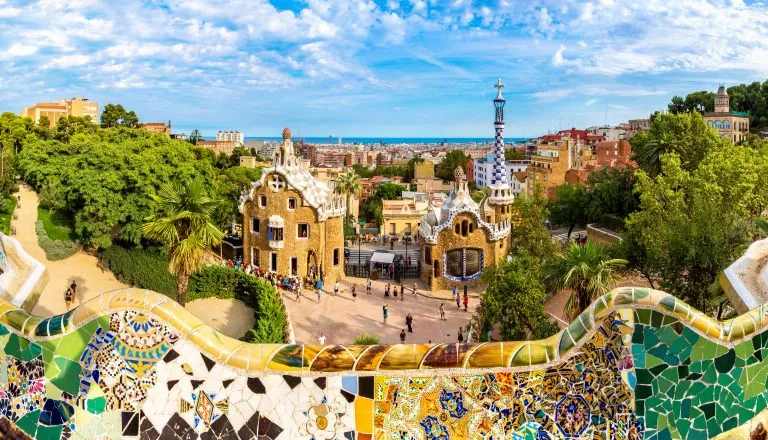
The Ultimate 10 Days in Spain Itinerary (+ Travel Tips)
If you’re planning your first trip to Spain and are hoping to sample a variety of what makes this sun-drenched country special, we designed this 10 day Spain itinerary for you!
Spain has had a special place in our hearts ever since we landed in Madrid for the first time when kicking off our supposed “6-month” round-the-world trip (that was almost 7 years ago, and that trip arguably never ended).
In the years since, we have been lucky enough to visit Spain so many times that we’ve lost count, exploring countless cathedrals, castles, alcabazas , beaches, and cities along the way.
We’ve explored the country via train, car, bus, and ferry, sampling iconic attractions and little-known villages alike, traveling both alone and with various groups of family and friends.
This itinerary for Spain in 10 days has been curated for first-time travelers based on our lived experiences in Spain, and we hope that you walk away loving this beautiful country as much as we do!
Here’s how to fall in love with Spain in 10 days.
Table of Contents
How We Structured This 10 Day Spain Itinerary
Getting around during your 10 days in spain, the ultimate 10 days in spain itinerary, the best time of year to enjoy this itinerary for spain, more than 10 days in spain, what to pack for your trip to spain, your 10 day spain itinerary map.

Some links in this post may be affiliate links. If you make a purchase through one of these links, we may earn a small commission at no extra cost to you. Please see our disclosure policy for more detail.
We structured this 10 day Spain itinerary to cover many of the country’s most popular destinations in a “U” shape, beginning in Madrid and ending in Barcelona.
In addition to the ever-popular Madrid and Barcelona, this itinerary also loops through Toledo, Seville, Granada, and Cordoba in a quest to sample a variety of what makes traveling in Spain special.
With the help of the high-speed train between Madrid and Barcelona , you can easily enjoy this trip by either flying round-trip to and from Madrid, or booking an open-jaw ticket where you fly into Madrid and leave from Barcelona.
And, while we opted to start this itinerary for Spain in the capital, you can easily reverse it and start in Barcelona instead, if the flights work out better that way!

Since this 10 days in Spain itinerary is focused on cities, there’s no need to rent a car or drive on this route!
The simplest (and most fun) way to travel between each destination on this itinerary is via train.
For most places, you’ll have the choice of a high-speed train (more expensive but much faster), or a slower regional train.
We recommend comparing train schedules and prices via Omio , the service we use to book many trains around Europe.
Spain’s high-speed AVE trains, like many high-speed trains around Europe, use dynamic pricing–in other words, you should lock down your fares as soon as you can commit to dates!
Once you’re in a given destination, each city is walkable (with the help of public transportation and/or cab rides in certain places).
Shop train tickets for your trip to Spain today!
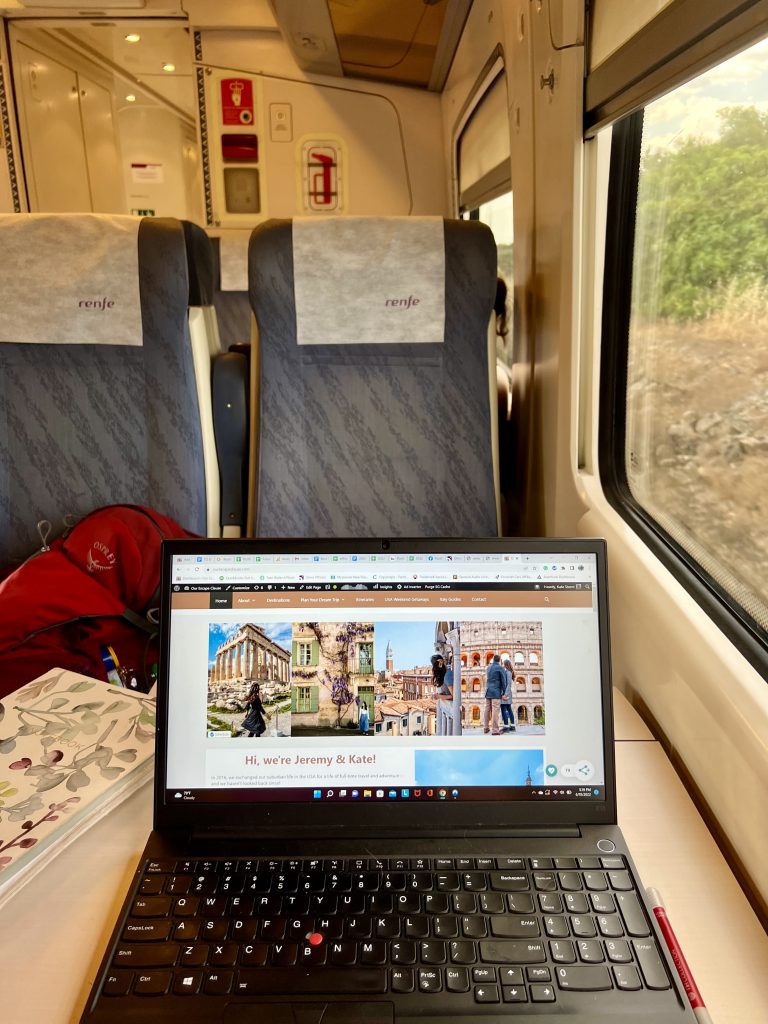
Day 1: Arrive in Madrid and start sightseeing.
There’s nowhere better to kick off your 10 days in Spain that in the vibrant capital city of Madrid!
Often underestimated compared to popular Barcelona, Madrid is beautiful, endlessly interesting, and pulsates with life from every corner.
It’s one of our favorite cities in Europe to fantasize about living in, and who knows–one day we might just make it happen.
On your first day in the city, tour the (gigantic, opulent) Royal Palace , check out the cathedral, meander through Plaza Mayor, and stop by the Templo de Debod.
And, of course, your first day in Spain can’t be complete without tapas!
Head to Mercado San Miguel for endless options, or opt for this popular tapas tour to learn the ins and outs of this tradition (knowledge that will be very useful for the rest of your time in Spain).
Book your Madrid tapas tour today!
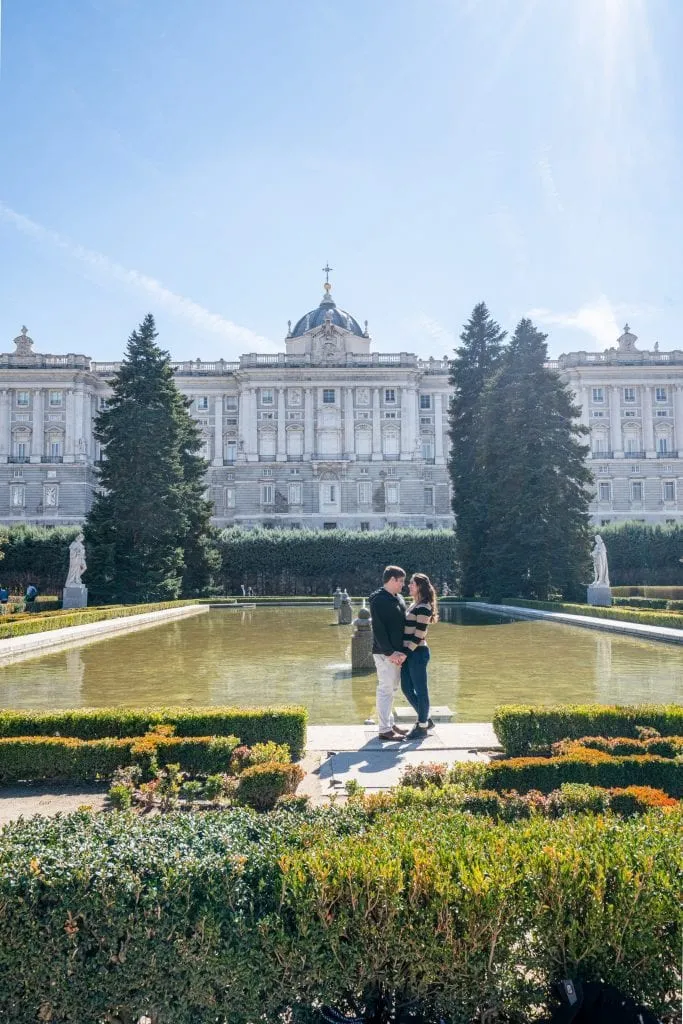
Where to Stay in Madrid
Hostal Adis — Located just off Puerta del Sol and boasting excellent reviews, you couldn’t ask for a better location in Madrid–and at a budget price, too!
Hostal Adis is an excellent property for budget travelers looking for an excellent location and plenty of privacy–rather than being a traditional hostel, Hostal Adis is more like a budget hotel.
Check rates & book your stay at Hostal Adis today!
Hotel Regina — Featuring plush beds, spacious rooms, excellent customer service, and a perfect location near Puerta del Sol, mid-range travelers can’t go wrong with a stay at the popular Hotel Regina.
If you’re feeling like a bit of a splurge, upgrade to a room with a panoramic view for an experience you won’t forget anytime soon!
Check rates & book your stay at Hotel Regina today!
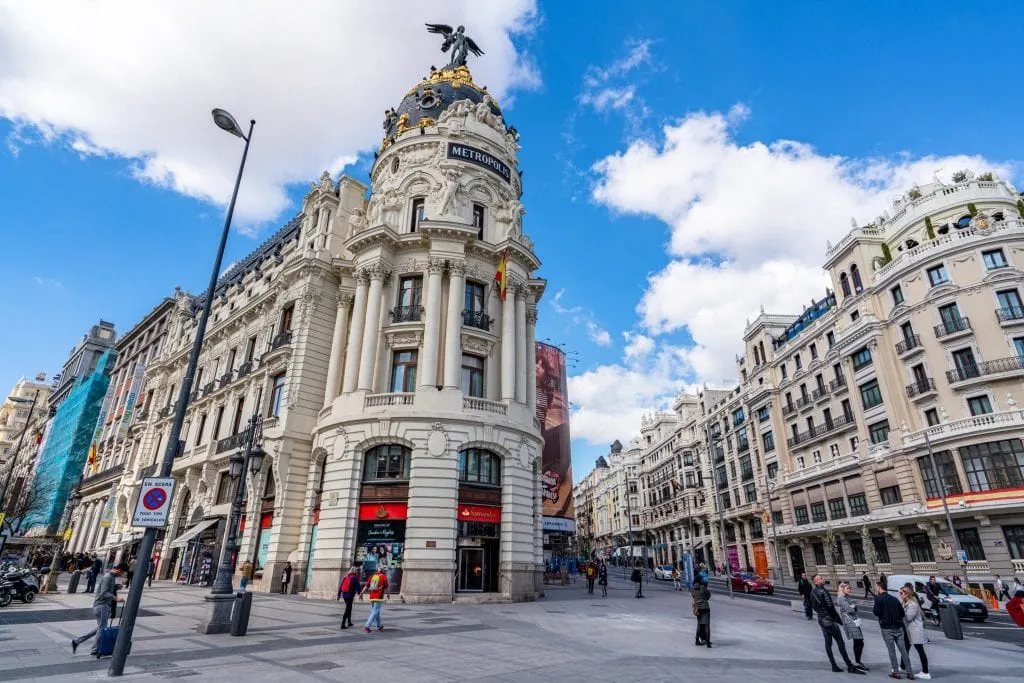
Catalonia Las Cortes — Simultaneously sleek and cozy, modern and traditional, Catalonia Las Cortes is housed in an 18-century building in the heart of Madrid and has blended together all the best of classic atmosphere and modern convenience.
We’ve stayed at a few Catalonia hotels over the years and have always been impressed.
An excellent location near Puerta del Sol, rave reviews and beautiful rooms make Catalonia Las Cortes the perfect luxury hotel choice for those looking for a blend of traditional and modern during their 3 days in Madrid!
Check rates & book your stay at Catalonia Las Cortes today!
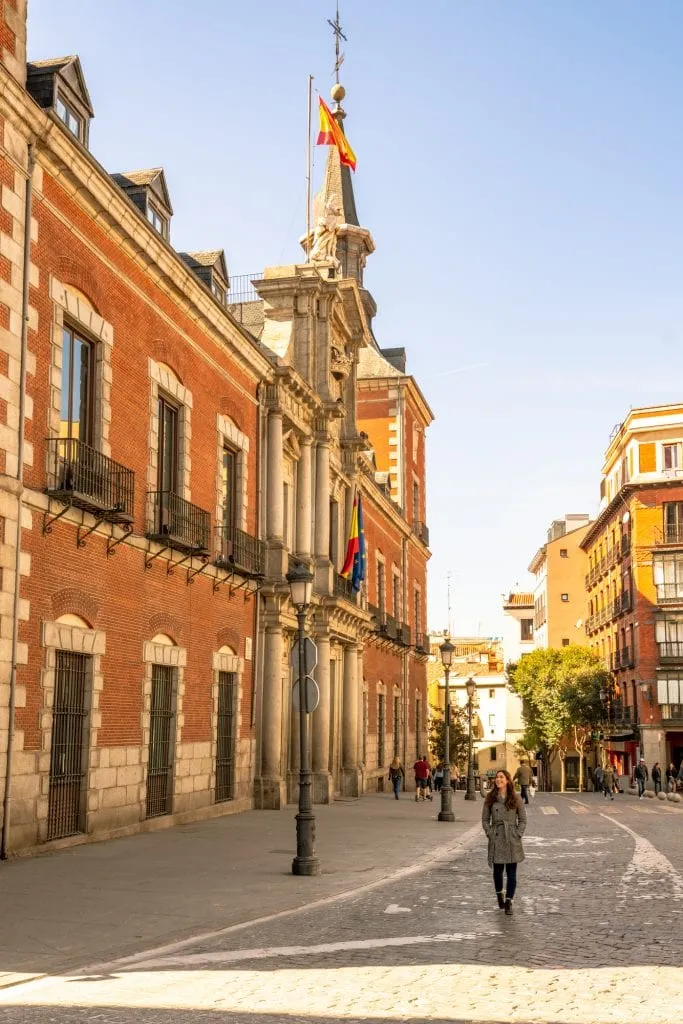
Day 2: Enjoy a second day in Madrid.
The second day of this itinerary for Spain opens with one of the most memorable art museums in the country: Spain’s National Art Museum, the Prado.
Packed with masterpieces (primarily Spanish, but also from across Europe), the Prado is one of those museums that we never get tired of.
Skip-the-line tickets are a great idea here, but for the most context (and efficient sightseeing), consider taking a tour in order to make sure you see the best of Velázquez, Goya, El Greco, and beyond!
Book tickets to visit the Prado today!
Once you’re ready to move on, head to the delightful Retiro Park.
With gardens to explore, rowboats to rent, statues to admire, lawns to lounge on, and even the Palacio de Cristal to enjoy, Retiro Park is a wonderful place to relax.
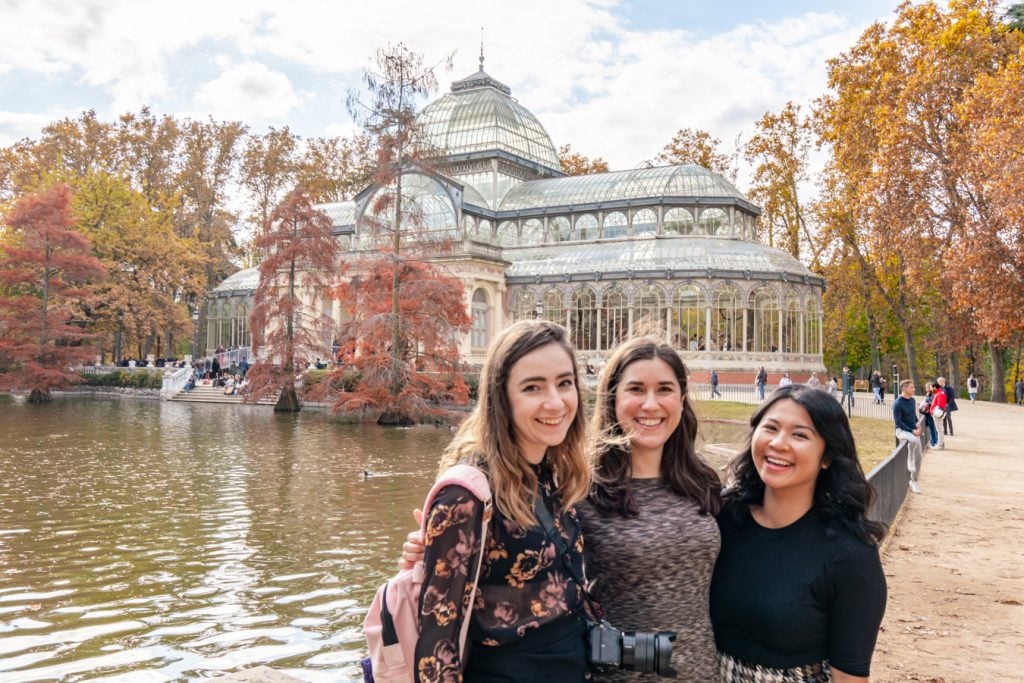
Eventually, make your way to the exit by the Puerta de Alcalá and head up Gran Vía to check out some of Madrid’s most famous architecture!
This shopping street is where you’ll find the iconic Metropolis Building (the rooftop bar and restaurant on top of the Círculo de Bellas Artes has an amazing view of it!), as well as the Cybele Palace.
Branch off to explore the Puerta del Sol and lively La Latina neighborhood in the afternoon and evening!
Don’t wrap up your last (full) day in Madrid without at least one round of churros con chocolate at Chocolatería San Ginés , either.

Day 3: Take a day trip to Toledo.
Today, it’s time to leave the capital behind and take a day trip to the beautiful medieval city of Toledo.
Set about 35 minutes away from Madrid by high-speed train (or about an hour by bus or car), beautiful Toledo is easily one of the best day trips from Madrid.
Surrounded on 3 sides by the Tagus River, Toledo is as charming to look at as it is historically relevant.
The city once briefly served as the capital of Spain, and was even an independent kingdom at one point!
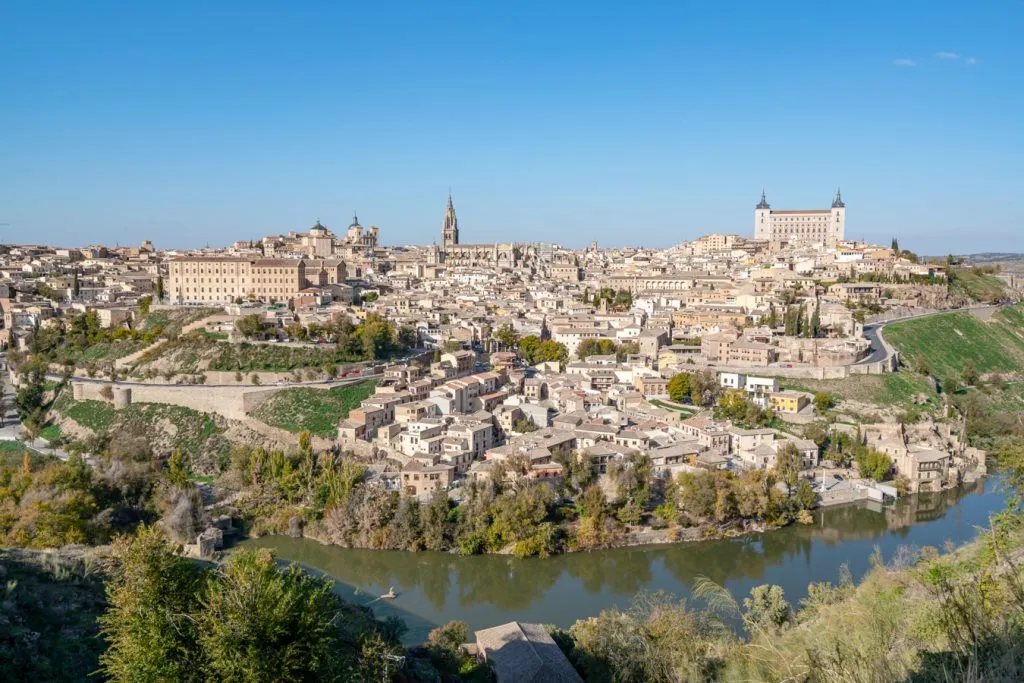
Some of the best things to do in Toledo include visiting the magnificent Toledo Cathedral, touring the Alcázar, stepping inside the Monastery of San Juan de Los Reyes, and meandering through the city’s charming streets.
Don’t miss the viewpoints of the town from across the river, either!
You can easily take the high-speed train to Toledo yourself for the day, but if you prefer the context of a tour (and/or want the easiest access to the viewpoints from across the river), this popular day trip is also an excellent option.
Book your day trip to Toledo today!

Day 4: Head south to Seville.
Sunshine, sour orange trees, flamenco, and some of the most fascinating architecture in Europe await in the next part of this Spain itinerary: welcome to Andalucia.
This is one of our favorite regions in Spain, and it always seems to keep drawing us back.
A roughly 2.5-hour high-speed train journey will deliver you from Madrid to Seville, the capital of the Andalucia region and an excellent jumping-off point for your explorations.
We recommend taking an early train down from Madrid, dropping off your luggage at your hotel (most are happy to hold it until check-in for you), and starting your sightseeing.
Today, be sure to check out the stunning Seville Cathedral , climb to the top of the Giralda (bell tower) for beautiful views of the city, wander through the famous Plaza de Espana, and explore the delightful neighborhood of Barrio Santa Cruz.
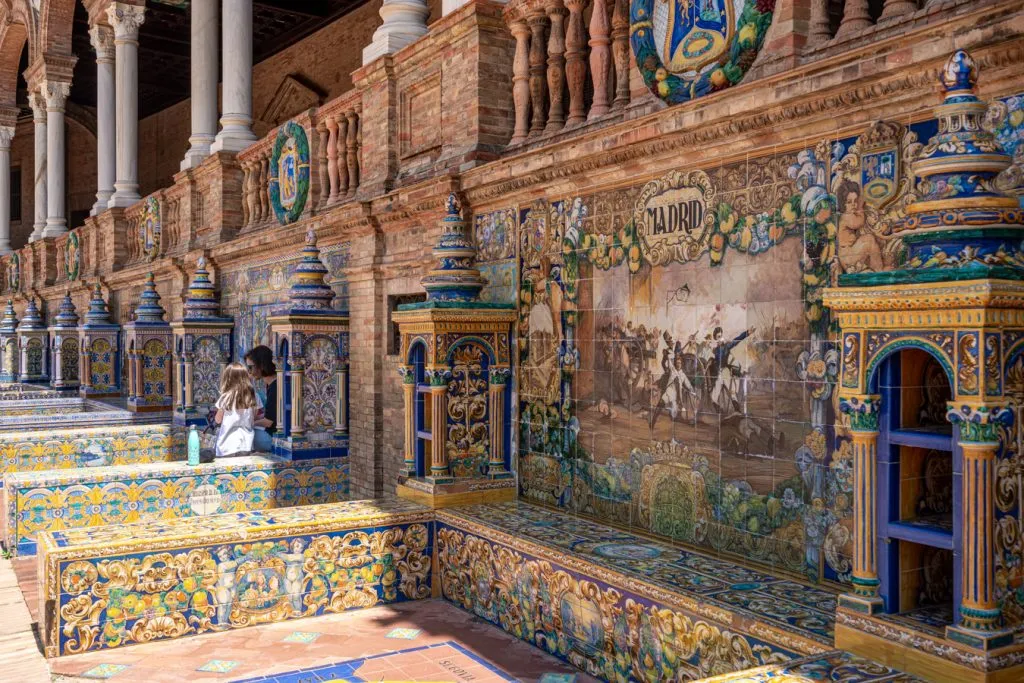
The Royal Alcazar of Seville is stunning, and also one of the best attractions in town–but we’d only recommend visiting today if you’re a really big architecture fan.
As amazing as the Alcazar is (and it is, truly), it’s somewhat overshadowed by the Alhambra, which you’ll see in another couple of days when following this 10 day Spain itinerary.
On the other hand, if you’re interested in adding a flamenco show to your Spain itinerary, Seville is the place to do it.
Andalucia is widely considered the birthplace of flamenco (though the specific origins are debated), and a flamenco show like this is a wonderful way to close out your evening.
Book your flamenco show in Seville today!
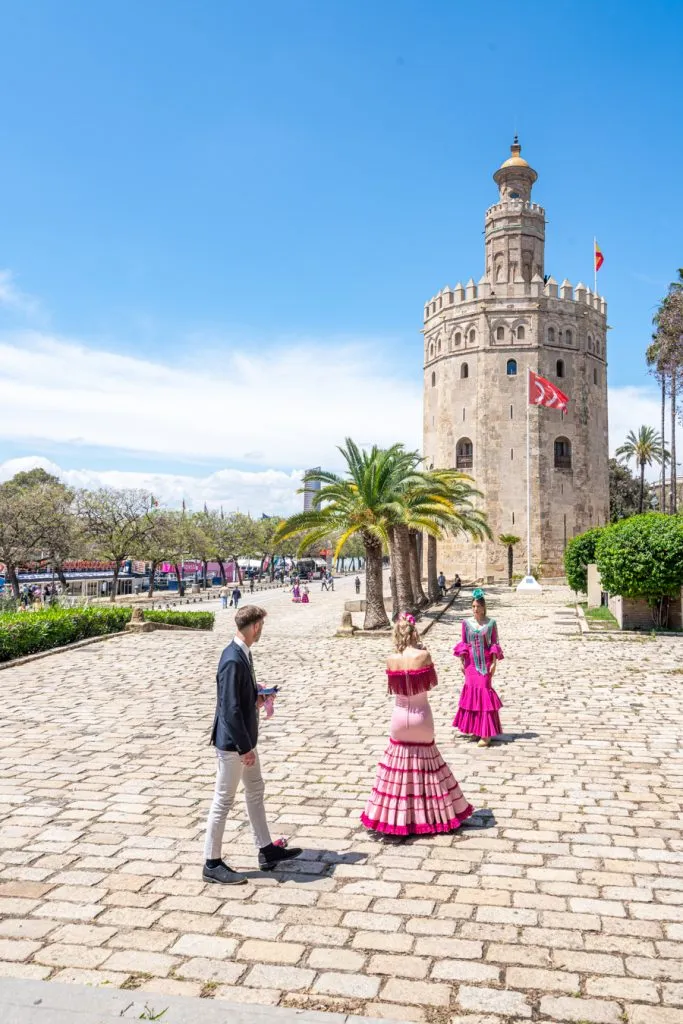
Where to Stay in Seville
When deciding where to stay in Seville, location is key as ideally, you’ll want to stay within walking distance of Seville’s best attractions.
We had a fantastic experience at Petit Palace Puerta de Triana on our most recent trip to Seville.
The hotel has a fantastic location (central but also quiet–a far-from-guaranteed combination in Spain), a delicious breakfast, and comfortable rooms.
Looking for something a bit different?
The incredibly popular Hotel Rey Alfonso X is an excellent choice, and its rooftop views are sublime!
If you’d like to stick to more of a budget, Hotel America Sevilla gets wonderful reviews and doesn’t sacrifice too much in terms of location.
Meanwhile, for the height of luxury, you can’t beat the absolutely stunning Hotel Alfonso XIII !
Check rates & book your stay in Seville today!
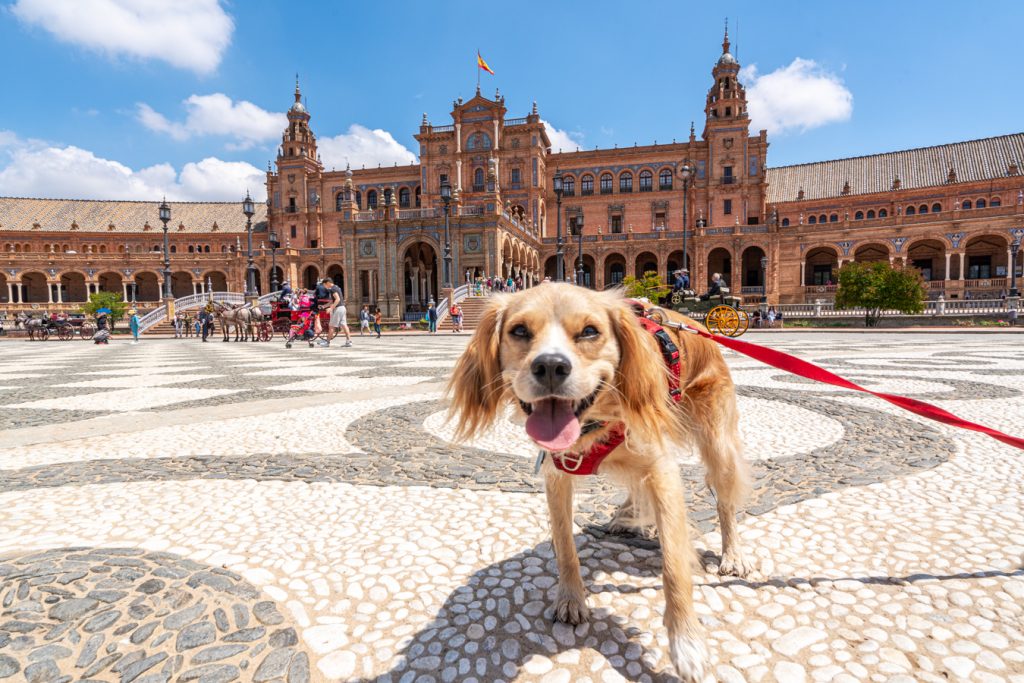
Day 5: Take a half-day trip to Cordoba.
Less than an hour from Seville by train or car, you’ll find the captivating Andalucian city of Cordoba–which happens to be one of our favorite places in the region!
Once the most powerful city in Islamic Spain, the Cordoba of today is small and manageable, a bite-size tourism destination that nonetheless leaves a big impact on visitors.
Cordoba is most famous for its incredible Mosque-Cathedral –literally a former mosque with a cathedral built into its center–which is one of the most memorable buildings we’ve had a chance to visit anywhere.
The Mosque-Cathedral should absolutely be your top priority when visiting Cordoba, but beyond that, there’s still plenty to see within a short walk!
Snapping photos of the picturesque Calleja de las Flores, relaxing in the Patio de los Naranjos, wandering through the Jewish Quarter, and checking out some of the beautiful patios of Cordoba should also be on your to-do list.
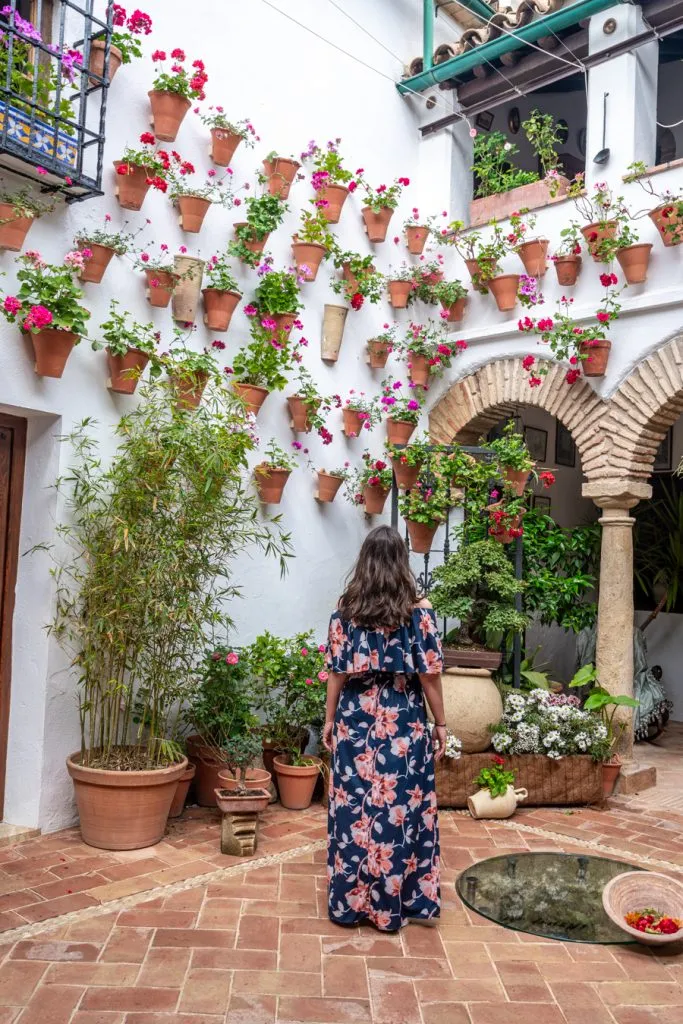
After seeing the best of Cordoba, you have two options for the rest of your day: first, you could enjoy another evening in Seville.
Or, if you’d rather make today particularly busy in favor of having more time for sightseeing tomorrow, you could head onto Granada.
Granada, home to the Alhambra, is about 3 hours from Seville by train or car and is your destination for tomorrow.
You could opt to continue sleeping in Seville and take a long day trip there on day 6, or, if you’re open to packing and unpacking an extra time, you could sleep in Granada starting tonight to give yourself more time in the city.
Personally, we love Granada and would recommend spending extra time there, but both options are compatible with this Spain itinerary.

Where to Stay in Granada
When spending a few days in Granada, we opted to rent an apartment from Mosaiko Homes and could not have had a better experience: the owner was responsive, the apartment fantastic, and the location unbeatable!
Mosaiko Homes is located on a quiet street a short walk from many of Granada’s top sights, offering the combination of a convenient location and a lack of noise at night–two things that can be difficult to find together in Andalucia!
Another excellent option with near-perfect reviews is the incredibly unique Casa de Reyes (that decor!).
For a bit of luxury, the popular Shine Albayzin is not only housed in a 16th-century palace, it overlooks the Alhambra .
Generally speaking, lodging in Granada is much more affordable than in, say, Barcelona or even Seville.
If you’re going to splurge on a luxury property during your 10 days in Spain, Granada is a fantastic place to do so!
Check rates & book your stay in Granada!
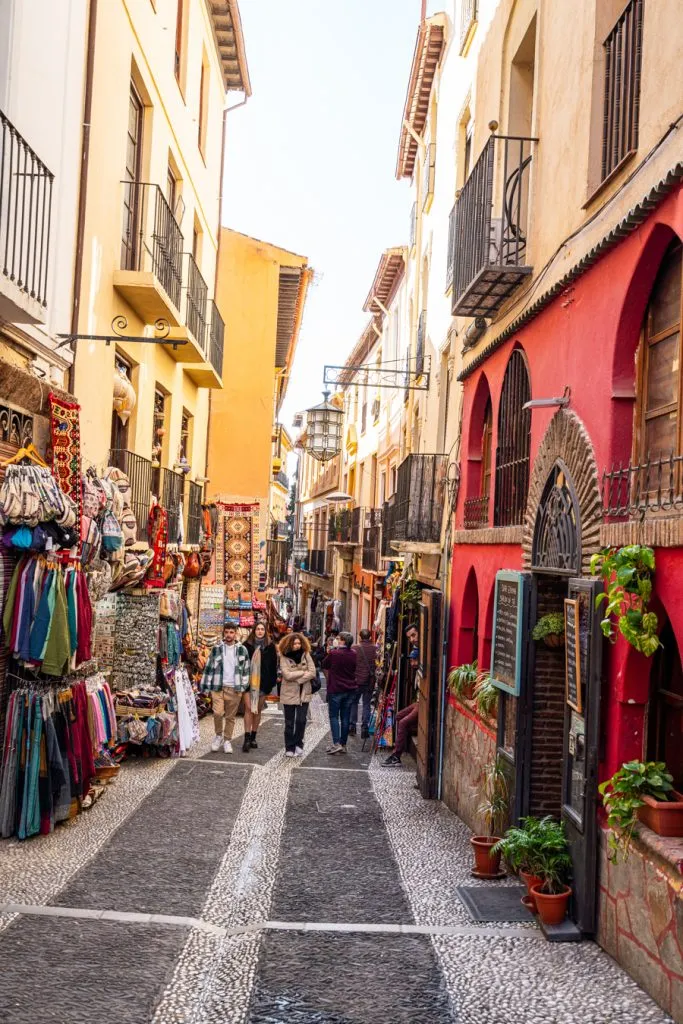
Day 6: Explore Granada and tour the Alhambra.
Whether you’re visiting on a day trip from Seville or spending the whole day in Granada (we recommend the second, but the first is doable too), there is one major item on the agenda today: the Alhambra.
This collection of centuries-old palaces (plus a fort, gardens, ruins of a medina, and more), is one of the most unique groupings of architecture in Europe, and the most-visited tourist attraction in Spain!
We wrote about visiting the Alhambra extensively here , so I’ll try to keep this (kind of) brief, but the long and the short of it is that this is a place you need to plan ahead for.
Tickets often sell out, and a tour is a great idea here if you like historical context ( we enjoyed this one ).
If you’re visiting from Seville, we recommend booking a day trip , because 3 hours of transit each way plus navigating to and from the complex is a headache in a short time frame (we rarely suggest taking day trips this long, but the Alhambra is worth it).

However you decide to visit, make sure that you book a ticket or tour that includes the Nasrid Palaces!
These magnificent palaces, the final stronghold of Islamic Al-Andalus before the Reconquista was officially completed by the Catholics in 1492, are the jewel of the Alhambra and an absolute must-visit.
Not all tours and tickets include them, though, so book yours carefully .
Once you wrap up at the Alhambra, if you’re staying in Granada, be sure to wander through the Albayzin neighborhood, admire the views of the Alhambra from a distance at the beautiful Mirador de San Nicolas, and visit the beautiful Granada Cathedral.
Granada is also a fantastic place to enjoy Spain’s tapas culture, so be sure to indulge in some snacks along with a tinto verano .
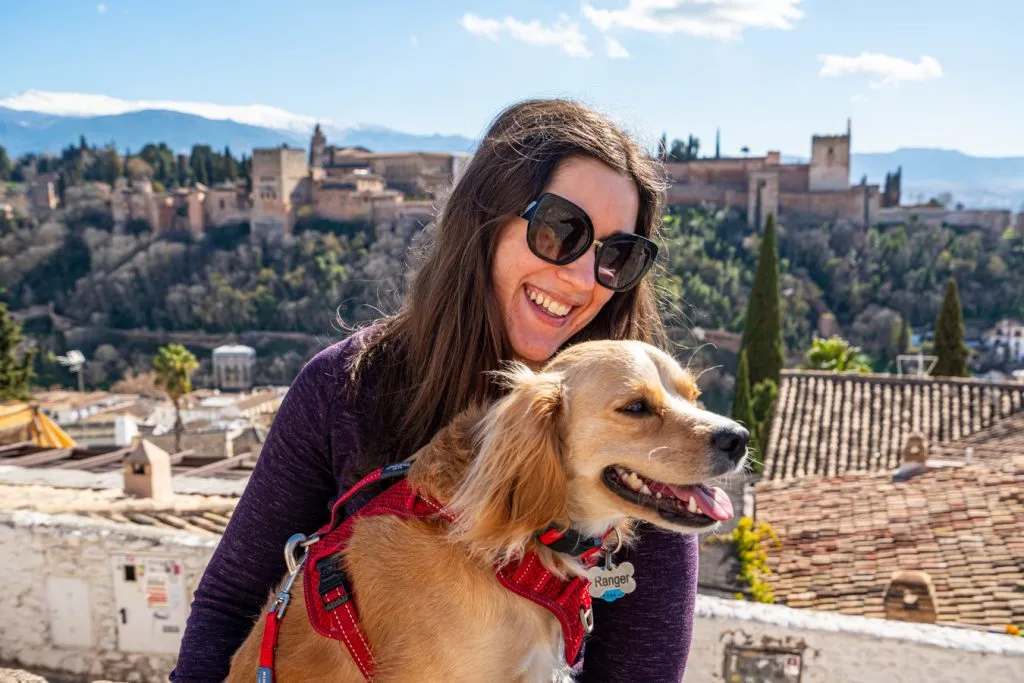
Day 7: Head north to Barcelona.
Today, say goodbye to Andalucia and head north to Barcelona!
This is the longest travel day included on this 10 days in Spain itinerary, and you can expect to spend 6+ hours on a train from Granada to Barcelona.
We recommend booking this trip at least a few weeks in advance, as you’ll want a choice of schedules and to get the best price possible.
If you’re on a budget, you can price out flights too, but traveling by train is much more fun!
Once you arrive in Barcelona, you can check into your hotel, get unpacked, and start exploring.
Meander through the Gothic Quarter, check out the Barcelona Cathedral, sample the Santa Caterina Market, stroll down Las Ramblas, and soak up the beauty of Plaça Reial.
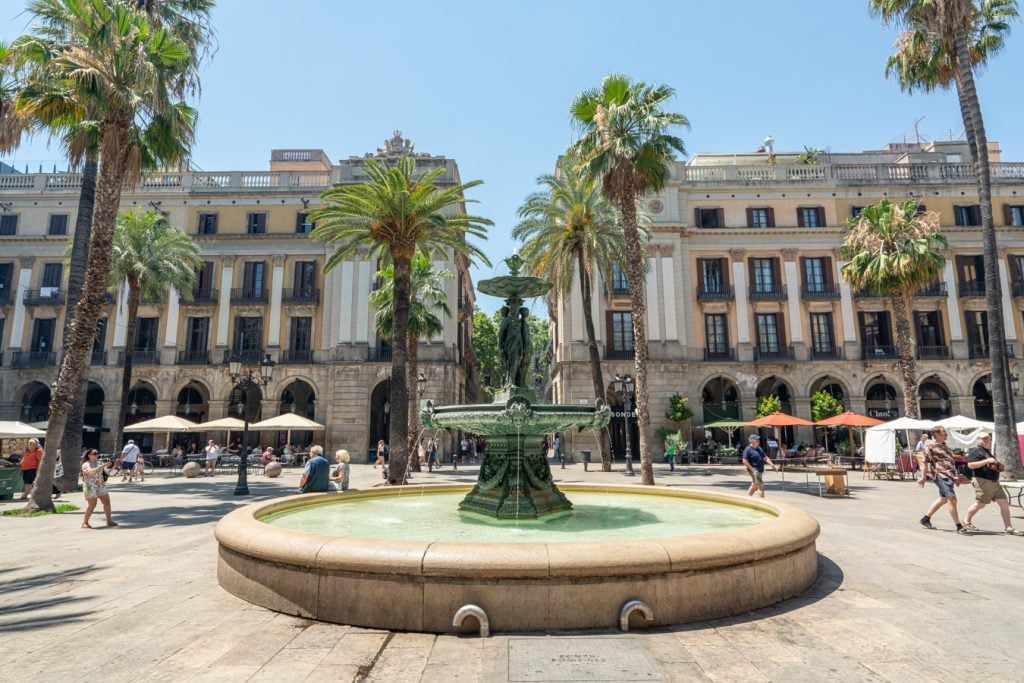
Where to Stay in Barcelona
When deciding where to stay in Barcelona, it’s important to keep in mind that this sprawling city requires some effort to move around–there’s no way to stay near all the best things to see in Barcelona, but it’s best to stay by some of them!
We checked into Citadines Ramblas Barcelona and were extremely satisfied–to the point that we may just keep going back on additional trips.
Our room was spacious, complete with a kitchenette, and extremely quiet despite the hotel being located in a prime spot right along Las Ramblas.
The view of the Barcelona Cathedral from the rooftop deck of the Colón Hotel Barcelona is pretty incredible too, though, and we have it bookmarked for a possible future trip.
If you’re traveling on a bit more of a budget, Hotel Nouvel also gets excellent reviews and is in a wonderful location.
Check rates & book your stay in Barcelona today!
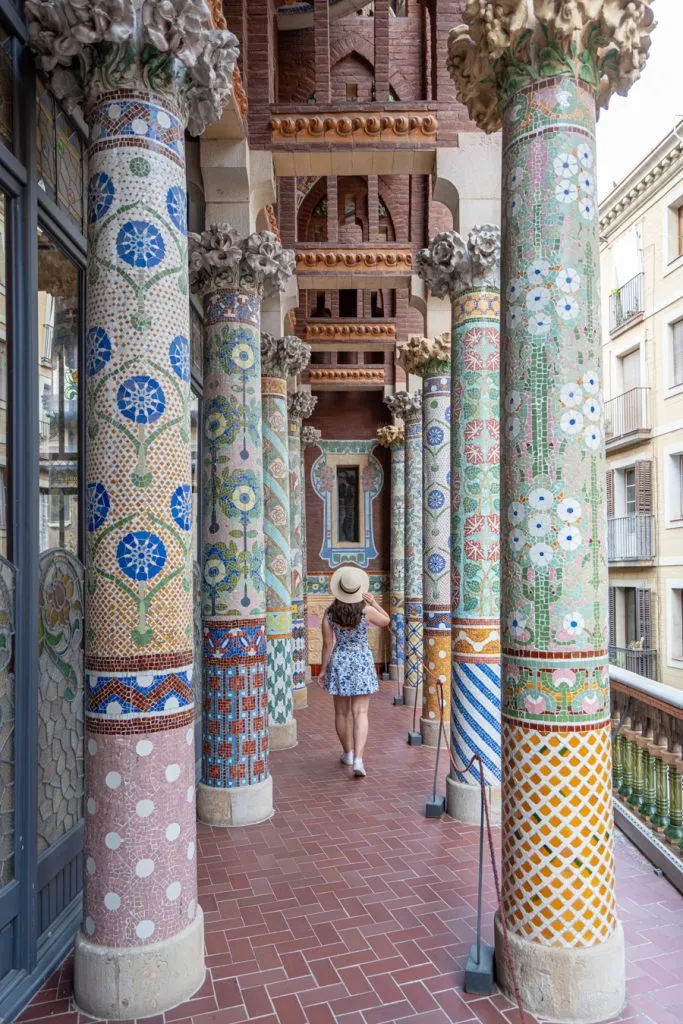
Day 8: Explore Barcelona’s unique architecture.
On your first full day in Barcelona, start with a visit to either Casa Milà or Casa Batlló , two of the most famous homes designed by Gaudi!
They’re fairly close together, but with only a couple of days left in Spain, we recommend only going inside one and seeing the other from the outside.
You’ll also want to get an early start–personally, we recommend pre-booking tickets for Casa Batlló when it opens).
From there, explore any nooks and crannies of the Gothic Quarter you didn’t get to see yesterday, including Catalunya Plaza and Mercado de la Boqueria.

If you’re excited about all of Barcelona’s Catalan modernism architecture, we can also heartily recommend a visit to Palau de la Música Catalana .
Though not designed by Gaudi, it’s an amazing (and compared to much of Barcelona, uncrowded) example of the style and a memorable place to visit!
Barcelona’s Arc de Triomf is also only a 10-minute walk away.
From there, you’ll be about a 25-minute walk from Barcelona’s beaches and bustling coastline.
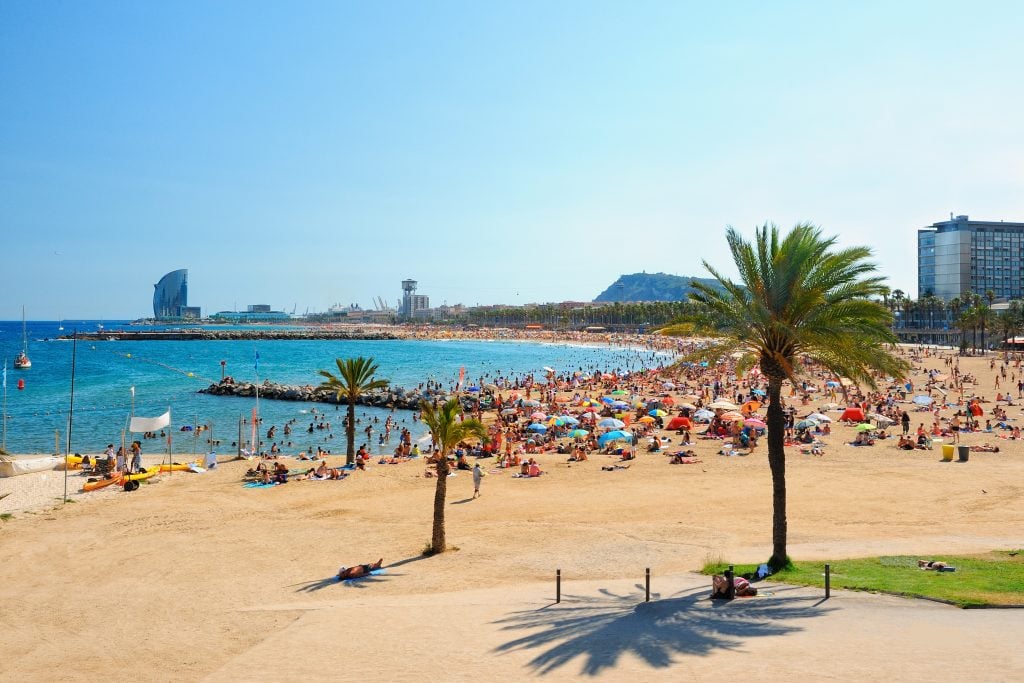
Day 9: Dive deeper into Barcelona (and possibly take a day trip).
With its long list of incredible attractions, it would be very easy to spend the penultimate day of your Spain vacation exploring the city in-depth–but another option would be to add on a trip to the monastery of Monserrat.
This mountain retreat away from the city is known for its incredible views, and a half-day trip there is a wonderful way to get a taste of Catalonia beyond Barcelona itself.
However, staying in the city also has its charms: the views from Park Güell and/or Tibidabo, the incredible Picasso Museum (which holds over 4,000 of the artist’s works), and a visit to Camp Nou are possible additions to your list.
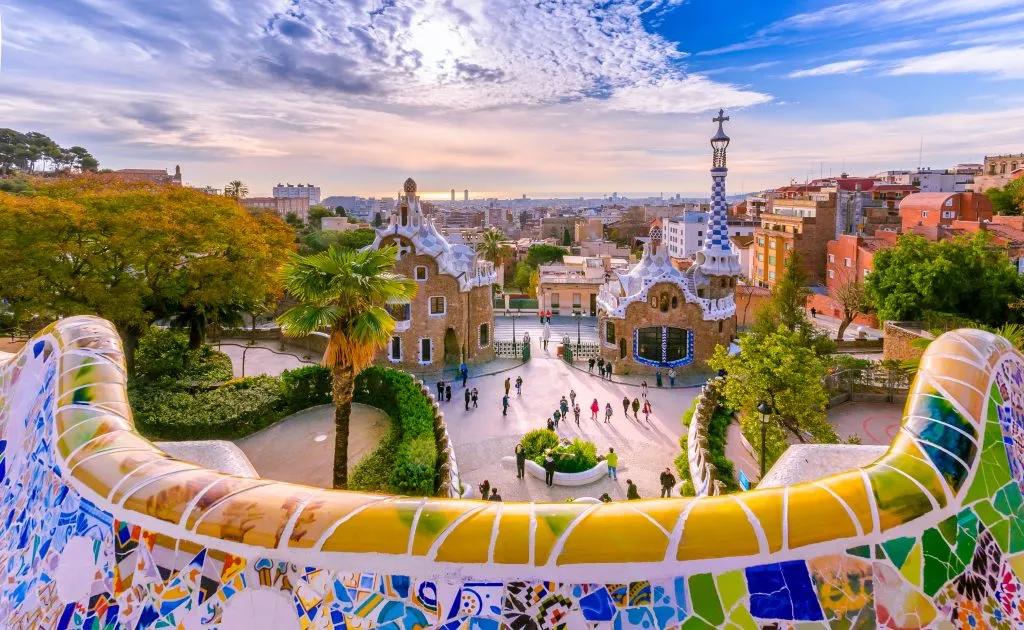
And, of course, we can’t forget the Sagrada Familia : Gaudi’s unfinished masterpiece of a cathedral is an absolute must-see when visiting Barcelona!
We visited in the early evening after hearing that the interior’s light was at its best then, and we were not disappointed–the colors were phenomenal.
If you wrap up at the Sagrada Familia before sunset and would like to enjoy the Mediterranean while in Barcelona, consider wrapping up your evening with a sunset catamaran cruise .
Book skip-the-line tickets to visit the Sagrada Familia today!

Day 10: (Maybe) head back to Madrid and say goodbye to Spain.
How the final day of this itinerary for Spain works for you depends on one factor: whether you’re flying home from Madrid or Barcelona.
If you’re taking an evening flight home from Madrid, you’ll need to take the high-speed train back to the capital (we highly recommend booking this in advance ).
If you’re leaving from Barcelona, you may have time for one more round of pan con tomate enjoyed while admiring the bustling of the city before you catch your flight!
However you close out your 10 days in Spain, we hope you say goodbye already dreaming of your trip back.
Shop train tickets from Barcelona to Madrid today!
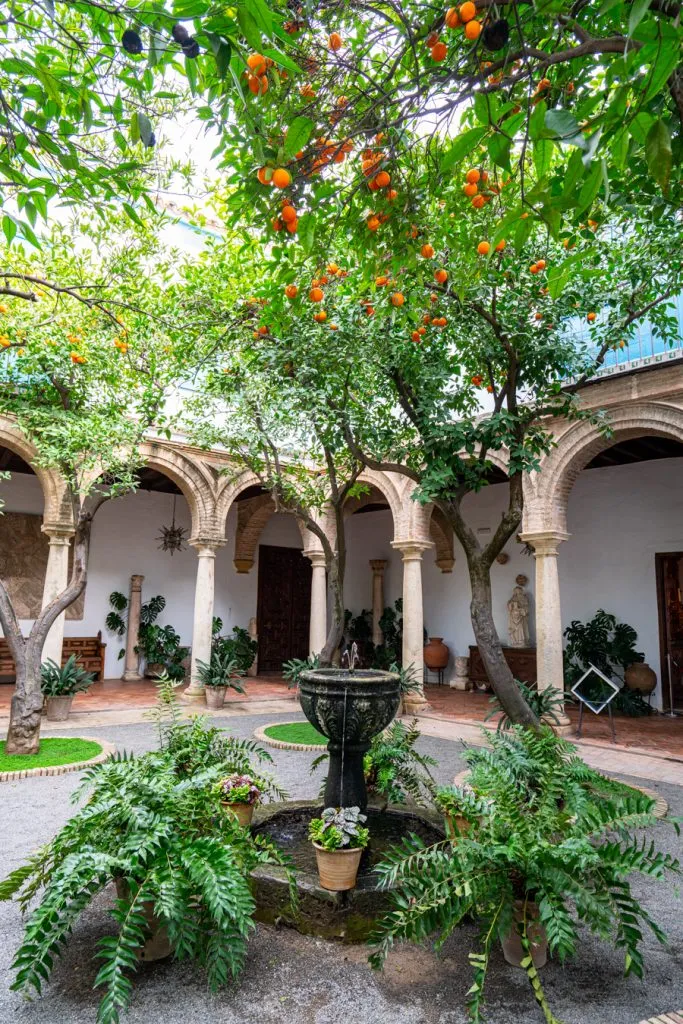
Spain is the definition of a year-round destination, and that includes this Spain itinerary!
That being said, though, if you have flexible dates and are trying to pinpoint the ideal time to travel Spain, we recommend enjoying this itinerary in the spring or fall.
Summer in Spain, especially in Andalucia, can be brutally hot (we shudder to think of visiting the Alhambra at noon in July).
Winter is perfectly doable, but the weather can be rainy and less predictable than in spring or summer.
On the plus side for winter, though, you’ll experience few crowds, low prices, and still have a decent chance at soaking up some Spanish sun, albeit with a jacket at hand.
The sweet spot for this 10 day Spain itinerary, though, which travels a decent chunk of the country and therefore needs to take multiple climates into account, is the spring and fall.
We have visited Spain in every season, and while each trip was a delight, we have a special place in our hearts for our spring and fall visits!
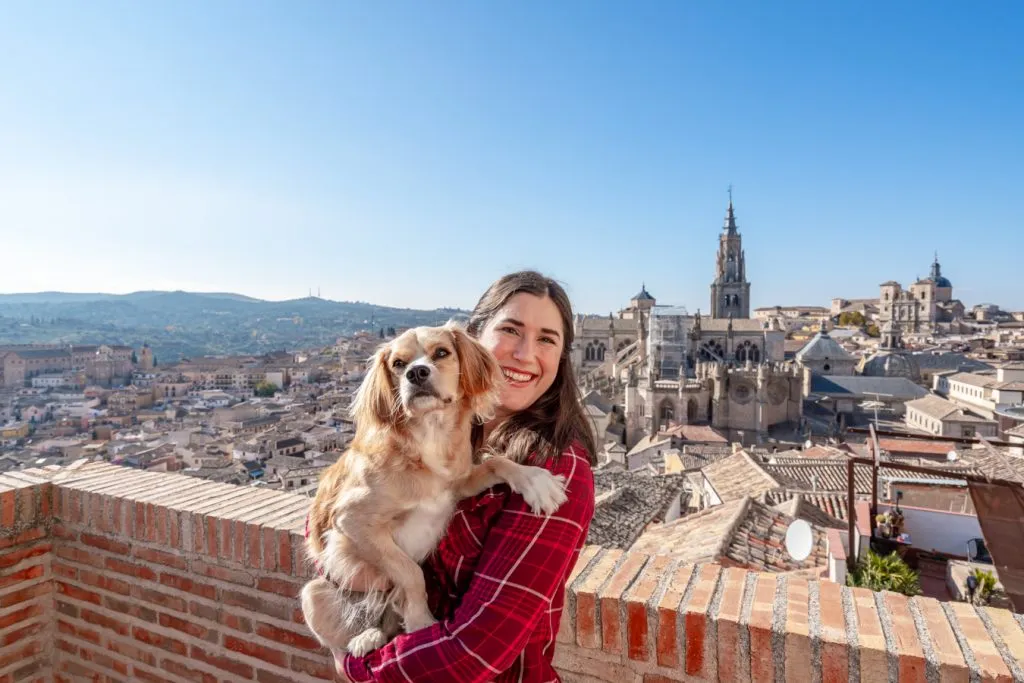
Lucky enough to have longer than 10 days in Spain? If so, congratulations!
Our first recommendation with a couple of extra days to add to your Spain itinerary is to slow down: every destination covered in this travel guide could easily use another day or two at least.
While it’s doable to travel Spain at a breakneck pace for a week and a half, the longer you’re there, the slower you’ll want to travel.
Alternatively, if you want to keep the speed going, you could add on another day trip: visit Girona from Barcelona, Segovia from Madrid, or Ronda from Seville, for example.
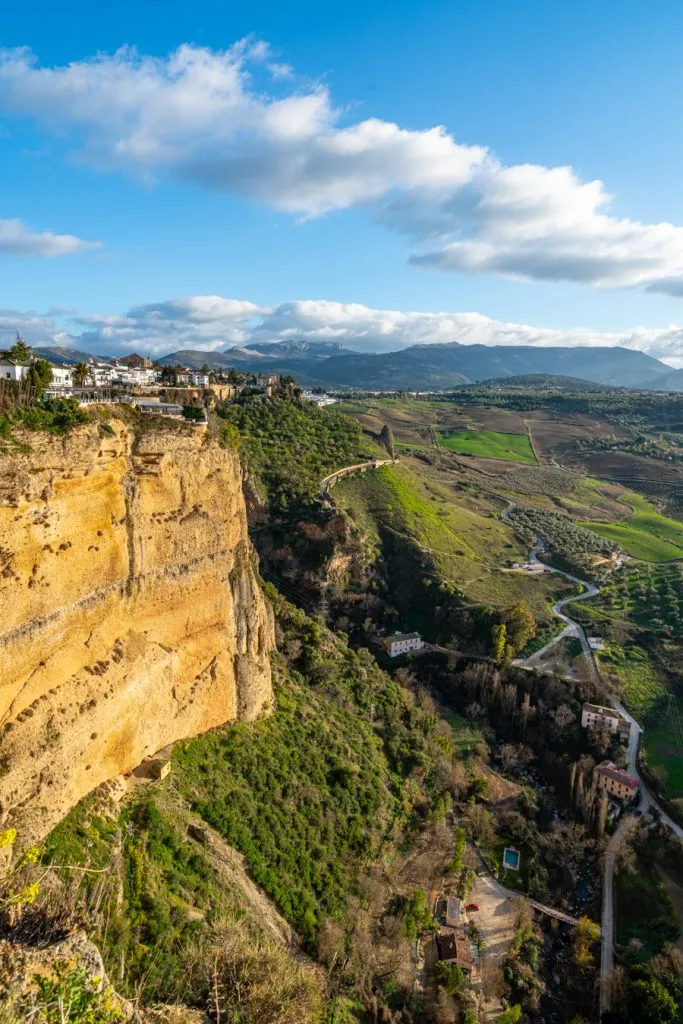
If you have closer to 2 weeks in Spain, consider adding Basque country to your itinerary!
San Sebastián, Bilbao, Vitoria-Gasteiz, and beyond makes for a wonderful extension to round out a couple of weeks in Spain.
Alternatively, you could opt to extend the Andalucia portion of your trip to include a couple of days on the Costa del Sol.
With near-limitless ways to enjoy a Spain vacation, it’s safe to say that wherever you head, you’re bound to have a wonderful trip.
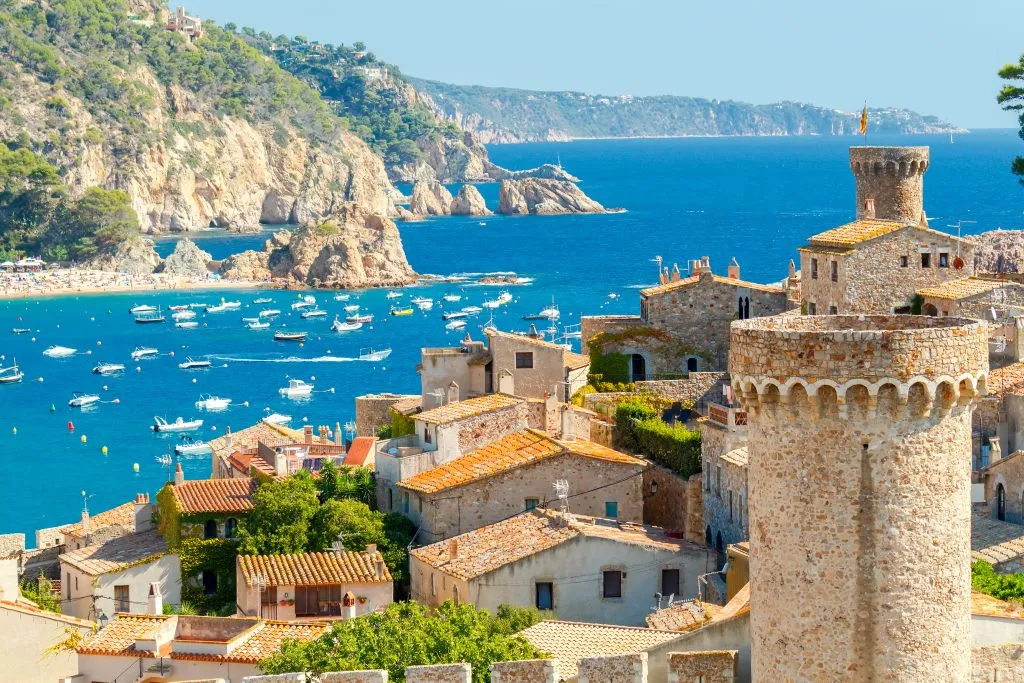
Our detailed packing lists for Europe in summer , fall , and winter cover just about everything you’ll need to bring on your 10 day Spain vacation!
To get you started on your list, though, here are a few essentials to add to your packing list:
Travel Adaptors for Spain — If you’re coming from outside of mainland Europe, you’ll definitely need adaptors for your electronics.
Camera — We completely adore our Sony a7R III , but whatever camera you’re comfortable with works–just make sure you have something with you to preserve your memories!

Comfortable Day Bag — We currently use Pacsafe’s sleek anti-theft backpack and love it, but if you don’t want to shell out the cash for this trip, that’s totally understandable.
Just aim for something comfortable to wear, not flashy, and medium-sized–we used a Northface Jester backpack for years and loved it as well.
Sunglasses — They’re not kidding about the Spanish sun! I find myself reaching for sunglasses regularly even when visiting Spain in winter.
Portable USB Charger — Don’t stress about your phone dying while you’re sightseeing in Spain: bring a USB charger along for the ride.
Take This Map With You! Click each highlight to pull up the name of the destination. To save this map to “Your Places” on Google Maps, click the star to the right of the title. You’ll then be able to find it under the Maps tab of your Google Maps account! To open the map in a new window, click the button on the top right of the map.
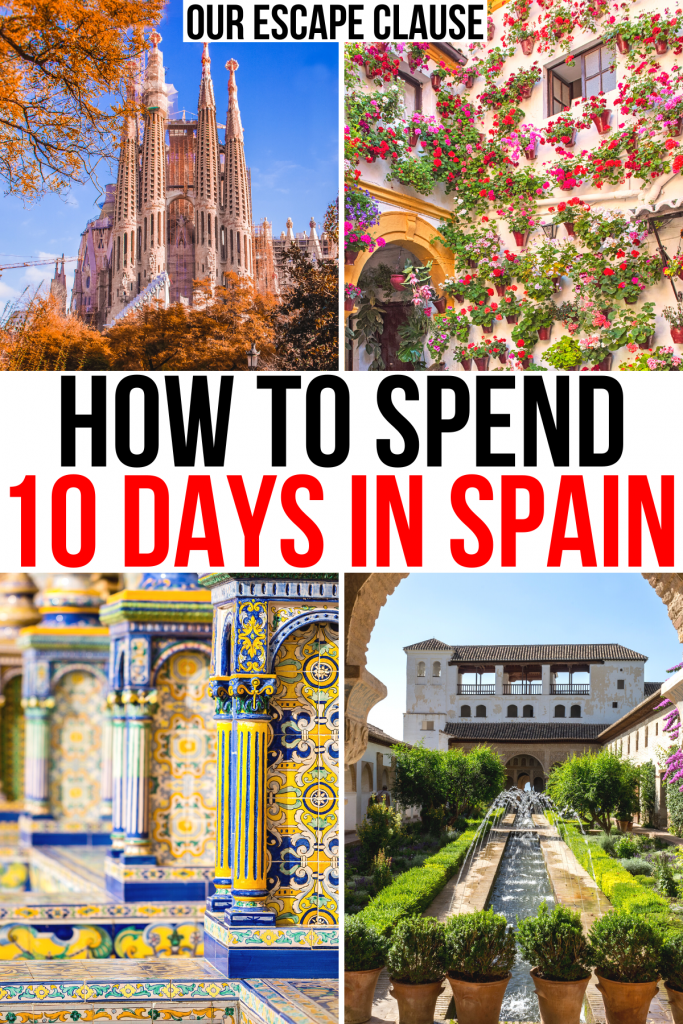
About Kate Storm

In May 2016, I left my suburban life in the USA and became a full-time traveler. Since then, I have visited 50+ countries on 5 continents and lived in Portugal, developing a special love of traveling in Europe (especially Italy) along the way. Today, along with my husband Jeremy and dog Ranger, I’m working toward my eventual goal of splitting my life between Europe and the USA.
66 thoughts on “The Ultimate 10 Days in Spain Itinerary (+ Travel Tips)”
Great overview and suggestions, Kate!
Any suggestions you can offer for an afternoon of wine tasting along the journey?
Thanks, Rob!
We haven’t done a lot of dedicated wine tourism in Spain, though of course, the local wines are delicious. You’ll be near wine regions in each stop, though, so can easily opt for a half-day wine tasting outside the city somewhere.
Alternatively, every city has more excellent wine bars and wine shops than you can count!
Amazing!! Thank you so much for all of this!!
Kate quick question if I may bother you for a bit.
I went through everything you wrote and I calculate maybe about $5,000 would cover the hotel, train and eating expenses between cities for a family of three (My husband and I and our baby girl, toddler) This does not count the air flight ✈️ to Spain.
We were thinking of visiting ending of May or Beginning of June.
Does this sound about reasonable amount to take ??
$5000 (USD, I’m assuming) is very doable, especially if you’re conscious of your budget when booking hotels! I’d recommend booking your train tickets in advance too, as those can be pricier at the last minute.
Generally speaking, Barcelona will be the most expensive stop on this itinerary and Andalucia the most affordable.
Thank you so much!
Thank you so much for creating this! This is extremely helpful and I appreciate all your tips. I am going to Spain in the middle of Semana Santa, but flying into Barcelona and departing from Madrid. I would love to visit the cities you mentioned, but this is the current itinerary I have going. Do you think that this is doable?
DAY 1 – ARRIVAL IN BARCELONA DAY 2 – BARCELONA DAY 3 – BARCELONA Easter DAY 4 – Fly to GRANADA DAY 5 – GRANADA (Alhambra visit) DAY 6 – SEVILLE DAY 7 – SEVILLE (day trip to Cordoba) DAY 8 – SEVILLE DAY 9 – MADRID DAY 10 – MADRID DAY 11 – Fly home
Yes, that sounds like a very reasonable itinerary! You’ll have a great time.
I’d definitely have some food/snacks with you as you’re traveling on Easter Sunday, as you’ll no doubt run into lots of closures.
The week of Easter is also VERY busy in Spain (and in much of Europe), so expect higher-than-usual prices and crowds. I’d recommend booking your hotels ASAP and Alhambra visit ASAP!
I love your site and this itinerary for Spain. We’re spending about 12 days in Spain in early April (unfortunately also over Easter, like Chloe in the message above), and using your itinerary as our template, we want to add a day or two in Gibraltar & Tangier. Have you done this? Too ambitious to add to the itinerary? It would look something like this:
1 – Arrive in BARCELONA 2 – BARCELONA 3 – Fly to GRANADA 4 – GRANADA (Alhambra visit) 5 – GIBRALTAR 6 – TANGIER 7 – SEVILLE 8 – MADRID 9 – MADRID (Toledo) 10 (Easter) MADRID 11 – Back to BARCELONA 12 – Fly home
That is a very packed schedule, but I do get the temptation of adding on a quick day in Morocco (and the UK, in a manner of speaking).
If you want to add on Gibraltar and Tangier, I’d consider trimming a different destination to give yourselves more breathing room, as that’s a tough pace to keep up for 12 days (though doable, if you are dedicated to seeing every last place).
Seville is a gorgeous city, but taking it off your itinerary would give you another day to work with, which you could then add to Granada or Gibraltar, since you’ll really only have an afternoon and evening there.
If you really want to see Gibraltar, of course it’s worth seeing, but if it’s more or less just a stop on the way to Tangier, you could also look at Tarifa, a beautiful Spanish beach city (no passport control) that you can access Morocco from (I believe the ferry is slightly shorter from there, too–we’ve taken that one ourselves).
Alternatively, the high-speed trains do run on Easter, so if that day is more or less just a holding day on your calendar (since the Madrid sites will be closed), you could travel back to Barcelona then, which would give you day 11 back to see a bit more of that city.
Any high-speed trains you do opt for, though, I’d book ASAP. It’s often a mad rush for trains over Easter with people traveling for the holiday.
Thanks Kate. After doing some more reading and research, we’re going to bypass Tangier. Instead, we’ll use that time to explore the towns between Granada and Seville (Thinking Nerja and Ronda) by car. Have you rented a car and driven in southern Spain? Any issues we should know about or is it a pretty standard car rental experience?
Gracias! Chris
We’ve driven in southern Spain many times(including Granada, Seville, Ronda), but generally by renting cars in Portugal and then driving them over.
It’s a pretty standard European driving experience, though–parking outside of historic centers and walking in, etc. If you’re a confident driver I wouldn’t be worried. The driving is also stunning–plenty of chances to enjoy gorgeous views along the way!
There is no condensed itinerary on this page
Here you go, Sarah. :-)
Day 1: Arrive Madrid Day 2: Madrid Day 3: Day Trip to Toledo From Madrid Day 4: Travel to Seville Day 5: Half- Day in Cordoba Day 6: Granada and the Alhambra Day 7: Travel to Barcelona Day 8: Barcelona Day 9: More Barcelona or Day Trip Day 10: Travel Home
This is a GREAT article. I’m going to follow your itinerary. I’d also like to visit San Sebastián and Cadiz. Could you recommend a way to incorporate these into your itinerary? Thank you!
So glad you found our post helpful!
There’s not an incredibly efficient way to add San Sebastian to this itinerary, as it’s several hours out of the way regardless of where you add it on. It is a gorgeous city, though!
Your best bets would probably be either visiting after Madrid and then flying to Andalucia from San Sebastian, or visiting after Barcelona (especially if you’re flying out of Madrid) and then taking the train back to Madrid to head home.
Of course if you find a good flight to or from San Sebastian you could use it as a starting or ending point, but Madrid and Barcelona tend to have the best deals for transcontinental flights (assuming you’re not coming to/from Europe).
Cadiz is much easier to add on–it’s just an hour or so south of Seville by car, so you can easily add it to your Andalucia leg. Some people even visit it as a day trip from Seville.
Hi! Your trips look amazing! Wondering if you could offer advice. I have 10 days to plan. In my head I will be able to see Madrid, Barcelona, Seville, a beach town, Lisbon or some location in Portugal, and Morocco. As I’m researching, this looks like it might be impossible. Knowing my family would like to hit all 3 countries, what would you offer as a reasonable way to spend these days without feeling crazy and traveling constantly. It is myself, my husband, and kids age 13 & 17 who travel very well. Thanks for any help!
You know, I actually have it on my list of future blog posts to write some sample itineraries combining Spain and Portugal. Thanks for the reminder!
If you want to see all 3 countries in 10 days, the most realistic way is to do it via a sampler platter style, meaning 1-2 base destinations in each of Spain and Portugal, depending on whether you want to take a day trip to Tangier or you plan to spend a few days in Morocco.
One option could be 3 days in Lisbon (with a possible day trip), 3 days in Seville (with day trips further afield–possibly Granda/the Alhambra and Cordoba), 2 days in Tarfia (pretty Spanish beach town with ferries to Tangier), and then a couple days in Tangier. But that’s already pushing it as far as what you can fit in!
Keep in mind that unfortunately, Spain and Portugal are not very well-connected to each other by rail. When you’re short on time, your best options will be renting a car and driving across the border (in the south/if you want to go to the Algarve) or flying (between major cities).
Hi, Thank you for this great itinerary! My husband and I are planning a trip on similar lines this year and I had a few questions I was wondering you could advice us on: 1. Is early September a good time to visit? Would August be too hot?! 2. Is one day in Granada enough? I have heard that Alhambra itself can take quite a while and hence was wondering if one day would be too tight a squeeze 3. Between Barcelona and Madrid, if you had to suggest one for first time travellers, which would you recommend?!
Hi Rushali,
Of course, happy to help!
Early September is definitely preferable to August. It’ll still be warm, especially in Andalucia, but it’ll be much less crowded. It often feels like all of Europe heads to the beaches or mountains in August and then promptly goes home by September 1–so September will be much more pleasant from that angle.
One day being enough in Granada is all dependent on how much else you want to do! In a perfect world, I’d love to rent an apartment in Granada for a few months and take advantage of all the food and nearby hiking. :-)
But for the purposes of a short trip, one day is enough to see the Alhambra (it will take up the bulk of your day) and then do a quick pass through the rest of town, hopefully prioritizing the Albayzin neighborhood, the Mirador de San Nicholas, and tapas.
If you’re able to add on a second day (or even half day, like I laid out as an option above), you won’t be sorry, though.
Barcelona vs Madrid… that’s an intense debate! Personally, we prefer Madrid, but we’re in the minority. Barcelona is wildly popular (deservedly so!) and has the beach, more outlandish architecture, and a more fast-paced vibe.
Madrid is arguably more elegant, with world-class museums, and is a bit cheaper.
Both are incredible–if you are struggling to decide, I’d make a list of the top 3-4 things you want to see in each city and see which ones pull to you more.
Hope you guys have a wonderful time!
Hi Kate, Would you recommend activities like River Rafting, Hot Springs, Walk in the wild while in Spain? We are planning a trip during early May
If they’re priorities for you and you have time, absolutely! Andalucia in particular has great options for all of those. You might want to look into extending your time in Granada if you want to get outdoors during your trip.
Hi! My husband and I are going on a 10 day trip starting in Barcelona. We go to Mallorca then Seville. Were having a hard time deciding if we want to end in Madrid or Lisbon, any recommendation?
Hi Samantha,
That’s a hard call, as they’re both wonderful but very different!
Very generally speaking, I’d say that Madrid is best if you’re looking for museums, the royal palace, and a chance to travel overland from Seville (it’s an easy train ride).
Lisbon is best for views, being near the coast (you can easily take a day trip to Sintra, Cascais, or both), and the chance to sample another country during your trip. There’s no train service from Seville, you’ll need to fly, drive, or take a bus.
Both offer popular food options, but Lisbon has a bit more of a seafood focus while Madrid tends toward pork.
This is all very general, but I hope it helps a bit!
If you haven’t seen them, our guides to spending a few days in each city will give you a feel for them:
Madrid: https://www.ourescapeclause.com/3-days-in-madrid-itinerary/ Lisbon: https://www.ourescapeclause.com/3-days-in-lisbon-itinerary/
Good luck deciding! :-)
Hi Kate! Would recommend Lisbon or Madrid if we can only go to one on our trip? Were going to Barcelona, Mallorca and Seville before.
Hi Kate! Thank you for this great itinerary. My husband and I are planning to visit Spain this September (finally will be going on our honeymoon!). We are thinking of being out there for about 10-12 days. I have two questions that I would love your insight on. First, considering we may have extra days, any suggestions on which cities we should extend our stay at? We love wine, great food, and the outdoors. Second, what, if any, restrictions are still in place due to COVID that we should keep in mind? Thank you in advance for your help!
Congratulations on your marriage!
Honestly, any of these cities are worthy of spending more time in, but if I absolutely had to pick, I’d recommend Granada (because your time there is really compressed in the original 10-day itinerary and there’s lots of great hiking just outside of town) or Barcelona (the most popular day trips include the Penedes Wine Region and the beautiful small towns along the Costa Brava–a different kind of nature to appreciate).
I could make a case for any of them, though!
As far as COVID, there aren’t any current restrictions that are likely to impact your trip. I believe masks are still required in pharmacies and hospitals, but that’s about it.
Hope you guys have a fantastic honeymoon!
Hi! Thanks so much for this super helpful blog.. I have a question about transportation. We are a group of 3 ladies arrving from US to Madrid in the afternoon and would like to start our trip in Barcelona and end in Madrid for return flight. I think we will travel via train same day to Barcelona but my concern is luggage. Do you know if trains allow for larger suitcases or will we be met with bag costs?
Thanks so much for any advice!
You can take your luggage onto the train without issue! European trains are much more flexible with bags than any plane is, you’ll even see people bringing sporting equipment and such onboard, depending on the place.
We have many more tips on what to expect on trains here: https://www.ourescapeclause.com/travel-europe-by-train/
Have a great trip!
Hi Kate! I am planning a two-week trip to Spain for my husband and me for next spring. (Your 10-day Spain itinerary has been super helpful!) So far, I am generally following that itinerary with a few extra nights in some places (we have 3 nights in Madrid with a day trip to Toledo, 3 nights in Seville with a day trip to Cordoba, 2 nights in Granada, and 4 nights in Barcelona with a day trip to Girona). My question is, if we still have 2 more nights we can add on somewhere, would you recommend renting a car and seeing some of the White Hill Towns of Spain (with 2 nights in Ronda), or using the Lisbon stopover program and spending those 2 nights in Lisbon (with a day trip to Sintra)? I can’t decide between the two! Any thoughts or suggestions you have would be great! Thanks!!
Definitely a very hard decision! And unfortunately, there’s no right answer.
I’d opt for the hill towns if you’re looking for more peace and quiet with a side of nature, and Lisbon if you’re looking for a city break and palaces (in Sintra). The hill towns are gorgeous but aren’t as heavy on sightseeing as a capital city is.
Lisbon definitely adds more variety to your trip, so I’m inclined to lean that way (the stopover program is very convenient, we used it ourselves several years back), but if hill towns definitely make for a more relaxing trip since you’ll be spending a full week in Andalucia that way.
Hope that helps a bit, but I’m afraid there’s no clear winner or loser here!
I think we are going to spend a few days in Lisbon! Thank you!! :)
Hi, how would you recommend adding Ibiza to this itinerary in a 2 week trip?
Hi Rebecca,
Assuming you’re trying to fit everything within 14 days, the only realistic way to do so would be to trim another destination or two. Personally, I’d recommend visiting either Madrid or Barcelona (whichever appeals to you more/has better flight options for you), then Ibiza by plane, then fly to Andalucia from there.
You can take the ferry to Ibiza as well, but I’d recommend looking into an overnight route so you don’t lose one of your days to traveling there.
If you have longer than 14 days and want to add Ibiza as an addition, I’d probably leave from Barcelona and then fly to Andalucia afterward.
Hi Kate, we will be visiting friends who live in Madrid in later March-early April of 2023 (exact dates still TBD). We’re spending a week 3/23-3/31 with them at a rental house in Benimeli, but will likely travel around on our own for another week or two on our own. Your itinerary sounds lovely. Can I ask why you don’t include Valencia? My sister studied there in college and loved it.
For the same reason we didn’t include Basque Country, Mallorca, Galicia, and many more… simply time! Can’t see it all in 10 days, as lovely as that would be, so we focused on the destinations that tend to be a priority for first-time visitors.
Valencia is a beautiful city, though, and would definitely allow you to trim the budget a bit if you swapped it for Barcelona. :-)
Hi Kate! This is SO helpful!
I’m planning a trip for December, which will be winter and on Christmas Eve/Day. Do you have advice or tips for travelling, where to go, what to do/not do or anything that would be useful for being in Spain at this time?
Thank you!!
In general, expect for things to be closed and everything to be VERY quiet on Christmas Eve and Christmas Day! Some places will be open the morning of the 24th and then close around midday.
I’d recommend stocking up on groceries and planning to spend a relaxed day exploring places that can’t “close”–parks, plazas, etc.
If you’re there before Christmas, check out any Christmas markets that are around! They don’t have quite the same atmosphere as the ones in Central Europe, but they can still be lots of fun.
We’ve already been to Seville (loved it of course), any thoughts on swapping it with Valencia? Curiously nobody in the comments has mentioned it, and you don’t either…we travel in January and seems like a really nice place to visit that time of year. Looks beautiful. 10ish days split between Madrid/Valencia/Barcelona seems easy travel wise too.
Valencia is a beautiful city, and very popular with expats! It doesn’t tend to call as many tourists as Seville, probably due to both location and fame. I don’t know anyone who has visited who didn’t love it, but as most people are working with very limited time, the most iconic cities tend to pull visitors.
I’d have a hard time suggesting someone skip Andalucia entirely if it’s their first trip to Spain (it’s one of our favorite regions, and we’re far from alone in that), but you’re obviously in a different position!
We are planning this trip from Jan 1-11th. Thank you so much for sharing your trip. The only place we are skipping is Granada. Should we try to accommodate a stop there, or leave it for another trip.
1st DAY- MADRID (1)(Hotel Regina, RIU, or any other) 2nd Day- TOLEDO (2) (35 mins highspeed train) 3rd Day- MADRID TO SEVILLA (3) (2.5 hrs highspeed train) 4th Day- Still in Sevilla (Day trip to Cordoba (4)) 5th Day- Sevilla to Cadiz (5) 1hr 24 mins 6th Day- Cadiz to Malaga (6) 3hrs 48 mins (day trip to Marbella(6)) 7th Day- Malaga to Barcelona (7) 6hrs 17 mins 8th Day- Barcelona 9th Day- Barcelona 10th Day- Madrid
Your itinerary is already very full, so if Granada isn’t at the top of your priority list, I think it makes sense to leave it off for this trip!
I’m not sure if you’re planning to sleep in Toledo on day two or take a day trip, but personally, I’d recommend opting for a day trip to keep the transition simpler.
The other day that sticks out is day 6. It doesn’t seem like you have enough time to explore both Malaga and Marbella, so I’d recommend choosing one of them and staying there. If you’re mostly hoping to appreciate Marbella, in other words, I’d just head right there and spend the night instead of taking a half-day trip after spending several hours getting there from Cadiz.
Hope that helps and that you have an incredible time in Spain!
Kate and Jeremy,
Thank you so much for taking the time and effort to educate those of us who will be traveling to Spain for the first time. My wife and I, who are around 70, are planning a 10 – day trip to Spain in September. Your 10-day intinerary sounds fantastic. While we are both in good health, my wife does have a knee that can act up. Based on your experience, is this itinerary a reasonable one for people our age?
The other question I have is whether there is a travel agent you would recommend to help us coordinate everything? We are spoiled as we just returned from a trip to Argentina and worked with an amazing person — both professionally and personally. Plans came together perfectly. Does anyone come to mind?
Thank you, again, for your thoughtful recommendations. It is incredibly helpful and reduces the anxiety of being completely overwhelmed by all the touring options. Happy holidays.
Gayle and Alan
So happy you’ve found our site helpful!
Everyone is different at any age, of course, but I’d say you’d have better luck with this Spain itinerary than, say, a similar one in Italy–fewer hills. You’ll definitely want to take advantage of tours to smaller towns (with possibly some hop on/hop off bus tours), including Toledo, to limit walking in hilly places. For the Alhambra, definitely take transportation up to the palace–it’s a long, steep walk from town.
But Madrid, Barcelona, and Seville all offer lots of flatter walking areas.
Anecdotally, we visited Seville and Cordoba last year with my grandparents in their late 70s, and they found it very doable.
As far as travel agents, no advice to offer there, I’m afraid–we’ve never worked with one ourselves.
Hope you guys have an incredible trip!
I have been practicing Spanish for the goal of traveling to Spain in 2024 or 25 with my family. I wanted to do 10 days and capture all the popular and non-popular but recommended spots. I think this is perfect – going to save it!
That’s great to hear, thanks Anita! Good luck with your Spanish studies–it definitely does a lot to enhance a trip. :-)
HI KATE HOPE YOU DOING GOOD . UR DETAILED ITENIARY ABOUT SPAIN IS AMAZING . WE ARE PLANNING A TRIP IN START OS MAY . THOUGH WE ARE CONFUSED WHETHER WE SHOULD DO SPAIN OR ITALY . WE HAVE 10 TO 12 DAYS IN HAND , COULD YOU PLEASE SHARE SOME OF YOUR VIEWS TO IT . THANK YOU MARISHA
So happy you found our posts helpful, Marisha!
Choosing between Spain and Italy definitely isn’t easy! Personally, we have a slight preference for Italy, but both countries count among our favorite places to travel. You truly can’t go wrong, so I’d decide which is home to your absolute top 1-2 destinations, whether that’s Madrid, Cinque Terre, etc, etc, and then go with whichever country that is.
Alternatively, you could of course enjoy one city in each country with a flight betweeen!
Here’s our recommended 2 week Italy itinerary if you want to compare: https://www.ourescapeclause.com/2-weeks-in-italy-itinerary/
Thank you for all your wonderful tips! My husband and I are planning a 10-12 day trip to Spain this year and wanted to ask for some advice on cities to see. We love architecture, churches, markets, and music and enjoy walking and exploring new sites.We were thinking of doing the following cities: Madrid (fly in/out of), Toledo, Seville, Cordoba, Granada but wanted to know what other day/overnight trips you would recommend to places such as Ronda, Nerja, Malaga, Andalusia or Estepona. As much as we would love to visit Barcelona we would rather do that on another trip.
Hi Melinda,
There are definitely more than enough day trip options (or overnights) to keep you busy with that timeline! Truly you don’t necessarily need to add any others–slowing down a bit in the places you mentioned will still leave plenty of stones unturned–but if you would like, the white villages (including Ronda, Setenil de las Bodegsas is also very memorable, among others) are a great option.
The Costa del Sol is a bit further, but if you want to spend some time on the beach, Estepona, Malaga, Cadiz, Tarifa, etc, are all wonderful bases as well.
Our Seville day trips guide might give you some ideas, it covers the general area pretty well: https://www.ourescapeclause.com/day-trips-from-seville/
Thank you Kate for the info! Do you mind giving recommendations on day trips vs. overnight stays? I don’t want to feel rushed when visiting a city but don’t mind spending a night or two in places where there’s plenty to see and do.
In your case, if you’re hoping to spend time on the Costa del Sol, I’d pick one base to spend a night or two in down there and potentially visit another spot from that base. Personally, we love Tarifa, while Malaga is very convenient for hopping from village to village. The smaller beach towns are lovely, but I’d opt for one of those if you’re hoping to stay in one place for a bit, as opposed to using it as a place to take day trips from.
The small white villages, like Setenil de las Bodegas, can easily be done as a day trip. We spent a few days in Ronda and loved the slower pace, but you can easily cover over half its main attractions on a day trip as well–just depends on your priorities!
Hi Kate, thank you for creating this itinerary! We used your Portugal itinerary last year and loved it! Planning a 12-day family trip to Spain in July with 3 kids ages 14-17. Currently considering the following: Fly into Malaga (2-3d) Granada (1d) Seville (1d) Cordoba (1d) Madrid (1-2d) /Toledo day trip (opt) Barcelona- remaining time/fly out of Main question- is Malaga worth visiting? Or we can do start/ end in Barcelona. Is it too much? Remove/add something? We don’t plan to rent a car, but may consider if it makes sense for a portion of the trip. Thank you in advance!
That’s amazing you hear you enjoyed our Portugal suggestions, thank you for sharing!
First, Malaga–if you’re wanting to spend a couple days relaxing on beaches, I’d consider going a bit further afield, perhaps to Nerja, Estepona, etc. If you’re just wanting some general sightseeing, a full day in Malaga is probably enough, and I’d consider trimming a day or two there and giving it instead to Seville, Granada, or Madrid.
Malaga has some cool places, and it’s definitely worth seeing the Alcazaba, Picasso Museum, Cathedral, etc. if you fly into there, but I would say that personally, we find it the least compelling city on your list (which is admittedly a list with very stiff competition).
You may already be planning on this, but I’d definitely take a day trip to Cordoba from Seville rather than spending the night there to avoid the hassle of changing hotels again–it’s a very easy day trip.
If you trim a bit from Malaga, I think you’ll be moving at a very doable pace, and agree there’s no need for a car on this route.
Enjoy some tapas for us!
Hi Kate, thank you so much for your reply and additional tips! I was thinking the same regarding Malaga, given the competition :). So reworked the itinerary as follows: D1 Fly into Madrid (seems to be doable with current flight options) D2 Madrid /Toledo day trip D3 Seville D4 Seville/Cordoba day trip D5 Granada D6 Granada D7-D12 Barcelona- /fly out of
A couple of questions: 1. Would you recommend adding a day or two D1-D6, and if so, where? 2. In addition to sightseeing in Barcelona, we hope for some beach time. Would you recommend staying in Barcelona for the beaches? Or is there one that is a reasonable day trip and is worth it. 2a. I looked into Cala sa Boadella, do you have any thoughts on that or any other one? Thank you so much!
Personally I’d suggest adding one day to Madrid to give you time to see a bit of the city in addition to visiting Toledo. Gives you a little more time after the flight to get settled, and Madrid is also a very cool city (we love it there).
Barcelona’s beaches are expansive, sandy, and good for relaxing on, but they’re generally not considered the best beaches in the region. If you’re looking to get out of the city for a little beach time, Sitges is a very easy and popular day trip, and Tossa de Mar offers a combination of beach + castle. There are lots of beach towns nearby, though! A Barcelona expat we know wrote up several day trip options from Barcelona for us and she included quite a few beach destinations: https://www.ourescapeclause.com/day-trips-from-barcelona/
Hi Kate! I am so sorry, somehow I missed your reply, just saw it. Thank you so much, I greatly appreciate it! Love Barcelona day trips, we will plan to do at least one. Thank you again!
Hi Katie I just read through your entire itinerary and it sounds great. My husband and I and our two adult children are flying into madrid, arriving on 4/15 and out of Barcelona on 4/24. We want to visit Sevilla during the Feria de Abril. I was thinking 4/15 and 16 in Madrid. Should we take train to Sevilla on the 17th or plan to leave Madrid on the evening of the16th? Want to do a day trip to Cordoba and see Granada before heading to Barcelona, Could you give me your thoughts how we should alot time in each city
Hi Suzanne,
If you are open to a more fast-paced itinerary, I’d definitely consider an evening train to Seville on the 16th, since it sounds like you’re hoping to fit in quite a bit down there.
From there, I’d recommend spending the 17th-19th in Seville (with one day allotted for Cordoba), then head to Granada on the 20th, see the Alhambra on the 21st, and head to Barcleona the 22nd.
That leaves you with only enough time for a very whirlwind tour of Barcelona, but since you’re hoping to enjoy the Feria de Abril, you won’t want to cut Seville short!
Kate This might be a duplicate comment. Going to Spain arriving in Madrid 9am on 4/15/24 and leaving from Barcelona on 4/24/24. We want to see El Palacio Real and Prado museum for sure. We are thinking of just staying one night in Madrid and then heading to Sevilla. We would like to go to Toledo. Should we go from Madrid or Sevilla? We are not interested in other museums in Madrid but have considered 2 nights in Madrid. We also want to go to Granada before Barcelona. Not sure how to split up our days. Any suggestions? We are traveling as a family with my husband, 31 yr old daughter and 28 yr old son. Also what are would you suggest if we would rather get an apartment than hotel in Madrid
Just saw you left two comments! I also have a message for you under your other one. :-)
For Toledo, I’d recommend taking a day trip from Madrid and not changing hotels. You will have to double-back slightly that way, but overall it should be more efficient than changing hotels again, as the city is really very close to Madrid.
As far as using a hotel vs apartment in Madrid, there are pros and cons to both (and we use both depending on the trip). For such a short trip, though, we’d personally probably opt for a hotel unless you’re planning on eating most of your meals in an apartment versus going to markets/restaurants. If you do opt for an apartment, I’d carefully peruse the reviews for noise, as it can be an issue in Madrid depending on the street and neighborhood!
Not sure about the festival but we will be there during that time. How much time should we consider spending in Sevilla? If we want more time in Barcelona would you give up Cordoba or Granada?
I’d recommend making your you have one full day in Seville itself, excluding days you arrive, depart, or take a day trip to Cordoba. Here’s what we’d recommend doing with one day in the city: https://www.ourescapeclause.com/one-day-in-seville-itinerary/
As far as Granada versus Cordoba, they’re both wonderful.
Based purely on sightseeing, I’d recommend Granada, as it’s a distinct city that has a very different feel than Seville, and it also has the Alhambra, which is easily one of the best historic sites to visit in Spain.
However, Granada can’t easily be done as a day trip from Seville (you really need an organized tour for it, and even then, it’s a very long day), so I’d make the decision based on whether you want to keep your pace of travel slower (in which case I’d visit Cordoba), or if you want to prioritize seeing as much variety as possible in limited time, in which case I’d visit Granada but make sure to spend at least one night there.
That being said, we love Cordoba too! The Mosque-Cathedral is an unforgettable building, and either city will be a great addition to your trip.
Hi Kate, What a great life you lead travelling around the world.
I am planning a trip to Spain in January with my 2 children aged 15 and 18 years. My son is attending a soccer clinic so we need to end in Madrid to join the group heading to Valencia.
We will have ~10 days ( we could add a couple of days) prior to the clinic so I am thinking that we try and fly to Barcelona Day 1-4 Barcelona Day 5- Granada Day 7- Seville Day 8 – Seville Day 9- Madrid Day 10-Madrid
Is it worth going to Granada? Is the fast train the best way to get around? Am I giving each city enough time? Also is it with going to those cities in winter? Where would you recommend?
Sounds like a very exciting trip!
If you want to cover everything you outlined, it would be great to add those extra couple of days if you can! You’ll have much more breathing room in your schedule that way.
As far as Granada goes, I personally love the city and the Alhambra, so I think it’s worth it. In order to do it justice though, you really need a full day there–the evening after arriving from Barcelona can’t really “count” in the sense that the Alhambra is a bit of a commitment and needs the bulk of a day.
If the city doesn’t appeal to you as much as Seville, it is justifiable to skip it rather than rushing through it–but I’d personally keep it in.
The high-speed train will be the best option between the cities you’ve listed, yes!
As far as enough time, that’s a subjective question, but while all of those cities could easily eat up more than 2 days, you’ll be able to get a sample of them within that time, though it’s a very fast-paced trip. I wouldn’t keep up that pace for any longer, though–you’ll be very tired by the end. If you’d like to travel at a more leisurely pace, I’d consider trimming one city and taking a more in-depth look at the others.
Personally, I love visiting Spain in winter–it can get extremely hot in the summer, especially in Andalucia, and crowded as well. Yes, you may have some more rain and gray weather over winter, but all the areas you mention have a mild climate, and I personally don’t mind the trade-off. I wouldn’t let the season keep you away!
Thanks for your advice!
Leave a Comment Cancel reply
Jetsetting Fools
Travel Far. Discover More. Spend Less.
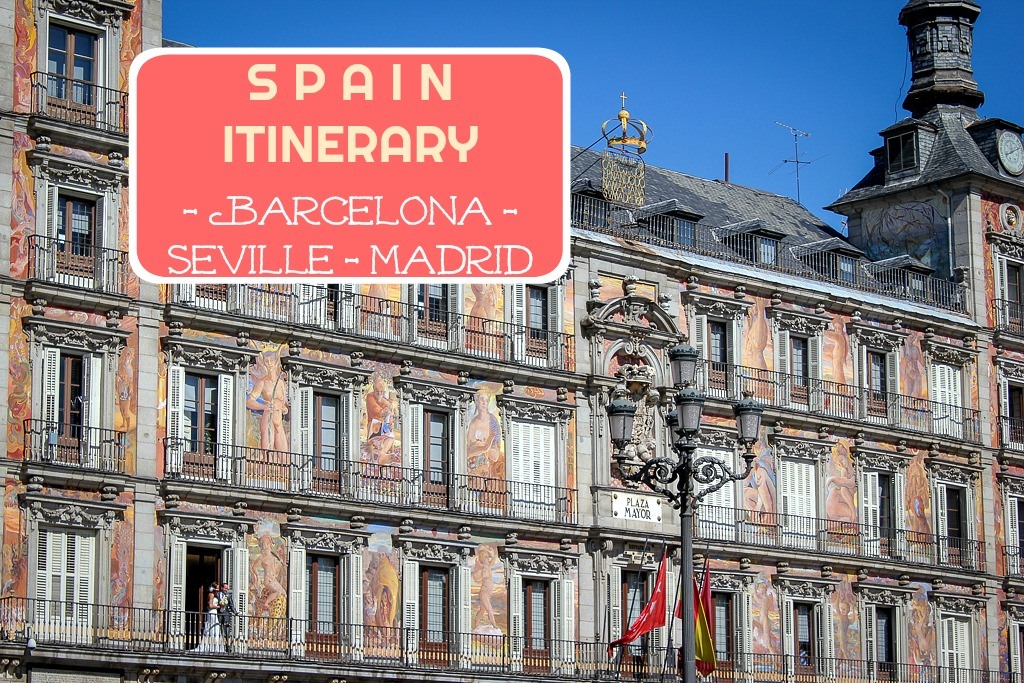
Spain Itinerary: Barcelona, Seville, Madrid
Welcome to JetSetting Fools, here you will find our best travel tips for destinations worldwide. Some of the links on this site are Affiliate Links and if you use them to make a purchase, we may earn a commission. For more information, read our Disclosure Policy .
Spain features varied landscapes, vibrant cities and incredible cuisine. The large country has numerous fantastic destinations to choose from – and with so much to see, planning a vacation to Spain can be perplexing. To help fellow travelers, we created an easy-to-follow, day-by-day Spain Itinerary that highlights the absolute best of the country.
Spain Itinerary Trip Plan
We designed our Best of Spain Itinerary when a friend joined us on our European Travels . She had limited time, so we planned a Spain One-Week Itinerary to show her the top sights. Not an easy task when planning a trip to Spain!
On our One Week in Spain Vacation, we traveled to the three most popular cities: Barcelona, Seville and Madrid. We believe these are the best places to visit in Spain on a quick one week trip.
Best Places To Visit in Spain
Spain is a vast country – and each destination is unique and rich in culture and history. Fortunately, Spain is well connected by planes, high speed rail and regional transport. Visitors planning a One Week Itinerary of Spain can certainly visit multiple destinations, but will need to consider travel time between each place.
Some of the best places to go in Spain are the famous cities and picturesque towns. For our Spain Travel Itinerary, we include three top Spain destinations: Seville, Barcelona and Madrid. We think these three cities offer the perfect introduction for a first time visitor to Spain.
Now, for a quick summary of each location before jumping into our detailed day-by-day tour of Spain.
Top Tip : While we feel these three cities constitute the Best Spain Itinerary for One Week, there are other fabulous destinations in the area to consider. For those with more time, we include options to tour other top spots – like San Sebastian in Spain’s Basque Country as well as Lisbon or Porto across the border in Portugal .

With an array of sights, Barcelona dazzles visitors. The popular Catalan city features an old town rife with Gothic buildings and Gaudi’s Modernism architecture, which together are a UNESCO World Heritage Site. However, Barcelona is so much more than historic buildings. Barcelona highlights include nature (like Park Guell, stunning shoreline beaches and picturesque mountains) as well as phenomenal Barcelona Tapas !
Find out more in our detailed 3-Day Barcelona Itinerary !

The city of Seville is comprised of quaint neighborhoods and delectable Sevilla Tapas Bars – and it’s a highlight of many Spain Travel Itineraries. Seville is best discovered on foot. Top activities include exploring popular attractions – like the Cathedral and Alcazar, both of which are located right in the heart of the city – and sampling an array of scrumptious Spanish cuisine.
Learn more about all the Top Seville Sights !

Madrid is a sparling metropolis with a buzzing center and is one of the best destinations to include on a Spain Itinerary One Week Trip. Top features of Madrid include spacious plazas, lush parks, the Royal Palace, the Prado Museum and the Reina Sofia Art Center. The Spanish capital is the second largest city in the European Union (only Berlin is bigger), yet the sights are fairly easy to navigate with our free Self-Guided Madrid Walking Tour !
Use our 3-Day Madrid Itinerary for detailed information!
Spain Trip Planner Route and Transport
Choosing where to go in Spain is only the first step in planning a trip. Visitors also need to consider the route for their Spain Itinerary – and how they will travel to each destination.
For a quick 7 Days in Spain Itinerary, we recommend choosing destinations that are easy to reach by high speed train or short flights. This way, you will spend less time in transit and more time discovering Spain!
Spain Itinerary by Train
The cities we include in our One Week Spain Itinerary are well-connected for touring Spain by train (our version of a Spain Road Trip!). In fact, part of the reason we chose these destinations in Spain was the convenient train travel available between them.
Where To Start Your Spain Itinerary 1 Week Trip
We organized our trip plan for 7 Days in Spain starting in Barcelona and ending in Madrid. Spending 1 Week in Spain starting in Madrid and ending in Barcelona – can be easily done, too.
It would even be possible to begin your trip in Seville. However, if you are traveling from abroad, your international flight will likely take you to Barcelona or Madrid, not Seville.
For those planning a Spain trip from North America (United States and Canada, specifically), we recommend booking flights into one gateway city and out of the other. This is one of our top Cheap Flight Tips and a good way to save precious vacation time, as well!
Travel Tip: We discuss more options for getting around Spain in detail at the end of the article.
How Many Days in Spain
How much time you spend in Spain should be decided based on your personal interests, overall budget and total allotted time for your trip. We have spent as little as one day in Spain while transiting between countries (clearly, not enough time!) – and could easily spend more than a month touring Spain.
Our 1-Week in Spain Itinerary is an ideal way to experience the country. But, what if you only have 5 Days in Spain or are trying to plan a 10-Day Spain Itinerary? No worries! We’ve got you covered with numerous sample Spain itineraries, which we share below.
Our Spain Itinerary 7 Days
With 7 days in Spain, it is possible to visit the major sights in three cities, which is how we created our Barcelona, Madrid, Seville Itinerary. For this Spain Travel Itinerary, we decided to plan our time as follows: 3 days in Barcelona, 2 days in Seville and 2 days in Madrid.
Map of Spain Itinerary Destinations
On our Spain Itinerary Map, we have marked the locations of the top destinations – Madrid, Barcelona, Seville – in red. The blue pins show optional destinations of San Sebastian and Lisbon, Portugal.

Top Tip : While our Spain-in-One-Week Itinerary features activities and information for each day, we also recommend using a current Spain Guide Book ( Lonely Planet and Rick Steves are our favorites). It’s also a good idea to learn basic Spanish phrases or bring a pocket phrase book on your trip!
1 Week in Spain: Day-by-Day Itinerary

You can use our guide as your Spain trip planner for Barcelona, Seville and Madrid exactly as it is written or as a base and tailor it to best fit your travel style. Now, it is time start your One Week in Spain in Barcelona!
Day 1: Travel to Barcelona

Arrive in Barcelona and waste no time getting acquainted with the city! Our Spain vacation itinerary begins with exploring the top Barcelona sights. Start in the heart of the city on Las Ramblas, Barcelona’s wide pedestrian lane lined with shops and street entertainers. After soaking in the atmosphere, walk to La Rambla del Mar on the waterfront.
Follow the coastline north past the harbor full of sailboats to Barceloneta, the city’s best beach town. Next, venture into Parc de la Ciutadella and wander the paths to waterfalls, ponds and monuments. Then explore the streets of La Ribera and Barri Gothic neighborhoods.
Top Travel Tips : Because you are only in Spain for a week, you have got to get right to it! Day 1 of our itinerary for Spain covers 5+ miles. Find detailed information in our self-guided Barcelona Walking Tour – or join a guided walking tour, like this one .
Day 2: Explore Barcelona Sights

On the second day of your 7-day trip to Spain, get an early start and hike up Montjuic (Jewish Mountain) to the hill-topping castle for views of Barcelona and the Balearic Sea. The Montjuic Castle dates to 1640 and was built as a military fortress and the interior can be visited for a fee.
Bring a picnic lunch (perhaps with items gathered from the Mercado de La Boqueria) and dine al fresco. Retrace your steps back down the hill and spend the afternoon visiting the MNAC (Museu Nacional d’Art de Catalyuna) art museum. In the evening, discover the best Barcelona tapas in the Poble Sec neighborhood at the base of Montjuic.
Top Tip : What is a One Week in Spain Itinerary without eating copious amounts of tapas? Read our recommendations for the Best Tapas Bars in Barcelona !
Day 3: Discover Barcelona Modernism

A trip to Barcelona would not be complete without contemplating the works of the city’s most famous architect, Antoni Gaudi. So, that is exactly what you will do on Day 3 of your 1 week trip to Spain.
His unique works are scattered throughout Barcelona, but he is best known for his (forever) unfinished Sagrada Familia church. More must-see Gaudi sights are Casa Batllo and Casa Mila. Join a Gaudi Tour to learn more about his life and work.
In the afternoon, wander through more of Barcelona’s picturesque neighborhoods, like L’Eixample or the La Ribera and Barri Gothic quarters, if you didn’t have time to see them on your first day.
Top Tip : To help plan every detail, use the tips for top things to do in our Best Barcelona Itinerary !
Day 4: Arrive in Seville

Begin Day 4 early on board the highspeed AVE Train from Barcelona to Seville in the Andalusia region (6 hours). Note : If you are making the Barcelona to Seville road trip with a rental car , expect the journey to take at least 9 hours.
After checking into your Seville accommodations, head straight for the city center. Visit the landmark Seville Cathedral , which was built between 1401 and 1519 and is one of the largest Medieval churches in the world. Climb the 12th century La Giralda Tower , then enter the Alcazar palace that stands opposite the cathedral (where scenes for Game of Thrones were been filmed). Spend the evening in Sevilla tapas-tasting and then seek out a spot to watch Flamenco dancing.
Top Tip : Find our recommended spots for the Best Tapas in Seville or join a combo tapas/flamenco tour .
Day 5: Wander Seville Neighborhoods

For day 5 of our Spain itinerary, we’ll spend time soaking up the charm of Seville by discovering the quaint neighborhoods of the city. Explore on your own or hire a guide for a private tour of Seville.
See more of the city center, then step into Barrio Santa Cruz, the old Jewish Quarter. Cross the Canal de Alfonso XIII and get lost in the colorful lanes of Triana. Go south of the Seville Center to the ornate Plaza de Espana and Parque de Maria Luisa…but don’t miss the Macarena neighborhood (and the Basilica de la Macarena) on the north side. Spend the evening sipping Spanish wine on a rooftop terrace and enjoy the elevated Sevilla views.
Top Tip : Many itineraries for Spain only include one day in Seville, which we don’t think is enough. Read our guide to visiting the most picturesque Seville Neighborhoods so that you can immerse yourself into the city!
Day 6: Arrive in Madrid

Take the morning AVE Train to Madrid (3 hours) for the final two days of your 7-day tour of Spain. Discover the top sights in the city on your own or join fellow travelers and a local guide for a tour of Madrid . Either way, hit the ground running and take in the major sites in Madrid Centro!
See Puerta del Sol, marvel at Playa Mayor, feast at Mercado de San Miguel, visit the Madrid Cathedral and tour the the expansive Royal Palace . Continue sightseeing as you walk down Gran Via (Madrid’s high-end shopping street), pop into Palacio de Cibeles for an elevated view and stroll through lush El Reitro Park. If time allows, swing through Mueso del Prado during the free evening hours.
Pro Tip : Wondering how to plan your time in Madrid? Leave it to us! Use the information from our Madrid Walking Tour for your first day in the city.
Day 7: Visit Madrid Top Attractions

It is the last day of your 7 Day Spain Itinerary – and there is still so much to see! Start on the south side of the city with a calamari sandwich breakfast (it’s a Madrid culinary treat) and then see contemporary artwork at the fabulous Museo Nacional Centro de Arte Reina Sofía.
Wander through the La Latina district; it’s a haven of boutique shops and street art murals. If it happens to be a Sunday, join the crowds at the El Rastro Flea Market. Enjoy a leisurely tapas lunch on Cava Baja Street – then set your sights on North Centro Madrid and the Malasana neighborhood.
Start at Plaza de Espana, then walk up to the ancient Egyptian Debod Temple. Next, take in the views from Montana Park and wind your way through the Parque del Oeste Rose Garden. If time allows, visit a museum in Malasana (there are many to choose from – but the History Museum of Madrid is our top pick).
End the day discovering the streets of Malasana. Join the locals in Plaza del Dos de Mayo, stop by one of the craft beer taprooms or stop at a Madrid institution, Petisqueira.
Pro Tip: Day 7 takes you from one end of Madrid City Center to the other. If you have more time, our Madrid 3 Day Itinerary is for you!

What is the Best Itinerary for Spain?

Honestly, we think our Spain Itinerary for 7 days is a great way to discover the country, especially if it’s your first visit. That said, there is no right or wrong way to visit Spain.
To help other travelers create their best Spain itinerary, we are offering several suggestions, including alternate destinations, plus shorter – and longer – trip plans.
Spain Trip Itinerary Variations

When designing your best Spain vacation itinerary, still use our above Spain One-Week Itinerary as a base. How to plan a trip to Spain really depends on how much time your have and what your interests are. Use the following Spain travel planner suggestions to get the most out of your visit!
Top Tip : Those who have more than a week in Spain can add a combination of destinations and day trips to their itinerary. Below, we highlight top-rated day trips from each city for some ideas to help you when planning a vacation to Spain.
Spain Itinerary 3 Days
With just 3 days in Spain it will be difficult to get a good feel for the country. Still, there is a lot you can squeeze into a 3 day holiday to Spain.
3 Day Spain Itinerary: Seville, Madrid or Barcelona
On such a short trip to Spain, it is ideal to pick only one destination. We recommend choosing either Barcelona or Madrid, as both of those are better connected to other international destinations.
That said, depending on where you are coming from, it would be possible to spend the entirety of your 3 days in Spain in Seville.
Fast-Paced Spain 3-Day Itinerary: Madrid and Barcelona
Travelers who like to move quickly could create a 3 days in Spain Itinerary that includes two cities – ideally, Madrid and Barcelona.
Arrive in Barcelona and spend the first two days there. On the third day, either take the AVE train (3 hours) or fly (1.5 hours, plus time to get to the airport) to Madrid and spend the rest of the day sightseeing.
Spain Itinerary 5 Days
With 5 days in Spain, travelers will still be limited with what they can see. However, we’ll show you ways of making the most of it!
Slow-Paced Itinerary to Spain for 5 Days
For those who prefer a slower paced vacation can opt for just one city and then take day trips to see more of the region. We list top day trips from each city on our itinerary in the next section.
5-Day Spain Itinerary: Barcelona and Madrid
Visitors who like to explore big cities can spend their 5 days in Spain in the top two in the country: Barcelona and Madrid. Use our Spain Week Itinerary, but eliminate Seville.
Fast-Paced Spain 5-Day Itinerary
Alternatively, those who like to see it all and are intent on squeezing as much as possible into 5 days in Spain can create a fast-paced Barcelona-Seville-Madrid Itinerary. We would recommend spending 2 days in Barcelona, 1 day in Seville (more like a half-day) and 2 days in Madrid. Be aware, however, you will be very rushed trying to see 3 cities in Spain in 5 days!
Alternate One Week Travel Itineraries for Spain

While we believe our above day-by-day trip plan is an ideal route, there are of course many alternate ways to plan a trip to Spain.
Spain One Week Itinerary: 2 Cities
Rather than seeing three cities in Spain in a week, slow down and choose just two destinations for your trip. Having more time in any place will allow you to delve deeper into the history, culture and cuisine and ultimately a more relaxed vacation.
Spain-Portugal Itinerary 7 Days
Or dial it up and visit both Spain and Portugal in 1-week! To create a Portugal and Spain vacation trip plan, you will need to rearrange our timeline – or eliminate one of our recommended Spain destinations.
The route we recommend for a One Week in Spain and Portugal Itinerary is Barcelona (2 Days), Madrid (3 Days) and Lisbon (2 Days). Use our Lisbon Itinerary to plan your time in Portugal (including a day in Sintra !).
Spain Itinerary 8 Days
Using our outline of what to do in Spain in 7 days, it is fairly easy to extend it one more. We would add one more day to Madrid to allow for more sightseeing or a trip outside the city.
9 Day Spain Itinerary
To expand our Spain tour to 9 days, you could make a few simple adjustments. Such as, visiting Barcelona, Seville and Madrid with 3 days in each city. Add day tours in Seville and Madrid using our suggestions below.
Alternatively, leave all the planning to someone else and join a 9-Day Tour of Spain that includes Madrid, Cordoba, Seville, Granada, Barcelona and Valencia. Find out more!
Spain Itinerary 10 Days
With 10 days in Spain, travelers have the opportunity to see a lot more – either on day trips or with added destinations.
10-Day Spain Itinerary: 3 Destinations
An ideal way to spend 10 days in Spain is to simply add one additional day in each city. Visitors would spend 4 days in Barcelona, 3 days in Seville and 3 days in Madrid.
Spain 10-Day Itinerary: 4 Destinations
Alternatively, follow our Spain week itinerary as outlined, then add a fourth destination. Our top recommendations in Spain for additional destinations are Hondarriba and/or San Sebastian .
Spain Portugal Itinerary 10 Days
Adding 3 Days in Lisbon to your One Week Spain Itinerary is a fantastic way to see the Iberian Peninsula!
Colorful Lisbon is spread over seven hills – with the magical Castles of Sintra just a short train ride away. Classic yellow trams rattle through the historic center and locals abide by age old traditions. Find out more in our guide to the Top Things To Do in Lisbon .
10 Day Spain Itinerary with Basque Country
If you’d prefer to stay in Spain for 10 days, consider heading north to experience a completely different culture in San Sebastian. The Basque Region is distinctly different from the rest of Spain and very close to France . Nearby Bilbao is another top pick for places to visit in the north of Spain.
Get tips on how to visit San Sebastian in our 3-Day Basque Itinerary .

2 Weeks in Spain
With two weeks in Spain there is so much more you can see! To create your ideal Spain Two Week Itinerary, use our tips above for 10 days and build out from there. A 14 Days in Spain Itinerary can include traveling to Portugal or seeing more of Spain.
Two Week Spain Itinerary with Portugal
We think the best way to see Spain and Portugal in 2 weeks is to follow the suggested itinerary for Spain in 10 days and then venture into Portugal to spend the last 4 days in Lisbon (and possibly even Porto !).
Spain Itinerary 3 Weeks
With 3 Weeks in Spain, you can get really creative! You could easily spend a week in each of our recommended cities taking time to truly experience each destination.
3 Weeks Spain, Portugal and France
Alternatively, you could add more countries to your Spain Itinerary. To get the most out of the trip, we suggest adding both San Sebastian (and perhaps Saint Jean de Luz, France ) plus Lisbon, Portugal (and maybe Porto ) to your vacation to Europe!
Southern Spain Itinerary
Southern Spain is so incredibly different from the rest of the country (hello, beaches!) – and travelers planning a One Week Itinerary in Spain could opt to stay entirely in the south. Besides Seville, other top stops are Alicante, Granada, Cordoba, Malaga (Costa del Sol), Cadiz (Costa de la Luz), and Ronda.
10 Day Itinerary for Southern Spain
On a 10 Day trip to Spain, you could create a Madrid-Seville-Granada-Barcelona Itinerary that spends more time in Southern Spain. Perhaps even adding Cadiz and/or Alicante for a Spain Beach Vacation.
Guided Southern Spain Tour Itinerary
Alternatively, you could add a guided tour of Southern Spain to your trip plan. Check out this Andalusia Itinerary for Cordoba, Seville and Granada in 5 days from Madrid.
Top Spain Day Trips

If you are extending your 1-Week Itinerary for Spain to include day trips, use the below suggestions for top-rated trips and activities. Even if you are just spending a week in Spain, you may want to rearrange your schedule to include one of these fun day trips!
Barcelona Day Trips
- Small Group Dali Museum Trip – Get the details!
- Montserrat and Cava Trail Day Trip – Learn more!
- Girona and Costa Brava Small Group Tour – Find out more!
Seville Day Trips
- Granada Day Trip (including Alhambra Palace skip the line ticket) – Plan it!
- Afternoon Gourmet Wine and Tapas Tour – Book it!
Madrid Day Trips
- Full- or Half-Day Toledo Day Trip – Add it to your trip!
- Flamenco Show at Corral de la Moreria – Reserve your seat!
Guided Tours Of Spain

We opted to see Spain on our own, but there are many tours that are led by qualified guides. Although guided tours usually cost more than traveling independently, booking Spain tour packages can be a hassle-free way to see the country. Start your search for guided Spain tours on Viator , a trusted brand dedicated to designing the best excursions.
Spain Itineraries Travel Info

When planning a trip to Spain, travelers need to consider how to get to each destination. On a trip to Madrid, Barcelona and Seville, visitors can travel by plane, train, car or bus. (We detail tips on How To Get To Spain a bit further below).
Spain by Train Itinerary
Exploring Spain by Train is an incredible way to see the country. We chose to take train trips in Spain for the comfort and because we wanted to view the scenery along the way. We wouldn’t necessarily recommend buying Spain rail passes. Instead, buy individual tickets in advance. Always compare prices – as tickets can differ according to type of train and time of day.
Travel Spain by Plane, Car or Bus
Although we explored Spain by train (and not in the rain), it is possible to also fly, self-drive, or take a bus during your 7 day trip to Spain!
Flights in Spain
There are flights from Barcelona to Seville that take equal total time and cost about the same amount as the train. Flights are also available from Seville to Madrid, but flying doesn’t necessarily save time or money on this shorter route. Start your search on Skyscanner – and use our Tips for Finding Cheap Flights .
Road Trip Around Spain
For those interested in a Spain road trip from Barcelona, you will need to account for additional time. Drive times from Barcelona to Seville are 9+ hours depending on the route and traffic. Be certain to read our advice for finding the Best Car Rental Rates .
Travel by Bus in Spain
Bus travel in Spain is fairly affordable and reliable – but can eat up precious time when moving between destinations. When planning your Spanish Itinerary, check journey times to see if bus travel works for your trip.
Top Travel Tips For Your Trip to Spain

We have detailed what to do in Spain for a week (and longer), but we have a few more tips to help make your trip amazing!
Best Way To Plan Trip to Spain
There is a lot that goes into planning a Spain trip – from research to reservations. Keep track of your Spain vacation plans with our Printable Travel Planner !

When To Travel to Spain
If you are waiting for the best time to travel to Spain, it’s…now! However, each season has its pros and cons.
Summers will be crowded and hot , but the days are long (optimal for sightseeing) and it’s a great time for visiting Spain’s beaches.
Winters are cool, but typically sunny, and the cities are beautiful when decorated for the Holidays in Europe . We have spent Christmas in Barcelona and visited Madrid at Christmas – and both we simply wonderful! Plus, one of the best year-end celebrations is New Year’s Eve in Madrid !
Autumn and Spring can be an ideal time to travel to Spain. We recommend packing layered clothing if you’re visiting Spain in the shoulder seasons, as there can be a mix of weather.
1 Week in Spain Cost
The cost of a Seville, Madrid and Barcelona Itinerary depends on many different elements. The largest expenses to factor into a Week in Spain Itinerary budget are flights and accommodations. Other costs to consider are travel between (and in) cities, ticketed activities as well as food and drinks.
Where To Stay in Spain

When planning your own trip to Madrid, Barcelona and Seville, you will need to decide where to stay in each destination. Because of limited time in each city, you will want to make sure you book accommodations that are close to the center and major attractions.
Spain Airbnb
As we considered where to stay in Spain for a week, we opted to stay in Airbnb Apartments – as there were three people in our group. The places we chose were convenient and clean, plus had a kitchen to make simple breakfast meals.
That said, there is a downside to booking apartments for travel – especially with such short stays. First, the extra fees can add up quickly and second, arranging check in, check out and luggage storage with hosts can stifle your sightseeing plans.
Hotels in Spain
Therefore, we suggest staying in hotels. You will find that there are many to choose from in the city center of Barcelona, Seville and Madrid. Before you start your search, we recommend reading our Tips for Booking the Best Hotels .
We are also highlighting a few top-rated hotels (based on guest reviews) for your upcoming Spain Trip.
Barcelona : Hotel Concordia | Catalonia Magdalenes | Hotel The Serras | Hotel Casa Camper
Seville: Hotel Casa Del Poeta | Hotel Amadeus & La Musica | Hotel Casa 1800 Sevilla
Madrid: Francisco I | Catalonia Puerta del Sol | Preciados | Petit Palace
Southern Spain Hotel: Travelers extending their trip to Andalusia might want to consider staying in the Hotel Granada Center – check rates .
Budget Travelers: Search for Spain Hostels in Barcelona , Seville and Madrid on Booking.com .
Getting To Spain
Our preferred method of getting anywhere is flying, we are JetSettingFools after all! All of the destinations included in our sample Spain itineraries can be reached by plane. If you’re traveling from the US for 1-Week Spain, we recommend booking a flight to Barcelona and out of Madrid. Begin your search for the best deals on flights to Spain on Skyscanner.
What To Pack for Your Spain Itinerary

Our final advice for your Spain trip planning covers our best packing hacks for your backpack or suitcase . For now, g rab a FREE Packing Checklist!
Durable Walking Shoes
We cover a lot of ground in our Spain vacation planner. Be sure to pack a pair of comfortable walking shoes for Europe. I like to explore in these Columbia shoes – and Kris prefers wearing Merrell trail shoes. Find more styles and read reviews in our Best Travel Shoes article.
Spain Weather Gear
What you will need to pack for your trip to Spain will depend on the season. Summers are hot and sunny – so bring sunglasses , plenty of sunscreen , a wide-brimmed hat and a refillable water bottle .
In the wintertime, you will likely want to wear layers, as temperatures can vary throughout the day. On the chance of rain, make sure you are prepared with a packable raincoat and travel umbrella .

Travel Camera
Spain is an absolutely gorgeous country! Capture that beauty with a real travel camera , rather than using your phone. We carry a DSLR Canon Rebel (which is a great budget camera for beginners) with an everyday 18-135mm lens (the only one we travel with).
Spain Map and WiFi
It’s so much easier to get around if you know where you are going! We recommend purchasing a Spain destination maps (at least for the big cities – Barcelona and Madrid ) before your trip.
Travelers relying on Google Maps (or using the links to our detailed walking tours) will need a WiFi Connection . While it may be possible to adjust your phone plan for international data, frequent travelers (or those traveling as a group) may find it beneficial to buy a GlocalMe Mobile WiFi Hotspot .
Anti-Theft Travel Bag
Tourists are prime targets for pick pockets – and unfortunately that is very true in Spain. We always keep our valuables – like wallets, phones and camera – tucked away in a money belt or zippered bag. Travelon makes a full line of anti-theft bags, and you can read more tips and reviews in our article, The Best Day Packs for Travel .
Spain Travel Insurance
Trip insurance may protect against cancelled trips and lost luggage , and it might come in handy if you get ill or injured abroad , too. If you haven’t already obtained insurance for your trip to Spain, consider traveling protected with World Nomads .
Start planning your trip to Spain ! Search for the lowest airfares , the best accommodations and fun things to do …then start packing ! Want more travel advice? Head over to our Travel Planning Page for more tips on traveling – and for country-specific information, take a look at our Travel Guides Page !

Pin it! See all of our travel pins on our JetSetting Fools Pinterest Board .

Share This Story!
- Click to share on Pinterest (Opens in new window)
- Click to share on Facebook (Opens in new window)
- Click to share on Twitter (Opens in new window)
- Click to share on LinkedIn (Opens in new window)
4 thoughts on “ Spain Itinerary: Barcelona, Seville, Madrid ”
Comments are closed.

10 Days in Spain, Itinerary for First-Timers
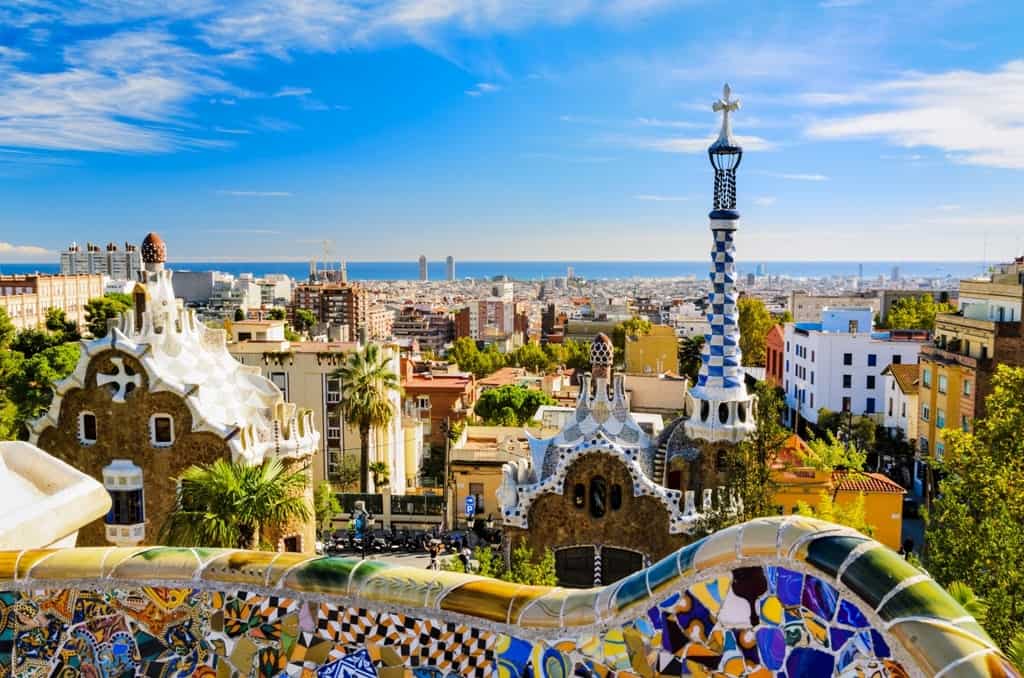
Planning to spend 10 days in Spain, a country bursting with life, color, passion, and fire? Spain is a country that caters to the needs of every traveler. From the staggering landscapes, the bustling plazas, the cities that never sleep, and the unparalleled gastronomic and cultural experiences – you’ll be spoilt for choice.
The country of Spain needs at least a few months to get around and see everything and get to actually experience the diversity that it offers, but this 10 day Spain itinerary can be a great introductory trip to get a gist of the country.
Disclaimer: This post contains affiliate links. This means that should you click on certain links, and then subsequently purchase a product, I will receive a small commission.
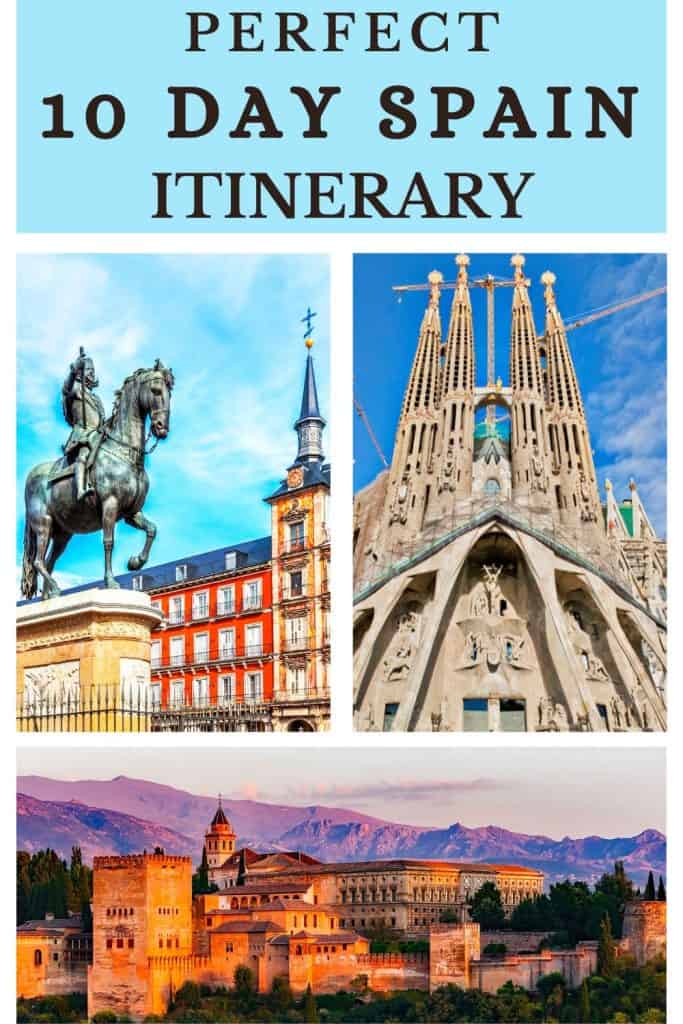
Table of Contents
10-Day Spain Itinerary: Barcelona, Madrid, Toledo, Seville & Granada
- Day 1- 3: Barcelona
- Day 4 – 5: Madrid
- Day 6: Toledo
- Day 7: Seville
- Day 8-9: Granada
- Day 10: Fly home
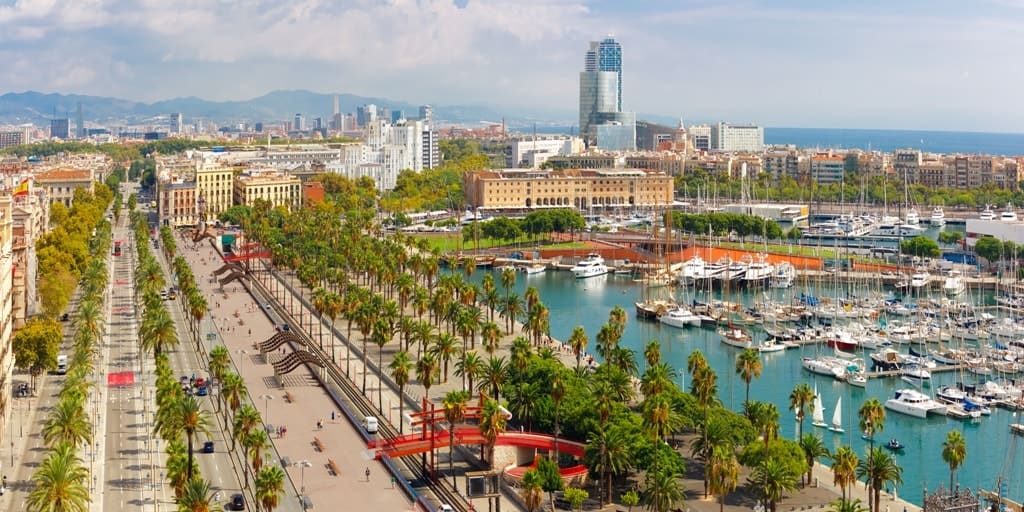
Barcelona Go City Pass
A good way to save time and money is to invest in a Barcelona Pass . With the pass, you can save up to 50% on the top Barcelona attractions.
The Barcelona Pass is all-inclusive and provides access to popular attractions, like:
- Casa Batlló
- Sagrada Familia Guided Tour
- Park Güell Guided Tour
- Barcelona Bus Turístic
- FC Barcelona – Immersive Tour
Click here for more information and to book your Barcelona Go City Pass.
Day 1 Barcelona
Your 10-day Spain itinerary starts in Barcelona. After settling down at your hotel, get ready for the first sight of the city. Barcelona is a city that teems with life unlike anywhere else in the world…A city that truly has it all.
From the azure beaches to the pumping life to the spirit of Gaudi looming over the city and manifesting itself into the city’s hypnotic façade…Barcelona will never fail to enchant you. Colorful, lively, youthful, and so international – I can guarantee that Barcelona will end up being one of your favorite cities.
Tip: Barcelona is a big city get around comfortably with a 2, 3, 4, or 5-day public transport ticket.
Where to stay in Barcelona
Petit Palace Boqueria Garden : Situated right in the Boqueria of Barcelona, this gorgeous hotel combines all the amenities needed and a central location. It’s simple, beautiful, and has a genuine atmosphere to it. Click here for more information and to check the latest prices. Ciutat de Barcelona : Huge sunlit windows, a rooftop terrace, a swimming pool, and all amenities you might need in a hotel, the Ciutat de Barcelona is a 15-minute walk from the beach and only 1 minute away from the Gothic Quarter. Click here for more information and to check the latest prices. The One Barcelona : Extremely sleek and super luxurious, the One is located in the prestigious Passeig de Gracia. The hotel looks directly at La Pedrera and boasts spacious rooms, a restaurant, and a cocktail bar, and a spa. Click here for more information and to check the latest prices.
Check here for a complete guide on where to stay in Barcelona .
Placa de Catalunya
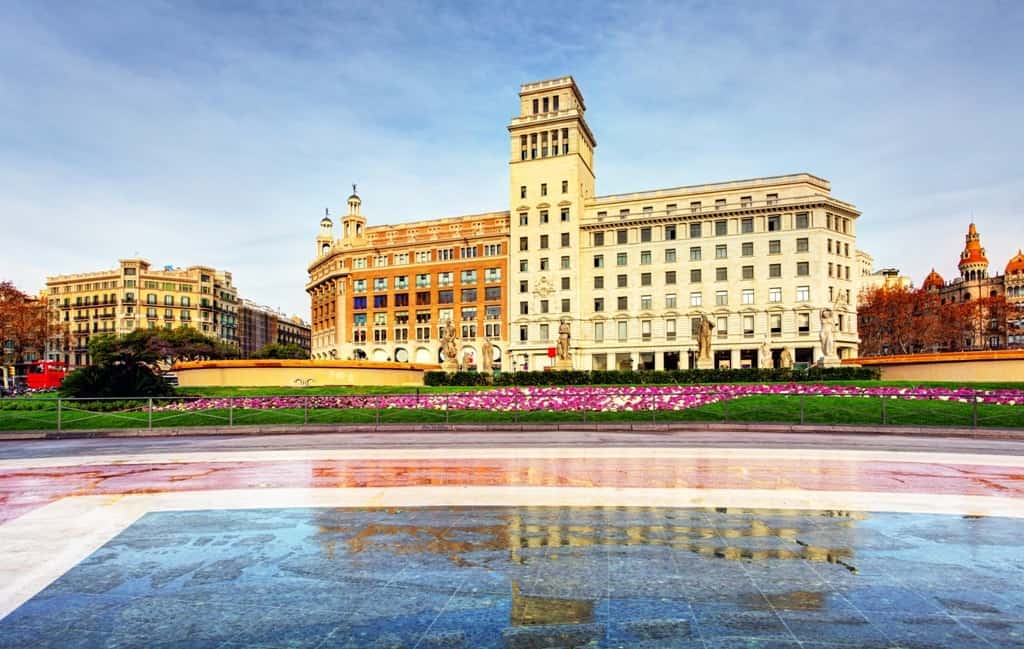
Placa de Catalunya is the pumping heart of the city, the place where all life begins, all nights end, and where LasRamblas and the Gothic Quarter also start and end. Impressive fountains, elegant statuary, large squares dotted with shops, and hoards of people from all over the world meet, greet and leave….Spend a little bit of time checking out the different shops and then head over to Las Ramblas.
You can check this Northern Spain itinerary for more inspiration.
Las Ramblas
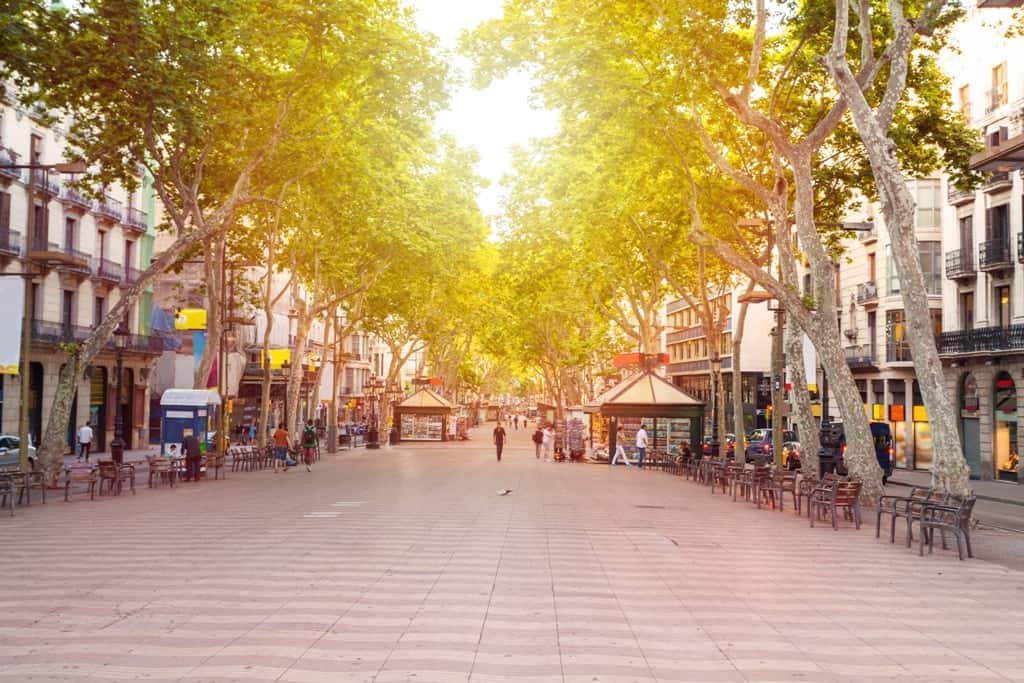
The main street in Barcelona, Las Ramblas is as energetic and as lively as it gets. It’s one of the most energetic boulevards in the world, throbbing with life, with soul, and with an array of activities, you can do. Starting at Café Zurich, you’ll be able to really get yourself into the mood where dancers, tourists, performers, and locals all mingle together to enjoy the bustle of Barcelona’s heart.
L ooking for a great tapa place in Barcelona? Check out the Tickets Barcelona Restaurant .
La Boqueria

To further get a true taste of Barcelona’s culture, you need to live it like a local. Head over to La Boqueria market in the middle of Las Ramblas, where you’ll be able to catch a glimpse of a plethora of colorful food stacked on top of each other. From exotic herbs and spices to vegetables – you’ll find it all.
Do you want to plunge deeper into the culinary repertoire of Barcelona?
🍲 Learn about the history and cuisine of Barcelona by looking at the counters at the La Boqueria food market and then walking through the alleys, squares and back streets of the Gothic Quarter and the El Born quarter on this tour
Gothic Quarter
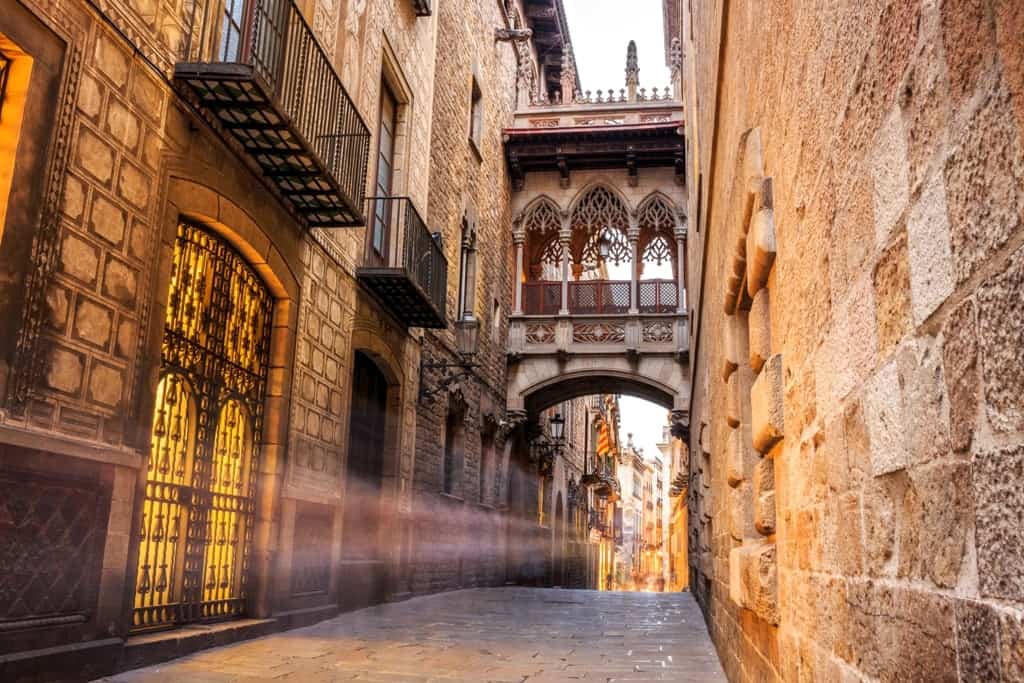
You’ll see that Las Ramblas hides dozens of different alleys that take you to hundreds of winding streets….Let me introduce you to the gothic quarter. An unbelievable blend of medieval architecture contrasting modern shops, streets that have been there for thousands of years, and a charm that will make you forget that you’re in Barcelona. This was originally the place of a Roman settlement and has now been transformed into a place dotted with bars, shops, and cathedrals.
Barcelona Cathedral

In the middle of the Gothic Quarter is the Barcelona Cathedral – soaring proudly into the sky; make sure you go there just before the sun sets. People are all huddled around the cathedral, violin players set the mood, the church bells ring, and the mood is beautiful.
You might also be interested in: Essentials travel tips to know before visiting Spain.
Day 2 Barcelona
Your second day will be all about Gaudi – after all, he had the main inspiration for what Barcelona looks like, and an iconic symbol to not only Barcelona but to Spain as well.
Sagrada Familia

Start your day by going to Sagrada Familia first thing in the morning as the lines get extremely long and the place gets incredibly crowded. I highly suggest that you buy your skip the line tickets online or book a tour in advance to avoid disappointment.
Sagrada Familia is Barcelona’s iconic symbol, it’s the Eiffel Tower of the city, a symbol of Gaudi, his masterpieces, and of both spirituality and design. Make sure to check the different exteriors that depict different stories (crucifixion, life and death, and even the birth of Jesus).
Tip: Looking for a Gaudi tour? I highly recommend the following: Complete Gaudí Tour: Casa Batlló, Park Guell & Extended Sagrada Família
Casa Milà – Casa Batlló
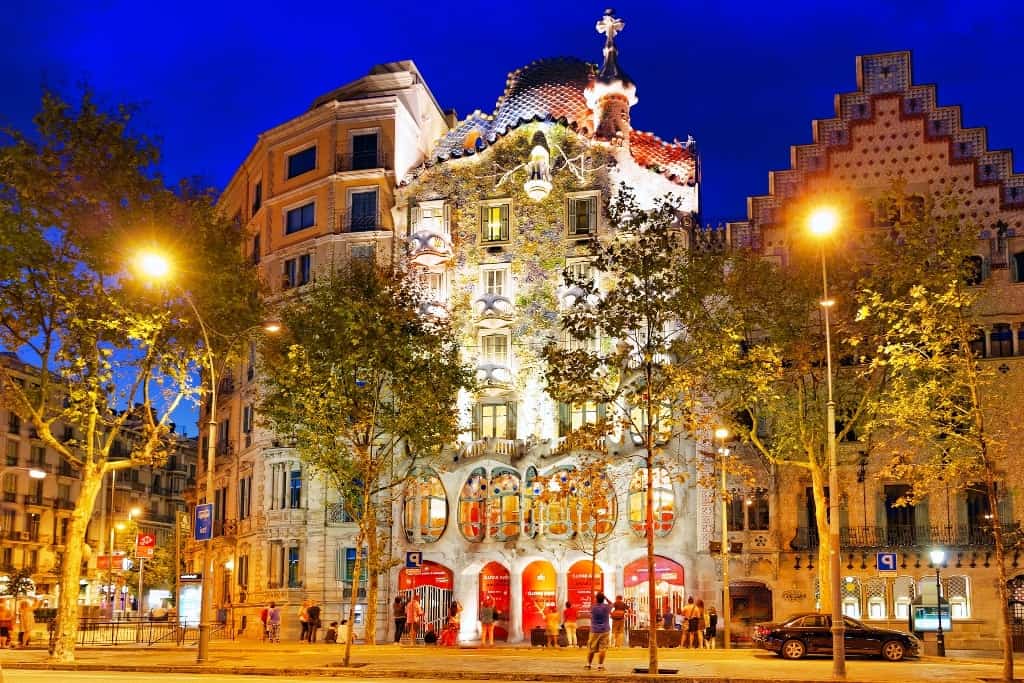
Next, head to both, Casa Milà and Casa Batlló. They are a 6-minute walk away and are both the perfect reflection of Gaudi’s eccentric architecture. Curvy walls, weird alleyways, polychromatic colors, hypnotic paintings, and much more, you’ll be able to truly get a taste of Gaudi on a more intimate level than ParcGuell. It’s a legend of architecture, of creation, the true meaning of letting your creativity run wild.
Click here to book your Casa Milà skip-the-line ticket and here to book your skip the line tickets to Casa Batlló .
Placa Reial
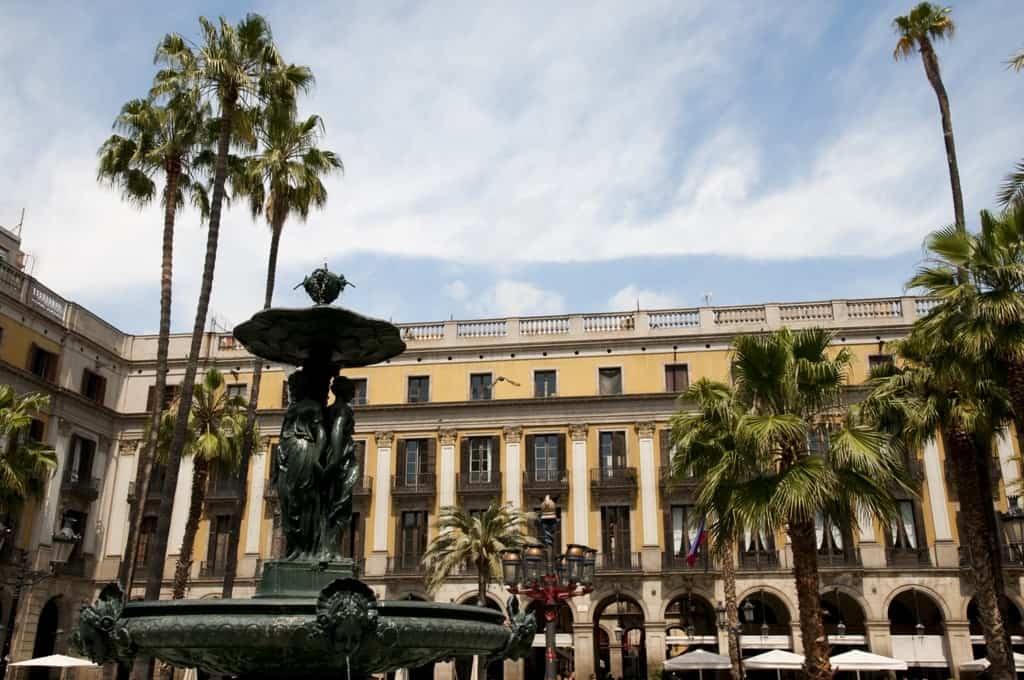
Just off La Rambla, Placa Reial is a square that is known to be filled with bars, clubs, restaurants, and all sorts of performances, people, and life. Jazzy tunes echo from the bars and twirl around Gaudi-made lamps, and cafes and restaurants keep the place booming with life. Have your lunch here, grab a cold glass of beer, and enjoy the live performers!
El Palau de la Música Catalana
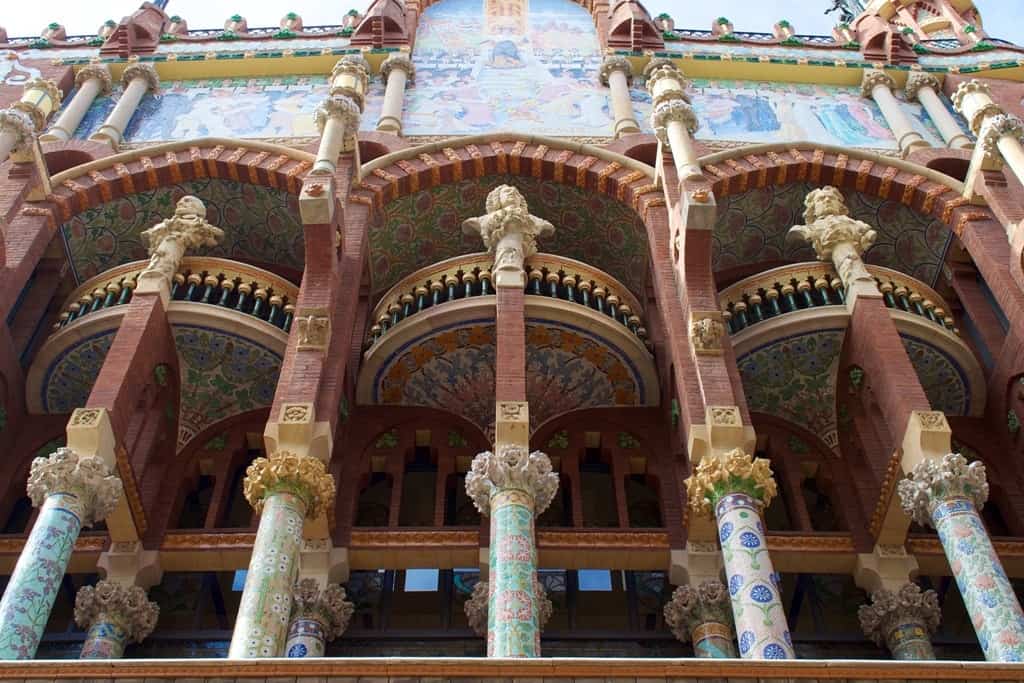
El Palau de la MusicaCatalana is only a 12-minute walk from Placa Reial. This is one of the most important concert halls in the world and an incredible reflection of Catalan art. Bright colors, intricate mosaics and a chance for you to watch a show as well!
Click here to book your Palau de la Música Self Guided Tour.
Day 3 Barcelona
Start very early in the morning and go to Park Guell and then Museo Picasso so you can have time to go to the beach later!
Offering the most incredible panoramic vistas of Barcelona and the beach, Park Guell is one of the most well-known attractions in the world. Quirky designs, colorful mosaics, great architecture, and dozens of columns with little poems on them.
Click here to buy your skip-the-line tickets to Park Güell.
Museo Picasso
An incredible look into the life of Picasso, and how Barcelona has been a major inspiration to him and his art you’ll even get to enjoy the scenic Gothic building in the museum is situated into. Hundreds of works of art by Picasso will give you that artistic fix you need!
If you are a fan of Picasso you can check the Picasso Walking Tour & Picasso Museum of Barcelona.
Head to the beach – La Barceloneta
It should be afternoon by then – the perfect time to take a stroll by the beach. Hundreds of people in swimsuits, swishing around in rollerblades and skateboards, and dozens of beach bars filled with life, clubs, bars, volleyball, and all sorts of activities are only a glimpse of what you get by being on the beach. Enjoy a cold mojito on the beach, let the sun warm up your soul, and have lunch at one of the many cafes there.
Plaza de España
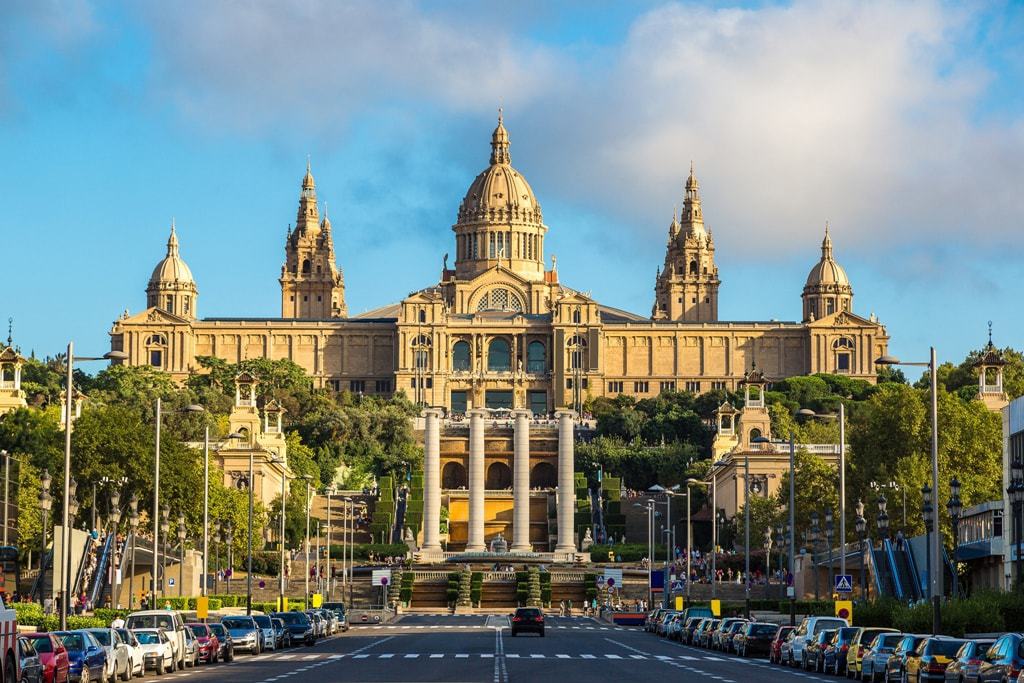
Try to go to Plaza de España before the sun sets and visit MNAC – the Museum of National Art of Catalunya. If you don’t want really to go through the gallery, then this palace is enough to put you in awe. Gorgeous fountains dance around the classical façade of the MNAC, the Montjuic mountains rise beautifully in the distance, and the views you get of Barcelona are absolutely unparalleled.
You might also like: How to spend 2 days in Barcelona .
Madrid Go City Pass
A good way to save time and money is to invest in a Madrid Pass . With the pass, you can save up to 50% on the top Madrid attractions.
The Madrid Pass is all-inclusive and provides access to popular attractions, like:
- Prado Museum guided tour
- Bernabeu Stadium Tour
- Madrid Royal Palace tour
- Madrid hop-on hop-off bus tour
- Museo Nacional Thyssen-Bornemisza
- Reina Sofía Museum guided tour
- Toledo and Segovia full-day tour
Click here for more information and to book your Madrid Go City Pass.
Day 4 Barcelona – Madrid
Now it’s time to take the plane or a high-speed train to Madrid. The train takes about 2 hours and 30 minutes, and the plane about 45 minutes.
Where to stay in Madrid
Here are my favorite accommodation options in Madrid.
Francisco I is located 250 m from Plaza Mayor and Puerta del Sol. It offers simple rooms with a private bathroom, TV, and free Wi-Fi. Click here for more information and to check the latest prices. Hostal Central Palace Madrid is centrally located and overlooks the Sabatini Gardens in Madrid’s Plaza de Oriente. Rooms have free Wi-Fi, toiletries, and a flat-screen TV. Breakfast is served in a nearby cafe. Click here for more information and to check the latest prices. Hotel Círculo Gran Vía, Autograph Collection by Marriott is an adults-only hotel located in Gran Via just 400 m away from Puerta del Sol. It offers stylish rooms with air-conditioning, flat-screen TV and coffee facilities, bathrobes, and toiletries. Other hotel amenities include a restaurant, bar, and business facilities. Click here for more information and to check the latest prices
First, settle in your hotel and then embark on your journey around Madrid in 2 days !
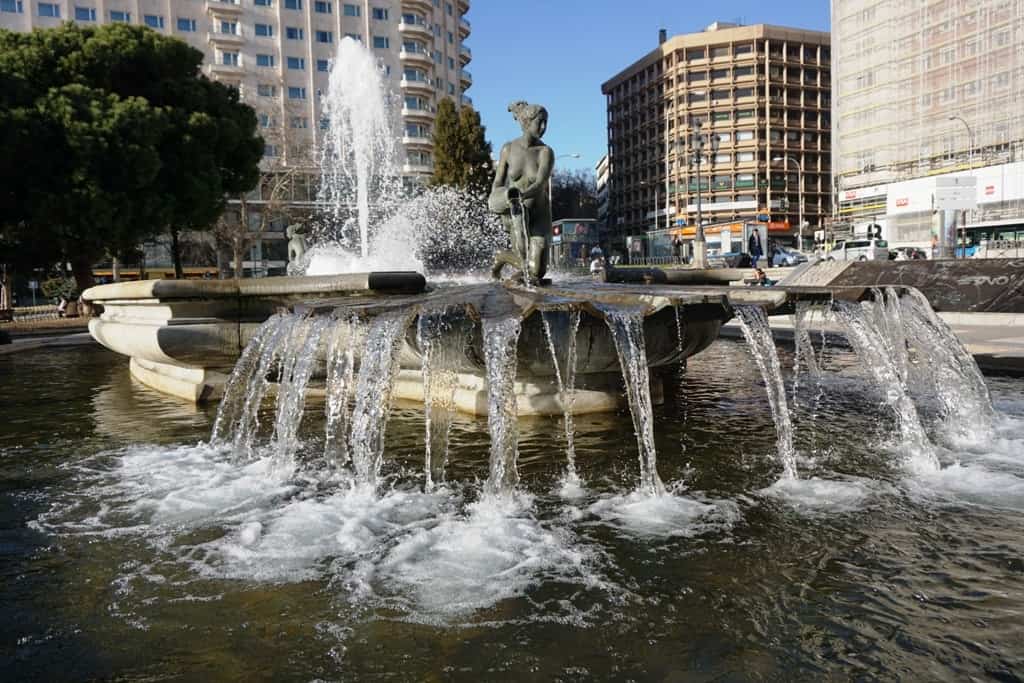
This is where you should start your day in Madrid. A place that has been there since the 18th century, you’ll get to start your trip by watching the large monument dedicated to Miguel de Cervantes, and then the stone sculpture of Cervantes – two of the most prominent Spanish people to date.
The Gran Via is the Times Square of Madrid. Art Deco façades blend with large moving billboards, elegance juxtaposes with cobbled alleyways, and of course – an endless of cafes and shops dot the street. This is your shopping hot stop – sales, hundreds of shops, and a great variety of both international and local brands.
Palacio Real
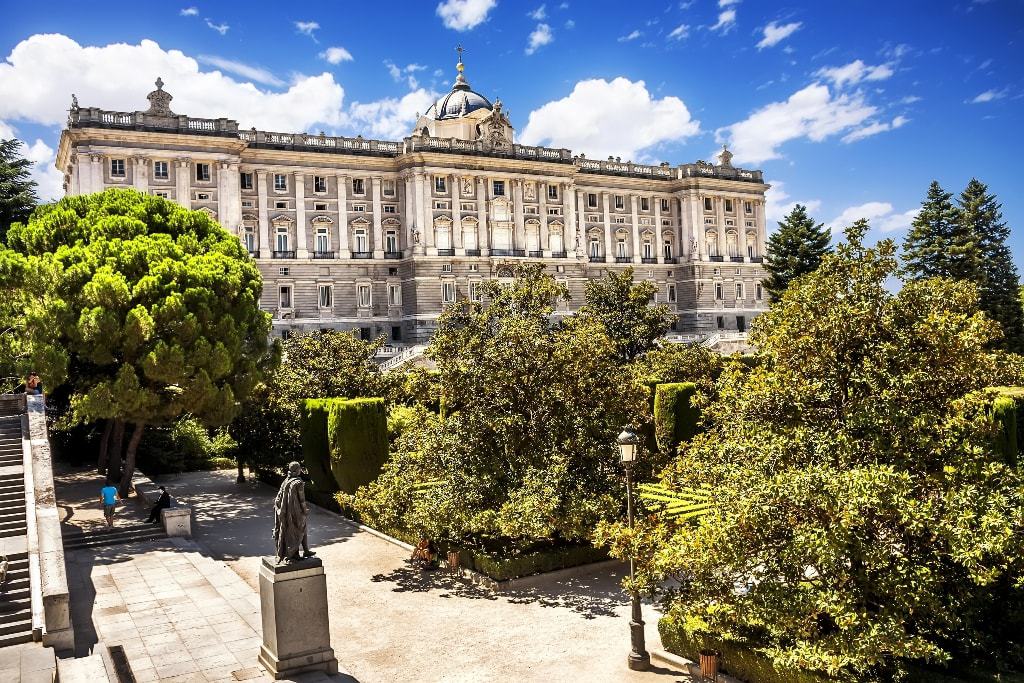
One of the most elegant and biggest palaces in Western Europe, this palace made of stone is a symbol of Madrid. Iconically perched on top, the palace overlooks the hills that are to the west of Madrid and embodies the true meaning of royalty. You’ll be exploring over 3,418 rooms (not in the same go of course!), be led by vast staircases, and explore different halls (Hall of Columns, Hall of Mirrors, and even King Charles’s room!).
Click here to book your skip-the-line tickets and tour of Madrid’s Royal Palace.
Plaza Oriente
You now get to walk to the park next to the Palacaio Real – the Plaza Oriente. An exotic park that is lined by plants, trees, and 44 statues of previous Spanish monarchs that start from the Gothic period.
Mercado San Miguel
A trip to Madrid would not be complete without the Mercado San Miguel, where you’ll be taking a journey the gastronomic vibe of Spain, and the culinary culture there. Enjoy dozens of different stalls of food – from tapas to sushi to sugary snacks. End your night with a sparkling glass of champagne!
Plaza Mayor
An old historical rectangular square that is right in the middle of the city – Plaza Mayor is perfect for enjoying the Spanish gathering culture, where people enjoy good food, good beer and live performers by sunset.
Puerta del Sol
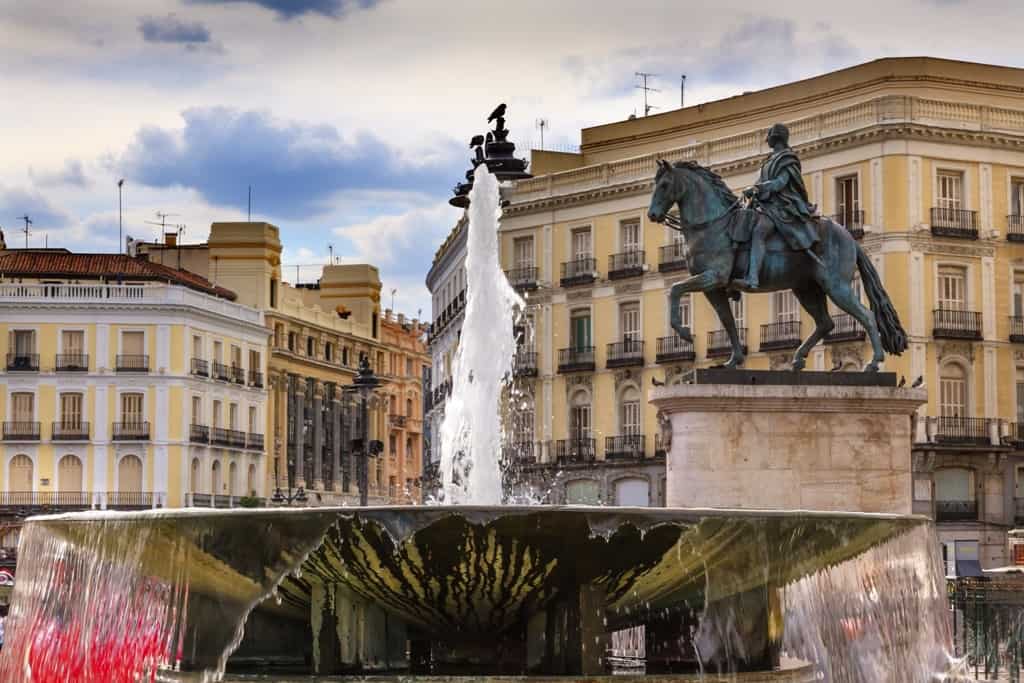
A great place to spend an afternoon or an evening – this place is the perfect way to check out shops, bars, restaurants and nearby parks. Whether you want to take a picture of the country’s kilometer 0, or enjoy the quintessential Casa de Correos or El Oso y El Madroño, you’ll be able to do both there!
Chocolateria San Gines

If you’re in Puerta del Sol, then you have to pass by Chocolateria San Gines. A churros place that looks the same since 1894 (yes, you heard that right!)and is open for 24 hours a day. Perfect for either a quick snack after a night out, or just a break from exploring…Who would say no to a rich and smooth chocolate that you can dip your churros in?
Day 5 Madrid
Retiro park.
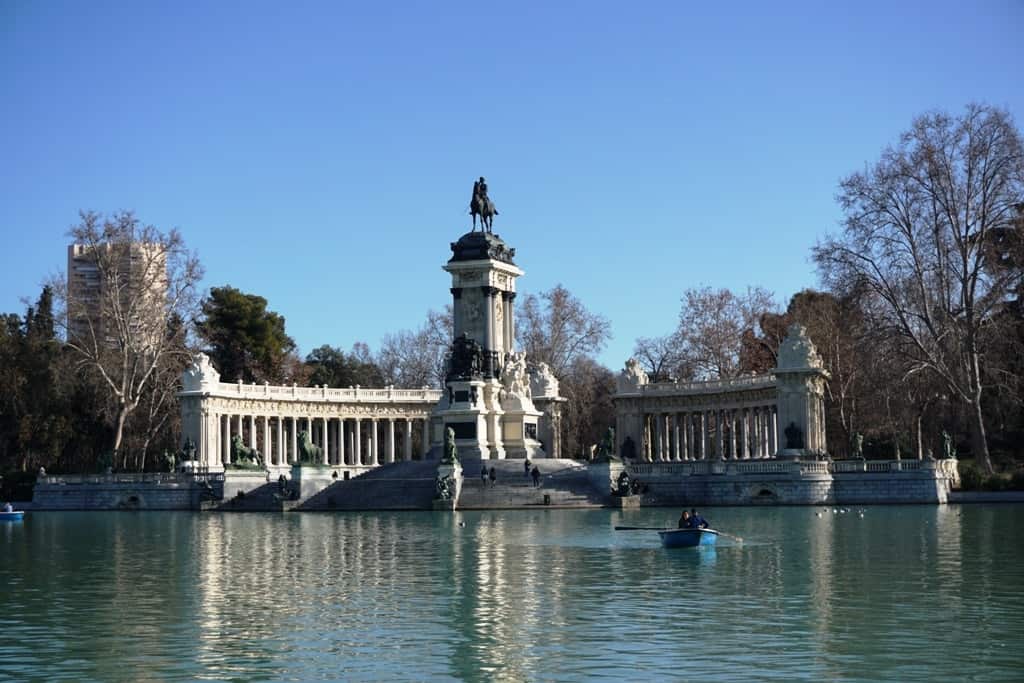
Retiro Park is the breathing lungs of Madrid, once a royal park, El Retiro now houses exhibition halls, gardens, and palaces. After soaking in the sun and the abundant greenery, make sure to visit these places:
- Velazques Palace
- Crystal Palace
- Monument to Alfonoso XII
- Walk of Argentina or the Walk of Statues
- Jardines de Cecilio Rodriguez: an enclosed garden with a lot of peacocks.
- Palacio Cristal
There are many museums in Madrid. I don’t think you will have time to visit all, but you can choose one or two depending on your taste. My favorite is Prado.
Reina Sofia
One of the most important museums in Madrid, the Reina Sofia is a great place to get a taste of Spanish contemporary art and get your dose of art and culture. From Dali to Miro to Juan Garis – there are over 20,000 works of art that it will be impossible for you to finish in just a day. You have to choose which floor you want to explore or which sort of artwork you want to get into.
Book a Reina Sofia Museum Tour.
Museo Thyssen-Bornemisza
The breadth of the collection is unparalleled as well. 1000 paintings that range from the 13th century up until the 20th century. You have to explore Museo Thyssen from the top floor and work your way downwards. You’ll find medieval art, Italian, German, and Flemish works by Monet, Picasso, Juan Gris, and much more.
Book your Museo Thyssen- Bornemisza tickets.
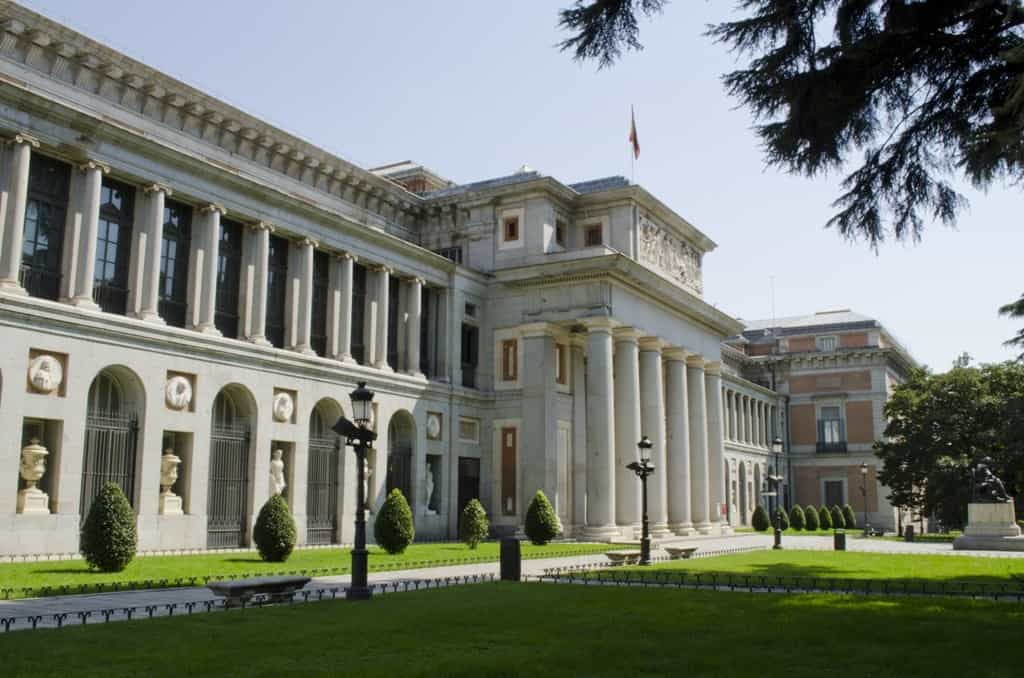
El Prado is easily the most famous museum in Madrid, hence why you save the best for last! 8600 paintings dot the place that ranges from 18th-century neo-classical sculptures to some of the most famous paintings in Europe including Las Meninas and the Triumph of Bacchus by Velazquez, the Naked Maja by Goya, the Garden of Delights by Bosch.
Click here to book your skip-the-line tickets or guided tour.
Now if you are a football fan, definitely visit:
El Bernabeu Stadium
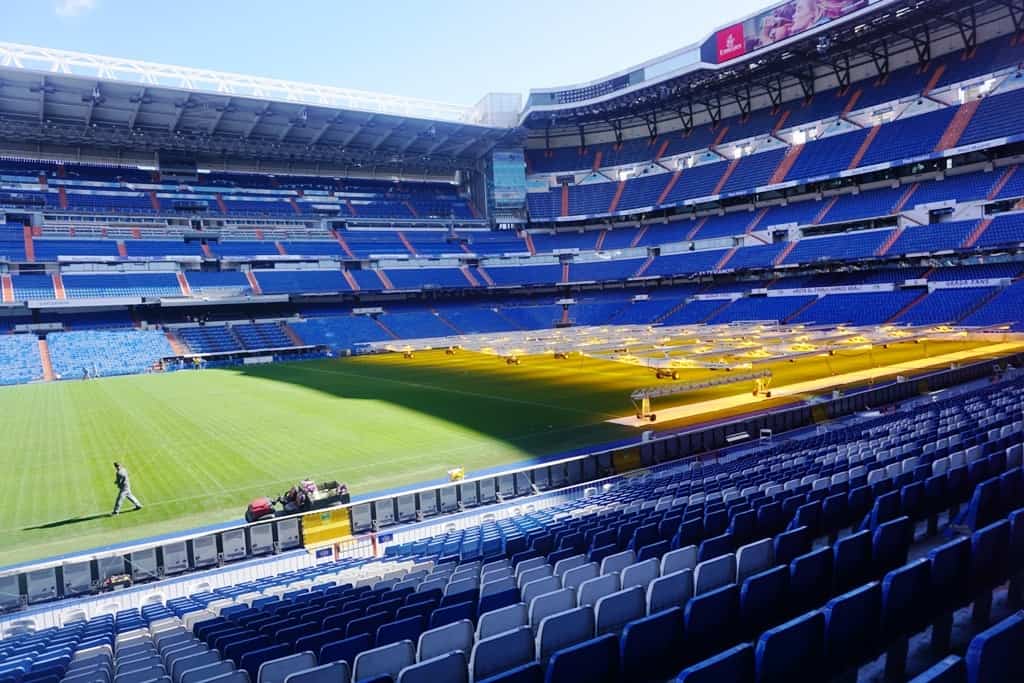
One of the world’s most elite stadiums is Bernabeu, a UEFA-classified stadium that is essential to every football fan in the world. From touring around the presidential box to getting panoramic views of the whole stadium – if you’re a football fan you’ll find this a treat!
Book here your skip-the-line tickets and tour to Bernabeu .
You might be interested in: 3 days in Madrid .
Day 6 Day trip to Toledo
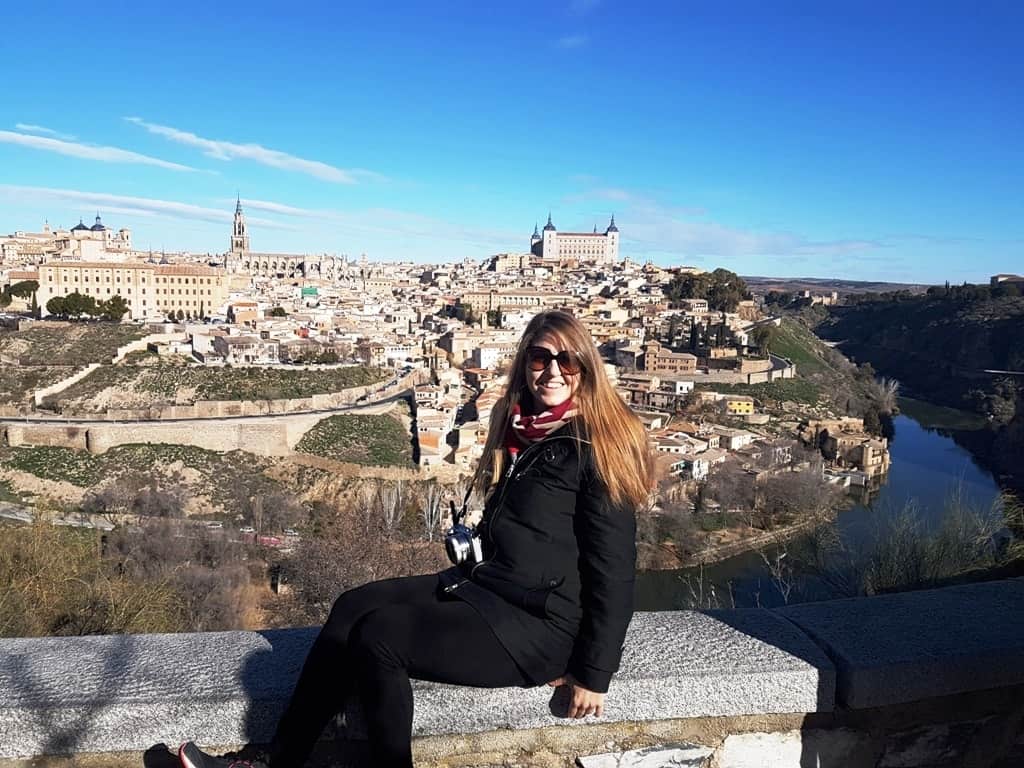
Take the train from Madrid to Toledo, which will take you about 33 minutes!
Alternatively, you can book a guided day trip from Madrid.
Toledo Full-Day Tour from Madrid. Toledo & Segovia Tour from Madrid with Alcázar Ticket
Here are some of the things you can do while you’re there:
The city of three cultures: Christian, Muslim, and Jewish, Toledo is a magnificent city that effortlessly blends mosques with gothic cathedrals; canvases of el Greco contrast the city’s glory and the city oozes in picturesque charm.
The Toledo Cathedral
The Toledo Cathedral is an incredible place in Spain and is one of the three 13th-century High Gothic cathedrals in Spain and is considered to be the epitome and personification of Gothic architecture and culture in Spain. You can check out the Chapter House, Choir, Treasury, and Sacristy. The cathedral took 286 years to build, and it towers 100 meters into the sky, creating a backdrop to the Plaza del Ayuntamiento.
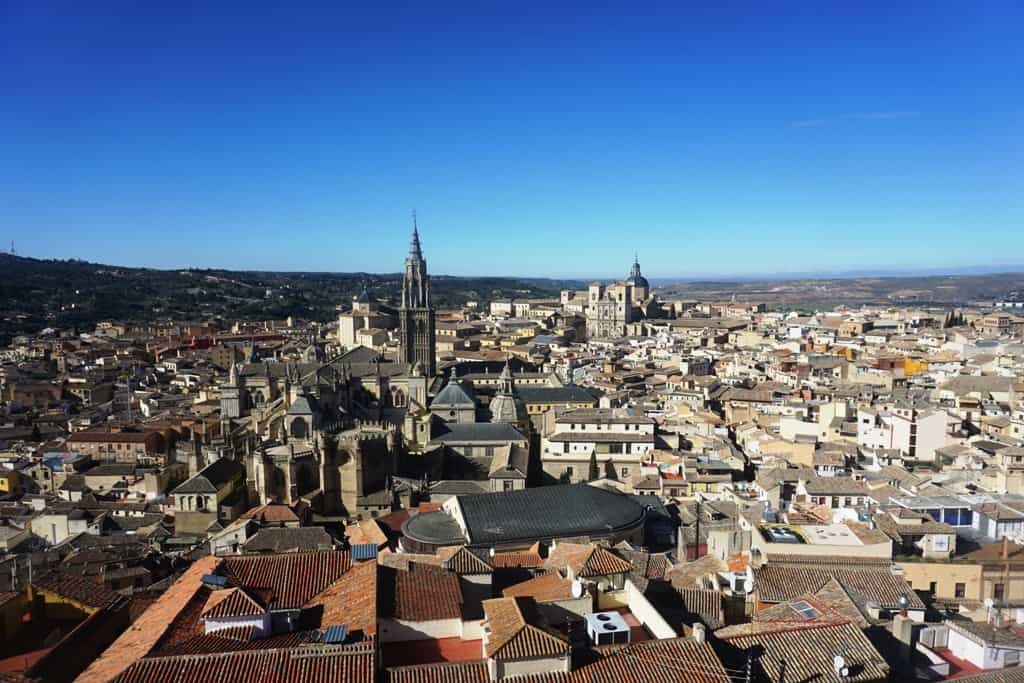
Once a stone fortification, Alcazar de Toledo is located at the highest point of Toledo. A roman palace that has been renovated multiple times – this place contains such an immense amount of history you will love the overload of it all.
You’ll find displays of uniforms, medals, military artifacts and a mixture of Islamic and Christian architecture and monuments blending together. You’ll even see the central patio, Moscardo’s office with bullet holes, and a lot more!
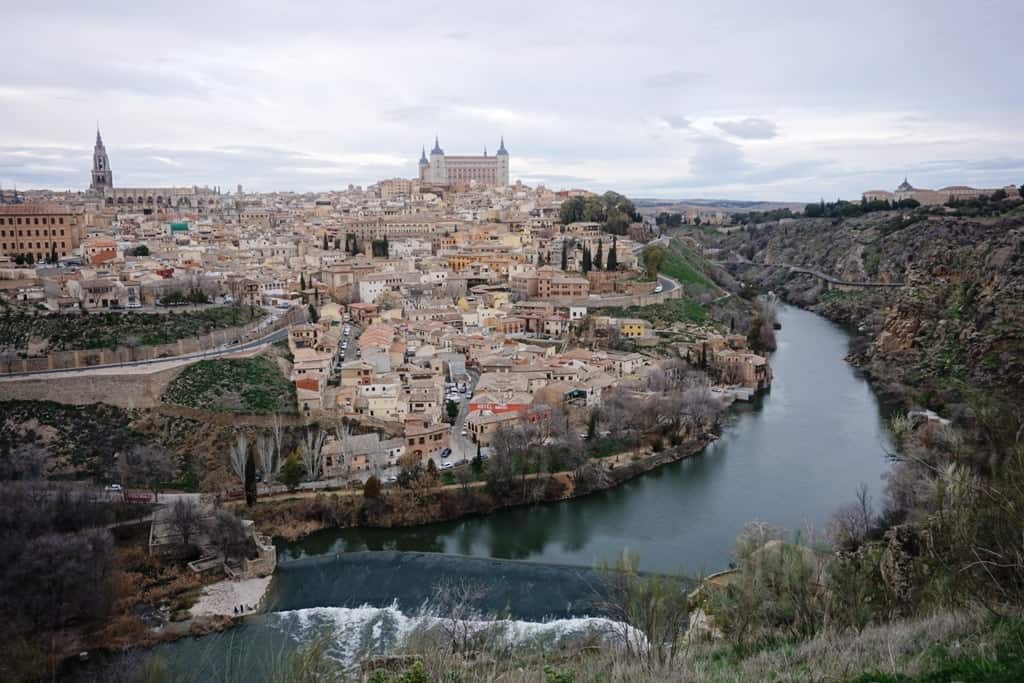
Museum of El Greco
A museum that contains all sorts of paintings by artists from the Spanish Golden Age, the Museum of el Greco is not only rich with artifacts, but it is also housed in a gorgeous Gothic house with a courtyard. You’ll find, of course, works by El Greco himself, along with a dozen other painters. This is how you get to explore the era of the 16th and 17th centuries with its furniture, ceramics, and travesties.
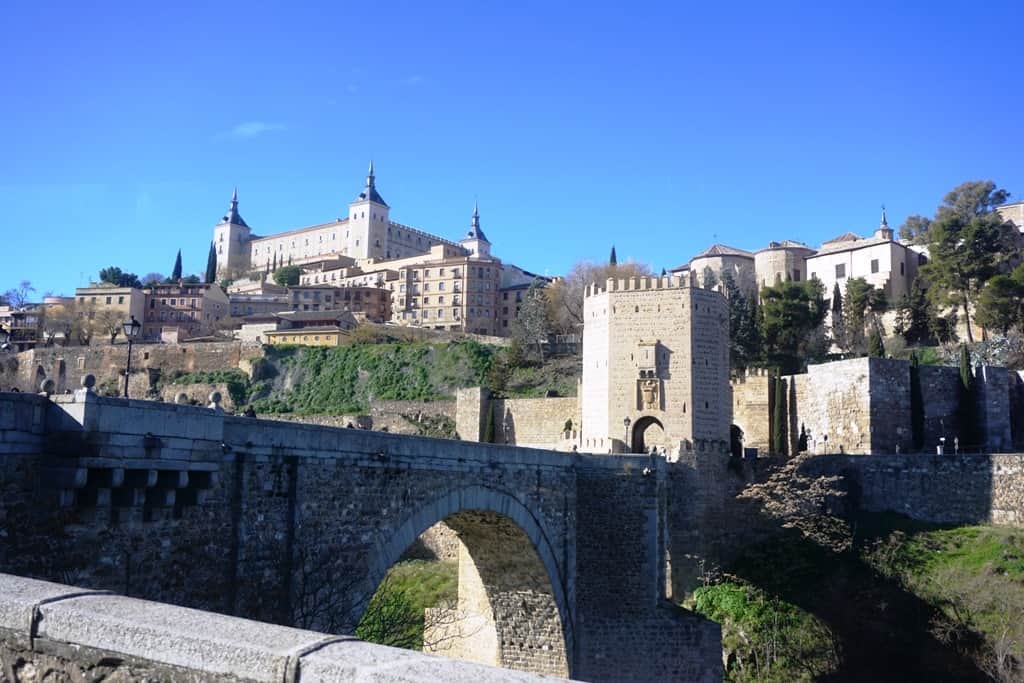
Day 7 Madrid – Seville
You can either fly to Seville (1 hour) or take the train (2 h 20 minutes). Seville, home to flashy flamenco skirts, dancers, tapas, and a fiery passion unlike any other – Seville is so quintessentially Spanish. No other place in the world embodies the Spanish culture, as well as Seville, does. The perfect place to truly enjoy some good old Spanish authenticity.
Where to stay in Seville
Hostal Plaza Santa Cruz For the easy-going traveler, this is the perfect place to be in. free luggage storage, free Wi-Fi, a guest-house feel, and access to rooftop terraces all the time – this place is the definition of cozy. Click here for more information and to check the latest prices. Hotel Fernando : Located right in Seville’s historic center, you get the perfect mixture of hotel amenities including free WiFi and modern rooms, along with your perfect dose of history. The hotel also has a rooftop terrace that offers incredible city views, a swimming pool for those hot summer days, and rooms with balconies! Click here for more information and to check the latest prices. Hotel Alfonso XIII Outdoor swimming pool, a gym, garden fountains, and beautiful elegant rooms that boast Arabic designs, this hotel is the personification of Seville’s heart and soul. Click here for more information and to check the latest prices.
Plaza de Espana
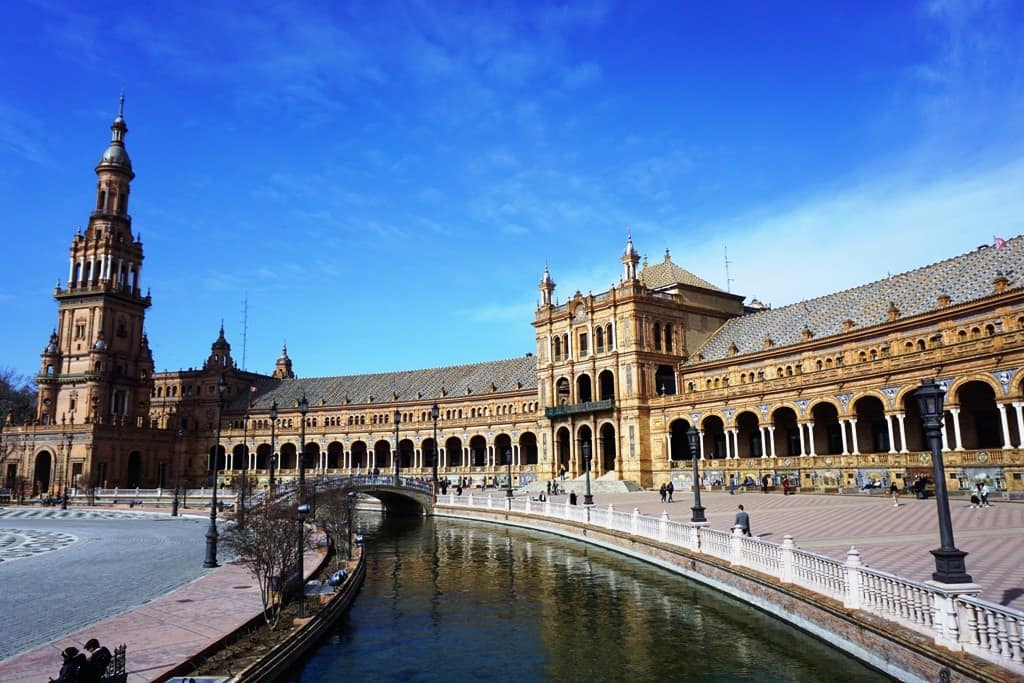
Built in 1929, this plaza is home to some of Spain’s biggest accomplishments when it comes to architecture and when it comes to boasting the accomplishments of the industry.
The plaza is a quintessential Spanish paradise with orange bridges, artifacts that reminisce over kings that long died, 48 pavilions that decorate the beauty of the place, and archeology museums that steal the show.
Cathedral of Seville
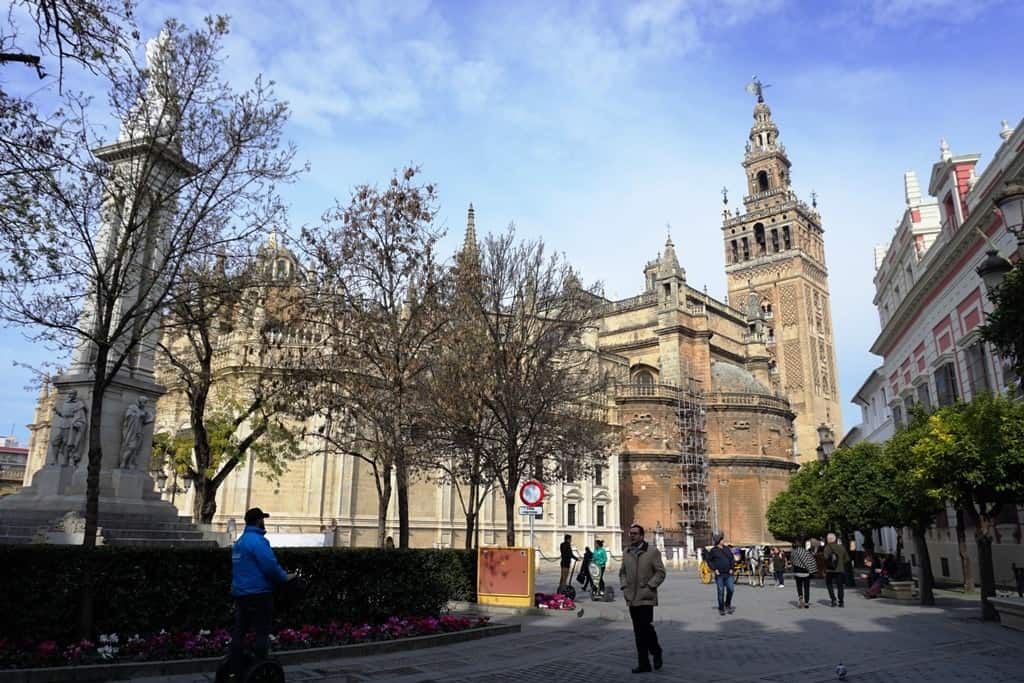
The Cathedral of Seville is a gothic church that was actually once a mosque and was transformed into a church. You’ll find all the evident Moorish influences with their sculptures, artifacts and paintings, and fountains but you’ll also find all the signs of a church, making it an otherworldly, eccentric, yet beautiful mixture unseen anywhere else.
The Giralda Bell Tower
The Giralda Bell Tower is what’s left of the Moorish Seville cathedral. A beautiful entrance that’s decorated with an ornate fountain, you’ll find that the cathedral is a great religious monument mixing both religions together. Renaissance influences blend beautifully with Moorish splendor.
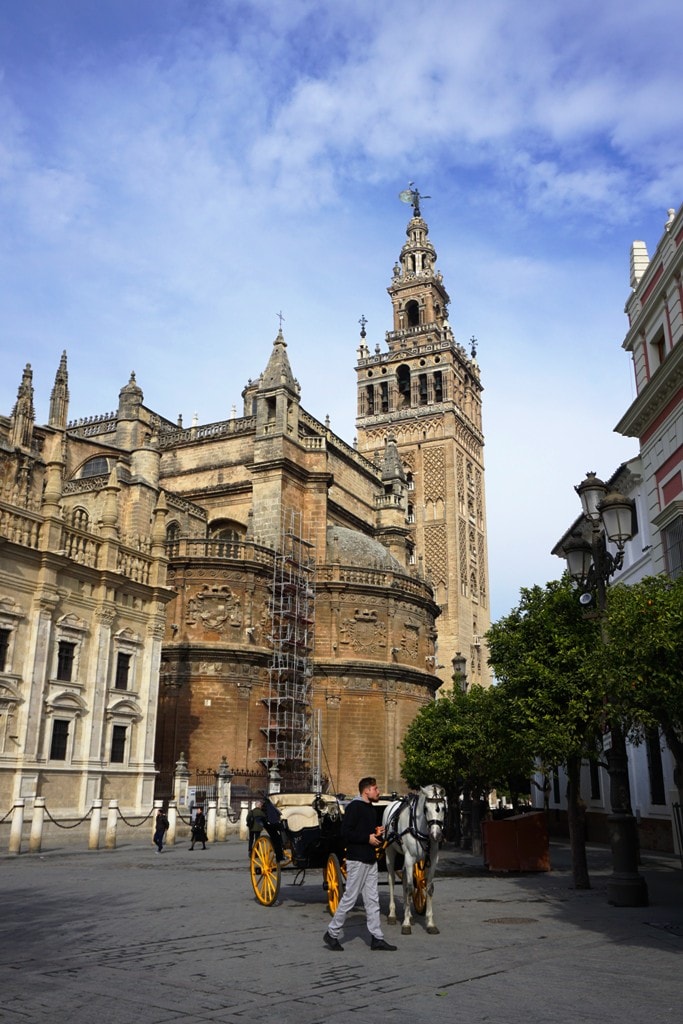
The Alcazar is one of the most beautiful royal palaces in all of Spain – an iconic monument that shows the effects of the historical evolution of the city of Seville and of Spain in general. It was developed by Moorish Muslim Kings and the Mudejar architecture is at its most intricate everywhere in the palace. This is actually one of the most visited complexes in the world, a place where culture and educational activities both blend together to put you in awe!
Tip: The lines are huge to enter the Alcazar, I had friends who didn’t even get in after waiting for hours, so book your tickets and tour in advance.
Check here for more information and to book your guided tour to the Alcázar. If you are interested in a guided tour that includes the Alcázar, the Seville Cathedral, and La Giralda I recommend a guided tour of the Alcázar, Seville Cathedral, and La Giralda.

Setas directly translate to mushrooms and lie in the center of Seville. This is one of the biggest wooden structures in the world and has a museum, a marketplace, and even a public park. You have to watch the sunset from there, where you’ll get to enjoy some of the best views of Seville from up there.
Torre del Orro
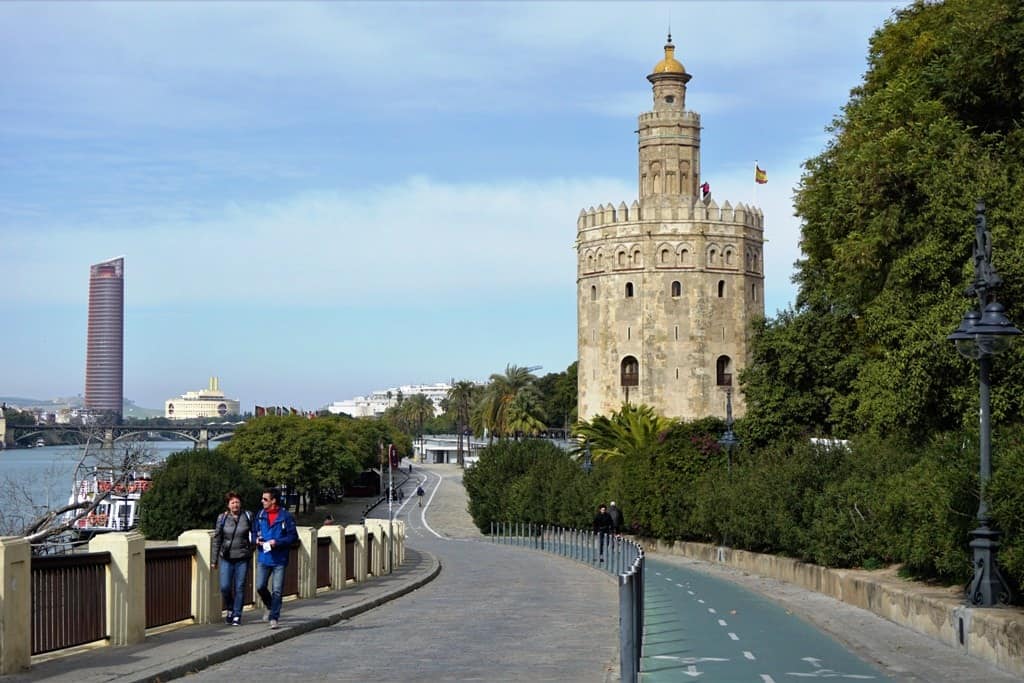
This military watchtower is right in the heart of Seville as well. Back then, it was supposed to protect Seville from Christian attacks. Built in the early 13th century, it remains one of the most important monuments in Seville up to this day.
If you have time, you can cross the river and stroll in the Trianna neighborhood. A great place to watch a flamenco show.
Trianna neighborhood
The Trianna is an emblematic neighborhood in Seville, beautifully typically Spanish, and is definitely one of the best places to eat, drink and shop! You’ll get to eat tapas like a local, watch some good old flamenco, and even visit the Museum of Tolerance r the ruins of the San Jorge Castle. It’s actually known as the “independent Republic of Triana.”
Attend a flamenco show.
It would be a waste of time if you went to Seville without enjoying some of its amazing flamenco, so better head to a flamenco bar and enjoy the melancholic yet energetic form of dance and culture!
Book your tickets for the Pura Esencia Flamenco Show in Triana.
You might also want to read: How to spend one day in Seville and how to spend 2 days in Seville.
Day 8 Seville – Granada
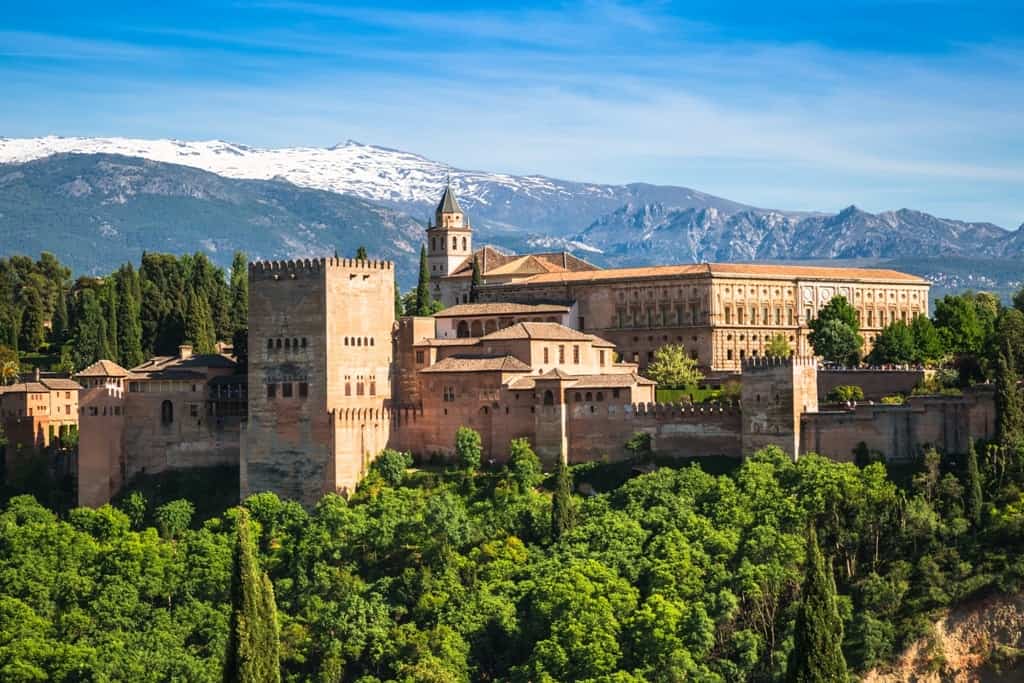
Take a train from Seville to Granada, which will take you about 4 hours, and then find some time to settle down at your hotel. You have two days in Granada, so you don’t need to be in a rush!
Where to stay in Granada
Gar Anat Hotel Boutique It is a cozy hotel that gives off a vibe of Granada’s architectural spirit but also has calm, cool, and beautiful rooms with a Granada-styled courtyard for your morning cup of coffee. The hotel is also 5 minutes away from Granada Cathedral. Click here for more information and to check the latest prices. Hotel Granada Center One of the most renowned hotels in Granada, the Hotel Granada Center is only 10 minutes away from the old town and has free Wi-Fi, great rooms, and an a la carte restaurant. You’ll also be 10 minutes from the Granada Cathedral! Click here for more information and to check the latest prices. Alhambra Palace This hotel has a location unlike any other. You’ll be enjoying the Moorish-inspired décor in the hotel while being minutes away from the massive walls of the Alhambra Palace. Mediterranean cuisine, a terrace with a garden and panoramic views, and the perfect reflection of Moorish architecture and Arab designs. Click here for more information and to check the latest prices.
Granada Cathedral
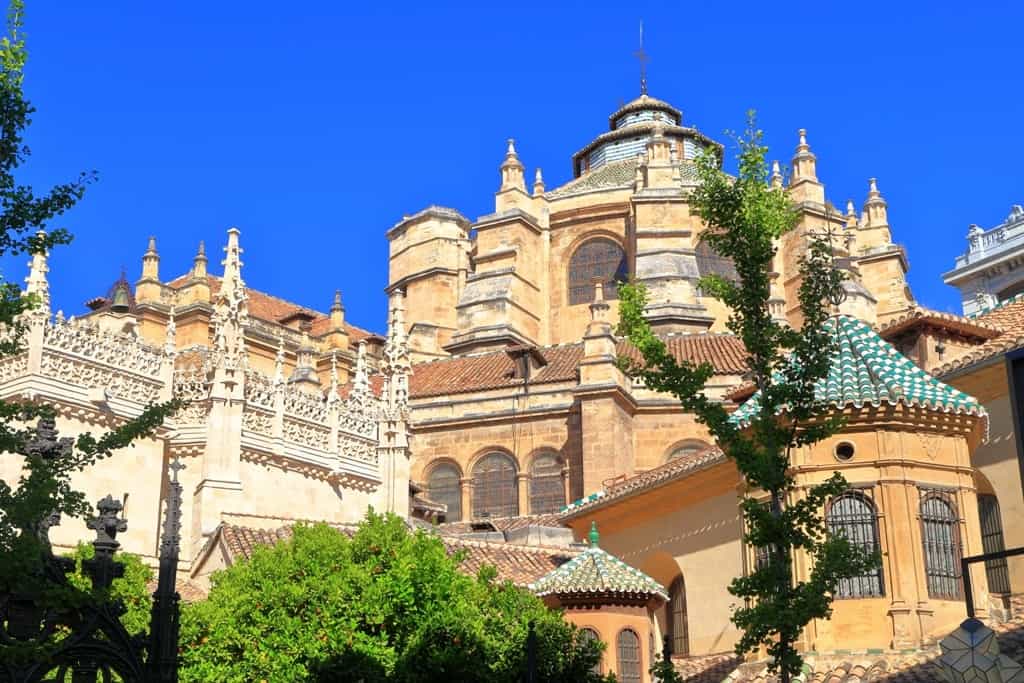
This is simply the fourth largest Cathedral in the world, an incredible personalization of the true meaning of Spanish Renaissance architecture and mixing with Gothic styles. This cathedral was built in 1523 and was actually the place of a previous mosque.
Royal Chapel
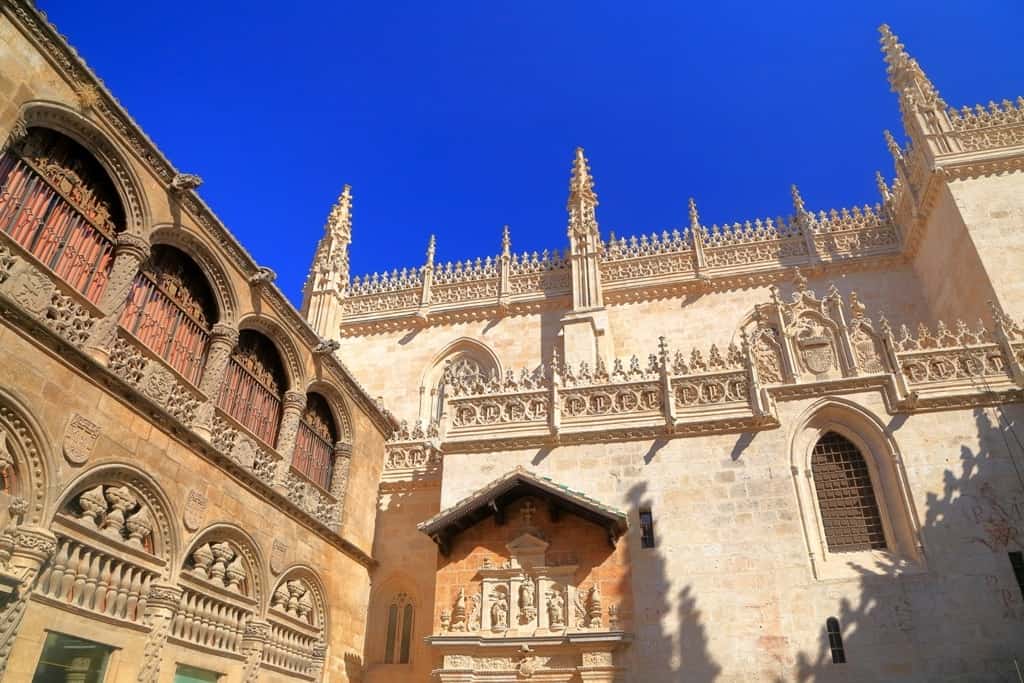
The Isabelline-style building contains the tombs of the monarchs: Isabel, Ferdinand and Juana, and Felipe. Intricate designs, gold altarpieces, and beautiful interiors all make the Royal Chapel a quintessential piece of Granada’s architecture.
Albayzin Neighborhood
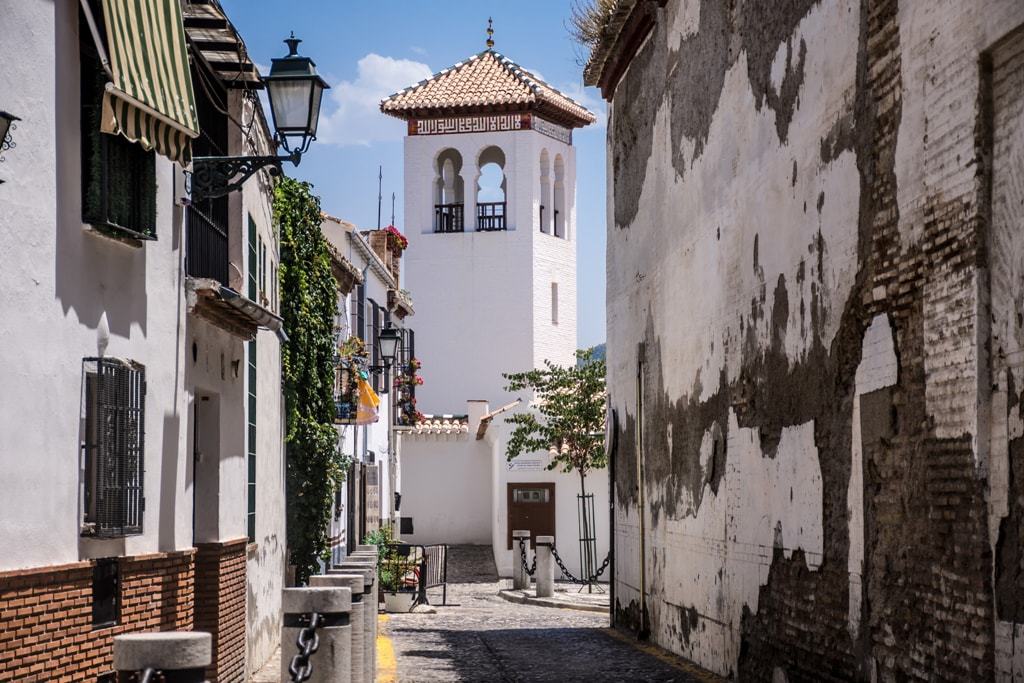
Head over to the Albayzin neighborhood after you’re done exploring the church and the chapel. Get ready to be transported to one of the most typically Arab souqs in the world – one where the smell of Arab spices seeps through the thousands of clashing colors, and where you can have little strolls around spice shops, have the ultimate Arab experiences, watch traditional houses and get the typical smell of Arabian coffee.
Day 9 Granada
The alhambra.

A 700-year-old fortress, an icon of Spain, an icon of Islam and Christianity, and even of Europe – the Alhambra is one of the most magnificently striking monuments you will get to see in the world. Majestically standing over the city with the snow-peaked Sierra Nevada in the backdrop, the Alhambra is iconic in every way.
From the lush landscapes and the rustling leaves, there is no Muslim palace as old as the Alhambra, and you even get to indulge in the major history lesson you’ll get just by being there. The palace was built in the 13th century, ruled by Nasrid Dynasty for 250 years, and then taken over later on.
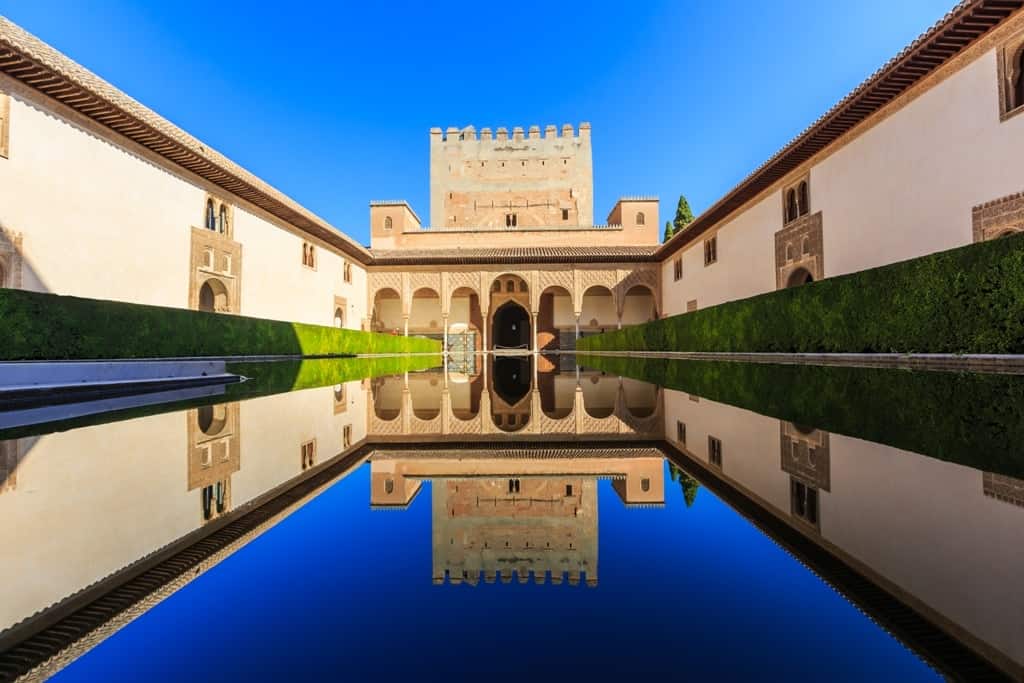
You have to check out:
- The Alcazaba (the oldest part of the fortress)
- The Courtyard of the Lions
- The Nasrid Palaces
- The Sala de los Anencerrajes
- Sala de los Reyes
- Museo de Bellas Artes
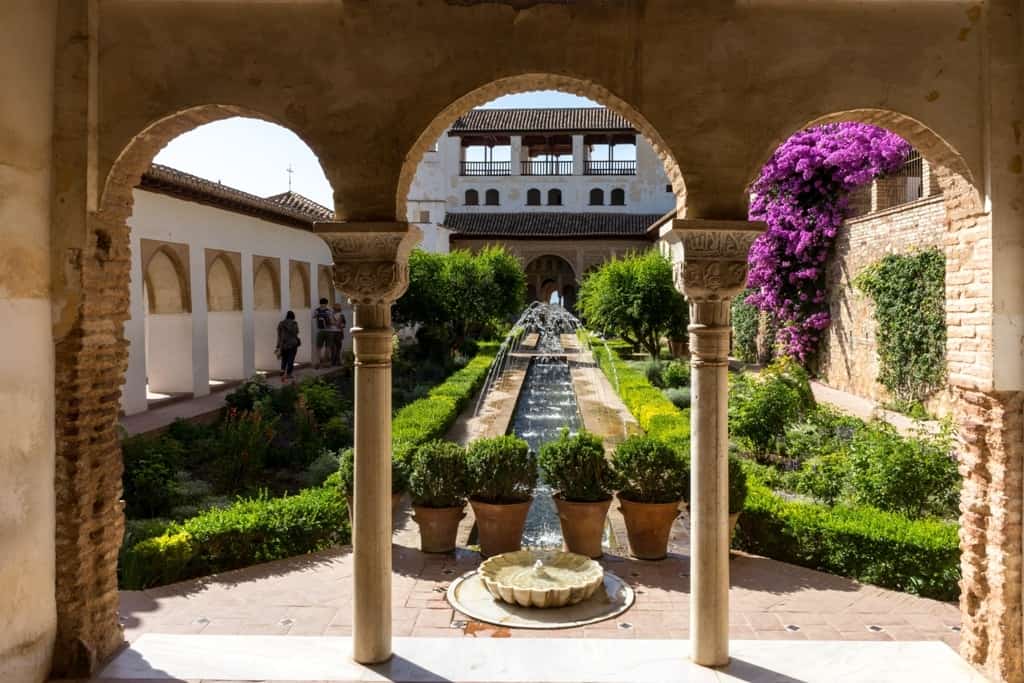
The Quran very accurately describes what heaven would look like, and it’s a major part of the Islamic religion for all Muslims. That’s why the Palacio de Generalife was modeled according to the depiction and description of paradise in the afterlife. The place is teeming with terraces, grottoes, flowerbeds, and fountains and is blessed with the backdrop of the Alhambra behind it.
Tip: The lines are usually big; to save time and get to see the Alhambra book your tickets and tour in advance.
Book your Skip-the-Line Alhambra & Generalife 3-Hour Guided Tour
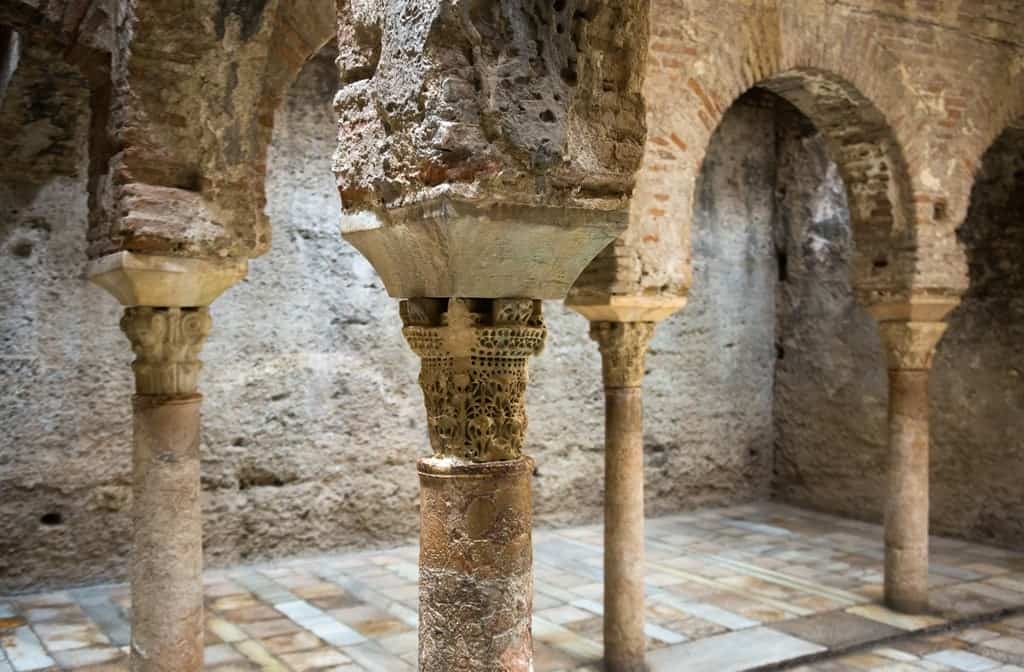
The Bañuelos was a major part of the Muslim community. That was where locals used to go hang out; people got haircuts, and women got a chance to actually get outside of the house. You can see the 11th-century Arab baths and also visit the three different rooms:
Plaza Nueva
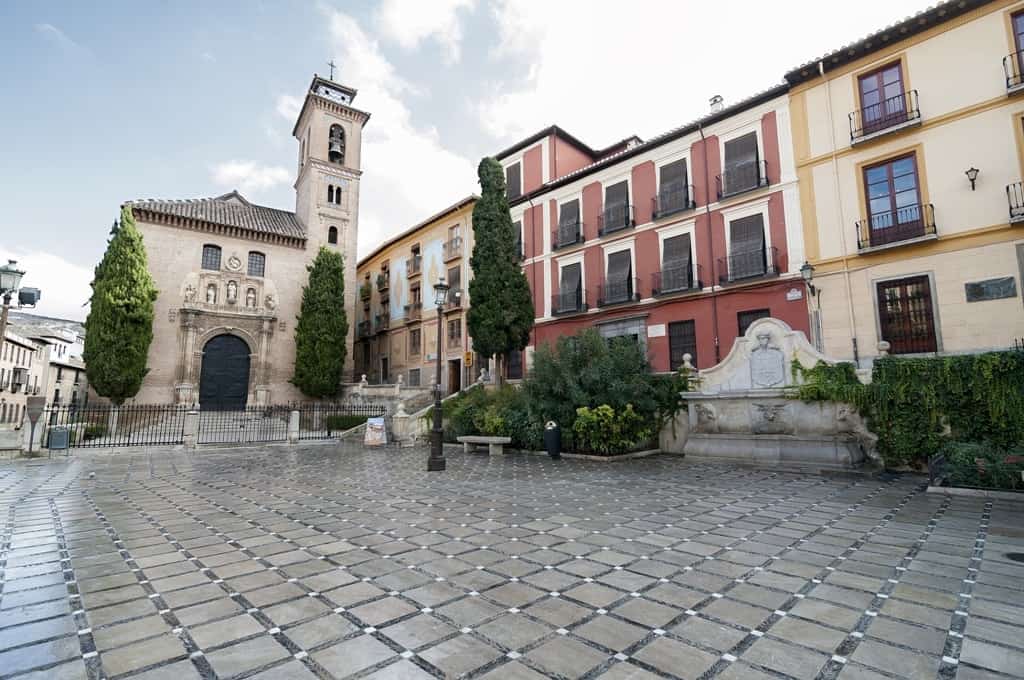
This is the oldest center in Granada and is the absolute center of the city from a touristic point of view. On one side, you have Torre de le Vela, and on the other you have Alhambra. It was formerly one of the most important parts of the cities and is now a meeting place with several fountains and cafés.
Check out: How to spend 2 days in Granada.
Day 10 Flight back home
This is the day you finally fly from Granada and Spain back to your home! I hope you enjoyed your 10 days in Spain and will come back for more.
TRAVEL TIPS
🚗 Rent your car in advance
with Rentalcars and make your trip as convenient as possible
✈️ Book your flight in advance
To find the cheapest flights and most suitable option, use WayAway
🧾 Get your tickets and tours
with Viator and get the most out of your journey
Sharing is caring!
7 thoughts on “10 Days in Spain, Itinerary for First-Timers”
Thank you soo much for sharing this post! I’m planning a trip to Spain in the fall and you gathered everything that I needed.
Happy to have helped. Don’t hesitate to contact me for further information.
I enjoyed reading your itineary. Can you please tell me how much this trip costs? Also did you book any tours or did you just go around the cities by yourself?
Thank you. The price of this trip depends on many factors, the time of year you will go, what kind of hotel you will choose etc. I usually book my tours through Get Your Guide to avoid the queues that are really big in many attractions. I moved between the cities by plane and train mostly.
This is truly helpful. I see that your day 7 is partially spent on travelling from Madrid to Seville which, as you stated, will take 2 hrs 20 mins by train and I see that day 8 is partially spent on travelling from Seville to Granada which makes me think that the time spent in Seville is less than 24 hrs if someone arrives one day and leaves the following day. Will that comfortably be enough to see majority, if not all, of the places you recommended to visit in Seville? I plan to travel with my 2 teen-aged sons. Thank you.
Hello Glenda,
Yes you can see the places I have mentioned in a day, I have done it myself. Seville is a compact city easy to walk. You just need to book your entrance to the Alcazar and Seville cathedral.
Great post on Spain! Now, I’m ready to plan another trip.
Leave a Comment Cancel reply
Save my name, email, and website in this browser for the next time I comment.
Be prepared to visit Spain with these 16 things to know before you go

Jun 21, 2023 • 6 min read

Here's what you need to know to get ready for a trip to Spain © Flashpop / Getty Images
Spain has been home for the past 16 years, ever since I moved to its capital Madrid in my early thirties.
From day one, it was easy to be charmed by this warm and inviting country . It ticks a lot of boxes in terms of what you’re looking for in a European destination – great cuisine and wine , spectacular landscapes , architectural gems, green spaces and a thriving art scene.
Getting around the country is also very convenient, thanks to Spain's efficient and reliable multi-modal public transport system . And the Spanish people are some of the friendliest locals, who will happily go out of their way to point you in the right direction if you’re lost.
Of course there were still some cultural quirks I had to adjust to – for one, eating times in Spain are very late in comparison with the rest of the world's dining schedules. I still remember my early days in Madrid when my belly would be in outright rebellion while waiting for “early” dinner reservations at 9pm. And forget about making a speedy exit from social gatherings; in Spain saying farewell could take up another hour of your time.
Cultural idiosyncrasies aside, your trip to this incredible country can be your most memorable one yet if you plan well ahead, and follow these useful travel tips.

1. Pack warm clothes. Really.
There is a humorous Spanish expression that goes, “Hasta cuarenta de mayo, no te quites el sayo” , which translates to “Until the 40th of May, don’t remove your coat” – sage advice to keep a jacket handy until mid-June. While Spain may be famous for its blue skies and sun-drenched beaches, it actually has more colder seasons in the year than warm ones, during early spring (March to May), autumn (September to November) and winter (December to February). Regions in northern Spain, such as the Basque Country, Asturias and Galicia, have cooler temperatures compared to the rest of the country.
2. Being cashless is common
Card is king in Spain. The main tourist hubs such as Madrid, Barcelona , San Sebastián and Ibiza are generally credit card-friendly destinations. In fact, you could go cashless for days and pay for your meals, drinks, taxis and bus fares without a problem using a credit or debit card.
If you do bring cash, make sure you have loose change. Several establishments, bus and taxi drivers, especially on morning shifts, usually do not have change for bigger bills. So if you prefer paying cash, it’s a good idea to be stocked up on smaller bills (€5 and €10) and coins.
3. Choose your time to visit Madrid wisely
Think twice about visiting Madrid in August . Most establishments in the Spanish capital close, and Madrileños usually head for the beaches to escape the brutal August heat .

4. Expect to eat late
Prepare for late Spanish dining times. Many tourists who come to Spain for the first time end up hungry while waiting for restaurants to open. Most restaurants open for lunch from 1pm to 4pm, and dinner from 8pm to 1am. A lot of establishments also close on Mondays. You can stave off hunger pangs before mealtimes by snacking on tapas – small savory plates that are usually free with a drink order in many Spanish cities. In San Sebastián or Bilbao in the Basque Country , you can savor pintxos , or bite-sized portions typically served on a slice of bread and skewered with a toothpick.
5. Ordering certain drinks will immediately mark you as a tourist
A popular drink among tourists, sangría is usually served in pitchers meant for sharing, and not by the glass. Instead, try ordering a local favorite that’s similar to sangría, tinto de verano , a concoction of red wine and lemon soda.
Ask for a caña like a local instead of a cerveza . A caña is a small glass of beer on tap (about 250ml).
6. Tipping is not expected
European countries in general don’t have a tipping culture. But of course, it is very much appreciated – especially if you enjoyed good service.
7. Don't eat food while you’re on the move
Eating is an age-old pleasure that must be savored unhurriedly, so it’s uncommon to see Spaniards biting sandwiches or munching on fries while walking down the street or riding public transportation.
8. Look for fixed-price lunches
Order the menú del día (daily menu) for lunch on weekdays. Take your cue from the locals and ask for the fixed-price menu (ranging from €8 to €17) that includes a three-course meal with dessert, drinks, bread and coffee.
9. Eat late, stay late
Make time for sobremesa – lingering long after a meal for a post-dining conversation. This is a hallmark of sociable Spanish culture, to extend conversations well beyond mealtimes to be able to enjoy each other’s company for as long as possible, usually over drinks.
10. Keep an eye on your belongings
Be vigilant of pickpockets and keep your belongings close. Pickpockets are unfortunately rampant in high tourist traffic areas. If you’re sitting at an outdoor table, watch out for vendors that get suspiciously close and distract you with their items for sale, such as flowers or lottery tickets, while they surreptitiously steal your wallet or mobile phone on the table (this is a modus operandi I’ve witnessed more than once!).
11. You can drink tap water in Spain
Go ahead and drink the tap water. Spanish tap water or “agua de grifo” is safe to drink, though the taste varies across regions.
12. There's one number for an emergency
Call 112 for any emergency. You can contact this number for any kind of emergency in Spain, even without a Spanish SIM card on your mobile phone. You’ll be connected to the right emergency service through multilingual operators. To contact the Spanish National Police, dial 091.

13. Dress appropriately when away from the beach
Opt for smart casual attire and avoid overly casual outfits like athleisure wear, beachwear, or excessively revealing clothing in the city. If you’re visiting religious sites such as churches, cathedrals or mosques, cover your shoulders and knees to show respect for these places.
14. Brush up on basic Spanish
Like any destination, it helps a lot if you know basic local phrases. While you can get by speaking English in the bigger, more touristy cities, it is a different story when visiting smaller, lesser-known towns outside the tourist radar.
Don't say “no problemo”, which is incorrect. The correct phrase is “no hay problema” or more colloquially, say “no pasa nada” .
15. Know what is considered polite
Greet people, even strangers. It’s commonplace to greet people in elevators, shops and along hallways. Compliment good service by saying “muy amable” . Meaning “very kind”, this is a commonly used polite phrase to express gratitude for someone’s helpfulness. It can be said in different situations – if a person has gone out of their way to assist you, like giving you directions, holding a door or giving up their seat for you. You can also say this to show your appreciation for customer service that goes above and beyond.
16. Don’t leave a social gathering without saying goodbye
It is generally frowned upon to leave an occasion without letting your host know. However, be prepared for a long, drawn out goodbye – the Spanish are highly sociable people who like extending conversations, leading to lengthy, and often multiple stages of farewells.
Explore related stories

Destination Practicalities
Aug 16, 2024 • 9 min read
From wandering the ancient streets of the old town to where to eat and sleep, we've got everything you need to know before your first trip to Genoa.

Jul 31, 2024 • 5 min read

Jul 22, 2024 • 6 min read

Jul 19, 2024 • 5 min read

Jul 11, 2024 • 17 min read

Jun 28, 2024 • 5 min read

Jun 26, 2024 • 6 min read

Jun 17, 2024 • 6 min read

Jun 12, 2024 • 12 min read
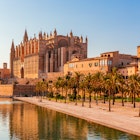
May 30, 2024 • 9 min read
- Search Please fill out this field.
- Newsletters
- Destinations
Your Trip to Spain: The Complete Guide
- Best Time to Visit
- Weather & Climate
- Top Destinations
- Getting Around Spain
- One-Week Itinerary
- Top Things to Do
- Top Attractions in Each City
- Best Beaches
- Events and Festivals
- UNESCO World Heritage Sites
- Food to Try
- Drinking in Spain
TripSavvy / Daniel Gioia
What draws nearly 90 million visitors to Spain—the second most-visited country in the world—year after year? Some of them might come for the wild hustle and bustle of the country’s largest and most dynamic cities, Madrid and Barcelona. Others, for the idyllic whitewashed villages set against craggy hills, or the thousands of miles of glittering shoreline gracing both the Mediterranean and the Atlantic. Throw in a warm, welcoming culture and excellent food and wine throughout the country, and it’s easy to see why Spain would be anyone’s dream destination.
If any or all of the above sound like your cup of tea (or, more accurately, glass of "tinto de verano"), it’s time to start planning your Spanish getaway. Here’s everything you need to know before you catch your flight.
Planning Your Trip
- Best Time to Visit : Spring and fall both promise mild weather and fewer crowds than the summer high season, making for an enjoyable experience.
- Language : Spanish is the official national language. Galician, Basque, Catalan, and Valencian are all co-official languages alongside Spanish in their respective regions. If you’re visiting a region with a co-official language, making an attempt to say a few words in said language will be appreciated, but Spanish is also spoken and understood everywhere.
- Currency : Euro
- Public Transportation: Large cities like Madrid , Barcelona , and Seville have multiple forms of public transportation, which may include metros, buses, trains, and trams. Smaller cities such as Cordoba may not have a metro but might have bus lines. Villages do not tend to have their own public transportation system. As far as inter-city travel, Spain’s extensive bus and train networks make getting from one place to another a breeze.
- Travel Tip: Don’t be afraid to brave a crowded restaurant or bar on your own. It’s easy to make new friends in Spain where people are naturally friendly and interested in getting to know visitors from other places. It’s very possible that you’ll walk out with a new local friend (or several).
Things to Do
No matter where you are in Spain, one thing’s for sure: you’ll never be bored. Almost everywhere in the country—even in smaller cities—you’ll be able to get your dose of culture at a museum, enjoy the fresh air by strolling through the parks and plazas, and see history up close at any of the country’s many fascinating monuments.
- Visit the “Golden Triangle of Art” in Madrid, formed by the Prado, Reina Sofía, and Thyssen museums.
- Marvel at the colorful wonderland that is Seville’s Plaza de España in the heart of the idyllic Parque María Luisa.
- Take a tour of Barcelona’s modernist architecture scene, the crown jewel of which is Gaudí’s Sagrada Família .
For more ideas, check out our picks for the top things to do in Spain , as well as the top free things to do throughout the country.
What to Eat and Drink
If there’s one thing that comes to mind when you picture Spanish food, it’s probably tapas. You might be thinking of tapas as small plates, but in Spain, the concept of “tapas” refers more to the style of eating than the size of the dishes—it’s all about heading out with friends or family and ordering multiple dishes to share. Many menus will offer three different sizes of a dish—"tapa" (enough food for one person), "media ración" (enough for two or three people), and "ración" (enough for about four people to share comfortably). However, it’s still considered “tapas” even if your group is ordering nothing but full-sized raciones.
And of course, we can’t forget about Spain’s rich and varied drinking scene . From the late morning vermouth hour, to glasses of excellent wine with lunch and dinner, to the post-meal digestif, and Spain’s famous gin and tonics, alcohol comes with its own schedule in Spain. In some places, it’s even completely acceptable to order an alcoholic drink with breakfast (such as in Catalonia, where the most important meal of the day often comes accompanied with a glass of cava). But no matter what you do, just don’t order sangria—the locals don’t really drink it, so if you do see it available at a bar, it’s likely a subpar beverage made for tourists.
Where to Stay
In just about any mid- to large-sized city in Spain, you’ll want to do your research about where to stay, and just about every neighborhood has its pros and cons. Central areas are obviously closer to the heart of the action, but also more crowded, more touristy, and more expensive, which could make them less enjoyable for some. On the other hand, off-the-beaten-path ones might be more of a trek to get to the main sights—thus cutting into valuable sightseeing time—but provide a more authentic experience and better bang for your buck. Deciding which area of the city you decide to stay in on your Spain trip depends on your plans, style, and budget, and your choice of home base can make or break your trip depending on whether or not it aligns with those needs.
Once you decide on a neighborhood, you’ll want to narrow down which Spanish accommodation style best suits you. From luxury private apartment rentals to scrappy backpacker’s hostels, most urban areas in Spain will have a wealth of choices fitting all styles and budgets. For more information on the specific types of accommodation available in Spain, check out our complete article on where to stay on your Spanish vacation .
Getting There
Spain’s two largest airports, Madrid-Barajas and Barcelona-El Prat , are both among Europe’s best-served, so finding flights into and out of the country is easy. If you’re coming from elsewhere in Europe, you might also be able to fly into one of the many other smaller airports in Spain . Coming to Spain by land from elsewhere in Europe is also a possibility, with Barcelona serving as the main hub for international trains and buses from places like Paris and London.
Culture & Customs
Spanish people are known for their warm, friendly, and welcoming manner. When meeting someone new in a friendly situation, don’t be surprised if they lean in to give you the standard "dos besos," or two kisses (one on each cheek). Likewise, the amount of personal space given in Spain tends to be smaller than in countries like the U.S. and the U.K., so be aware that people—even strangers—may stand more close to you than you’re used to.
Money Saving Tips
- Almost all museums in Spain offer free admission on certain days, or at certain times of the day, such as 6 to 8 p.m. most days in the case of the Prado in Madrid. Get a dose of culture and save some euros while you’re at it. Just be sure to plan your visit accordingly, as these free visiting hours understandably draw big crowds that make navigating the museum a bit trickier than under normal circumstances.
- When traveling between cities in Spain, ride-sharing services like BlaBlaCar will often be cheaper than taking the bus or train. Plus, you’ll get to meet a cool new friend and maybe even practice your Spanish while you’re at it.
- Avoid touristy restaurants and head for the local joints instead—ideally at least several blocks away from the nearest major attraction. That doesn’t mean that every restaurant in the immediate vicinity of any monument or museum in Spain is a soulless tourist trap, but generally speaking, you’ll get much better quality food for a fairer price by heading further out. Plus, you can rest assured knowing that the money you spend is going back into the local economy.
- Once you arrive in Spain or are on your way out, take public transportation to the airport rather than a taxi, which can cost several times what you’d pay for the metro, train, or bus to get there. For example, even with the supplemental charge, a metro ticket between central Madrid and the airport costs less than 5 euros, whereas the flat rate for a taxi on the same route is 30 euros.
- If your travel dates are flexible, consider traveling during the low season or “shoulder season” when accommodation prices are lower. These times of year also see fewer crowds than high seasons, so the rest of your trip will be more enjoyable as well.
- Keep an eye out for restaurants offering the "menú del día" at lunch, which gives you multiple courses (usually with a range of options for each), bread, and a drink for an incredibly fair price. In Madrid or Barcelona, prices usually range from 10 to 15 euros, but you’ll pay even less in smaller cities and towns.
- Speaking of food, don’t forget that many places in Spain will give you a free tapa with your drink order—sometimes it's a simple dish of olives or potato chips, but other times, it's more substantial, making it very possible to eat a full meal in some places while only paying for your drinks. Granada, for example, is perhaps the city in Spain with the most generous free tapas.
- If you’re coming from outside the EU and plan on relying on your phone a lot, consider buying a prepaid Spanish SIM card. You can get a decent amount of data, texts, and calls for much less than what you’d pay for an international plan from your home carrier.
For even more Spain budget tips, check out our complete guide to budget travel in Spain .
Related Articles
More related articles.
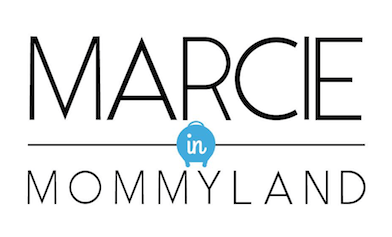
How to Plan a Trip to Spain: Step-by-Step Guide
Posted on Last updated: July 10, 2024
Home » Destinations » Europe » Spain » How to Plan a Trip to Spain: Step-by-Step Guide
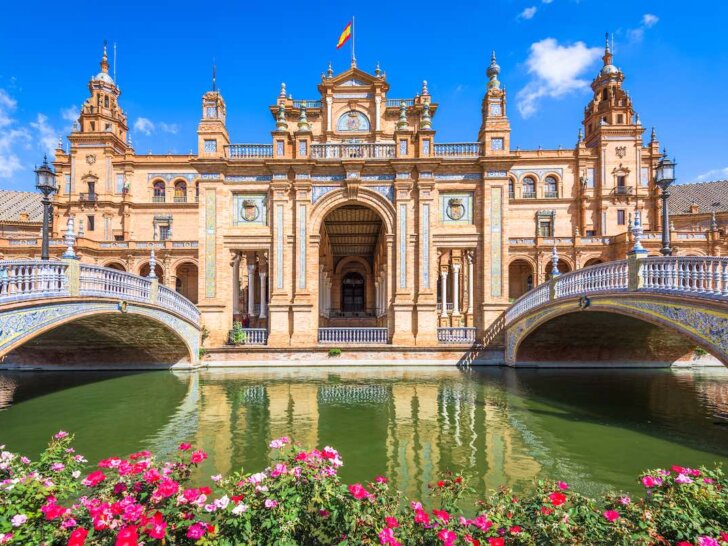
Sharing is caring!
Dreaming of your first trip to Spain? Let me show you exactly how to plan a trip to Spain like a pro!
This post about how to plan a trip to spain for the first time was written by family travel expert marcie cheung and contains affiliate links which means if you purchase something from one of my affiliate links, i may earn a small commission that goes back into maintaining this blog..
Ready to put your High School Spanish to the test and learn how to plan a trip to Spain?
It’s a fantastic choice! Spain is the home of tapas, flamenco dancing, wine regions, colorful architecture by Gaudí or the Moors, and some of the best beaches in the world.
But if you’re planning your very first trip to Spain, you need to make a lot of decisions before you can sip sangria in the sun.
Where are you going to go? When is the best time to go? And what are all the top things to do in Spain that you simply cannot miss but don’t know what they are yet?!
This is an easy Spain trip planner that you can follow as you navigate your way through the Spain travel planning process. It’s super simple to follow and includes all the essential info and insider tips you need to have a fantastic Spanish vacation!
Join our Traveling Europe with Kids Facebook group to get real-time planning advice! JOIN NOW
14-Step Guide on How to Plan a Trip to Spain
Step 1: check your passport and visa requirements for spain.
If you’re visiting Spain for the first time, you might not be aware of your visa and passport requirements.
Most US passport holders will need at least six months left on their passport. Spain is one of the 27 countries in the Schengen Area, so most Americans can apply online for an ETIAS visa waiver to travel there as a tourist.
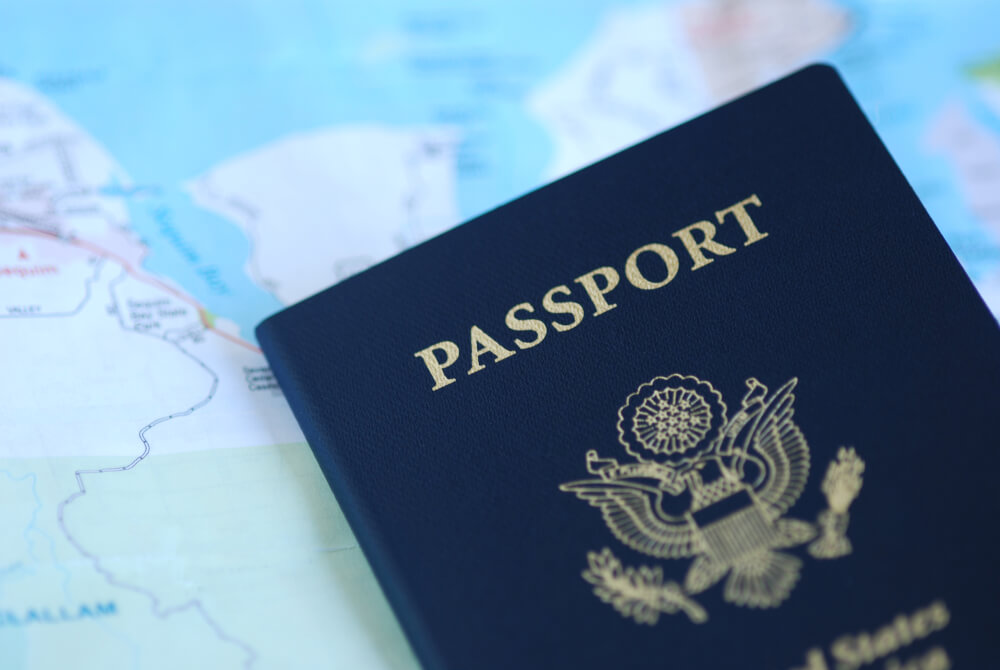
This will allow you to spend 90 days within a 180-day period in any of these 27 countries in the European Union.
Note that you won’t be able to apply for a visa waiver without knowing the address of your first accommodation in Spain . It’s just good practice to check your passport information first in case you have to apply for a new one.
Step 2: Figure out the Length of Your Trip to Spain
Your next task when going through the steps of how to plan a Spain trip is to decide how much time you want (or are able) to spend in Spain.
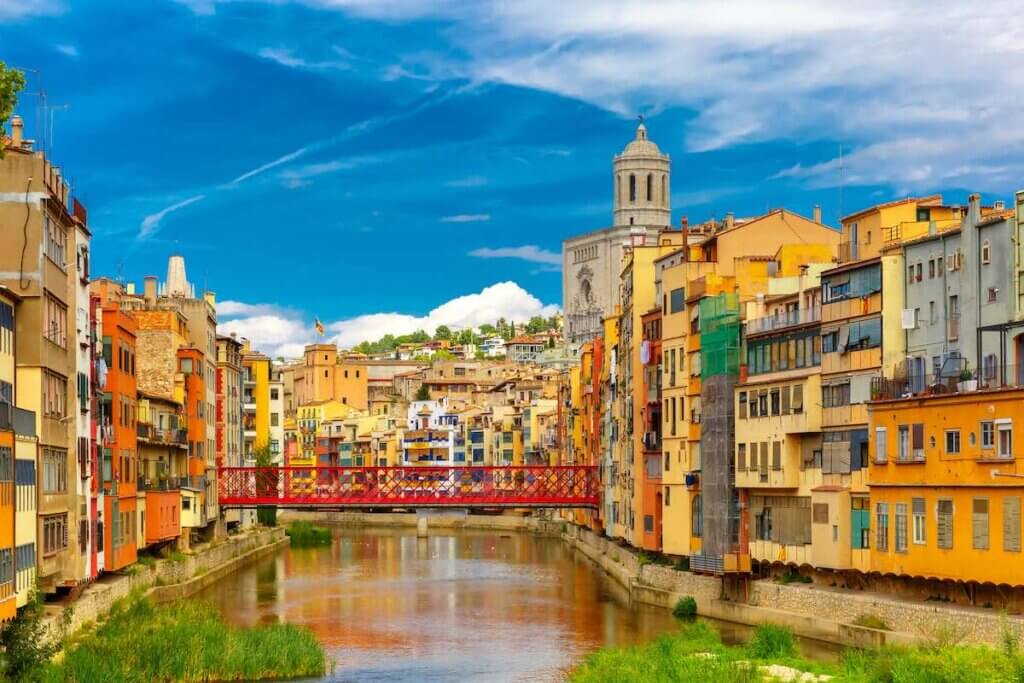
Most people have to consider vacation allowances with their jobs, family commitments, budget constraints, and school breaks. This is an easy step because it’s often decided for you!
Long-haul vacations should be five days at the minimum, but 10 days or two weeks in Spain is ideal.
Step 3: Research the Best Time to Travel to Spain
Figuring out the best time to travel to Spain depends on the climate, festivals, and popular travel seasons.
Northern Spain (Galicia, Basque Country, etc.) has a generally cooler and wetter climate than Southern Spain (Andalucía).
Summer in Southern Spain can be dangerously hot (over 104°F/40°C every day). On the flip side, it’s the perfect place for a winter break.
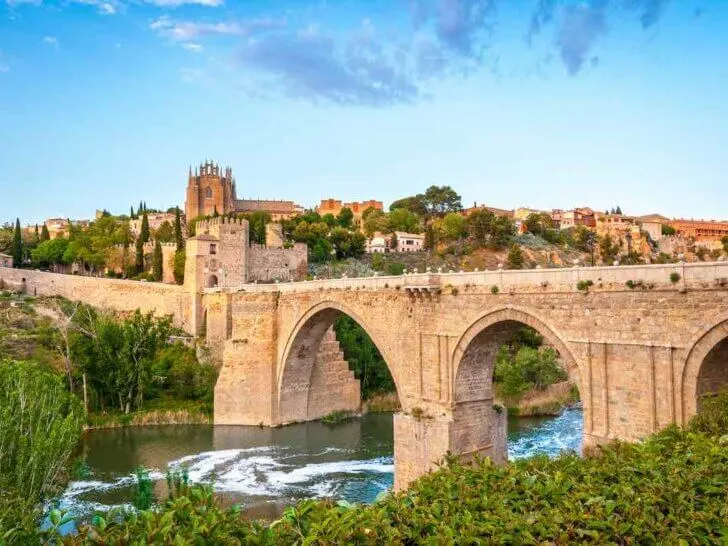
Easter is always a special time to travel to Southern Spain with lots of religious festivals and celebrations. La Tomatina in Valencia and The Running of the Bulls in Pamplona are two other popular festivals you may want to check out.
To strike a balance between climate, affordability, and crowds, travel in Spain’s shoulder seasons. These are from April – June and September – October.
But if you’re planning a family trip to Spain and you have school-age kids, you’ll have some restrictions on the times you can travel.
At least you have the information to make an informed decision about what you can expect when traveling in Spain at certain times of the year!
Step 4: Choose Your Spain Destinations
Alright, let’s get to the fun part of Spain trip planning and choose where you want to go in Spain!
Some of the best cities to visit in Spain for first-timers include Madrid , Barcelona , Valencia, Palma de Majorca , and Granada.
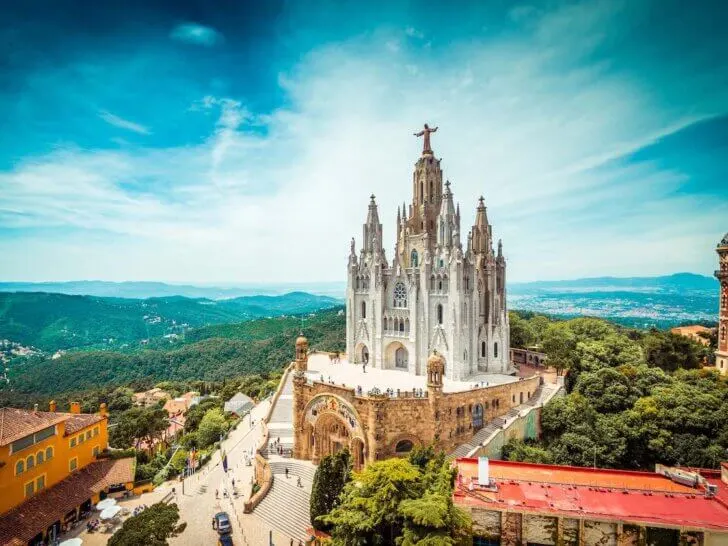
They all have busy international airports with the best infrastructure for tourists as well as lots of cultural and fun activities.
Plus, they all have lots of fun day trips you can take while using these cities as a base.
If you’re planning a 7-days in Spain itinerary or a 10-day trip to Spain, city-hop or road trip around a whole region! You could easily see the best of Catalonia in seven days or Andalucía in 10 days.
Step 5: Create a Budget for Your Spanish Vacation
The cost of a trip to Spain depends on a lot of factors. Your travel style (budget, comfort, or luxury), who you are traveling with, the length of your trip, and the time of year will affect how much you will spend.
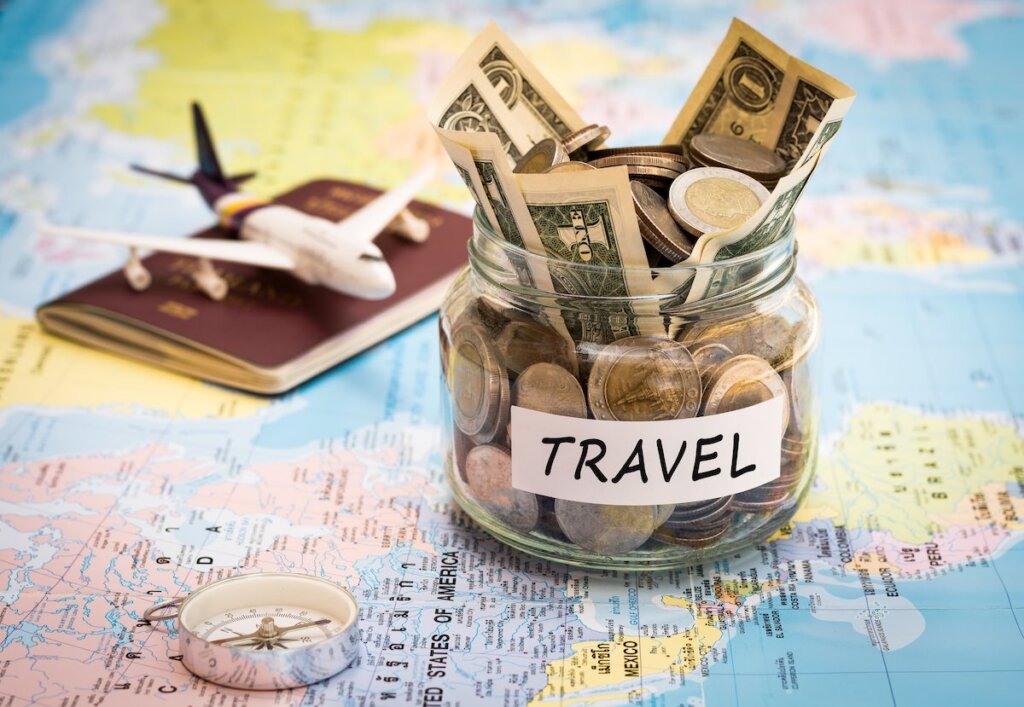
Not including flights, most guides agree that a family of four spends the equivalent of $1,000 per week on a trip to Spain.
Want to know how to plan a trip to Spain on a budget? Beaches cost nothing!
Book as much as you can (flights, accommodation, etc.) months ahead of time for cheaper deals. Stay in short-term rental accommodation outside of historic centers so you can cook some of your own meals.
Step 6: Book Your Flights to Spain
When planning a vacation to Spain from the US, it helps to be aware of which airports offer direct flights to Spain.

New York, Chicago, Miami, Los Angeles, Boston, Washington D.C., Atlanta, and Dallas offer direct flights to Madrid and Barcelona. Some also offer direct flights to more seasonal Spanish destinations like Seville , Granada, and Valencia.
Spain is an incredibly popular destination for Europeans traveling from colder climates like the UK and Scandinavia.
So if you can’t find direct flights from your local airport, you can often fly to another European city that offers good connections.
Step 7: Plan Your Spanish Vacation Itinerary
How to plan a trip to Spain itinerary will depend on where in Spain you’re going! Here are some suggestions and tips for popular Spanish destinations:
- How to plan a trip to Barcelona – Book the top attraction, La Sagrada Família, in advance and visit the other attractions (Barcelona Cathedral, Park Güell) earlier in the day to avoid crowds. Don’t miss Mount Tibadabo’s amusement park!
- How to plan a trip to Madrid – Take a walking tour of the top sites and plan lots of day trips . Toledo and Castilla La Mancha (Don Quixote Country) are both great.
- How to plan a trip to Andalucía – Plan a city-hopping trip to big cities like Granada, Málaga, and Seville so you can take day trips to Rhonda, Córdoba, and Cádiz.
- How to plan a trip to the Balearic Islands – Pick one of the main cities or towns as a base and enjoy cultural activities, beaches, and outdoor sports all over the island.
Use this Spain travel planner as a guide to make your own trip itinerary, but keep it flexible.
Do as the Spanish do and leave a few hours free in the afternoon to take a siesta.
Step 8: Book Accommodation in Spain
From villas to resorts, hotels, guesthouses, and short-term rental apartments, you will find a range of accommodation options in Spain!
Here are our favorite kid-friendly hotels in Madrid and Barcelona .
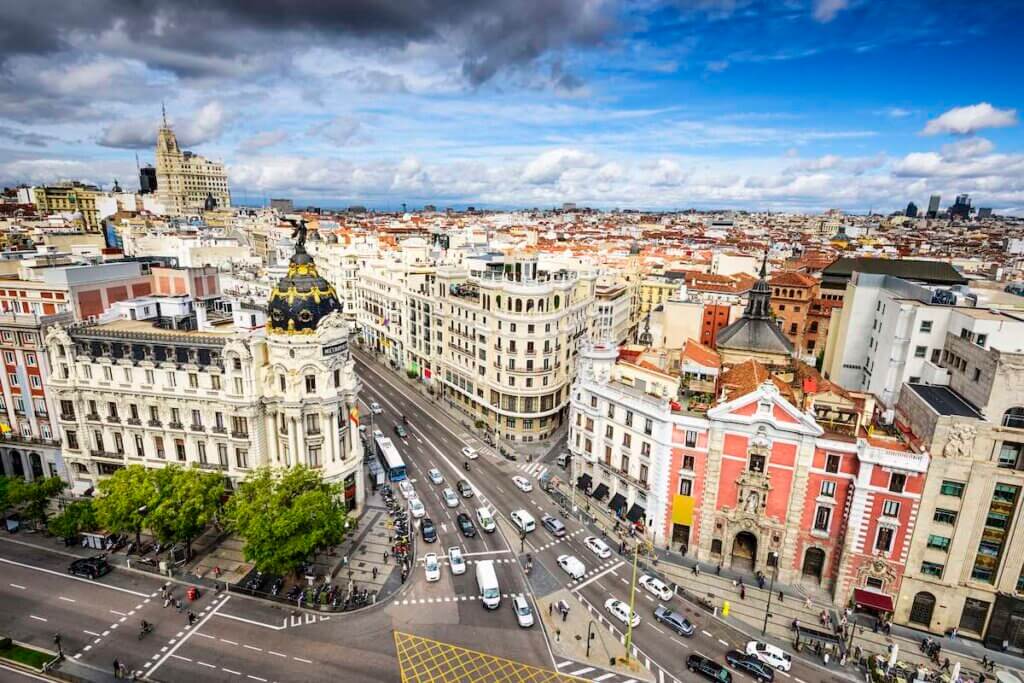
Some regions in Spain, but not all, charge a nightly per-person tourist tax up to a maximum of seven nights. These regions are Barcelona, the wider Catalonia region, and the Balearic Islands.
The amount varies depending on region and style of accommodation. For example, tourists staying in the Balearic Islands during the low season will only pay around €0.25 per night.
But if you’re staying in a five-star hotel in Barcelona, you’ll pay more than €5 per night.
Step 9: Book Transport or Rent a Car
If you’re traveling to a few different destinations in Spain, you will need to book transport. Two of the best options are bus and rental car.
Spain does have a good intercity rail network, but only for major cities like Madrid and Barcelona. Buses are the way most locals travel around Spain, but it’s understandable if you’d rather not travel by bus if you have big suitcases!
Renting a car is best for traveling around more rural areas like Andalucía.
Step 10: Purchase Attraction Tickets and Plan Activities
You’ve spent a lot of time creating your dream Spain itinerary so you need to make sure you turn that dream into a reality.
Avoid standing in long lines to the busiest attractions in Spain in the baking heat by booking tickets ahead of time.

These are landmarks like the Alhambra in Granada and La Sagrada Família in Barcelona. Alternatively, book guided tours so you can skip the lines too.
Plan cultural activities for the appropriate part of Spain that you’re visiting. You wouldn’t watch a rodeo in New York City, so don’t book a flamenco show in Madrid! Flamenco originates in Southern Spain and Valencia is the best place to taste paella.
Luckily, you can find great tapas restaurants everywhere. Note that small plates are called ‘pintxos’ in northern Spain, not tapas.
Step 11: Get Travel Insurance for Your Trip to Spain
Most travel insurance providers recommend getting travel insurance just after you book your flights. This means you can claim at any point during the planning process as well as when you’re on your trip.
But travel insurance covers much more than just canceled plans and stolen belongings, it covers any emergency healthcare you need abroad. As long as you take out a policy before your trip, your most valuable asset (your health) will be covered.
Check if you get travel insurance as part of your credit card benefits.
Step 12: Figure out Phone, Credit Card, and Currency
Organizing your money when you travel is easier than ever as you can use your credit card for the majority of purchases. Just make sure you have a travel-friendly credit card and aren’t getting hit with high exchange fees!

Bring some euros to carry with you for the few occurrences where you can’t pay with a card, as there are still some vendors in Spain that prefer cash.
It’s a good idea to get an eSIM so that you have data during your trip to Spain. Some cafes and attractions have WiFi, but not all and the quality is inconsistent.
If you’re planning a trip to Spain and Portugal , make sure you get data coverage in both countries.
Step 13: Watch Movies and Read Books Set in Spain
Once you’ve completed most of the planning for your Spain vacation, you can spend the rest of your time watching movies and reading books set in Spain. This will make you feel even more excited for your trip!
Some recommendations are Driving Over Lemons by Chris Stewart, Don Quixote
by Miguel de Cervantes, and the movie The Way (2010).
Step 14: Go To Spain!
Once you’ve finished planning your trip to Spain, all you need to do now is pack and go.
Stay safe and healthy in the Spanish sun by staying in the shade as much as you can and drinking plenty of water. You didn’t plan a trip to Spain to get heatstroke!
Planning a Trip to Spain FAQs
How do i prepare for a trip to spain.
There are some easy things you can do to get to grips with how to prepare for a trip to Spain before you go.
Prepare to eat a little later than you do back home and learn a few handy Spanish phrases. Invest in a comfortable pair of shoes and light, sweat-wicking clothing.
How much is a trip to Spain?
The exact cost of a trip to Spain is dependent on lots of factors: your travel style and budget, when you travel, and how many people you are traveling with.
But there are a few average costs you can use as a guideline. Trip.com states that a round-trip economy flight from the US to Spain costs $500 to $1,500 depending on where you’re located and some other factors.
Budget Your Trip states that the average couple on a week-long trip to Spain spends around $2,286 in total.
How much money do I need to take to Spain for a week?
The Spanish government states that all international tourists should be able to prove that they have €100 (or the equivalent) for every day of their trip.
It’s very, very unlikely that you will actually have to prove this! But it’s important to be aware of this rule.
Statista states that international tourists spend approximately €162 per day in Spain, but you could easily spend more or less than this depending on your travel style.

How To Plan a Trip to Spain Wrap Up
It couldn’t be easier to learn how to plan a trip to Spain with the right guide.
You won’t make the mistake of not booking Alhambra tickets in advance, or seeing a flamenco show in Madrid.
All that’s left do to is pack your Spanish phrasebook and high-SPF sunscreen!
Looking for more Spain travel resources? Check out my top Madrid travel tips , things to do in Barcelona with kids , Barcelona travel tips , day trips from Madrid by train , Barcelona day trips , things to do in Madrid with kids , Europe travel tips , Seville tourist attractions , day trips from Benidorm , and Mallorca travel tips !
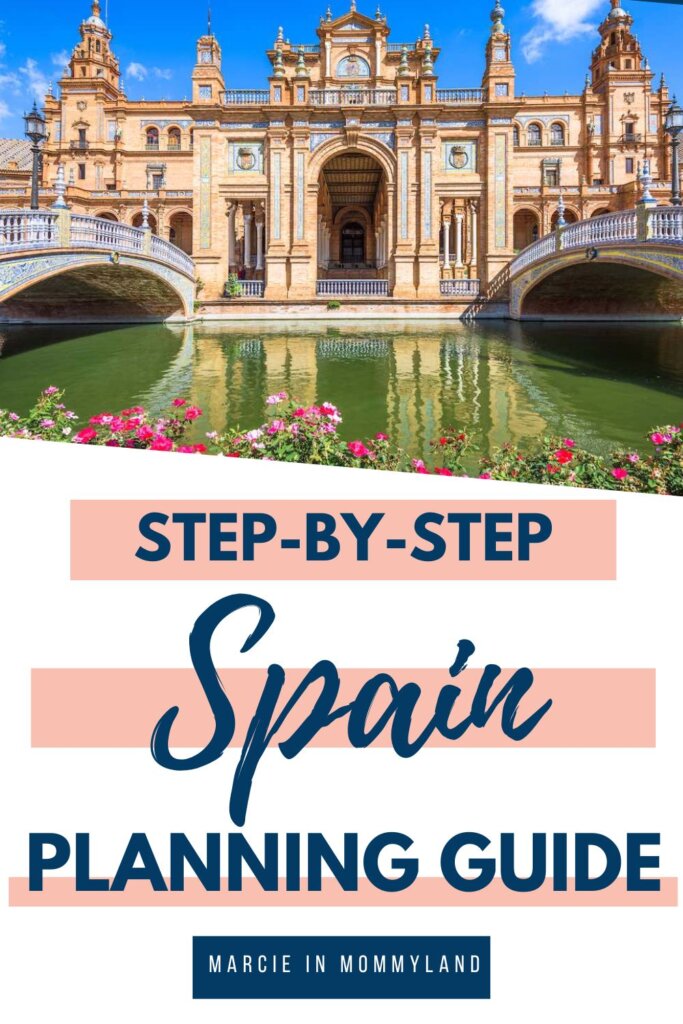
Unlock Your Free eBook
Our exclusive eBook, Top 10 Unforgettable Family Adventure Destinations , is your ticket to a world of wonder and excitement. Get your free copy today!
This site uses Akismet to reduce spam. Learn how your comment data is processed .

Navigate forward to interact with the calendar and select a date. Press the question mark key to get the keyboard shortcuts for changing dates.
Navigate backward to interact with the calendar and select a date. Press the question mark key to get the keyboard shortcuts for changing dates.
Spain Trip Planner
Top destinations in spain.

Top attractions in Spain

Other notable attractions

Explore nearby places
- Pozuelo de Alarcon
- Boadilla del Monte
- Majadahonda
- Fuenlabrada
- Villaviciosa de Odon
- San Fernando de Henares
- San Sebastian de los Reyes
- Humanes De Madrid
- Vaciamadrid
- Paracuellos de Jarama
- Velilla de San Antonio
- Tres Cantos
- Villanueva del Pardillo
- Arroyomolinos
- Torrejon de la Calzada
- Torrelodones
All related maps of Spain
- Map of Spain
- Map of Madrid
- Map of Mazo
- Map of Pozuelo de Alarcon
- Map of Leganes
- Map of Alcorcon
- Map of Getafe
- Map of Boadilla del Monte
- Map of El Pardo
- Map of Coslada
- Map of Majadahonda
- Map of Mostoles
- Map of Fuenlabrada
- Map of Las Rozas
- Map of Villaviciosa de Odon
- Map of San Fernando de Henares
- Map of Alcobendas
- Map of San Sebastian de los Reyes
- Map of Pinto
- Map of Humanes De Madrid
- Map of Vaciamadrid
- Map of Parla
- Map of Paracuellos de Jarama
- Map of Velilla de San Antonio
- Map of Tres Cantos
- Map of Villanueva del Pardillo
- Map of Arroyomolinos
- Map of Torrejon de la Calzada
- Map of Grinon
- Map of Valdemoro
- Map of Torrelodones
Spain throughout the year
- Spain in January
- Spain in February
- Spain in March
- Spain in April
- Spain in May
- Spain in June
- Spain in July
- Spain in August
- Spain in September
- Spain in October
- Spain in November
- Spain in December
Q&A about Spain
Add places from guides with 1 click, collaborate with friends in real time, import flight and hotel reservations, expense tracking and splitting, checklists for anything, get personalized suggestions.
4.9 on App Store, 4.7 on Google Play

Southern Spain Itinerary: 10 Days in Andalucía
Last Updated on November 27, 2023
by Maggie Turansky
Disclaimer: This article contains affiliate links. That means if you click a link and make a purchase, we may make a small commission. As an Amazon Associate we earn from qualifying purchases. For more information, see our privacy policy.

Planning a southern Spain itinerary can seem a bit overwhelming when you consider all of the incredible places to visit in this vast and diverse region. Boasting vibrant cities, sleepy beach towns and everything in between, heading to Andalucía is never a bad idea.
Known for its diverse landscape, fantastic cuisine, historic cities, and laid-back culture, Andalucía is one of the most popular and sought-after regions in the country. As one of the largest autonomous regions in Spain, Andalucía is filled with a complex history and culture unique to the rest of the country.
If you’re wondering what to see when spending 10 days in Southern Spain, then look no further. We have had the pleasure of spending months exploring this incredible region over several years and have gained a wealth of knowledge about travelling there.
Table of Contents
Best Time to Visit Southern Spain
Before we get into the logistics of our itinerary, we need to discuss the best time of year to visit this sunny region.
A good portion of Andalucía is blessed with over 300 days of sunshine per year and, outside of the high Sierra Nevada mountains, the weather will rarely ever get cold enough for it to freeze or snow.
Because of this, Andalucía (and the Costa del Sol in particular) is a popular winter destination for northern Europeans looking to escape the cold, dark weather of their home countries.
However, while the months between November and March are certainly warmer than virtually anywhere else on the continent, nights can still get chilly and you are more likely to have some rainy days.
However, if you plan to visit Andalucía in the summer months, you can expect some of the hottest temperatures in Europe, with some towns repeatedly being subjected to temperatures over 40°C (104°F).
While many hotels, apartments, and tourist sites are air-conditioned and many of the towns are equipped to handle such high temperatures, it can be uncomfortable to visit during the peak summer months.
Arguably the best time to undertake an Andalucía itinerary is in the shoulder seasons of March-May and September-November. It is during these months where the weather is at its best — mild yet warm and sunny — and tourist numbers haven’t reached their peak.

How Many Days in Southern Spain?
Now that we’ve determined which time of year is best to go to Spain, we need to figure out how many days you need for your itinerary for southern Spain.
While it might seem that one region of a country wouldn’t require all that much time to explore, you would be quite wrong to assume this of Andalucía.
The region is vast, encompassing multiple major metropolitan areas and various sub-regions and provinces. Each city, town or village that you will visit in Andalucía will have its own unique character that will beg you to explore more.
However, if you don’t have a lifetime just to devote to exploring one region of one country (like everyone else), plan to set aside at least ten days for your trip.
In ten days, you can see a lot of the region without being too rushed and really get a feel for the culture and history. While you likely won’t have time to visit every city and town of interest in Andalucía, 10 days is enough to give you a very good feel for the region.
If you have a bit longer to spend, then the absolute ideal amount of time to spend in Andalucía would be about 2 weeks. This will allow you to visit all of the major metropolitan areas of the city and get a little bit off the beaten path.

Getting To & Around Andalucía
Spain is home to a number of different international airports and there are lots of options when it comes to your itinerary.
The largest airport in Andalucía is located in Málaga and there are countless connections across Europe and further afield here. Flying into Málaga is a good option for those following the Costa del Sol route below.
There are also airports in Seville and Granada, though they are less trafficked. You can find connections across Europe – particularly into Seville – however, you may find it easier to fly into Madrid and then take the fast train to Seville, depending on where you’re coming from.
Once in Spain, it is also necessary to figure out how to get from one destination to another as you explore the region.
While many people like to hire a car and head out on a Southern Spain road trip itinerary, having your own rental car isn’t entirely necessary. The stops on this route are all easily accessible by bus or train (though booking trains and buses in advance is a good idea!) and each city itself is quite walkable.
If planning on taking a number of trains, a train pass can be incredibly good value. If you’re from outside of Europe, you can view Eurail Spain Passes here . Alternatively, if you’re from the EU, you can view Interrail Spain Passes here.
Where you might find a car more helpful during this Andalusian route is if you want to go on some more off-beat day trips that don’t have frequent or easy connections via public transport.
If you’re thinking of renting a car in Spain, we recommend using Rentalcars.com to find the best rates. It can also be worth taking out a third-party insurance policy with iCarHireInsurance to avoid paying higher fees through the rental car agency.

10-Day Southern Spain Itinerary
Day 1 – seville.
The capital of Andalucía, no itinerary would be complete without a stop in the dynamic and historic city of Seville. One of the most beautiful cities in Spain, Seville has a ton to offer tourists and it is one of the best cities to get to know the unique culture and history of Andalucía.
Seville is the fourth-largest city in Spain and therefore is an easy starting point for a route through southern Spain as it is well connected both because if its international airport and frequent buses and trains from all major Spanish cities.
Due to its size and historical significance, there are also a lot of things to do in Seville that you can easily spend 3 or more full days exploring the city. Plan to spend a couple of days in the city itself, checking out all of the incredible sites.
On your first day, plan to get your bearings – a great way to do this is by going on a free walking tour! Of course, you cannot miss the incredible Seville Cathedral , which takes some time to explore.
Make sure to wander through the gorgeous streets or take a walking tour of Barrio Santa Crus, which was the former Jewish Quarter of Seville. And, finally, end your day by taking in the sunset from the Metropol Parasol – known locally as “Las Setas.”
No visit to Seville is complete without hopping around a few tapas bars and this is an excellent thing to do your first evening in Andalucía!

Where to Stay in Seville
Hotel Bécquer – This centrally located hotel is a great choice if you’re travelling on a mid-range budget but want to be close to all of the action. They have numerous clean, comfortable rooms available and they also have a wonderful rooftop pool and terrace to take the edge off of those warm Seville days.
Monte Triana – Located in the vibrant Triana neighbourhood, this swanky boutique hotel is on of the highest-rated in Seville. Located within a 15-minute walk of all of the top sights of the city and close to some of the best tapas bars in Seville, they have a number of luxurious rooms available.
Onefam Catedral – If you’re travelling solo or have a tight Spain travel budget , this hostel is an excellent choice. It is one of Seville’s highest-rated hostels and it is located within easy walking distance of sites like the Cathedral and the Alcázar. They have a range of dorms and private rooms available and the staff organises social events and activities.
Not quite what you’re looking for? Click here to browse for more hotels in Seville!
Day 2 – Seville
On your second day in the capital of Andalucía, take the time to dig a bit deeper and enjoy some more of the incredible sites that Seville has to offer.
Start your day by exploring the Mercado de Triana on the other side of the Guadalquivir River – this is a great area to wander through on its own, but the market is something special.
And you absolutely cannot miss the Real Alcázar – this takes a few hours to explore and it is so wonderful and worthwhile. The architecture is absolutely stunning, as are the tranquil gardens to be found here.
You also should ensure to visit the iconic Plaza de España, one of Andalucía’s most beautiful town squares.
And end your day with a visit to a flamenco show – Seville is one of the birthplaces of this artform and there are plenty of tablaos where you can experience it!

Day 3 – Ronda
After spending two full days in Seville itself, now it’s time to head out on a day trip. One of the most popular options is to visit Ronda , a beautiful whitewashed village in the hills of Andalucía.
You can reach Ronda via bus (which is the easiest route if going by public transport), via car in about 2 hours or join an organised day trip.
Ronda is known for the incredible Puente Nuevo, a gorgeous and impressive bridge that cascades over the river gorges it sits above. But there is more to this town than the bridge. You can also tour the bullfighting ring, see beautiful churches like the Iglesia de Santa María la Mayor or even visit the old Arab Baths.
Ronda also has plenty of great bars to have a bite to eat in that serve up traditional cuisine from this area. In general, it’s a great day trip option.

Day 4 – Cádiz or Jerez de la Frontera
On your fourth day in Seville, it’s another great opportunity to head out and explore a nearby town. One of my favourites would be the gorgeous coastal city of Cádiz , which is located only about 1.5 hours by train from Seville.
Here, you can visit the beautiful Cádiz Cathedral and experience the find Camera Obscura at the Torre Tavira. There are also some cool, historic castles to take in, like the Castillo de San Sebastian. Cádiz also has its own unique cuisine with some incredible eateries, so this can be a great opportunity to head out on a food tour.
Alternatively, you could also visit the city of Jerez. This is located just a bit north of Cádiz and about 1 hour on the train from Seville.
Jerez is known as the cradle of sherry and is a fantastic place to visit for fans of this fortified wine. When you visit Jerez, make sure to pop into a bodega or two to learn about (and taste) all varieties of Spanish sherry – from fino to amontillado to oloroso. Of course, there are also incredible places to eat in Jerez, so it’s a great place for foodies!

Day 5 – Córdoba
After spending your first four days of this itinerary in Seville, it’s time to head to another historic city in Andalucía: Córdoba.
While many visitors to the south of Spain tend to only treat Córdoba as a day trip from Seville , the city is much better experienced in the two days I have allotted in this route through Andalucía.
Córdoba is located only about 45 minutes by train from Seville, so you can enjoy a relaxed morning without feeling the need to be rushed and get moving.
Once you arrive in Córdoba, spend your first day getting your bearings in the city and wandering through the incredible and beautifully preserved old Jewish Quarter. Of course, if it interests you, you could opt to go on a walking tour (free or paid) to get more historical context here.
At one point, Córdoba was considered to be the most important city in Western Europe and it was the head of one of the most advanced civilizations of its time during the Moorish rule of Spain.
Therefore, there are centuries, if not millennia, worth of history to explore in Córdoba and though it’s historical centre might be small, it is much better enjoyed at a slower pace.
It’s also a great idea to visit the Alcázar de los Reyes Cristianos in Córdoba. Though not as impressive as the one in Seville, it’s still worth taking in and seeing more of the Moorish architecture and learning about the history here.

Where to Stay in Córdoba
Hesperia Córdoba – This comfortable boutique hotel, located on the banks of the Guadalquivir River, is a great place to stay if you are travelling on a mid-range budget. They have a range of modern, clean and comfortable rooms and also include a rooftop pool to take the edge off of a hot Córdoba day.
Puerta de la Luna – This small hostel is a fantastic option for solo and budget travellers alike. They have great common areas, a range of both dorm and private rooms, and even have a rooftop terrace to chill out on.
Not quite what you’re looking for? Click here to browse other hotels in Cordoba!
Day 6 – Córdoba
Córdoba is perhaps most famous for its marvellous Mezquita-Catedral, a massive Moorish mosque-turned-cathedral in the centre of town. The monument is one of the most-visited in Andalucía and is a shining example of the Mudéjar architecture so common throughout this region and country as a whole
The Mezquita is certainly a can’t-miss sight in Córdoba, but it does get very busy which is why I recommend trying to get there as early as possible. That is why it’s ideal to visit the Mezquita on your first full day in Córdoba, rather than the day before when you first arrive.
After taking in the Mezquita, take the time to get lost in the gorgeous streets of Córdoba, visit the Mercado de la Corredera which is located below the plaza of the same name, and enjoy the city’s laid-back tapas culture.
This is also an excellent opportunity to take advantage of some regional cuisine that hails from Córdoba – particularly salmorejo , a cold tomato soup that is similar to gazpacho.

Day 7 – Granada
The penultimate stop on this itinerary is the incredible city of Granada , one of the best places to visit in all of Spain.
Tucked high in the Sierra Nevada, in 1492, Granada was the last city to fall to the Catholic monarchs during the Reconquista. Because of this, Granada’s Islamic roots and history seem somehow more pronounced than in other Spanish cities or cities in Andalucía altogether.
Much like Córdoba, Granada is perhaps most famous for its iconic monument: the Alhambra. The fantastic Moorish palace, summer house, and fortress is a sight to be seen and is one of the best examples of Islamic architecture in the world.
From Córdoba, it will take about 1.5 to 2 hours to reach Granada depending on the route you choose. So you don’t feel too rushed, spend your first day in the city getting the feel for everything and exploring the Albaicín and the historical centre of the city.
Start off in the central area of Granada, first visiting the gorgeous Granada Cathedral and the nearby Monasterio de San Jerónimo. Then, make your way up the hill to the UNESCO-listed Albaicín.
Getting lost in the incredible Albaicín neighbourhood, which was once the city’s Arab quarter, is one of the highlights of visiting Granada. There is something beautiful to explore around every corner. And, if you want an excellent place to see the sunset, head to the Mirador de San Nicolas – it’s popular for a reason!
Spend your evening bouncing between some of Granada’s bars – here you can get a free tapa with a drink order and it’s one of the best experiences to have while in the city!

Where to Stay in Granada
Hotel Rosa D’oro – A stunning converted convent, this hotel offers a range of rooms with the fancier ones even having views of the Alhambra.
Hotel Los Tilos – A mid-range hotel that has both double rooms and larger rooms suitable for families. Its within walking distance of the city’s main sights and there is a great rooftop terrace for guests to enjoy.
El Granado Hostel – A great hostel with various dorm rooms and one private room available. They organise a lot of social events so its a great place to meet other travellers.
Not quite what you’re looking for? Click here to browse more Granada hotels!
Day 8 – Granada
On your second day in Granada, it’s time to visit the main attraction – the Alhambra. The Alhambra complex is massive and it will take the better part of half a day to do the area justice, so make sure that you’re aware of that.
It’s also essential to book your visit to the Alhambra well in advance, as it can be booked out early and you may not be able to see some of the areas you wanted without having to join a guided tour.
After visiting the Alhambra, head to one of Granada’s more unique areas – Sacromonte. This traditional Roma neighbourhood is made up of cave dwellings, and it’s a place where some people living alternative lifestyles still live today.
If you want a truly spectacular view, then hike up to the San Miguel Alto Viewpoint, which is a bit of a trek but well worth it.
End your time in Granada by bouncing around various tapas bars again – it really never gets old!

Day 9 – Málaga
The final stop on this Southern Spain itinerary is in the lively coastal city of Málaga . Málaga is a wonderful city to visit and it is a great place to relax by the coast while still taking in some history.
It’s also located only about an hour from Granada and, as home to a high-traffic international airport, a logical place to end this itinerary.
Spend your first day wandering around and getting to know the city. It has a lively, metropolitan vibe that is definitely different from the cities you’ve visited previously.
Make sure to visit the gorgeous Alcazaba which towers over the city and, also, wander around the Roman Theatre that is located directly below.
Of course, you must visit the Picasso Museum while here. This was the birthplace of the famous artist and it’s worth taking in some of the incredible works while visiting the city.

Where to Stay in Málaga
Hotel Sur Málaga – This centrally-located hotel is a wonderful place to stay in Málaga, situated within easy walking distance to all of the best museums and attractions. They have a range of air-conditioned, clean, and comfortable, rooms available and it is the ideal place for couples. There is also breakfast available for an additional charge.
Madeinterranea Suites – This is a great hotel if you’re after a little bit of luxury on your trip to Málaga. There are numerous spacious and comfortable rooms available, a restaurant on site (complete with room service!), and a fantastic breakfast included in the room rate. They also can organise an airport shuttle.
The Lights Hostel – This hostel is one of the highest-rated and a great option for solo travellers or if you’re on a budget in Malaga . They have a range of dorm and private rooms available and a hearty breakfast available at an additional cost. They also organise social events in the evenings.
Not quite what you’re looking for? Click here to browse other hotels in Málaga!
Day 10 – Málaga
Spend your final day exploring more of beautiful Málaga. Begin your day at the massive Mercado de Atarazanas where you can take in a lot of delicious local produce. Then, make your way to the Museo del Vino which, if you don’t understand Spanish, means the Museum of Wine!
You can also take some time to lounge at Playa de Malagueta, the main beach in the city. Or, if you want to explore a cool, hip area with lots of street art, then make sure to wander around the lovely Soho neighbourhood.

Have More Time?
If you have more time in the area, then you can continue exploring past Málaga and visit more of the Costa del Sol. There is a lot more to this area than just Malaga or Marbella and it’s worth taking the time to visit some of the smaller coastal towns.
The town of Estepona is just lovely, as is the nearby beachy city of Marbella . Both are worth visiting if you’re on the Costa del Sol.
Of course, it’s also very popular to go on a day trip to Gibraltar , the British Overseas Territory is easily reached from Málaga and it’s a unique experience to visit!

No matter where you choose to visit on your southern Spain itinerary, you are sure to leave with fond memories of an enriching and historical experience.
Are you planning a trip to Andalucía? Have any questions about this itinerary? Let us know in the comments!

Related Posts:

The Ultimate 5 to 7 Days in Basque Country Itinerary

Seville or Granada or Cordoba: Which City to Visit

A Guide to Lavapiés: Madrid’s Coolest Barrio

About Maggie Turansky
Maggie is a co-founder and writer for The World Was Here First. Originally from the US, she has lived in five different countries and has travelled to dozens more, both solo and with her partner, Michael. She particularly loves exploring Spain and spending time in the Caucasus and the Baltics. Read more about Maggie
is easy to put together a side trip to Morocco while in the south of Spain ?
Yes, it’s very common for travellers to add on a visit to Morocco when in the far south of Spain 🙂
Hi Maggie This is a great post. I’m planning a trip to this region and would like to visit Seville, Cordoba and Cadiz. I would be flying into and out of Malaga but don’t want to stay as I’ve seen it and Granada on a previous trip. I’m wondering would it be best to get a train or bus from Malaga to Seville and use it as a base to take trips to Cordoba and Cadiz or go from Malaga to Cordoba – Seville- Cadiz- Malaga? Thanks
Seville makes for a good base for exploring both Córdoba and Cádiz but all three cities have enough to do to keep you occupied for more than a day each. So it really depends on how much time you have and if you want to move accommodations a few times during your trip or not. 🙂
This is a wonderful resource and I’m so glad I found it!
I’m in the very early stages of planning a 10 day trip (Sevilla, Cordoba, Granada) with my parents in 2023. I’m thinking a September trip might be a great idea before the end-of-year holiday travel begins.
How early do you think we should start booking travel/lodging? And it’s probably too hard to guess with the ever-changing COVID precautions.
Hi Camille, thanks so much for your comment! I would personally wait until your trip is only a few months out before booking – but hopefully, things are a bit more clear when it comes to planning travel in the future.
We are planning 4.5 weeks in Spain & Portugal next May 2020-flying into Barcelona (but not staying there this timeas we were there last year) and then out of Madrid. We will be hiring a car and our rough plan is to head up the Costa Brava from BCN, then across to San Sebastian (not much time to expolre the Pyrenees unless we cut out other areas?) and along the northern coast (inland or mountains – or a mix?) to Santiago de Compostela, then down through Portugal via Porto, Coimbra to Lisbon and then Algarve region to Andalucia then back up towards Madrid, seeing Toledo, Salamanca and some rural spots inbetween. I know we’ll be moving fairly quickly but we just spent weeks in the balkans with a car and found if we had some 3 night breaks in more popular stops, we were happy with some overnights in between. Would you say this is do-able in the time and any unmissable places to stay a few days on the way, or pass through to check out main sights? I like your destination info and presentation and used it for our Balkans trip too so any feedback would be much appreciated.l I then have a week extra so am thinking I’ll get a Spanish rail pass and base myself in Madrid to do trips out from there or maybe return to an area for 4-5 days R&R after all the driving! Cheers & Merry Xmas ?
Thanks for your comment, Lyndie! Sounds like you’ve got quite a busy trip planned but if you’re hiring a car, I don’t see why it shouldn’t be doable. Unfortunately, we haven’t travelled as much in Catalonia or Northern Spain (yet!) so I can’t be of much help in that regard. Hope you have a great time, though!
Thanks for all your interesting information! It has been useful in the beginning stages of my planning to see how long to stay in each town.
Glad it’s helped, Claudia! Hope you have a great trip 🙂
Leave a Comment Cancel reply

With idyllic beaches, rich tradition, delicious cuisine, and renowned artwork, Spain is simply a dream.
Spain, a vibrant, diverse country, is rich in national and natural treasures. From lively, cosmopolitan cities to stunning countryside, towering gothic cathedrals to ancient Roman ruins, epic landscapes to spectacular coastlines, flamenco dancers to matadors - and let’s not forget its unique, delightful cuisine- Spain offers boundless possibilities for travelers. Join us for some highlights…

Barcelona, a city that is challenging to describe without using the words vibrant, creative, colorful! An innovative, cosmopolitan city with a Mediterranean flair.

Madrid is where history and modernity, cosmopolitan atmosphere and old-world charm, and sightseeing, dancing, and shopping go hand-in-hand.

Seville, the capital and largest city of Andalusia, is one of Spain’s most fascinating cities. The city preserves the past, nurtures the present, and looks to the future.

Valencia, located on Spain’s east coast on the banks of the Turin River, is the country’s third largest city.

Granada, the capital city of the province of Granada in Andalusia, is a winning combination of history, art, beauty, and contemporary culture.

San Sebastian
San Sebastian is a stunning seaside resort which is know for its rich culture, world-class cuisine, and scenic beaches.

Bilbao has abundant natural beauty with parks, lush landscapes, and proximity to stunning coastlines.

Santiago de Compostela
Santiago de Compostela ensured its place in history as the last leg of the 9th century Saint James Way pilgrimage route.
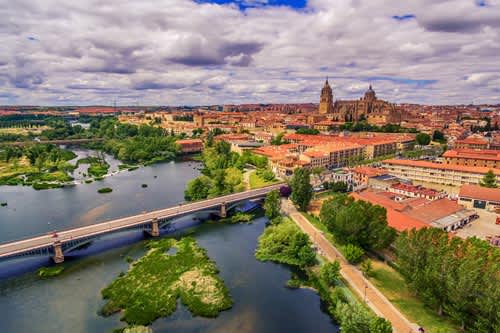
The historical richness of Salamanca's architecture has earned it a status as a UNESCO World Heritage Site.

Toledo is home to many important cultural and historic landmarks and, as a result, was declared a UNESCO World Heritage Site in 1986.
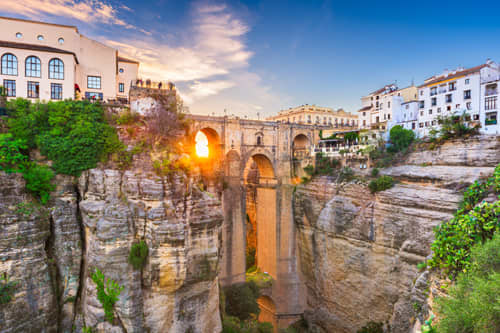
Ronda, the beautiful pearl of the province of Málaga, sits atop a mountain dramatically overlooking the deep El Tajo gorge.

Leon, located in the northwest region of Castilla y Leon, is an elegant, capital city with magnificent architecture, lush parks, and friendly inhabitants
Trip Planner - Spain
Create your perfect trip to barcelona, spain.
Easily plan your trip based on your preferences, budget, and style
Plan your trip with RoutePerfect’s AI and optimize it by using RoutePerfect’s crowdsourced database, based on proven and enjoyable, well-crafted itineraries of thousands of travelers.
Barcelona is a number one destination for travelers. With its impressive architecture – attributed in large part to the famous architect Antoni Gaudi, renowned museums, excellent restaurants, vibrant nightlife, and picturesque alleys, Barcelona is, arguably, among the most colorful cities in Europe. A short drive from bustling Barcelona is the Costa Brava -a coastal region known for its breathtaking nature and relaxed atmosphere.
Madrid , the capital of Spain and its largest city, is known as the center of fashion, arts, and culture. While Madrid possesses modern infrastructure, it has preserved the look and feel of its many historic neighborhoods and streets. A fascinating day trip from Madrid is Toledo , an ancient walled city set on a hill above the Castailla-La Mancha with a remarkable history and an extensive monumental and cultural heritage.
Andalucia, bordering Spain’s southern coast, is a large region of breathtaking hills, rivers, and farmland. The historic cities of Seville , Cordoba , and Granada are located in Andalucia and, to this day, contain famous landmarks and legacies remaining from having served as home to Muslims, Christians, and Jews over the ages. You will also see vestiges of Moorish architecture such as the Alcazar Castle and the Alhambra Palace. If you’re looking for surf and sand nearby, visit the Costa del Sol - a long stretch of coastline, offering golden beaches and top hotels.
And Mallorca (Majorca)… the crown jewel of Spain's Balearic Islands in the Mediterranean! Mallorca is a lovely island which combines history – 13th century architectural remains – with luxurious beach resorts, sheltered coves, limestone mountains, dynamic nightlife, art galleries, and wineries.
While late spring and early autumn are the ideal time to visit Spain due to the lighter crowds and pleasant temperatures, the country enjoys a relatively mild Mediterranean climate year round. And, because of the diverse opportunities, many travelers choose to visit Spain in every season.
Need guidance?
Whether you’re looking for sea, sun, culture, or adventure – must-see attractions or off-the-beaten-track treasures – or some of each, Routeperfect is your address for planning, organizing, and booking your personalized dream vacation to Spain. Unlike any other company, Routeperfect offers its exclusive popular itineraries written by tourism professionals and experienced travelers to jumpstart your planning, helping you to customize your travel and book your accommodations so that you can experience the country YOUR way.
Regions in Spain
Attractions in spain, popular itineraries in spain.
Best of Spain
15 days | a jam-packed tour capturing some of spain's true highlights.

Kick off this colourful Best of Spain tour in Madrid and let your imagination unfold on a journey through the beautiful Andalucian region. Visit the cities that reflect Spain's diverse history and culture. Experience a fiery flamenco performance in Seville and explore the mysterious maze of alleyways of the old Arab quarter in Albayzin. Follow your tastebuds to a tapas bar and wander among Gaudi's handiwork in Barcelona – this Spanish adventure is as colourful and diverse as the land itself.
Trip overview
- Experience the fiery passion and rhythm of a traditional flamenco dance performance in Seville.
- It's a pretty special thing to chill out on a beach in Andalucian Spain, knowing North Africa is just across the water. Explore the scenic coastline, and kick back with some tapas and sangria in Tarifa.
- The town of Ronda is split in two by a deep rocky chasm. Follow in the path of the Romans, as you cross from one side to the other along an ancient bridge.
- Discover Cordoba's great mosque, the Mezquita, one of the most accomplished examples of Moorish architecture in the world. The lavish gardens and opulent rooms of Granada's spectacular Alhambra Palace aren't bad either.
- Witness a spectacular Spanish sunset on a beach in Valencia, while feasting on a bowl of the world's best paella.
- The cosmopolitan city of Barcelona pulses with culture, art and an outstanding drinking and dining scene. Discover the eccentric modernist architecture of Antonio Gaudi, who made Barcelona his artistic playground. The unfinished masterpiece of La Sagrada Familia is particularly mind-blowing.
- By travelling on this trip, you’ll learn about our Intrepid Foundation partner, Casa Caridad. Donations help them provide basic needs such as food and shelter for people in need in Valencia. Intrepid will double the impact by dollar-matching all post-trip donations made to The Intrepid Foundation.
- This trip covers a lot of ground and the majority of travel is done by trains and public buses. It's a good time to sit back, relax and let the scenery roll past your window. Please read the Itinerary carefully for travel time estimates.
- We recommend packing light and smart for this trip as you'll be required to carry your own luggage between train stations and hotels, which can include going up and down multiple flights of stairs, and across cobblestones. Train stations often don’t have lifts available.
- Summer temperatures can be extreme in this region (over 40C/104F). It’s important to use sun protection, wear layers to combat the heat, and drink plenty of water. Many hotels in Europe have fans, not air conditioning. Please carefully consider the time of the year you wish to travel and your suitability to that season.
- Space is at a premium in Europe and your hotel is no exception. Rooms are often small, but usually the central location makes up for that. For those travelling as a duo, hotels in Europe often don't have double beds, but rather two single beds that can be pushed together.
View the itinerary for departures between 01 January 2024 - 31 December 2024
Hola! Welcome to Madrid! This sassy Spanish capital is known for its elegant boulevards and expansive, manicured parks, but it also pulsates with energy. Your adventure begins with a welcome meeting at either 6 or 7 pm, depending on common area availability. After the welcome meeting, and optional dinner, perhaps get into the mind of a Madrileno with some tapas and Rioja, or head to the Gran Via hotspots to dance the night away with your new friends.
- Hotel (1 night)
There are no meals included on this day.
- Madrid - Museo del Prado - EUR15
- Madrid - Museo Reina Sofia - EUR10
- Madrid - Museo Thyssen-Bornemisza - EUR13
- Madrid - Real Jardín Botánico - EUR6
- Madrid - Royal Palace - EUR14
- Madrid - Museo Taurino - EUR15
- Madrid - Tapas Urban Adventure - EUR99
It’s very important that you attend the welcome meeting as we will be collecting insurance details and next of kin information at this time. If you are going to be late please let your travel agent or hotel reception know. Ask reception or look for a note in the lobby for more information on where the meeting will take place. If you can't arrange a flight that will have you arrive at the hotel by early evening, you may wish to arrive a few days early. We'll be happy to book additional accommodation for you (subject to availability).
Take a bus to Granada today (approximately 5 hours). Located at the foot of the Sierra Nevada Mountains, Granada is packed with Moorish architecture, great tapas bars and natural beauty. Take a walk around the old Arab quarter of the Albaicin, a labyrinth of crooked alleys, fountains, plazas and whitewashed houses, or the 'Alcaiceria' (old silk market area) and observe the craftworks on sale that include ceramics, marquetry and leather goods. If you're feeling energetic, climb the steep streets up to the Mirador de San Nicolas for sunset views over the famous Alhambra. If you have time, perhaps check out the historic Renaissance Cathedral and Capilla Real. Granada is the kind of city to leave your guidebook behind and trust your intuition (and your leader, of course).
Today make a visit to Granada's impressive Alhambra Palace. An entrance ticket is included in the trip and grants you the visit of the Palace and the Gardens. Discover this 11th-century marvel and its dominating red fortress towers, palace decor, architectural styles, and magnificent gardens. It's all set against the backdrop of the Sierra Nevada mountains. With fountains, impeccably maintained hedges and pools, centuries-old defensive walls, turrets, and views overlooking Granada, this renowned palace will not disappoint. Make sure you allow enough time as the Alhambra is made up of three parts: the Alcazaba, the 11th-century Muslim wing which features spectacular views from its towers; the Palacio Nazaries, the centre of the complex; and Generalife, the summer palace of the sultans. After your visit ask your leader to take you deeper into Granada’s Moorish Albaicin quarter and to the area of traditional tea houses. The view from this area across to the Alhambra Palace is not to be missed. Tonight, perhaps meet up again with the group for dinner.
- Granada - Guided Visit to Alhambra Palace & Gardens
- Granada - Mirador de San Nicolas - Free
- Granada - Catedral de Granada - EUR6
- Granada - Science Park Planetarium - EUR2
- Granada - Science Park - EUR7
- Granada - Capilla Real - EUR6
Leave Granada behind and travel by train and private transport to the Andalucian hills and the whitewashed town of Ronda. A landscape of green forests and white limestone mountains, Ronda is the birthplace of bullfighting in Spain and was a favourite of Hemmingway and Orson Welles. The highlight of the town is the spectacular Puente Nuevo (New Bridge), one of the most photographed structures in the country. Built in 1751, it bridges the 100-metre deep gorge that splits the town in two. You can walk across it, stopping to peer over a vertiginous drop from one of its balconies. Check out the old Moorish town on one side, home to many historic buildings including the House of the Moorish King, and the newer El Mercadillo on the other side. East of the town are well-preserved Arab Baths and, of course, the famous Plaza de Toros. In the evening, find a spot from which you could enjoy a scenic sunset; this won’t be a problem in Ronda.
- Ronda - Santa Maria la Mayor Church - EUR4
- Ronda - Bandits Museum - EUR4
Take a walk through Los Molinos, the beautiful valley surrounding Ronda. You can head down into El Tajo, the gorge that separates the old and new town, and get a view of the bridge and town from below. The rest of the day is free to explore town. The Plaza de Toros is one of the oldest bullfighting rings in the country, and adjoining the bullring is the Bullfighting Museum, which displays relics of Ronda's bullfighting history. The gardens behind offer panoramic views over the surrounding mountains, which have a long history of sheltering bandits and smugglers. Visit the Museum of Bandits for an entertaining insight into their history, or check out the prize-winning wineries and beautiful national parks that surround the town.
- Ronda - Los Molinos (Windmill Valley) Hike
While it is worthwhile to check out the Bullfight Museum and see the architecture of the actual bullfighting ring in Ronda, we discourage our travellers to attend a bullfight due to the pain, fear and discomfort the animals experience during these public shows. Please see our stance on animal welfare for further details: intrepidtravel.com/animal-welfare
Today you'll travel south-west to Tarifa, along the coastline. This western Andalusian coast faces the Mediterranean and North Africa and your base for the next two nights is Tarifa, a laid-back beach town endowed with spectacular rocky scenery, a sea fortress, a lighthouse and plenty of character. The afternoon is free to relax. Perhaps catch a bus to the 10 kilometre-long sands of Playa de Los Lances – a haven for kite surfers – or hole up at a beach bar on Playa de Valdevaqueros. One of the best ways to appreciate the area is simply to wander, along the promenade under the old castle, past restaurants brimming with fresh seafood, and appreciate this rare, underdeveloped stretch of Spanish coastline. The surfers lend the Old Town a laid-back, international vibe, along with hints North Africa, which lies just across the water. In the evening, why not grab some dinner in town and join in Tarifa's vibrant nightlife.
- Hostal (Guest house) (1 night)
Today there are plenty of optional activities to choose from. Perhaps head out on a whale and dolphin watching expedition on the Iberian Peninsula. At this unique place, where the Mediterranean Sea meets the Atlantic Ocean and where Europe meets Africa, you'll have a chance to see seven different species of whales and dolphins. Alternatively, take a day trip to Northern Africa and the town of Tangier in Morocco, just 45 minutes away by ferry. Once a hotspot for artists, secret agents and millionaires, Tangier has been going through something of a renaissance of late. The city's medina and kasbah are well worth exploring, as are the cafes and patisseries around the Place de la France in the Ville Nouvelle. You can unwind and take in the charms of the city on the recently reconstructed beach promenad or one interesting option is a day tour across the border to the British territory of Gibraltar, home to the famous Rock of Gibraltar. Here you can take a cable car up to the rock’s peak, explore the caves, visit a Moorish castle and wander the main street, discovering the interesting blend of old British life and Spanish flavours.
- Morocco - Day Trip from Tarifa - EUR66
- Tarifa - Whale Watching - EUR35
- Gibraltar - Day Trip from Tarifa - EUR48
- Tarifa - Castle - EUR4
Travel to the vibrant city of Seville. Sevillians are well known for their wit and sparkle, and the city itself is striking for its vitality and flamboyance – the city of Carmen, Don Juan and Figaro. Seville is also famous for its oranges, tapas and flamenco, all three of which are ingrained in the fabric of the city and its proud people. As the rest of the day is free for you to explore, why not go and experience it all in person. Barrio Santa Cruz, with its multicultural history, is a great place to start. This shaded warren was designed in medieval times to provide refuge from the great Andalusian heat. Or maybe spend your evening San Jacinto, the bustling main street of the Triana quarter, and discover the interesting and adventurous food on offer.
While bullfighting is a significant part of Spanish culture and history, its practice is contrary to our Responsible Travel philosophy. Intrepid does not support or attend bullfights, as the bulls are subject to torment and fear and are often killed inhumanely.
Today is a free day to discover Seville, but checking out the world's largest Gothic cathedral is an absolute must. You can also the climb the cathedral's adjoining Moorish tower, known as La Giralda. While you may have to line up, it's worth it for the views over the city. Visit the magnificent Alcazar, a complex of palaces used by Moorish and Christian rulers through the ages, and now gaining international fame as a shooting location for Game of Thrones. Wander through the fragrant gardens and examine the Moorish and Mudejar architecture. If you feel like an injection of culture, explore Seville's Museum of Fine Arts or the Archaeological Museum. As Seville is the tapas capital of Spain, be sure to sample some of the tasty morsels on offer in one of the city's many tapas bars. In the evening, catch a local flamenco performance with the group (included). Charged with emotion and drama, this powerful, fiery show is a real highlight.
- Seville - Evening Flamenco Performance
- Seville - Andalusian Contemporary Art Centre - EUR3
- Seville - Casa de Pilatos - EUR10
- Seville - Indias Archive - Free
- Seville - Santa Paula Convent - EUR3
- Seville - Torre del Oro - EUR3
- Seville - Archaeological Museum - EUR3
- Seville - Cathedral & Giralda Tower - EUR12
- Seville - Museum of Fine Arts - EUR2
- Seville - Museum of Art & Popular Customs - EUR2
Continue to Cordoba by train. Discover the mesh of Muslim, Jewish and Christian cultures in the architecture and cuisine of this southern city. Visit the famous Mezquita, with its golden arches and intricate columns, once the third largest mosque in the world and one of the most beautiful. It was consecrated into a Roman Catholic cathedral in the 13th century when the Christians reconquered Cordoba. Time permitting, you might stroll through a labyrinth of cobbled laneways in the old quarter, discovering open squares and quirky cafes. The evening is free to sample more delicious Spanish cuisine. Salmorejo (a cold soup made of tomatoes, bread and olive oil served with chopped up boiled egg and cured ham) is a specialty of Cordoba, as is rabo de toro (oxtail soup). There are also plenty of good-value eateries in the Juderia (Jewish Quarter).
- Cordoba - Mezquita (Mosque-Cathedral) Visit
- Cordoba - Palacio Museo de Viana - EUR8
- Cordoba - Torre de la Calahorra - EUR5
- Cordoba - Museo Vivo de Al-Andalus - EUR6
- Cordoba - Casa de las Cabezas - EUR5
- Cordoba - Tablao el Cardenal - EUR23
- Cordoba - Museum of the Inquisition - EUR3
Take a train and head east to the coastal town of Valencia (approximately 6 hours). Known for being the Spanish gateway to the Mediterranean, Valencia has a large port, beautiful beaches, restaurants and a beach promenade along the waterfront. The Old Town is set back from the seafront through, and in the centre you will find the beautiful monuments and historical buildings. Busy markets, clean beaches, picturesque hills and a fascinating mix of old town and new town makes up the best of Valencia. Over the next couple of days, you have a lot of free time to wander around the city and see the sights. This evening perhaps head out to bar-hop and eat tapas in the Ciutat Vella (old town).
Today's train trip takes approximately 6 hours. While this can seem long it's also a great time to sit back, relax, read a book or simply have the Spanish country side roll past your window.
Hop on a bike today and pedal along Turia Park all the way to the iconic city of Art and Science. This activity is done at a leisurely pace and you certainly don’t need to be an expert to participate. After cycling, why not visit the 13th-century cathedral, which houses what's claimed to be the Holy Grail, and climb the 207 steps of the Miguelete tower for the best views of the city. For something a little quirkier, head to the Museum of the Fallas, which contains a history of the Valencia fire festival and giant papier mache figures that have been spared from the burning. The Museo de Bellas Artes has Spain's second-biggest art collection, housed in a beautiful 17th-century convent. There are also many fine parks and gardens, or you may want to head to the beach of Playa de la Malvarrosa to soak up some sun. To try the paella that Valencia is famous for (rabbit and chicken), do as the locals do and head to the restaurant area of Las Arenas for a hearty and reasonably priced lunch. Tonight, maybe head south to Ruzafa, one of the city’s coolest areas, where the locals only start to head out as the clock strikes midnight.
- Valencia - City Cycling Tour
- Valencia - Picnic
- Valencia - Fallas Museum - EUR2
- Valencia - Gonzalez Marti Museum - EUR3
- Valencia - Miguelete Tower - EUR2
- Valencia - Principe Felipe Science Museum - EUR9
- Valencia - The Silk Exchange - EUR2
- Valencia - Valencian Institute of Modern Art - EUR6
- Valencia - Museum of Fine Arts - Free
Today you'll hit Valencia's street by bike. Riding is easy, and will take place in quiet backstreets where possible, and along the huge linear park that surrounds Valencia's old town. Please note that this activity's timing is weather dependent, and may happen a day earlier in the afternoon when it's not too hot. Details will be discussed during the welcome meeting.
Today take the train up the coast to Barcelona (approximately 3.5 hours). Barcelona's quirky character and fabulous Catalan cuisine mixes seamlessly with a groundbreaking art scene, Gothic architecture, superb dining and a non-stop nightlife. In the afternoon, there are plenty of options to keep you busy. Wander the labyrinthine streets of the old Gothic Quarter and navigate your way through the throngs of tourists along La Rambla, Barcelona's famous tree-lined boulevard. Maybe grab a fresh juice at the colourful La Boqueria market while you're there. Perhaps pay a visit to the Picasso Museum, the National Art Museum of Catalonia or the Museum of City History to brush up on your local knowledge. Take the funicular to the top of Montjuic or Tibidabo for panoramic views of Barcelona and the harbour. The heart of Catalonia prides itself as a gastronomic centre and so this evening perhaps head out to taste the reputation for yourself. You can take a tapas crawl through rustic Catalan dishes in the funky neighbourhood of El Born.
Join your leader on an orientation walk around Barcelona today. See some of the city's main sights, including a visit to Antonio Gaudi's incredible La Sagrada Familia Cathedral. The architect worked on this hugely ambitious project for decades until his death, and it remains in constant construction. Along with the Camp Nou football stadium, it is possibly the city's most iconic landmark. Gaudi was the master of the unique Catalan Modernista architecture for which Barcelona is famous, and his work is dotted all over the city. Perhaps check out the Neo-Gothic mansion of Guell Palace, or the wave-inspired structure of Casa Batlo. For more insight into the artist himself, head to the Gaudi House Museum inside Parc Guell, which is home to more colourful sculptures, including a long mosaic-covered bench overlooking the city. For something a little different, perhaps have a poke around the Old Santa Creu Hospital. For your tonight, perhaps finish the day with a sip of red wine from a porro – a traditional glass pitcher.
- Barcelona - Leader-led orientation walk
- Barcelona - La Sagrada Familia Cathedral visit
- Barcelona - National Art Museum of Catalonia - EUR12
- Barcelona - Tapas Tour in El Raval Urban Adventure - EUR99
- Barcelona - Old Santa Creu Hospital - EUR16
- Barcelona - Picasso Museum - EUR14
- Barcelona - Barcelona Cathedral - EUR11
- Barcelona - Museum of City History - EUR7
- Barcelona - Ethnological and World Cultures - EUR5
- Barcelona - Museum of Gaudi - EUR6
- Barcelona - Guell Palace - EUR12
- Barcelona - Casa Batllo (advance booking required) - EUR29
Today your Spanish adventure comes to an end in the morning. There are no more activities planned and you're free to leave the accommodation at any time after check-out. If you'd like to spend a few more days in Barcelona, then our reservations team can help book accommodation (subject to availability).
7 breakfasts, 1 lunch
Train, Public bus, Metro, Taxi, Bicycle
Hotel (12 nights), Hostal/Guest house ( 2 nights)
Dates and availability
Important notes.
1. A single supplement is available if you’d prefer not to share a room on this trip. The single supplement applies to all nights of your trip and is subject to availability. Please speak to your booking agent for further information.
Want an in-depth insight into this trip? Essential Trip Information provides a detailed itinerary, visa info, how to get to your hotel, what's included - pretty much everything you need to know about this adventure and more.
Filter by rating
Weather in Spain in September
Book your individual trip , stress-free with local travel experts
Select Month
- roughguides.com
- Travel guide
- Itineraries
- Local Experts
- Travel Advice
- Accommodation
Plan your tailor-made trip with a local expert
Book securely with money-back guarantee
Travel stress-free with local assistance and 24/7 support
Maureen C, USA
The hotels were fabulous and we were greeted and treated with care. The itinerary proved outstanding. The drivers were wonderful. He was always on time, ma...
The weather in Spain in September is warm and pleasant, making it an ideal time to explore the cities and enjoy outdoor activities. Nature is still alive thanks to the lush summer vegetation, favoring hiking and countryside strolls. Another appealing thing about September is that you can still enjoy the remnants of a beach vacation in the south of the country or on the islands, as temperatures remain high there. Further on in this article, we will take a closer look at all the features of the weather in Spain in September.
- Spain in September at a glance
- Temperatures in Spain in September range from a low of 55°F to 65°F ( 13°C to 18°C ) to a high of 75°F to 85°F ( 24°C to 29°C ).
- Warm and inviting , September in Spain is a mixture of late summer and early fall, with the south of the country being hotter .
- Rainfall is generally low , although showers do occur, especially in the north.
- Expect moderate tourist numbers and moderate prices .
Is September a good time to visit Spain
Average daily temperatures in september, what about the crowds and the cost, what to do in spain in september, festivals and events in spain in september, ready for your dream trip to spain, travel ideas for spain, created by local experts.

Andalucía Explored
Discover the best of Andalucía's breathtaking palaces, churches, museums, vineyards, and more, as you travel through spectacular scenery dotted with pueblos blancos and bordered by rugged mountains and coast en route to Granada, Seville, Ronda and Jerez de la Frontera.

A culinary experience in Seville
Explore the cuisine and surroundings of Seville in Andalucia. From Iberian ham over sherry wines to the production and secrets of olive oil, this tour is an ideal weekend getaway. Decide yourself if you prefer a rental car or a chauffeur-driven car to explore the beauty of Andalucia.

Spanish Honeymoon
Discover Andalusia, starting with the cultural city of Seville, then on to Córdoba and Granada, home of the stunning Alhambra Palace. Next you'll visit Granada and the Albayzin Arab quarter, then enjoy a stunning hot-air balloon ride, before ending your trip with a luxury boat trip from Marbella!
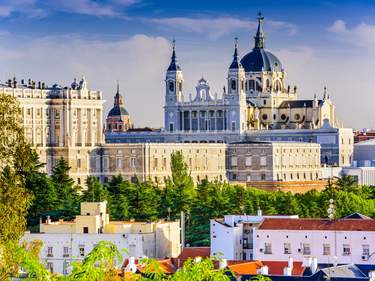
Made for Madrid
Take to the Spanish capital for art, culture and a taste of life in the city, Madrileño-style. Explore age-old churches and pretty plazas, stroll through the lovely Buen Retiro Park and visit captivating Toledo. Then, come sundown, discover the city's vibrant barrios and lively nightlife.

A Madrid getaway
Spend four days discovering the wonders of Spain's capital Madrid: from fascinating museums like El Prado and Reina Sofia over exploring unknown corners with your private guide to a day trip to the surroundings, this itinerary packs the best of Madrid.

Hidden Spain - From Barcelona to Basque Country
Do you want to explore highlights in Spain while staying in nature at the same time? Look no further. Start your Spanish adventure in Barcelona before heading off to the mountains - drive your rental car to Andorra and further on to Basque Country. Decide between driving yourself or guided tours.
September, with its warm and pleasant temperatures, is the perfect time to visit Spain, no matter what type of vacation you are interested in.
Rainfall in this month is usually low, especially in the south of the country. Although the sea may start to cool down, you'll still have the chance to enjoy some of Spain's best beaches - heading south will give you every chance to bask in the sun.
If you're looking for even warmer weather, visit the Canary Islands in September. With temperatures here often reaching 77°F to 85°F (25°C to 29°C) you can explore the stunning landscapes in comfortably warm conditions and then relax on the island's best beaches .
As well as pleasant weather, September also has the advantage of a shoulder season with fewer tourists and consequently lower prices.
Rough Guides tip: Dreaming of Spain? Plan your trip with our important tips .

Caleta de Sebo, La Graciosa, Canary Islands @ Shutterstock
Temperatures in Spain in September vary from region to region. In the south of Spain, regions such as Andalusia and the Costa del Sol enjoy warm September days. Average temperatures here range from 68°F to 82°F (20°C to 28°C). As the summer heat begins to fade, the bright sunshine is still welcome.
In central Spain, including cities such as Madrid and Toledo , September brings slightly cooler weather. Temperatures typically range from 59°F to 77°F (15°C to 25°C) - perfect for sightseeing without the sweltering heat of the summer months.
In northern Spain, the weather gets cooler as fall arrives. Temperatures range from 55°F to 70°F (13°C to 21°C) and it can sometimes rain, especially in coastal areas.
The Spanish islands still have a summery atmosphere in September. The Canary Islands, with their subtropical climate, enjoy warm weather with average temperatures between 75°F and 82°F (24°C and 28°C). The Balearic Islands are almost not far behind with temperatures ranging from 68°F to 79°F (20°C to 26°C).
Rough Guides tip: Primarily interested in the Spanish islands? Choose one of the Balearic Islands that fits your goals.

Ibiza Old Town by night is a great place to visit on the Balearic Islands © Shutterstock
September in Spain sees a drop in tourist traffic, especially compared to the peak summer months. Popular tourist destinations become less crowded, attractions are more accessible, plus accommodation and flights are usually cheaper.
Despite this, it's worth bearing in mind that there are quite a few festivals taking place in September, and if you're going to one of them, you may still encounter crowds. Nevertheless, with the right planning, September can be a win-win month for you to visit Spain.
Want a picture of the weather in Spain around the year? Read up on the best time to go to Spain .
September in Spain offers pleasant weather and a variety of activities that highlight the country's natural beauty and cultural richness. Here are some unique things to do this month:
Hike the Caminito del Rey
Take advantage of the cool September weather to hike the Caminito del Rey in Andalusia. This spectacular trail stretches along the steep walls of a narrow gorge and offers stunning views.
Explore little-known coastal towns
Visit charming coastal towns like Cadaqués in Catalonia or Cudillero in Asturias , where it's still warm enough for a beach vacation in September. Enjoy quiet boat rides, fresh seafood, and scenic views.

Beach of Gavieiro, also known as Silence beach, Cudillero, Asturias, Spain © Shutterstock
Visit the Alhambra at night
Experience the magic of the Alhambra in Granada by visiting at night. Wrapped in the September evening chill, the illuminated palaces and gardens create a mystical and serene atmosphere.
Mushroom picking in the Pyrenees
September is the beginning of the mushroom season in the Pyrenees. Join a guided tour to hunt for wild mushrooms such as hogs and chanterelles, then attend a cooking class to learn how to prepare traditional Spanish dishes from the mushrooms you find.
In September, Spain hosts many festivals showcasing the country's rich cultural heritage and regional traditions. Here are a few of the most notable festivals:
- La Merce : Held in late September, La Merce is Barcelona 's largest annual festival dedicated to the city's patron saint, the Virgin of Mercy. The festival includes a wide range of activities including parades, fireworks, concerts, the building of human towers (castellers), and the spectacular Correfoc (fire run) with fire-breathing dragons and devils.
- San Mateo Festival ( Logroño , La Rioja ): Held in the heart of Spain's wine country, this week-long festival marks the grape harvest season.
- Santa Tecla Festival ( Tarragona , Catalonia): Tarragona celebrates Santa Tecla, the city's patron saint, with a 10-day festival full of traditional events.
- Virgen de la Vega ( Salamanca ): This festival in Salamanca is dedicated to the city's patron saint, Virgen de la Vega, with religious processions, concerts, fireworks, and bullfighting.
- Our Lady of Victory Fair ( Málaga , Andalusia): Also known as the Feria de la Victoria, this festival is dedicated to the patron saint of Málaga and includes religious events, flamenco performances, horse parades, and lively fair activities. It usually takes place in early September.

Barcelona @ Shutterstock
Our tailor-made trip service allows you to take the trip of your dreams without the hassle and planning. All of our planned itineraries are created by local travel experts and can be customized to your specific needs.
- Unique Spain - cultural getaway (9 days): A journey filled with history, amazing landscapes and cultural attractions. From walking tours of the heart cities to discovering gastronomy, art, and folklore. Your journey will start in Barcelona, then you will travel to Madrid and end in Seville, the capital of Andalusia.
- City break Valencia (4 days): Spain's third largest city offers a beautiful old quarter, rich history, and vibrant culture. Palaces, museums, and rich cuisine make Valencia an attractive weekend getaway, as does the nearby wine region of Requena.
- The tale of two cities: Madrid and Barcelona (7 days): Explore Spain's capital Madrid on a unique city tour, then head outside the city to visit Europe's longest ziplane in historic Toledo. Afterward, hop on a train to explore Spain's second-largest city, Barcelona.
Visit Spain in other months
- Best time to visit Spain
- Spain Weather in November
- Spain Weather in October
- Weather in Spain in March
- Weather in Spain in April
- Weather in Spain in December
- Weather in Spain in January
- Weather in Spain in February
- Weather in Spain in May
The Rough Guides to Spain and related travel guides
In-depth, easy-to-use travel guides filled with expert advice.
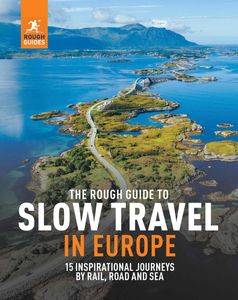
Travel advice for Spain
From travel safety to visa requirements, discover the best tips for visiting Spain
- Culture and Etiquette in Spain
- Eating and drinking in Spain
- Getting around Spain: Transportation Tips
- How to get to Spain
- Sports and Outdoor activities in Spain
- Travel Tips Spain for planning and on the go
Find even more inspiration for Spain here

written by Olga Sitnitsa
updated 30.08.2024
Online editor at Rough Guides, specialising in travel content. Passionate about creating compelling stories and inspiring others to explore the world.
Ready to travel and discover Spain?
Get support from our local experts for stress-free planning & worry-free travels.
- Where to stay
- Travel advice
Barcelona, Catalonia
Around the globe, hurricane tracker, severe weather, radar & maps, news & features, temperature graph, further ahead, october 2024, november 2024, december 2024.
Top Stories
Several tropical threats lurk in Atlantic amid historic lull
2 hours ago

Weather Forecasts
Fall foliage 2024: Where weather will create stunning autumn colors
9 hours ago

Weekend rain may dampen football games, outdoor plans in Northeast
5 hours ago

Weather News
Archery hunters attacked by grizzly bear in Idaho
7 hours ago

Slow-moving tropical rainstorm to drench Houston to Tallahassee

Featured Stories
Titanic's iconic bow is collapsing, new photos reveal

NASA may have created a meteor shower that will last 100 years

5-year-old boy attacked by mountain lion in California's Malibu Creek ...

First-of-its-kind climate migration map of land-hoofed mammals

Researchers create robots controlled by a king oyster mushroom
8 hours ago

We have updated our Privacy Policy and Cookie Policy .
Get AccuWeather alerts as they happen with our browser notifications.
Notifications Enabled
Thanks! We’ll keep you informed.
By Signing up you are agreeing with our Terms and Privacy Policy .
Don't have an account? Sign up
Sign in/Register
Forgot your password?
Feedback is welcome
- Information
- Moving to Spain
- The complete costs of moving to Spain: a detailed guide for expats
Visas and documentation: the essential first step for moving to Spain
Finding a home in spain: renting or buying, banking and financial setup when moving to spain, moving your belongings to spain: international moving costs, transporting pets and family when moving to spain, spanish healthcare: public versus private insurance, transportation in spain: car or public transport, planning for a smooth transition.
Spain continues to be a top destination for expats seeking a more relaxed lifestyle, warm climate, and relatively affordable cost of living. Whether you’re retiring, pursuing a new job, or simply looking for a change of scenery, moving to Spain is an exciting opportunity. However, understanding the full range of costs involved is essential for anyone planning this significant life change. This guide provides a comprehensive breakdown of the key expenses associated with relocating to Spain, covering visas, accommodation, healthcare, and transportation.

Securing the appropriate visa is one of the first steps in your move to Spain. Depending on your country of origin, visa requirements and processes can vary widely. If you're from a non-EU country, including the UK, the United States, Canada, Australia, or any other region, you must apply for a visa before your move.
For a more in-depth look at the different visa options and their specific requirements, refer to our comprehensive guide on visas for Spain .
Types of visas
While there are several types of visas available depending on your situation, here are two of the most common options:
- Non-Lucrative visa : Ideal for retirees or those not planning to work in Spain. This visa requires proof of sufficient financial resources and private health insurance, with an application fee typically ranging from €80 to €150.
- Work visa : If you plan to work in Spain, a work visa is necessary. Your employer may handle the paperwork, but you may still need to pay for document translations and legalisations. The visa itself typically costs around €160, with additional expenses for document preparation.
To get the most accurate and up-to-date information about visa costs and requirements, visit the official website of the Spanish consulate in your country .
Additional documentation
Beyond the visa, you’ll need to account for the cost of translating and legalising documents. All official documents not in Spanish must be translated by a sworn translator, typically costing between €20 and €50 per page. Legalisation and apostille services may also be required, with costs ranging from €30 to €100 per document.
Accommodation is one of the most significant expenses when moving to Spain. Your choice to rent or buy will depend on factors such as the length of your stay and your financial situation.
Renting a property
Renting a property in Spain is often the preferred option for expats who are new to Spain, allowing you to get a feel for the area before making a long-term commitment. Rental prices vary significantly depending on the location:
- Major cities like Madrid and Barcelona : Expect to pay between €1,000 and €1,700 per month for a one-bedroom apartment in the city centre. In certain areas, such as the heart of Madrid or the most sought-after districts in Barcelona, prices can reach up to €2,500 per month . These figures reflect current market trends based on recent rental listings and property market reports.
- Smaller cities and towns : In regions such as Ciudad Real and Cáceres, less populated and with a lower demand for housing, rental prices are significantly lower. They typically range from €400 to €600 per month for a one-bedroom apartment. Coastal cities like Málaga, Alicante, and Valencia also offer more affordable options compared to the larger cities, with prices generally between €700 and €1,200 per month depending on the specific location and property type.
In addition to rent, budget for a deposit (usually one to two months’ rent), agency fees (if applicable), and utility bills, which typically range from €100 to €150 per month. Remember that the monthly community fees are to be paid by the owner and not by the tenant.
Buying a property
If you’re planning a long-term stay or have significant capital, buying property in Spain may be more economical in the long run. Property prices vary widely across Spain:
- Major cities like Madrid and Barcelona : Prices typically range from €3,500 to €6,000 per square metre . These figures reflect the current housing market, where demand remains high, particularly in central and sought-after areas.
- Coastal and rural areas : Prices are generally lower, ranging from €1,800 to €3,000 per square metre . Coastal areas, especially those popular with expats, can be on the higher end of this range.
* Based on recent data from reports from real estate consultancies such as Tinsa and Knight Frank.
Additional costs when buying property include legal fees (about 1% of the purchase price), notary fees (€600 to €1,000), registration fees (around €500, although they depend primarily on the cost of the acquisition), and taxes (typically 8% to 10% of the property value).
Setting up a bank account in Spain is essential for managing your finances, paying bills, and receiving income. Most major banks offer accounts tailored for expats, often with multilingual staff to assist with the setup.
For detailed guidance on managing your utility payments once your bank account is set up, you can refer to our article on how to set up, connect, and pay your utility bills .
Bank account setup costs
Opening a bank account in Spain is usually free, though some banks may charge a maintenance fee of €15 to €60 per year, depending on the account type and services. Some banks also require a minimum deposit to open the account. These costs are based on information from banks like BBVA, Santander, and CaixaBank, which frequently update their fees.
Currency exchange and international transfers
When transferring money from your home country to Spain, consider currency exchange rates and transfer fees. Using a specialised currency exchange service can save you money compared to standard bank transfers, which often come with high fees and less favourable exchange rates. Services like Wise (formerly TransferWise) and Revolut offer competitive rates and lower fees, according to user reviews and market comparisons.
Advertisement

The cost of moving your belongings to Spain varies greatly depending on the volume of goods, distance, and method of transport.
Shipping costs
When moving to Spain, shipping your belongings is a major expense.
- Sea freight : The most cost-effective option for large volumes, with prices ranging from €2,000 to €5,000 for a full container. However, shipping can take up to six weeks. This pricing is sourced from international moving companies such as AGS Movers and Crown Relocations. It can vary greatly depending on fuel prices and even on specific global events that make maritime transit difficult in some parts of the world.
- Air freight : Faster but more expensive, costing between €5,000 and €10,000 for a similar volume, at least if you need to move large goods, such as furniture. These figures are based on quotes from global shipping firms like DHL and FedEx.
Packing and insurance
Professional packing services can add to the cost but ensure your belongings are well-protected. Expect to pay between €500 and €1,500 depending on the size of your move. Insurance is also crucial, with premiums typically costing 1% to 3% of the declared value of your goods.
If you’re moving with children and pets, additional costs and preparations are necessary.
Moving with children
Relocating with children involves considering education and childcare. International schools in Spain can be expensive, with fees ranging from €5,000 to €20,000 per year depending on the school and level of education. Public schools are free, though they may require proficiency in Spanish. In some regions, however, public primary and secondary schools are increasingly available where a significant part of the curriculum is taught in English. The previous figures are drawn from current tuition rates at leading international schools in Spain, as published by the schools themselves.
Moving with pets
Transporting pets requires special arrangements, including pet passports, vaccinations, and transport. Pet relocation services can handle these details for you, but costs vary:
- Pet passport and vaccinations : Typically cost €50 to €150 depending on your pet and location. This data is based on current veterinary fees in Spain and international guidelines.
- Transport : Air transport costs entre 50€ y 300€, approximately, depending on the animal’s size and breed, and whether they travel in the cabin or cargo hold. These figures are within the range of airlines such as Iberia, Lufthansa, Vueling, and Air France. If the pet weighs less than 10 kilos, it can be carried in the cabin in a carrier on most airlines; otherwise, it must travel in the hold.
Healthcare is a crucial consideration for anyone moving to Spain. Spain boasts an excellent public healthcare system, but your access to it may depend on your residency status and employment.
Public healthcare
Some expats, depending on their country of origin, may have access to Spain’s public healthcare system , known as the Sistema Nacional de Salud (SNS). This system is generally funded through social security contributions. However, non-EU citizens might need to explore other options, especially if they are not employed in Spain.
Private health insurance
For non-EU citizens or those who do not have access to public healthcare, private health insurance is necessary. Costs vary depending on your age, health condition, and the level of coverage:
- Basic coverage : Typically costs between €50 and €100 per month.
- Comprehensive coverage : Broader plans can cost between €100 and €300 per month.
*These estimates are based on current pricing from major Spanish health insurers, including Sanitas, Mapfre, and Adeslas.
Once in Spain, you’ll need to consider how to get around. The choice between owning a car and using public transport depends on your location and lifestyle.
Buying a car
If you plan to live in a rural area or travel frequently, buying a car might be necessary. The cost of a car in Spain can range from €10,000 for a used vehicle to over €30,000 for a new one. Additionally, budget for:
- Registration and road tax : Around €200 to €600 depending on the vehicle.
- Insurance : Between €300 and €1,000 per year depending on coverage.
- Fuel : Petrol costs approximately €1.50 per litre (diesel fuel is typically around 10 cents per litre cheaper than unleaded fuel).
- Electric recharging : If your vehicle is electric, the cost of domestic charging per 100 kilometres is around €1.95, while the cost of fast charging is €7.67.
These figures are based on current market data from Spanish automotive associations, recent fuel price reports and official state sources.
Public transport
In urban areas, public transport is affordable and efficient. A monthly public transport pass costs around €40 to €60 in cities like Madrid and Barcelona. Taxis and ride-sharing services are also widely available, with fares starting at around €1.50 per kilometre. This pricing is consistent with data from city transport authorities.
Moving to Spain is an exciting journey, but it requires careful financial planning. From visa fees and healthcare to accommodation and transport, understanding the total costs involved is crucial for a smooth transition. By budgeting for these significant expenses and being aware of potential costs, you can ensure your move to Spain is as affordable and stress-free as possible. To help with this, our comprehensive moving checklist offers practical tips and insights on moving to Spain.
ThinkSPAIN Team
Last updated: 03/09/2024
Was this article useful?
The information contained in this article is for general information and guidance only. Our articles aim to enrich your understanding of the Spanish property market, not to provide professional legal, tax or financial advice. For specialised guidance, it is wise to consult with professional advisers. While we strive for accuracy, thinkSPAIN cannot guarantee that the information we supply is either complete or fully up to date. Decisions based on our articles are made at your discretion. thinkSPAIN assumes no liability for any actions taken, errors or omissions.
Related Topics
Share this article
Related Articles

Differences between Spanish citizenship and Spanish residency
When you are considering a move to Spain, it's crucial to understand the distinctions...

Most frequently asked questions about moving to Spain
Moving to Spain is an aspiration for many, but it requires careful planning and...

Moving to Spain with your pets: Legal requirements
Moving the entire family to Spain may mean furry and feathery members as well as human...
Looking for something else?
- Find what you're looking for on our homepage
- Buying in Spain
- Retiring in Spain
- Living in Spain
- Working in Spain
Recent Articles

IMAGES
VIDEO
COMMENTS
Day 1: Arrive in Barcelona (sleep in Barcelona) Day 2: Barcelona (sleep in Barcelona) Day 3: Barcelona, evening train to Madrid (sleep in Madrid) Day 4: Madrid (sleep in Madrid) Day 5: Madrid, or day trip to El Escorial and/or Valley of the Fallen (sleep in Madrid) Day 6: Madrid, late afternoon to Toledo (sleep in Toledo)
The itinerary is just over 600 kilometres with a total driving time between 7 and 8 hours depending on your mode of transportation. Spain Itinerary 5 Days - Southern Itinerary Overview. Day 1: Málaga. Day 2: Day trip to Granada. Day 3: Marbella.
Gawk at the Catedral Santa María de la Sede. From one awe-striking site to another, the Catedral Santa María de la Sede (or Catedral de Sevilla) is bound to leave your jaw sagging. Seville's biggest drawcard is as impressive a sight as any in Spain. The 15th-century cathedral was built upon a 12th-century mosque.
Day 5: Granada. Next on our itinerary is a short stop in another Andalusian gem, Granada. Though you could spend several days discovering all the sights of Granada, there's really only enough time on this trip for a single day here. Start your day in the city center at Granada Cathedral.
Planning Your Ultimate Trip to Spain. Spain has managed to preserve its most historic sights, traditions, and cultural offerings while also evolving into a modern, forward-thinking country. In this nation you can tour ancient Roman ruins and medieval cathedrals while partying the night away in 21st-century discos.
Create your own plan for your trip to Spain with a route to suit your requirements. With our digital brochures and guides, you will be able to discover the best of our cuisine, culture and fiestas. Check the average temperatures and the hours of sunshine in different areas and the clothing you should wear according to the season.
Located in Northern Spain and surrounded by lush green mountains, the capital of Basque Country is home to the Guggenheim Museum Bilbao. The titanium structure of the museum receives more accolades than the famous contemporary art it houses. Bilbao is the perfect addition to any Northern Spain itinerary. 6. Seville.
I am planning a trip to Spain in January with my 2 children aged 15 and 18 years. My son is attending a soccer clinic so we need to end in Madrid to join the group heading to Valencia. We will have ~10 days ( we could add a couple of days) prior to the clinic so I am thinking that we try and fly to Barcelona Day 1-4 Barcelona Day 5- Granada
A strong Spain itinerary is the perfect starting point for your once-in-a-lifetime trip to the country. Spain is a big place and making the most of your short time there requires smart planning. I spent over two months exploring many of the best places to visit in Spain. My journey around Western Europe taught me a lot about how to plan a ...
Here's the quick overview of the 10-day Spain itinerary we've detailed above: Days 1 and 2: Arrive in Madrid, explore Madrid. Day 3: Take a day trip from Madrid to Toledo. Day 4: Travel to Seville, explore Seville. Day 5: Do a day trip to Cordoba, travel to Granada. Day 6: Explore Granada.
Use your extra day in Madrid to do a day trip to Toledo. An extra day in Barcelona will allow you to slow down or do a day trip to Montserrat or. This 7 days in Spain itinerary is perfect for focusing on the Andalusia region and smaller/walkable cities. Granada to Malaga is 1 hour 45 minutes by bus and cheap; around €5 to €15.
Best Way To Plan Trip to Spain. There is a lot that goes into planning a Spain trip - from research to reservations. Keep track of your Spain vacation plans with our Printable Travel Planner! When To Travel to Spain. If you are waiting for the best time to travel to Spain, it's…now! However, each season has its pros and cons.
10-Day Spain Itinerary: Barcelona, Madrid, Toledo, Seville & Granada. Day 1- 3: Barcelona. Day 4 - 5: Madrid. Day 6: Toledo. Day 7: Seville. Day 8-9: Granada. Day 10: Fly home. view over Passeig de Colom or Columbus avenue, La Barceloneta and Port Vell marina from Christopher Columbus monument in Barcelona.
Itinerary #4: Ultimate Northern Spain Road Trip. Over 15 days on the road, you'll visit some of the most beautiful locales in northern Spain. This, of course, includes the Atlantic coast and Basque Country, but to get there you'll drive through unforgettable cities like Léon and Santiago de Compostela. Take a road trip to the Basque coast.
Plan Your Trip To Spain With Triptile™. 8 days or less. 9 - 12 days. 13 days or more. Planning a trip to Spain? Explore our curated Spain trips for the ultimate experience! Expertly crafted by travel specialists, these journeys offer top-notch hotels, private transfers, and must-see highlights.
Itinerary #6: Spain Road Trip: Madrid & Santiago de Compostela. This is another nine-day road adventure, this one taking you from Madrid into Galicia. Located in northwestern Spain, Galicia is a region as historic and beautiful as any other in the country, but it's a bit farther off the tourist trail and thus more of a secret.
You'd need more time in Barcelona; here, check out my 5-day Barcelona itinerary if you want to plan a dedicated trip in the future. Get a good look of the exterior and continue on your walk. Day 1, Stop 4: La Sagrada Familia ... I'm a huge fan of including some day trips outside of Madrid to make your Spain trip complete. Give these spots ...
The south of Spain is all about Andalusia, with classic cities such as Seville, Granada, Cordoba, Jerez and Cordoba to visit. Eat classic tapas, drink sherry and explore Spain's centuries-long relationship with Islam at the Mezquita in Cordoba or the Alhambra in Granada. Plus there's also the beaches of the Costa del Sol .
2. Being cashless is common. Card is king in Spain. The main tourist hubs such as Madrid, Barcelona, San Sebastián and Ibiza are generally credit card-friendly destinations. In fact, you could go cashless for days and pay for your meals, drinks, taxis and bus fares without a problem using a credit or debit card.
Planning Your Trip. Best Time to Visit: Spring and fall both promise mild weather and fewer crowds than the summer high season, making for an enjoyable experience. Language: Spanish is the official national language. Galician, Basque, Catalan, and Valencian are all co-official languages alongside Spanish in their respective regions.
Step 3: Research the Best Time to Travel to Spain. Figuring out the best time to travel to Spain depends on the climate, festivals, and popular travel seasons. Northern Spain (Galicia, Basque Country, etc.) has a generally cooler and wetter climate than Southern Spain (Andalucía). Summer in Southern Spain can be dangerously hot (over 104°F/40 ...
6. Alhambra. Medieval complex housing palaces, carved Moorish throne room & cloistered courtyards with fountains. One of the most beautiful places to see in Spain, we had a tour guide and we ate a lovely restaurant overlooking the town, taking in the sun and view.
Day 1 - Seville. The capital of Andalucía, no itinerary would be complete without a stop in the dynamic and historic city of Seville. One of the most beautiful cities in Spain, Seville has a ton to offer tourists and it is one of the best cities to get to know the unique culture and history of Andalucía. Seville is the fourth-largest city ...
Trip Planner - Spain. Create your perfect trip to Barcelona, Spain. Easily plan your trip based on your preferences, budget, and style. Plan your trip with RoutePerfect's AI and optimize it by using RoutePerfect's crowdsourced database, based on proven and enjoyable, well-crafted itineraries of thousands of travelers.
Affordable travel packages and the experience of a lifetime. Book an Intrepid tour today. My Wishlist My Booking 1 800 970 7299 ... Kick off this colourful Best of Spain tour in Madrid and let your imagination unfold on a journey through the beautiful Andalucian region. Visit the cities that reflect Spain's diverse history and culture.
The weather in Spain in September is warm and pleasant, making it an ideal time to explore the cities and enjoy outdoor activities. Nature is still alive thanks to the lush summer vegetation, favoring hiking and countryside strolls. Another appealing thing about September is that you can still enjoy the remnants of a beach vacation in the south of the country or on the islands, as temperatures ...
Spain forums Balearic Islands forums Jump to a more specific forum: Select forum Alaior Alcaufar Arenal d'en Castell Binibeca Cala'n Bosch Cala'n Forcat Cala Blanca Cala Canutells Cala en Porter Cala Galdana Cala Llonga Cala Santandria Ciutadella Es Castell Fornells Mahon Mercadal Migjorn Gran Na Macaret Port d'Addaia Punta Prima S'Algar Sant ...
Get the monthly weather forecast for Barcelona, Catalonia, Spain, including daily high/low, historical averages, to help you plan ahead.
Non-Lucrative visa: Ideal for retirees or those not planning to work in Spain. This visa requires proof of sufficient financial resources and private health insurance, with an application fee typically ranging from €80 to €150. ... If you plan to live in a rural area or travel frequently, buying a car might be necessary. The cost of a car ...